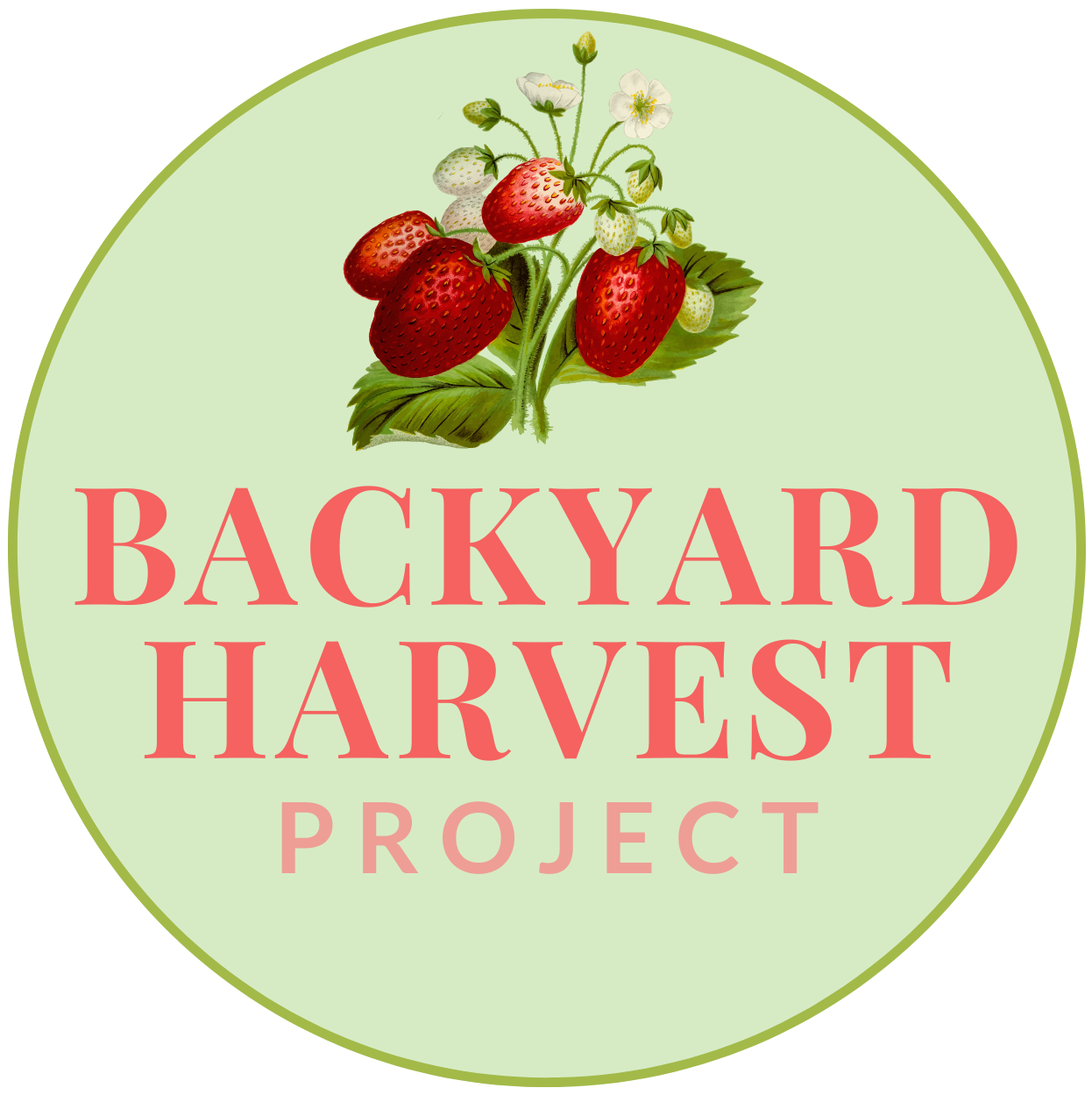The Backyard Harvest Project
Almost ten years ago, I was an entrepreneur with a growing business and the Mother of two small children. At a professional networking event, someone asked me, “What do you do for fun outside of work?”
I had no answer, so, I decided to grow a garden.
The Backyard Harvest Project began as one herb box on my back deck and has grown into a joyful hobby, a place for my busy brain to rest and observe—a garden filled to the brim with curiosities. I invite you to explore what we’ve created below.
2016
The Beginning
The south-facing partial pie lot was the deciding factor when we purchased our home in 2016. We’re located in a fairly new subdivision, which means all of the topsoil had been stripped from our lot, and we were left when clay-heavy degraded soil. We’re in Zone 3 (ish), and have significant wind pressure (which comes from all directions). A few weeks before we moved in, the builder ‘accidentally’ laid down sod. Uhhh, seems like a pretty big accident! We were disappointed as we’d hoped to start with a more sustainable alternative, but in hindsight, the sod kept the yard from being a mud puddle for years.
In 2016, we planted two trees (they were free as part of our purchase), built a fence, and had a one-hour consultation with a permaculture designer (Karla Cox, who now owns Plot Twist Farms near Penticton). We finished that meeting with a quick hand-drawn map and a six-step implementation plan: 1) water capture, 2) food forest, 3) annual garden, 4) herb spiral, 5) compost and 6) front yard.
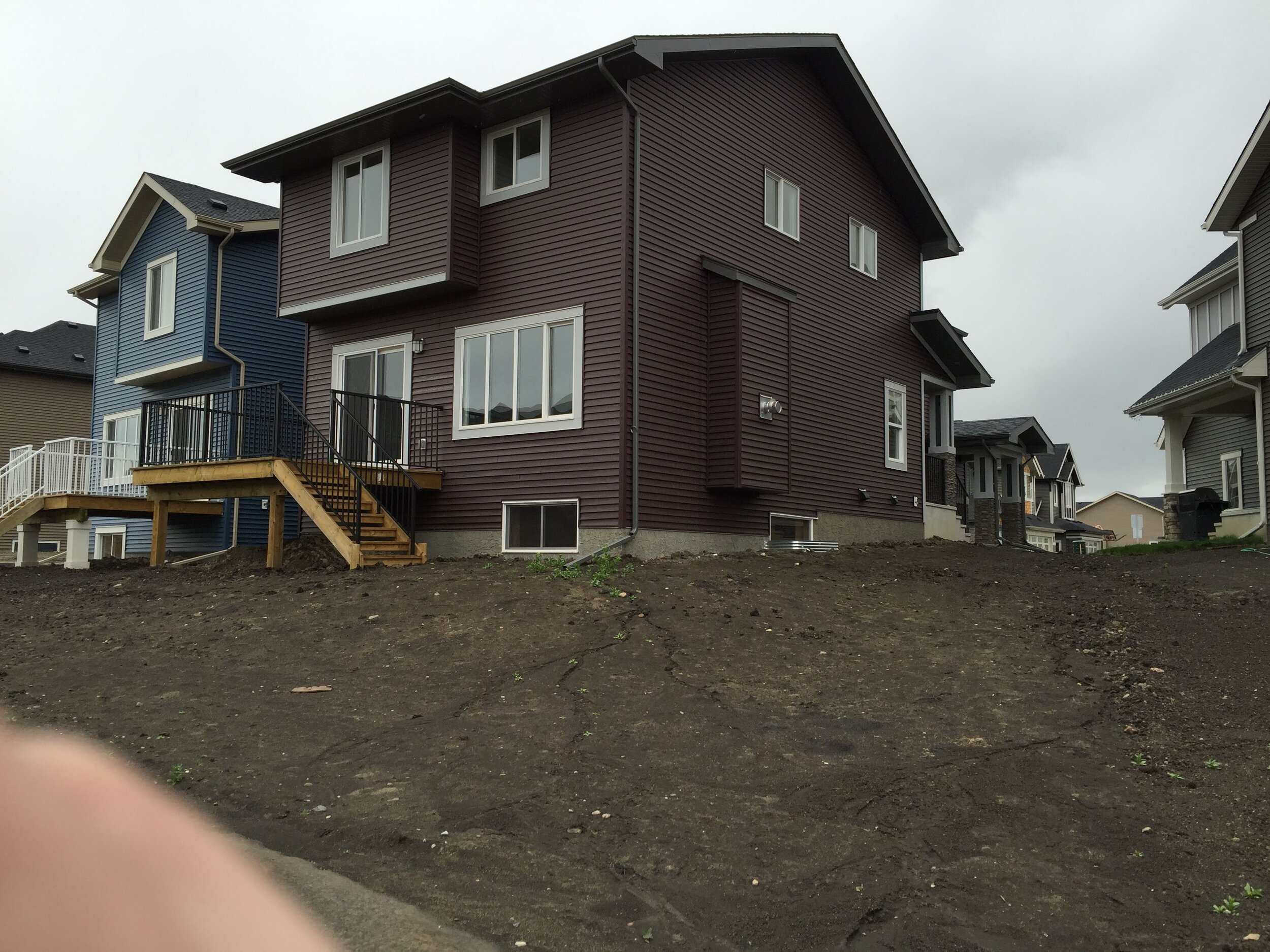
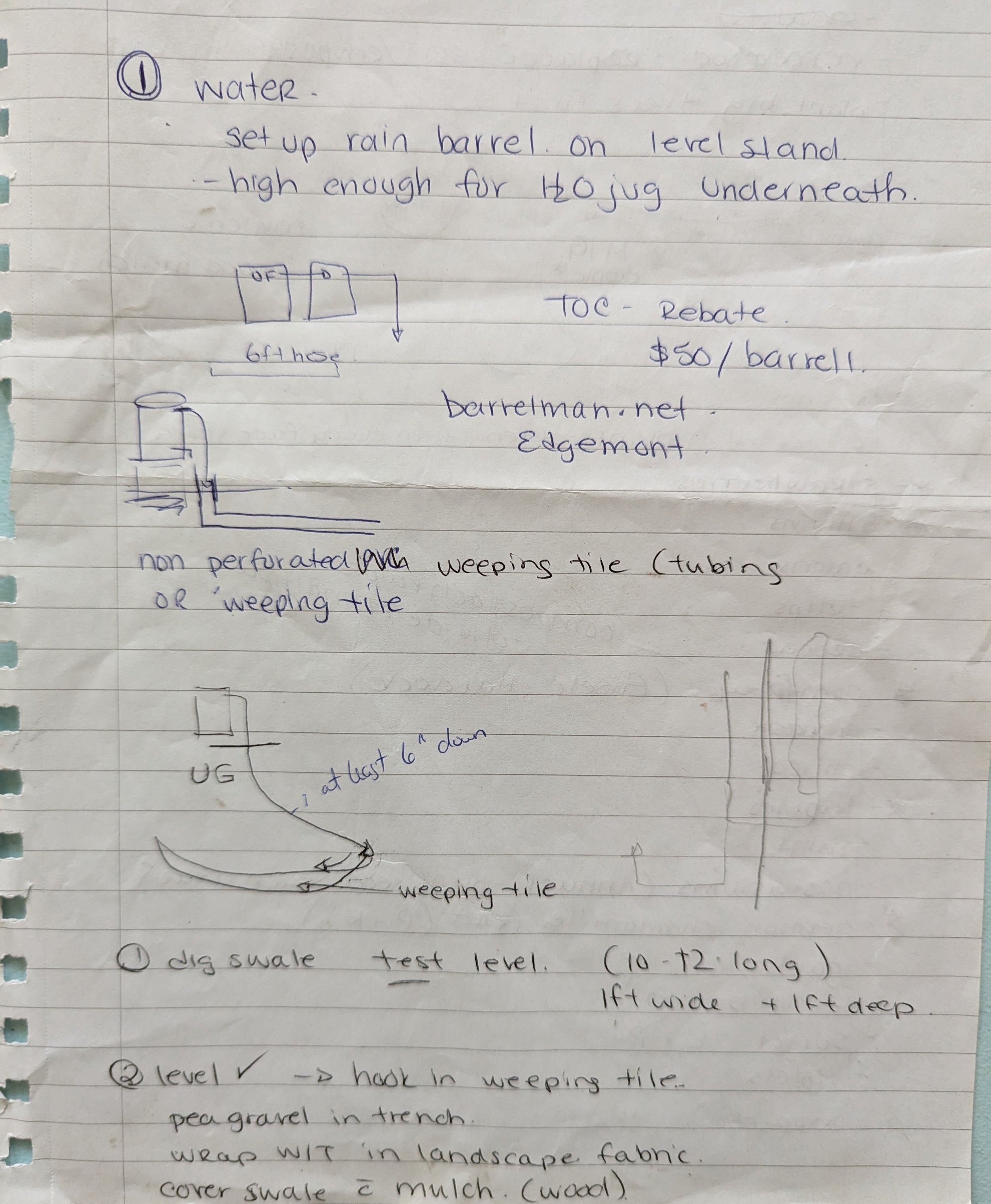
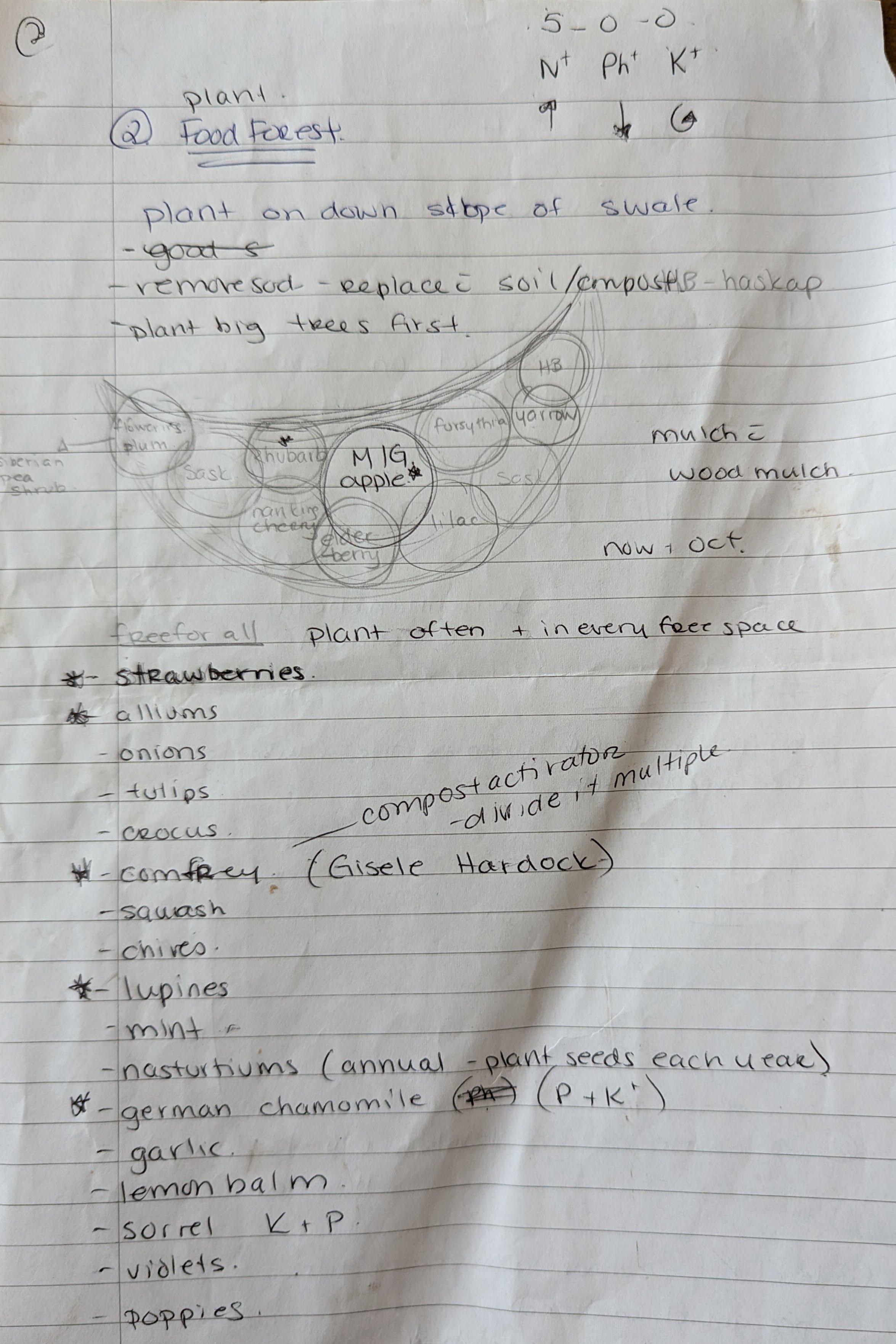
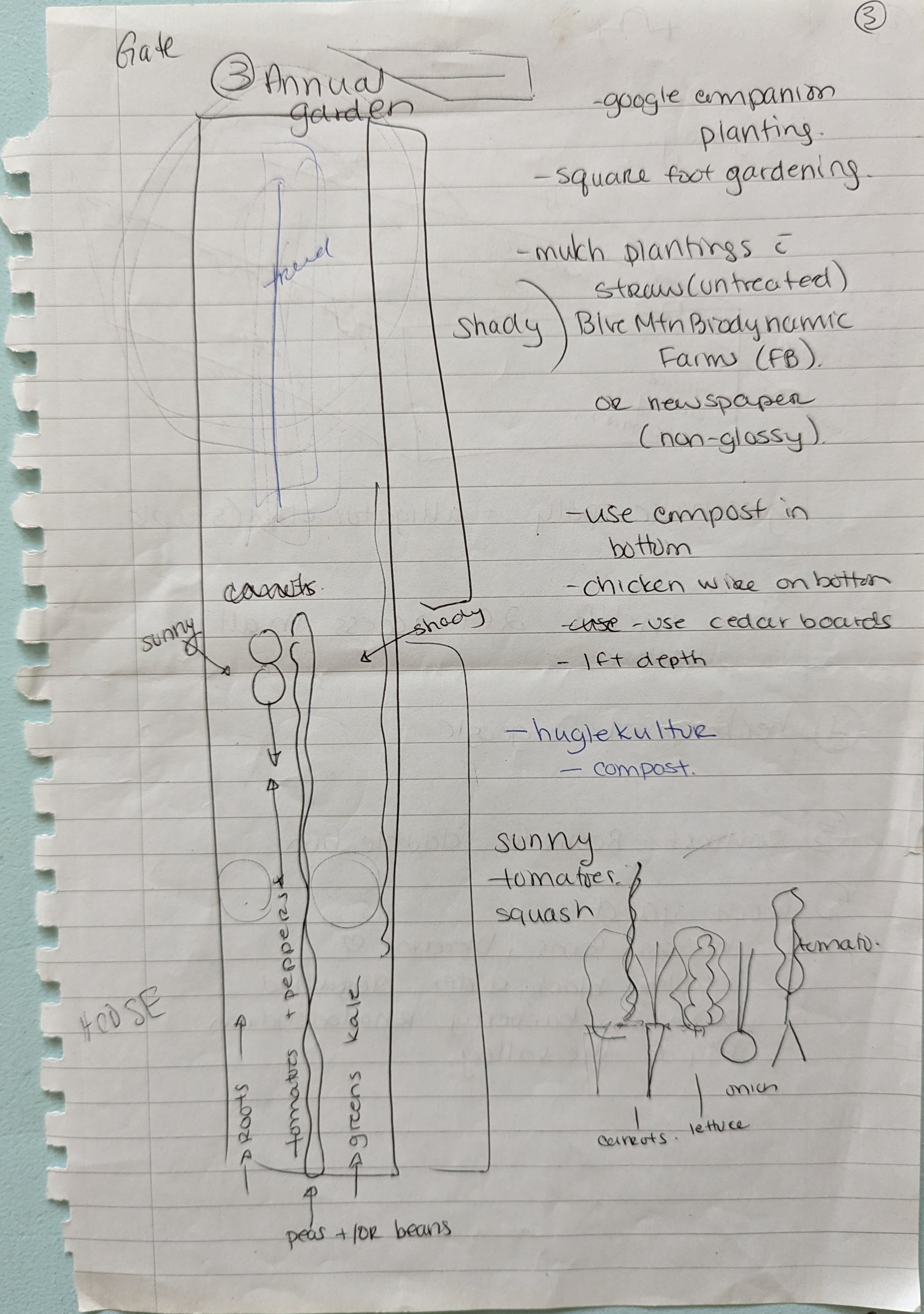
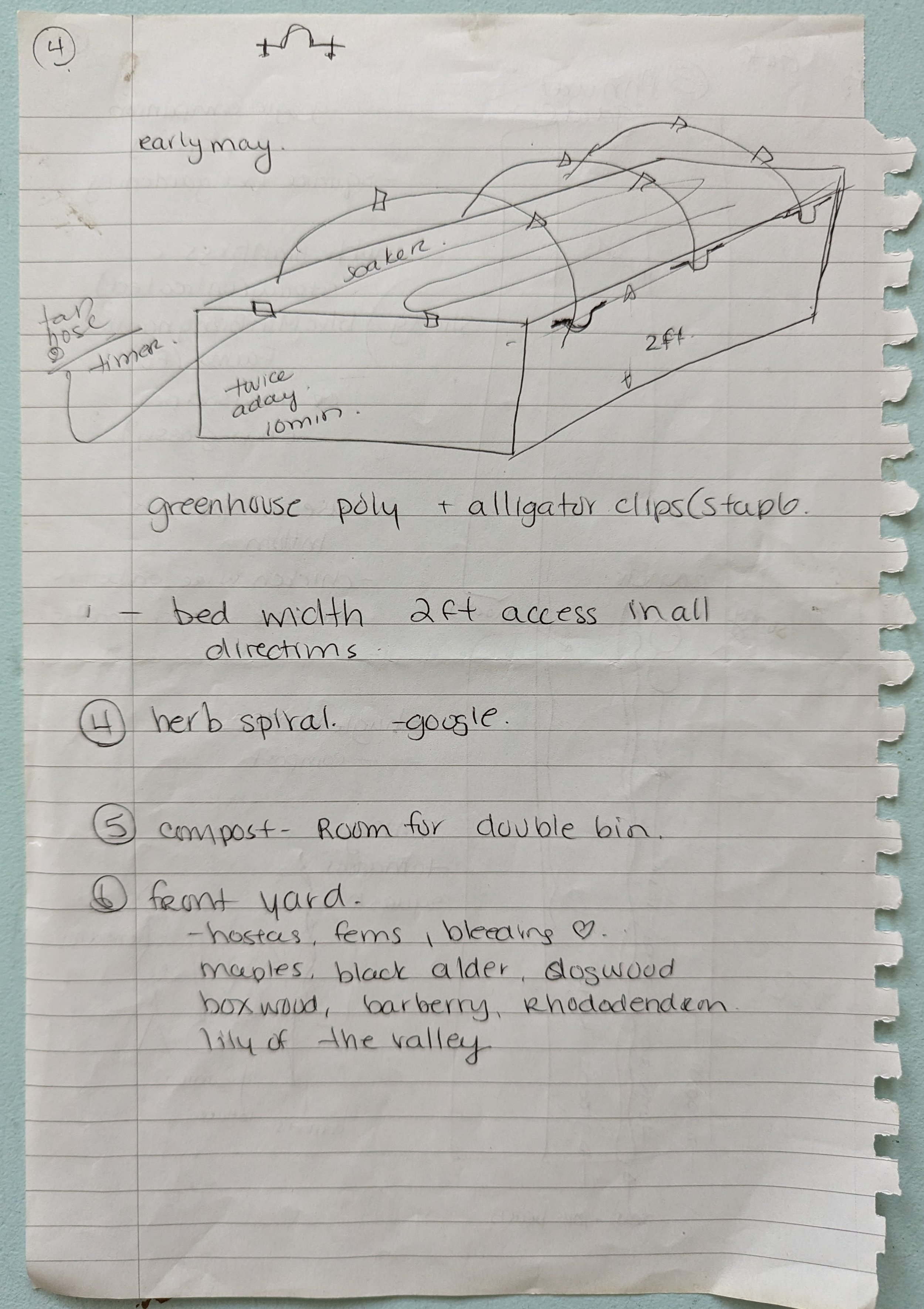
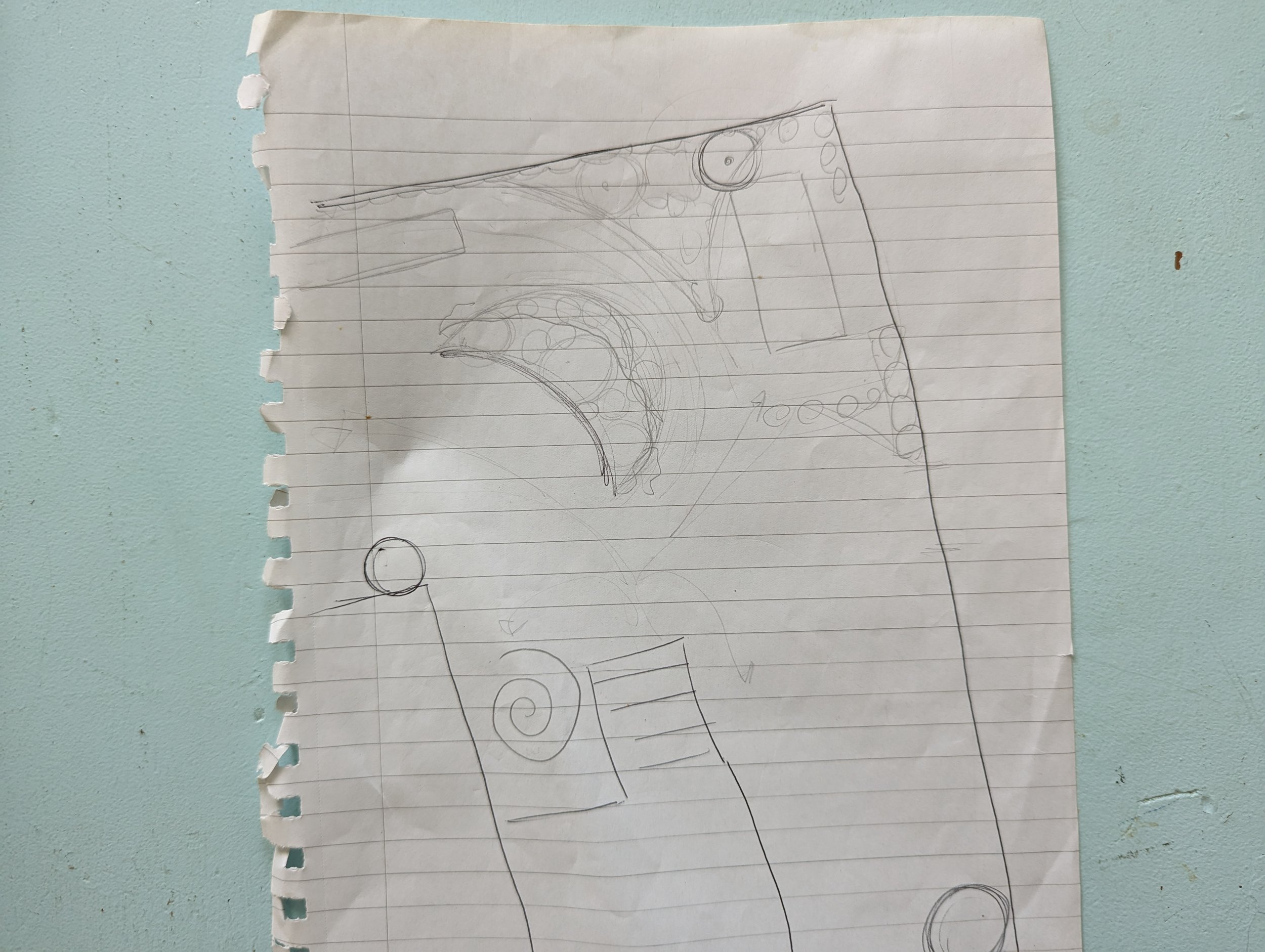
2017
The Food Forest
Our food forest is a low-maintenance, self-sustaining collection of mostly edible, mostly perennial plants. It is the centrepiece of our backyard, shaped a bit like a kidney bean, measuring about 7’ wide, and 17’ long through the middle. As it matures, some plants fade back, while others start to flourish.
I’ve written a blog post on what to plant in your cold-climate food forest.
What we grow: It includes a grafted combination apple tree, haskap & saskatoon berries, alpine strawberries, garlic and regular chives, sage, chamomile, sorrel, lupines, sweet william, borage, bergamot, rhubarb, horseradish, poppies, comfrey, vetch, violas, giant allium, yarrow, clematis clover, and whatever else the birds and wind decides to plant.

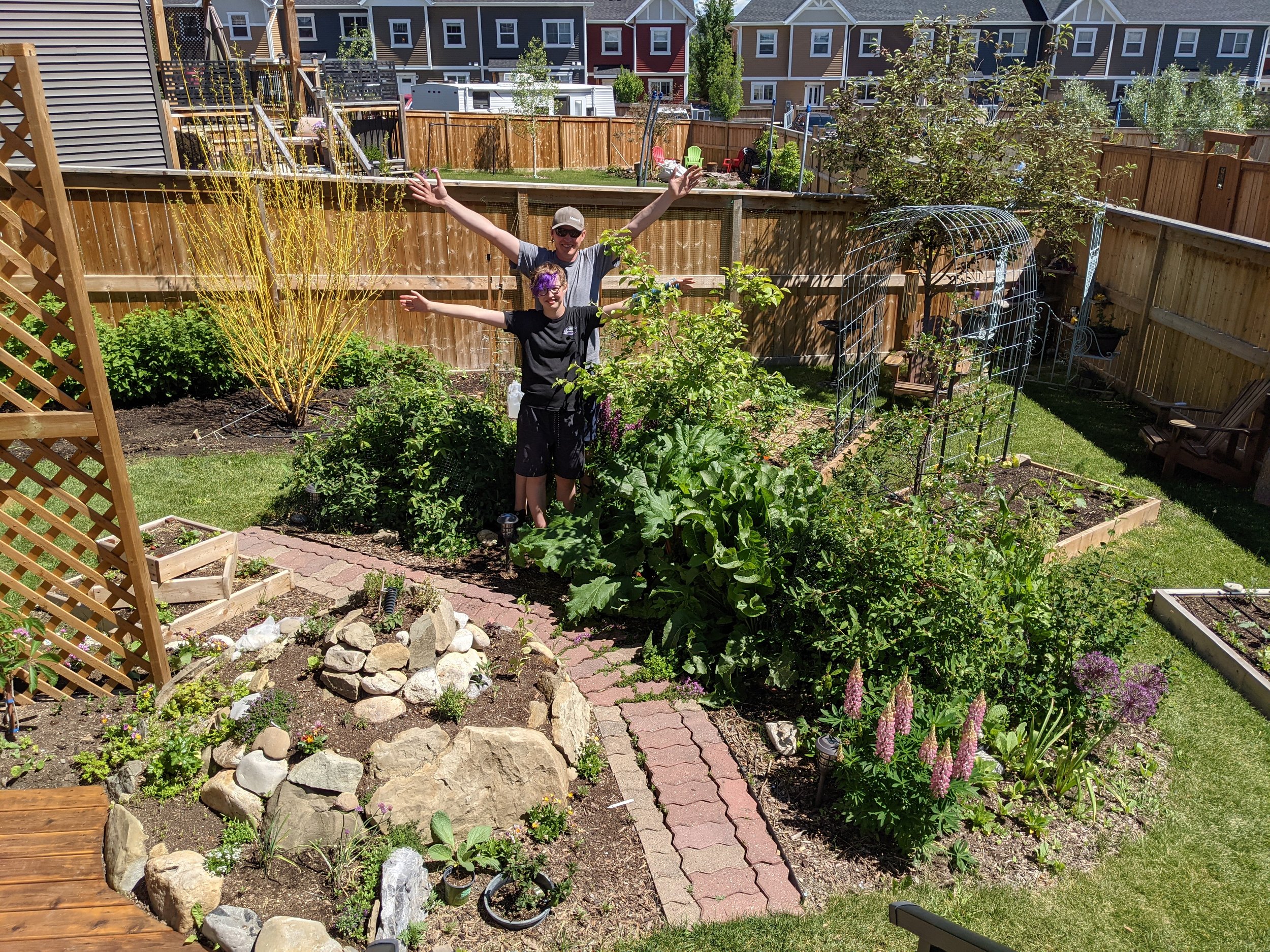
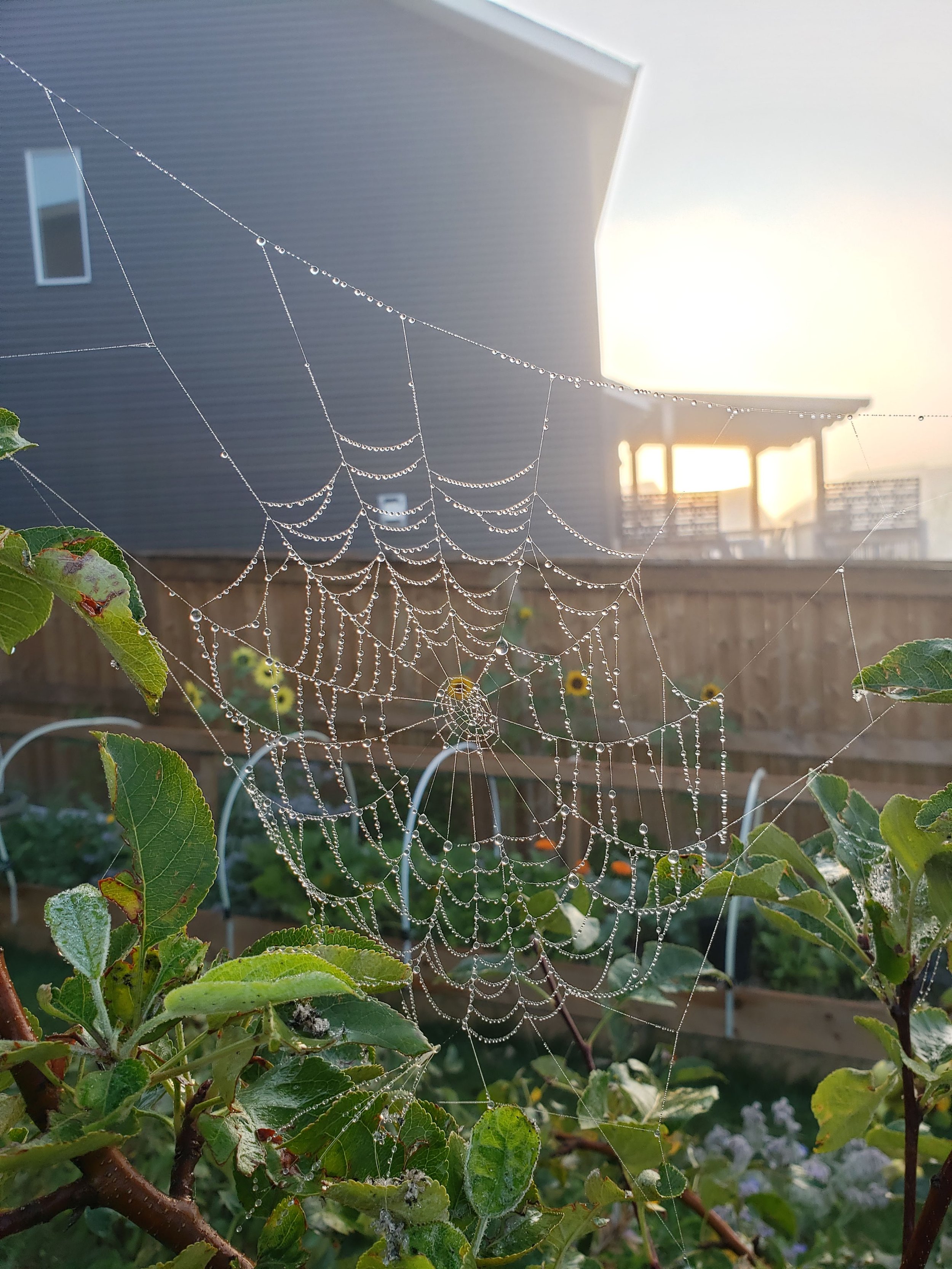
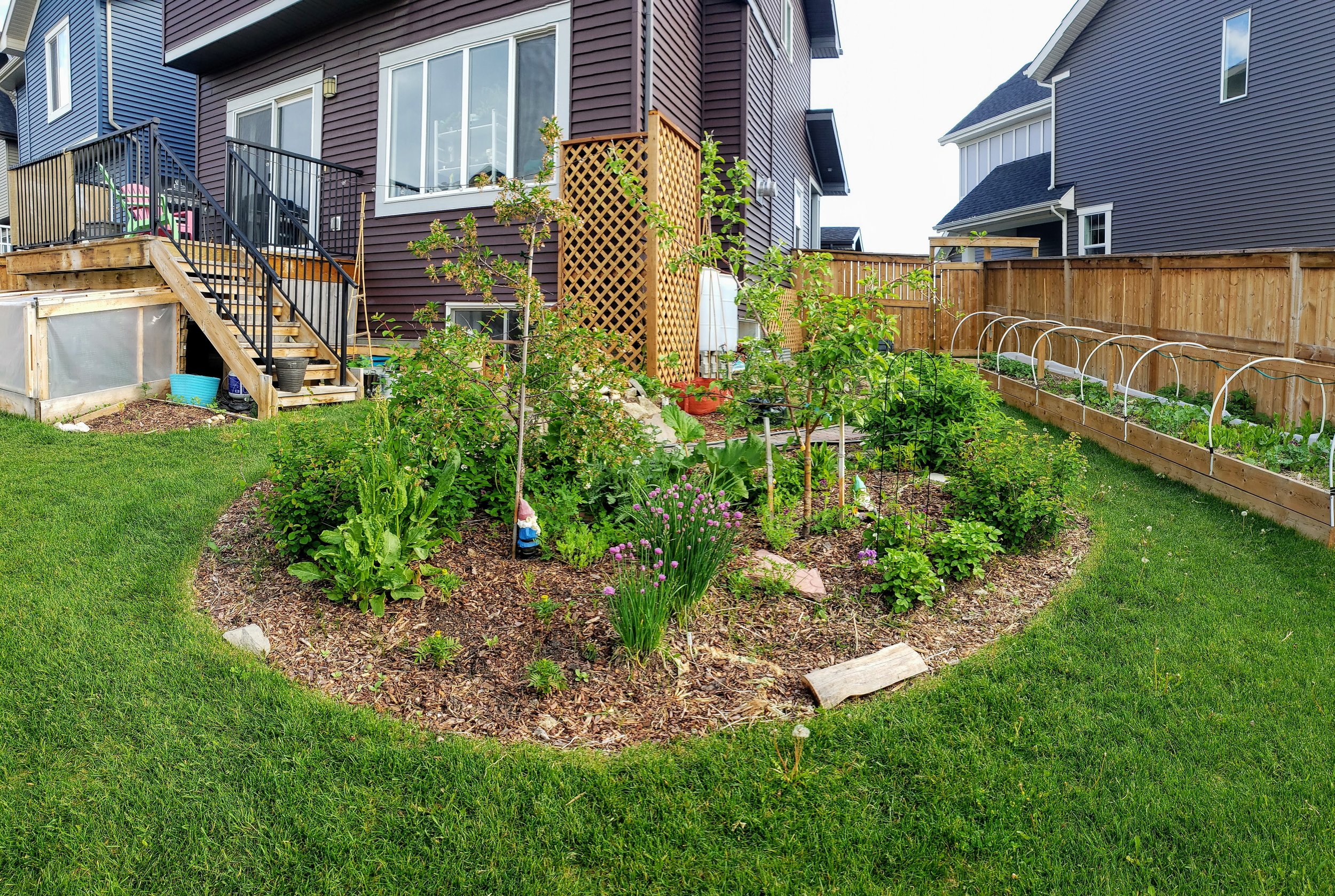
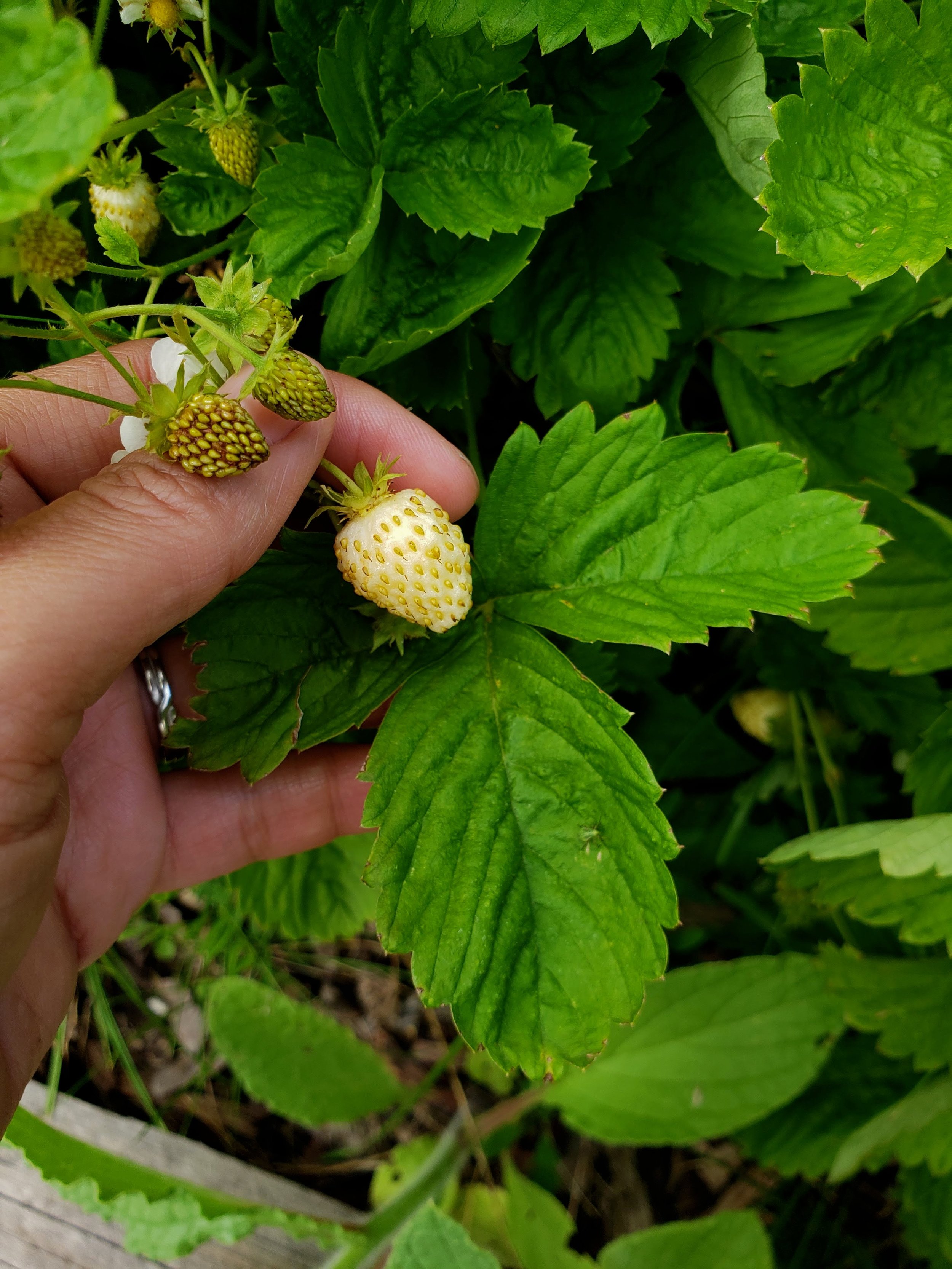
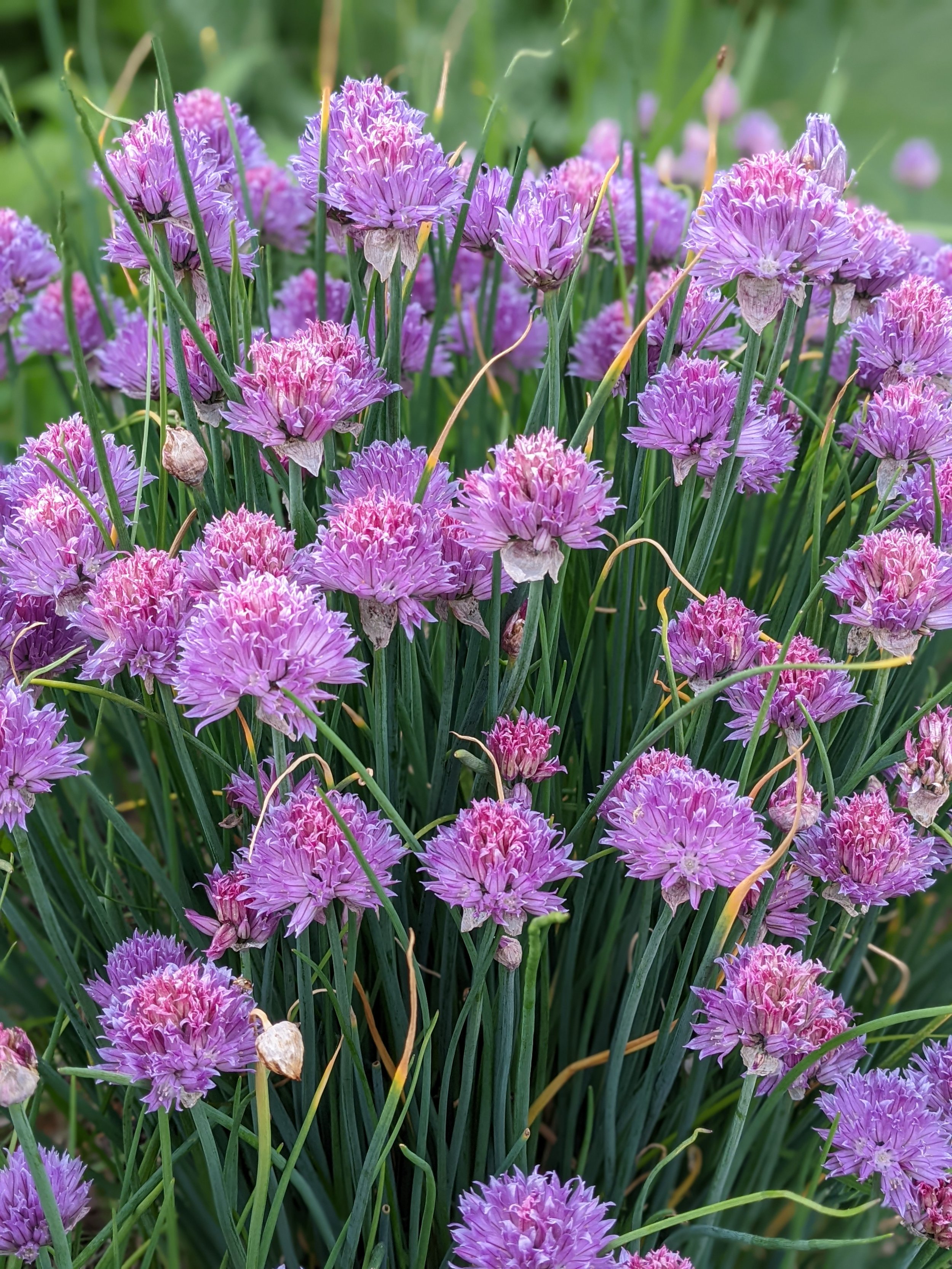
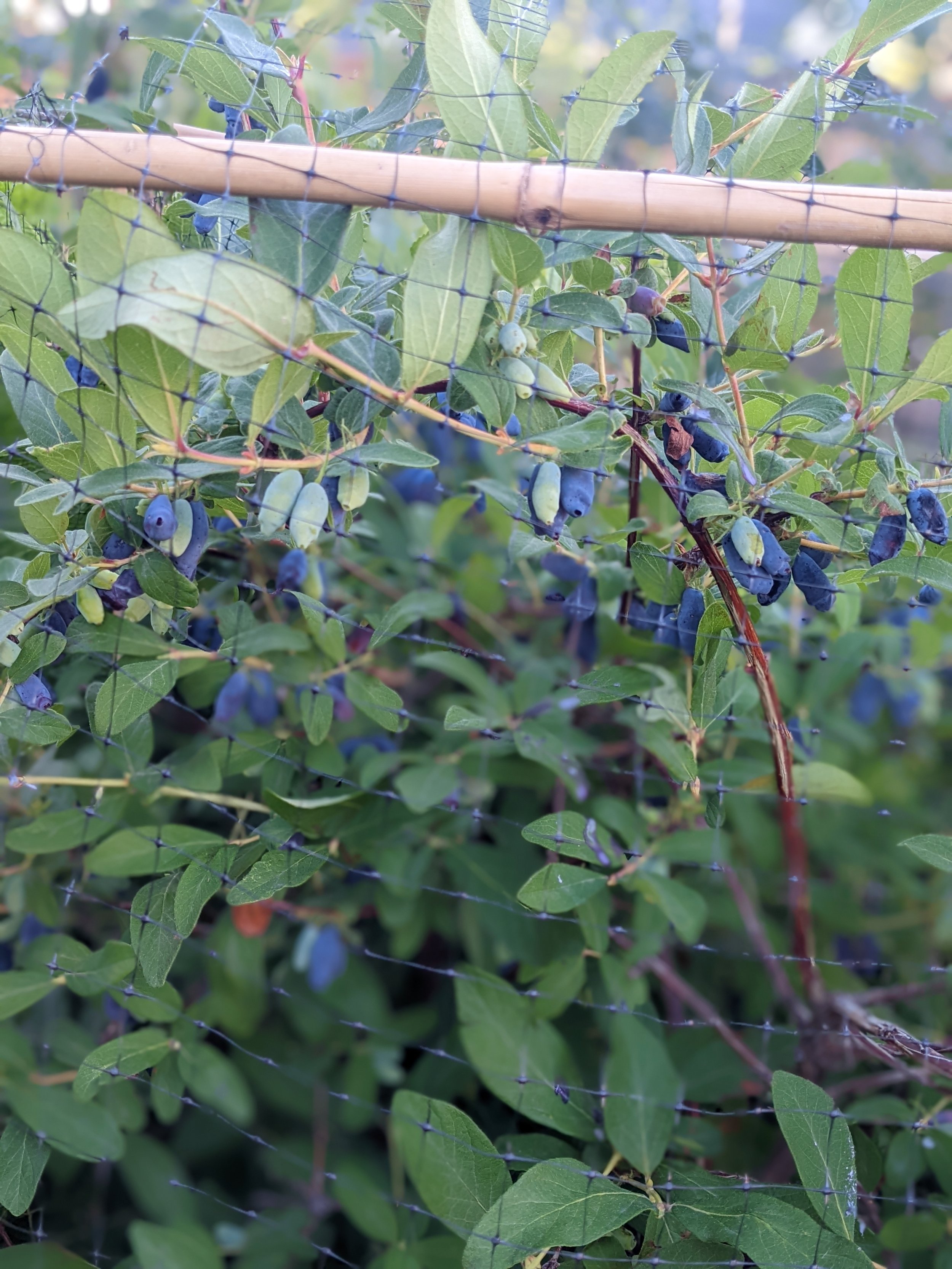
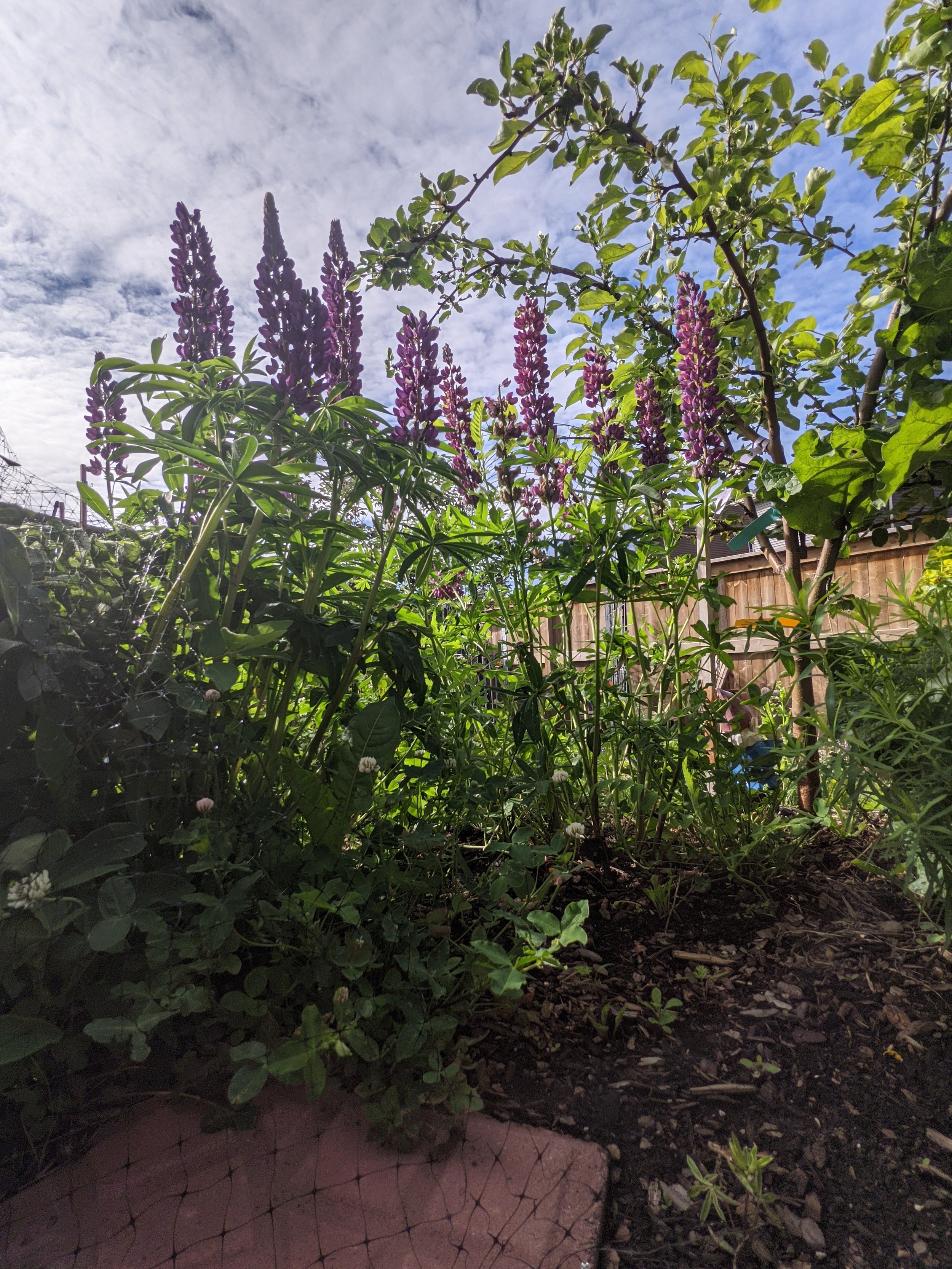
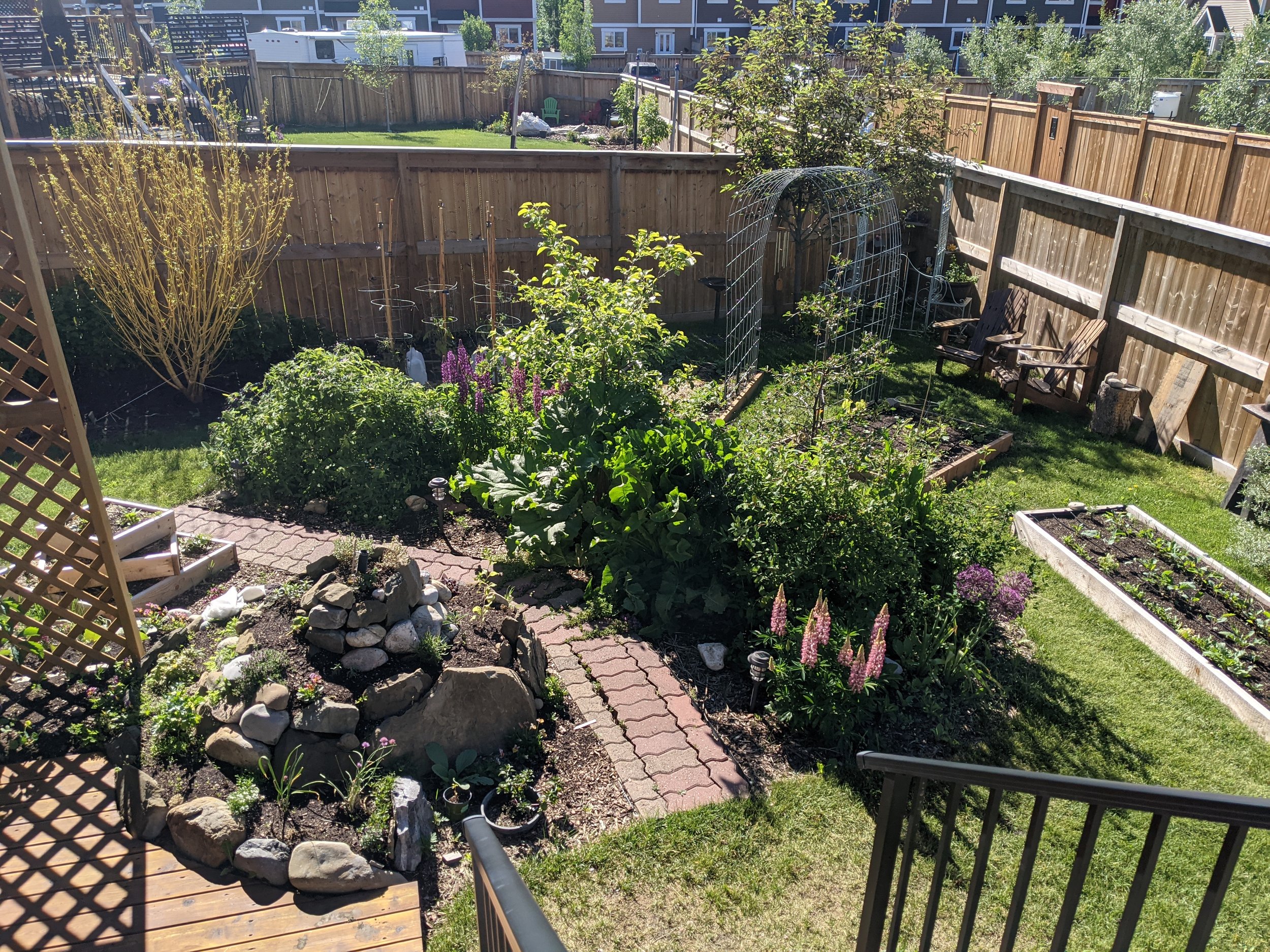
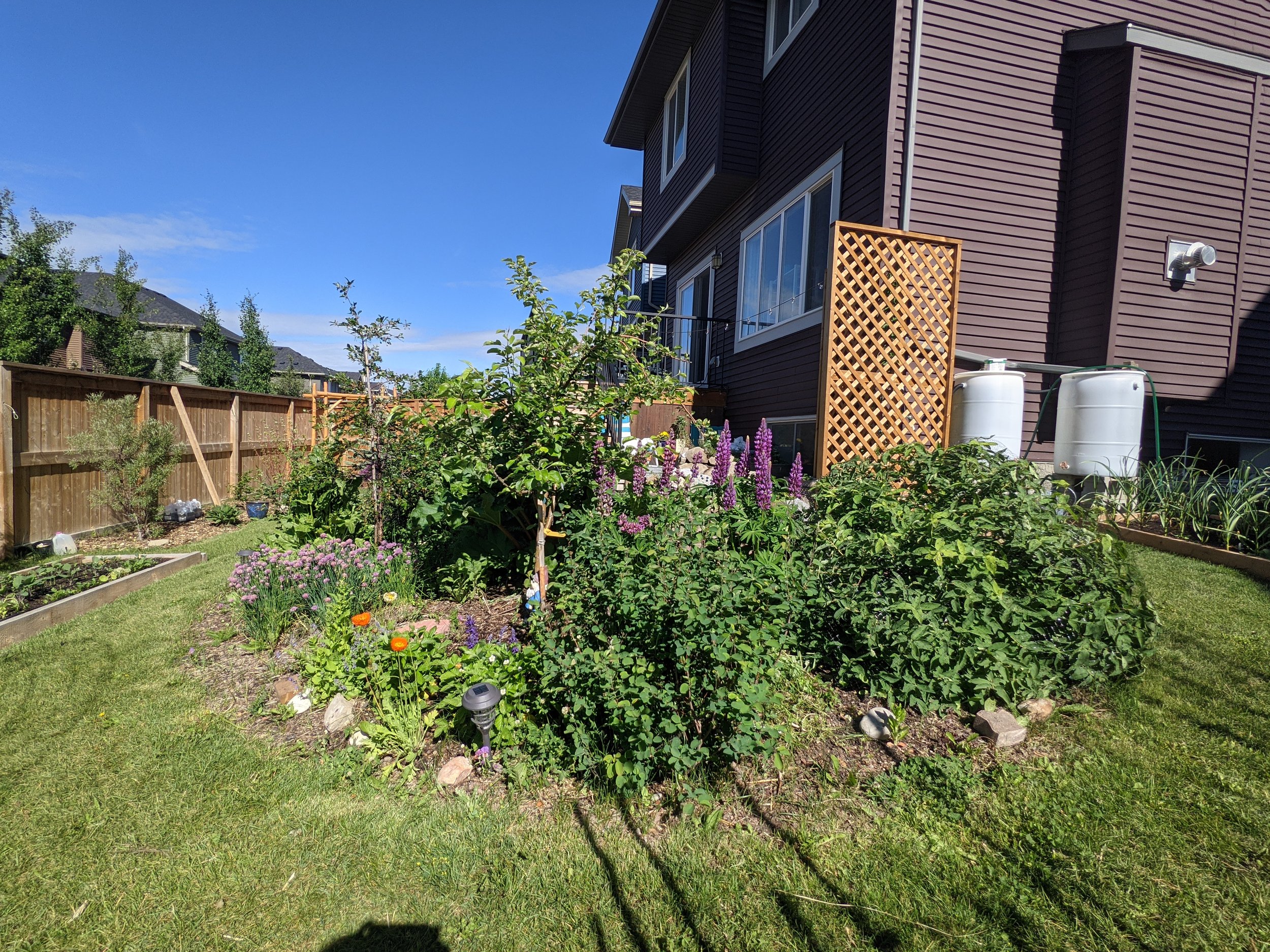
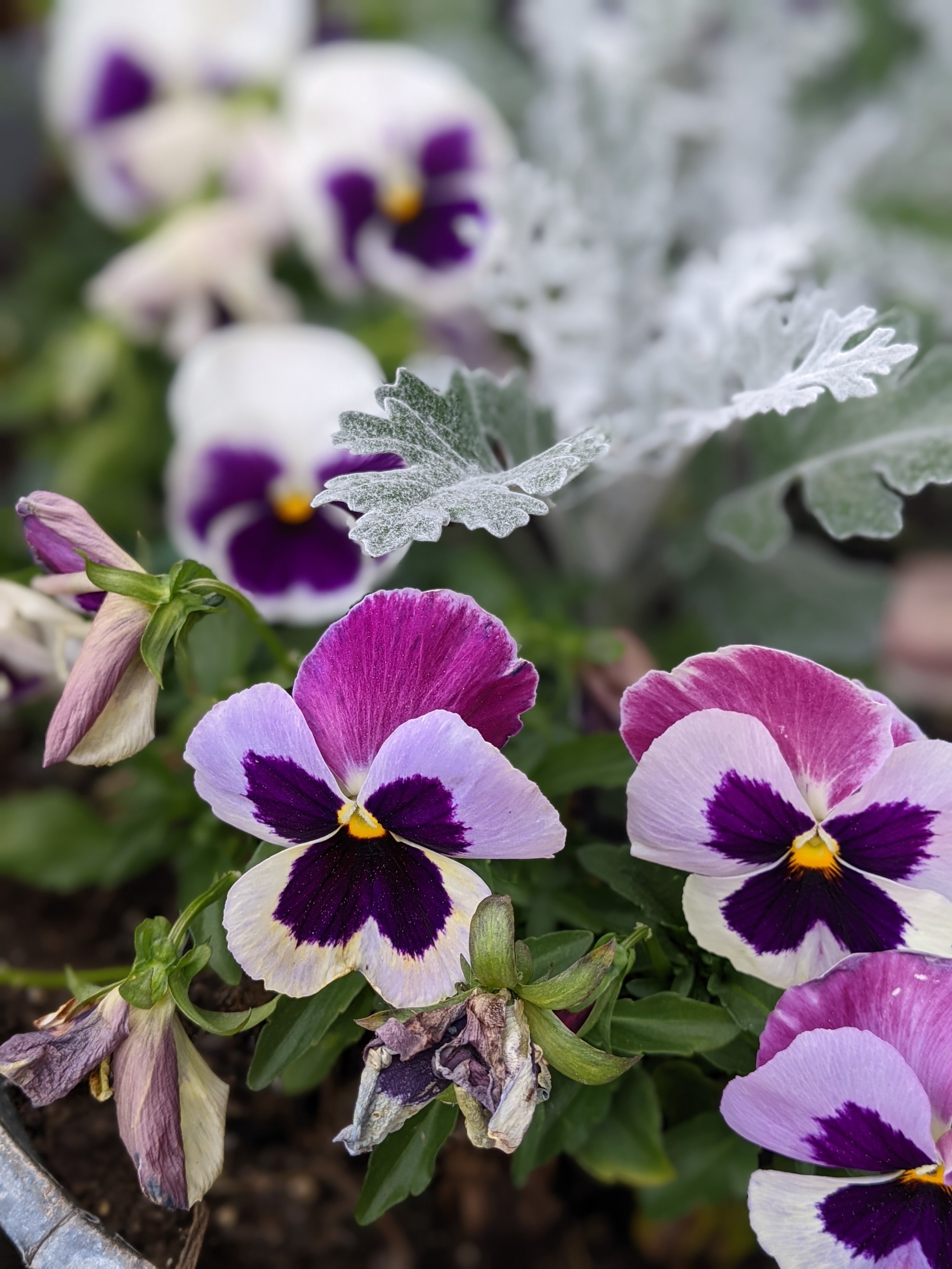
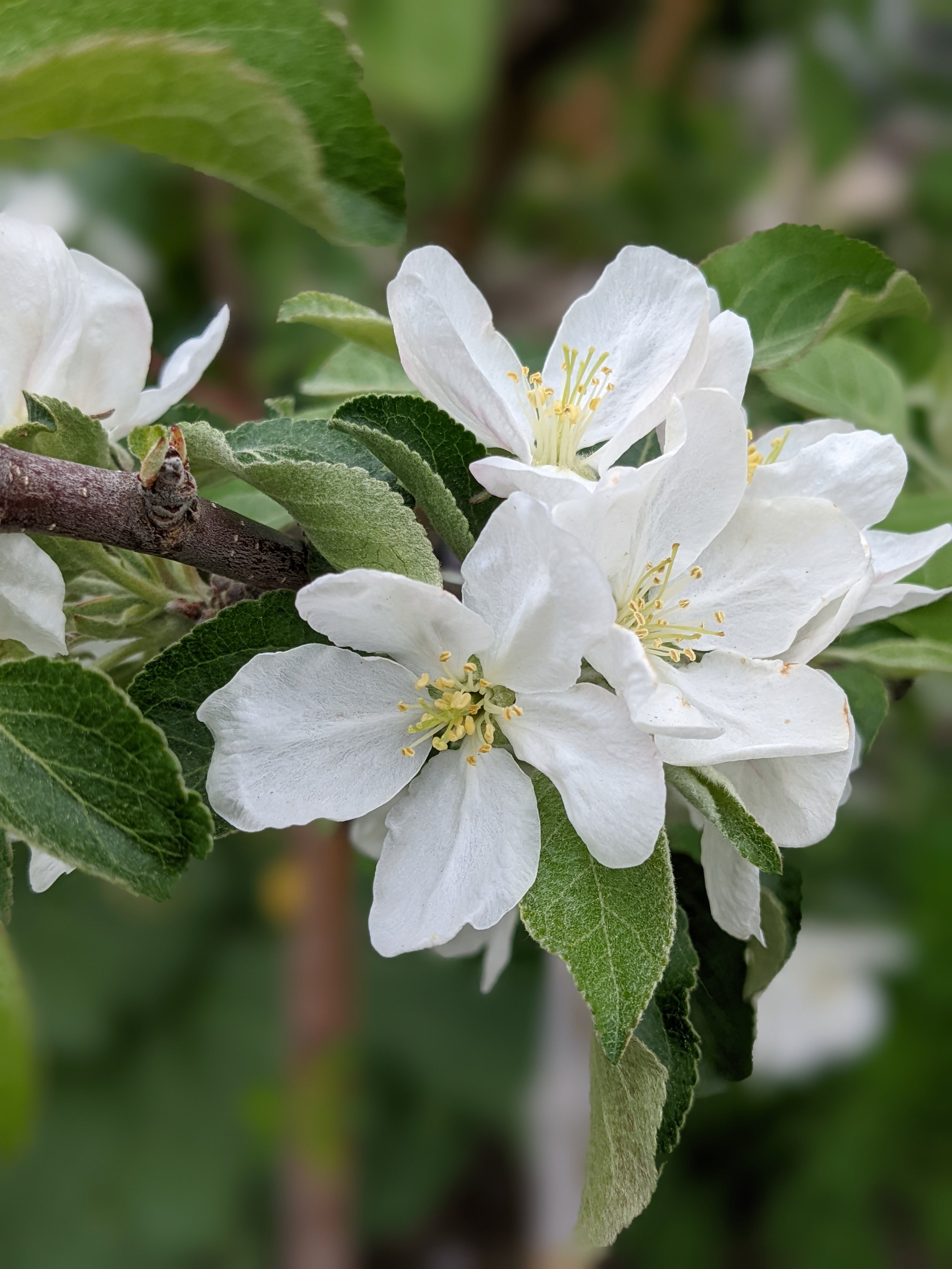

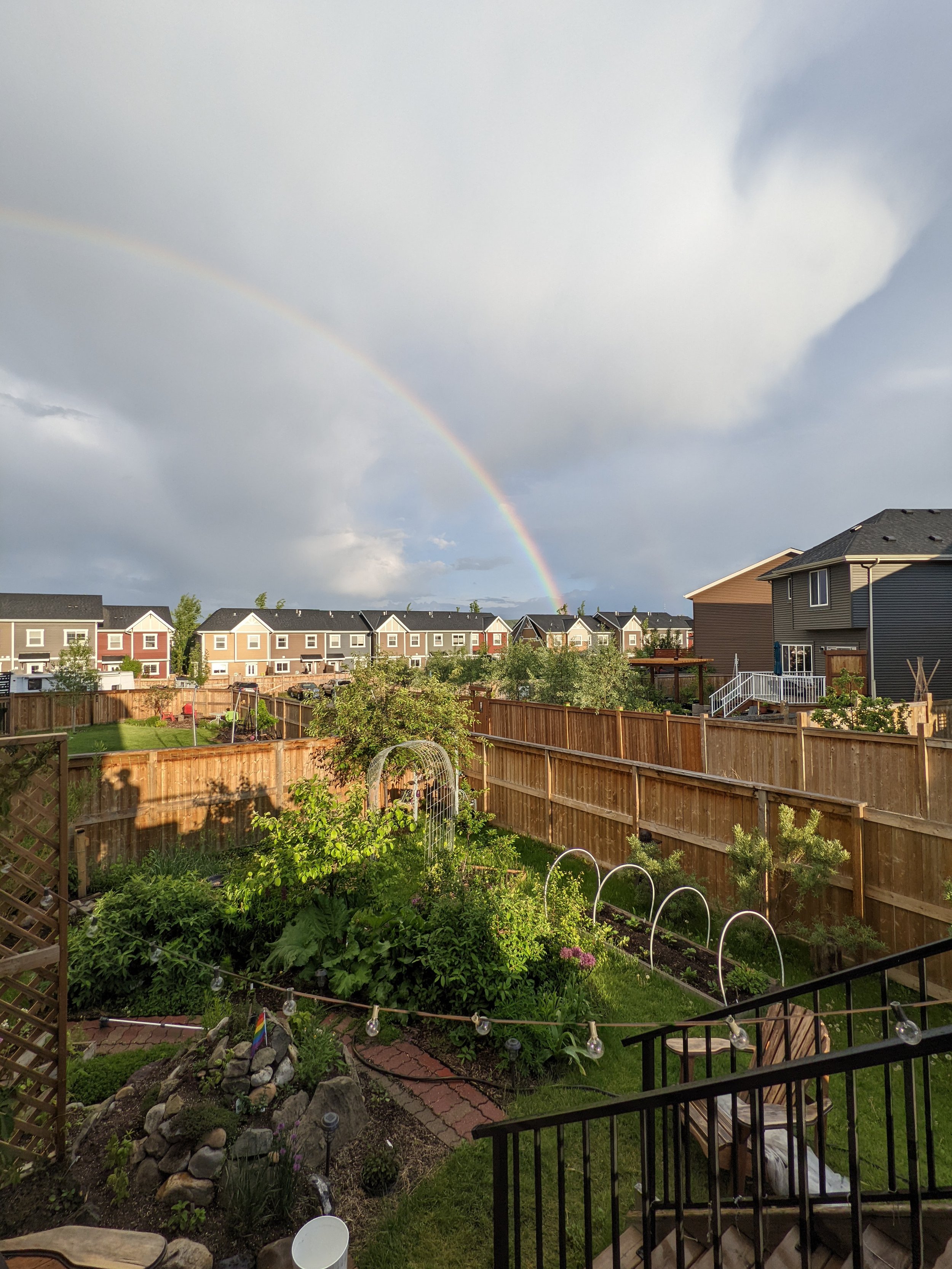
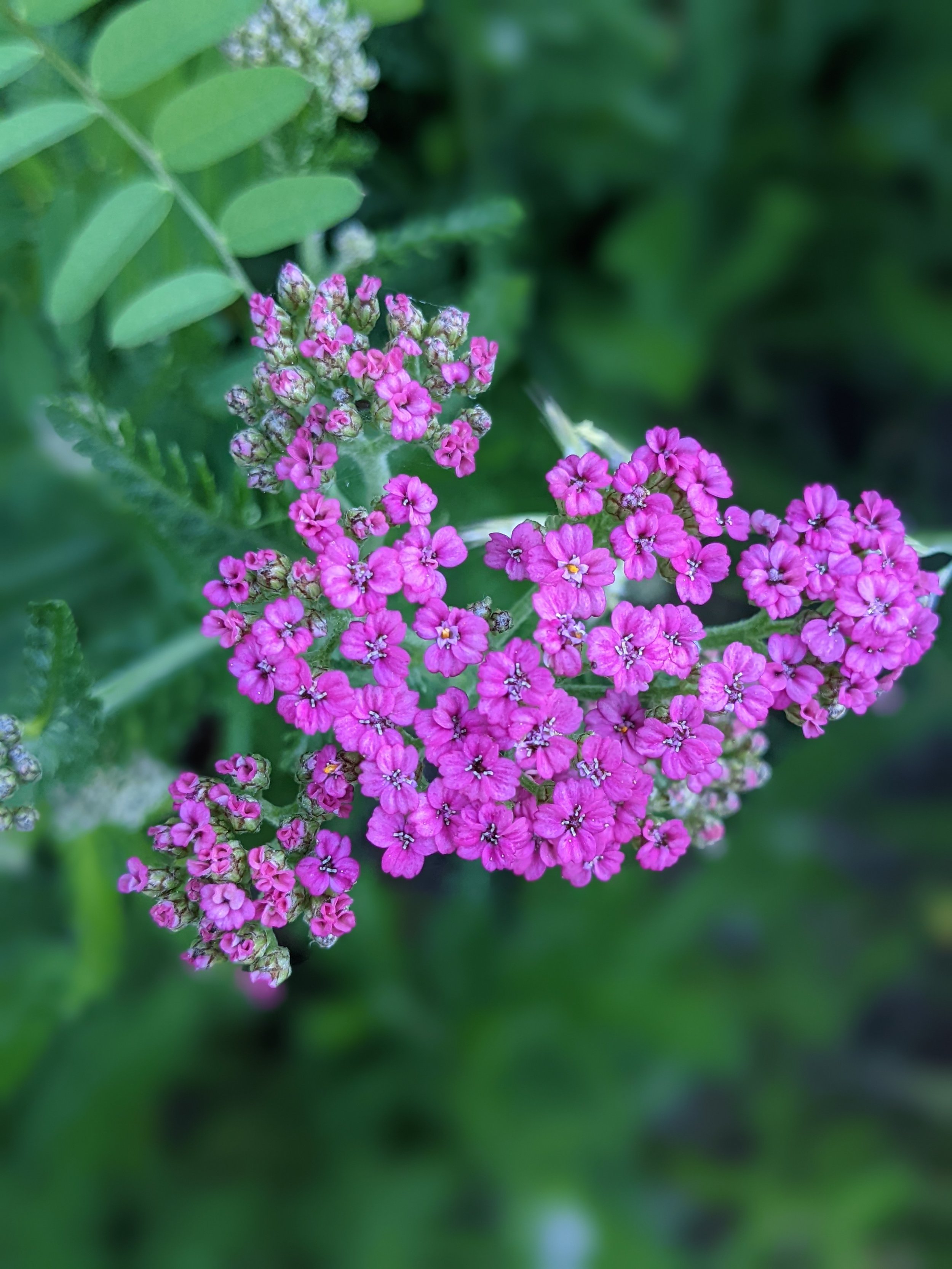
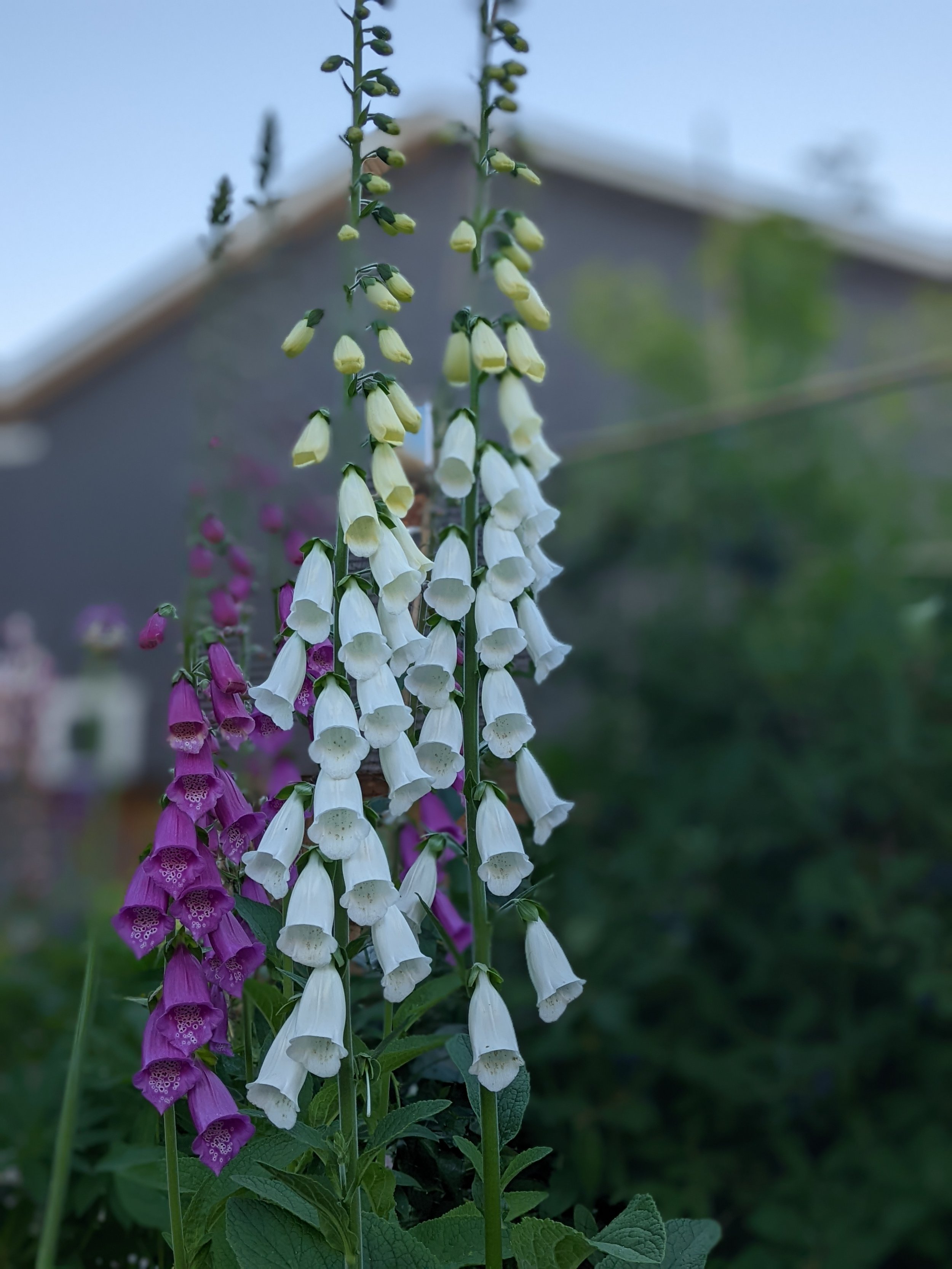
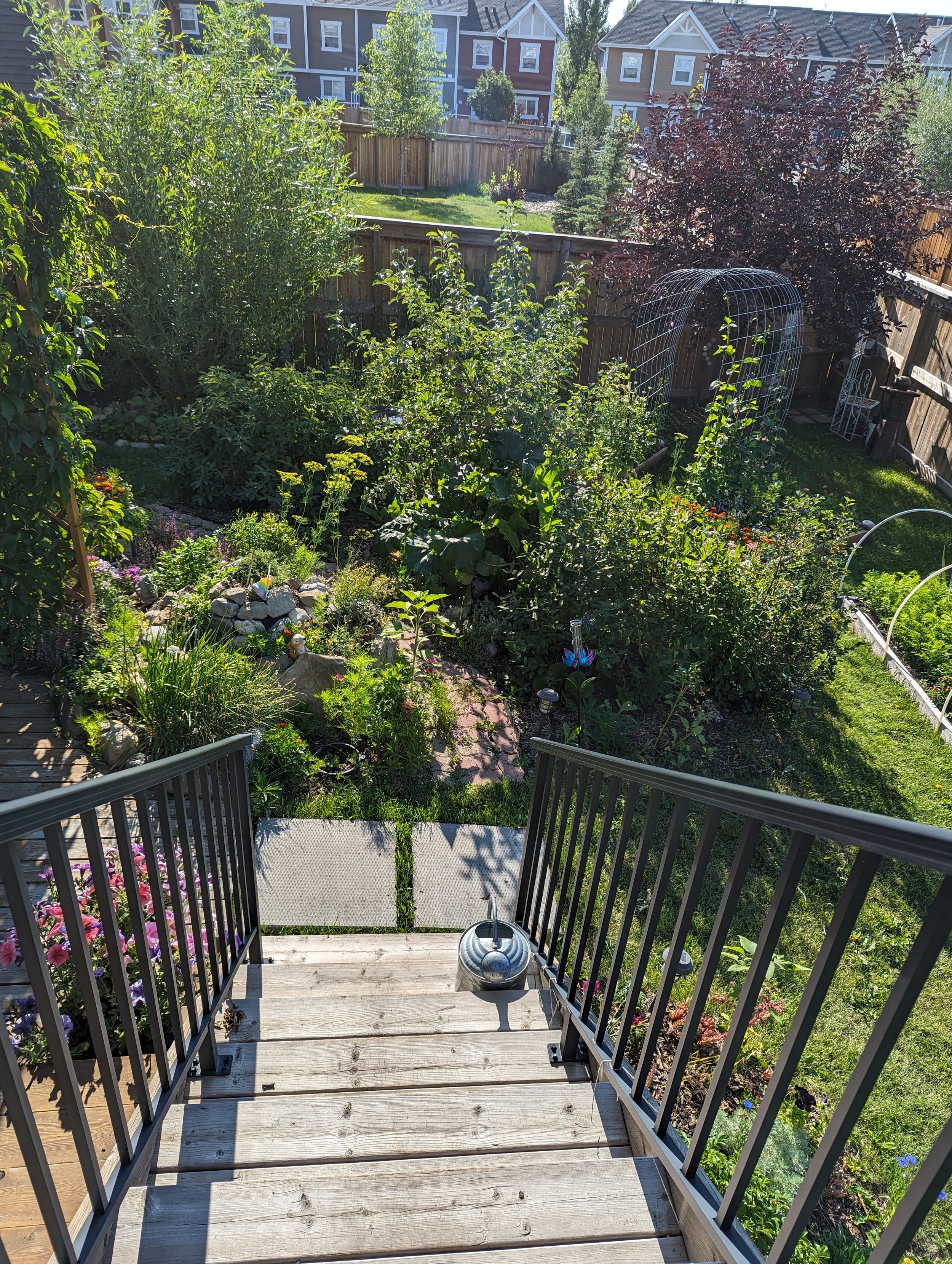
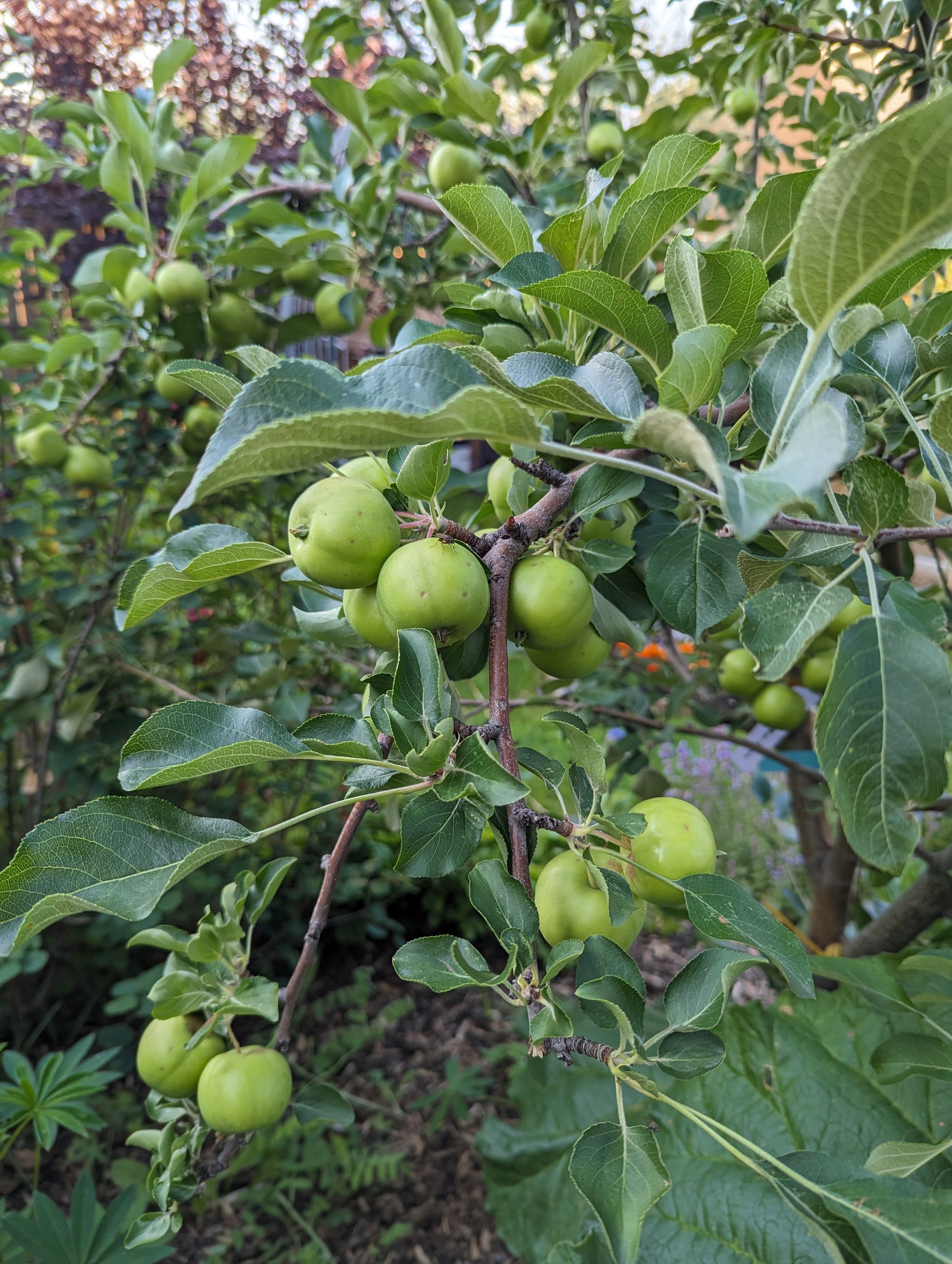

2017
The Fairy Garden
This early project is extra special, as it was a combined effort between Grandma and our youngest child. The fairy garden features an old metal arch that we got for free through social media. After repainting the arch, we dug out the dampest corner of the garden and planted ground creepers around paving stones. We collect knickknacks for the garden, and Grandma has sent along a few pre-fab fairy houses. My youngest is almost 15 now, but every spring, he still troops out to the garden to set out the fairy village hidden away in the corner behind the chokecherry tree.
What we grow: creeping thyme, woolly thyme, moss (naturally occurring), mint in pots, and potted basil - it’s the only place in our garden where it thrives (it must be the fairies!)

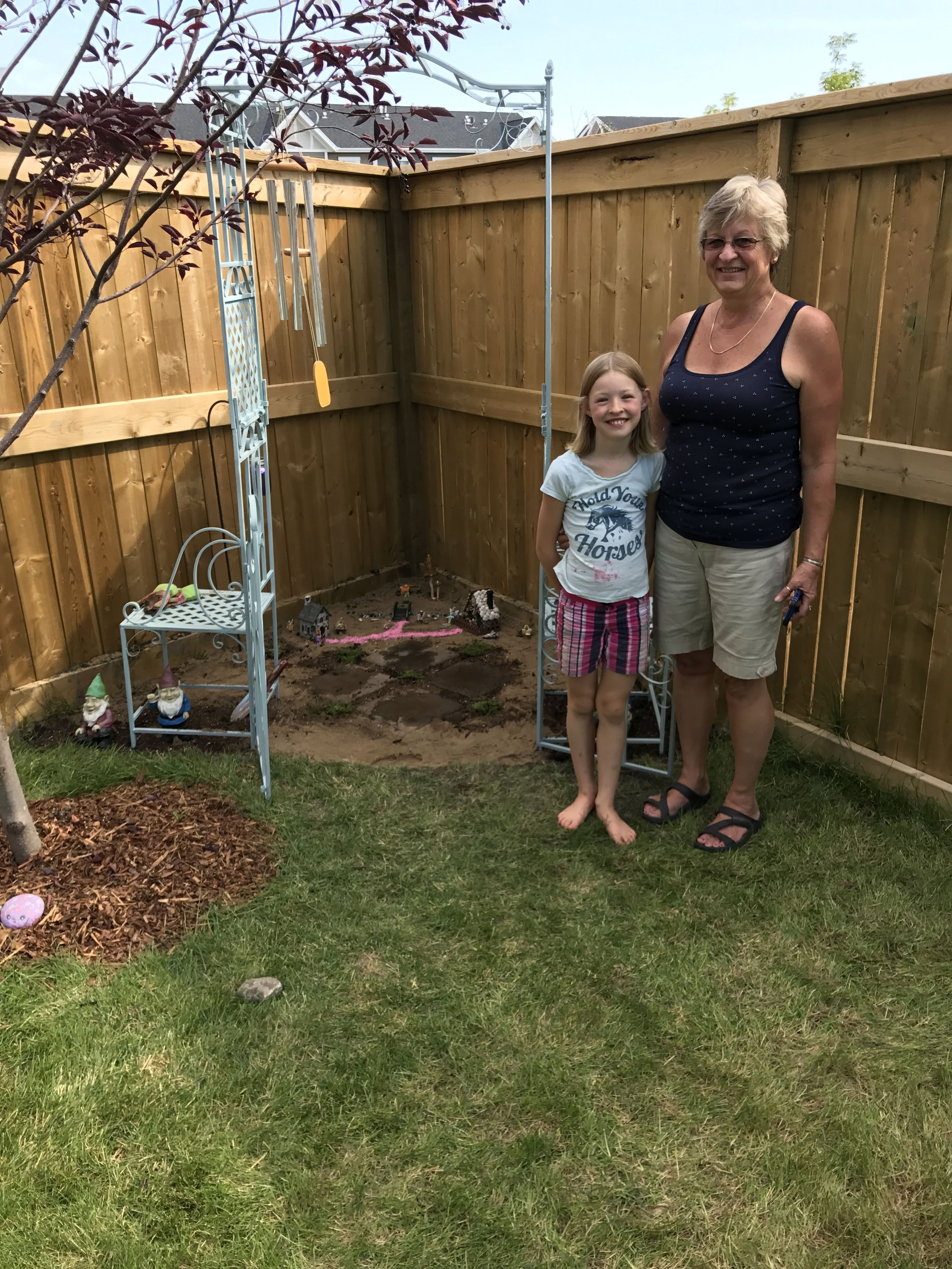
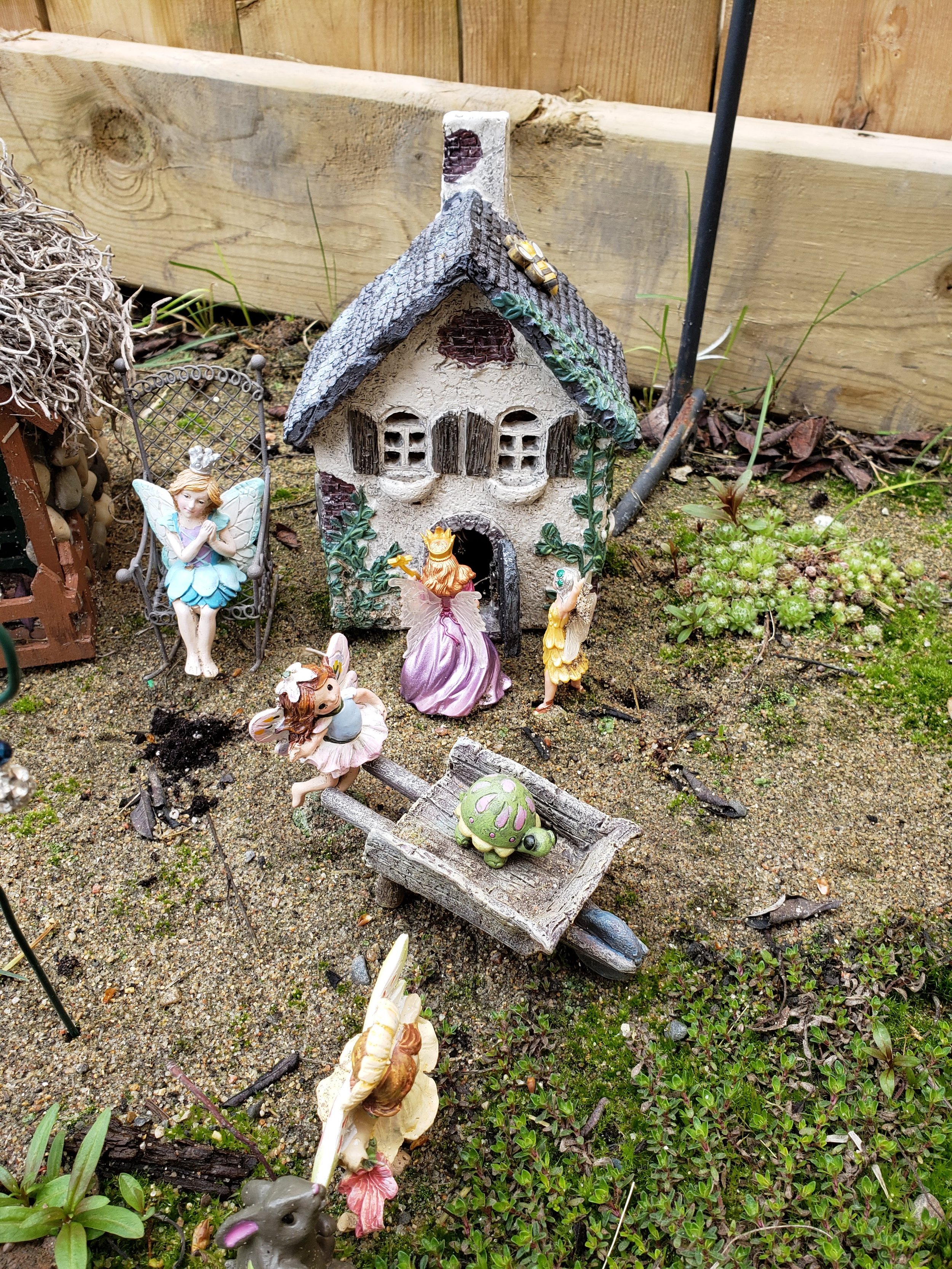
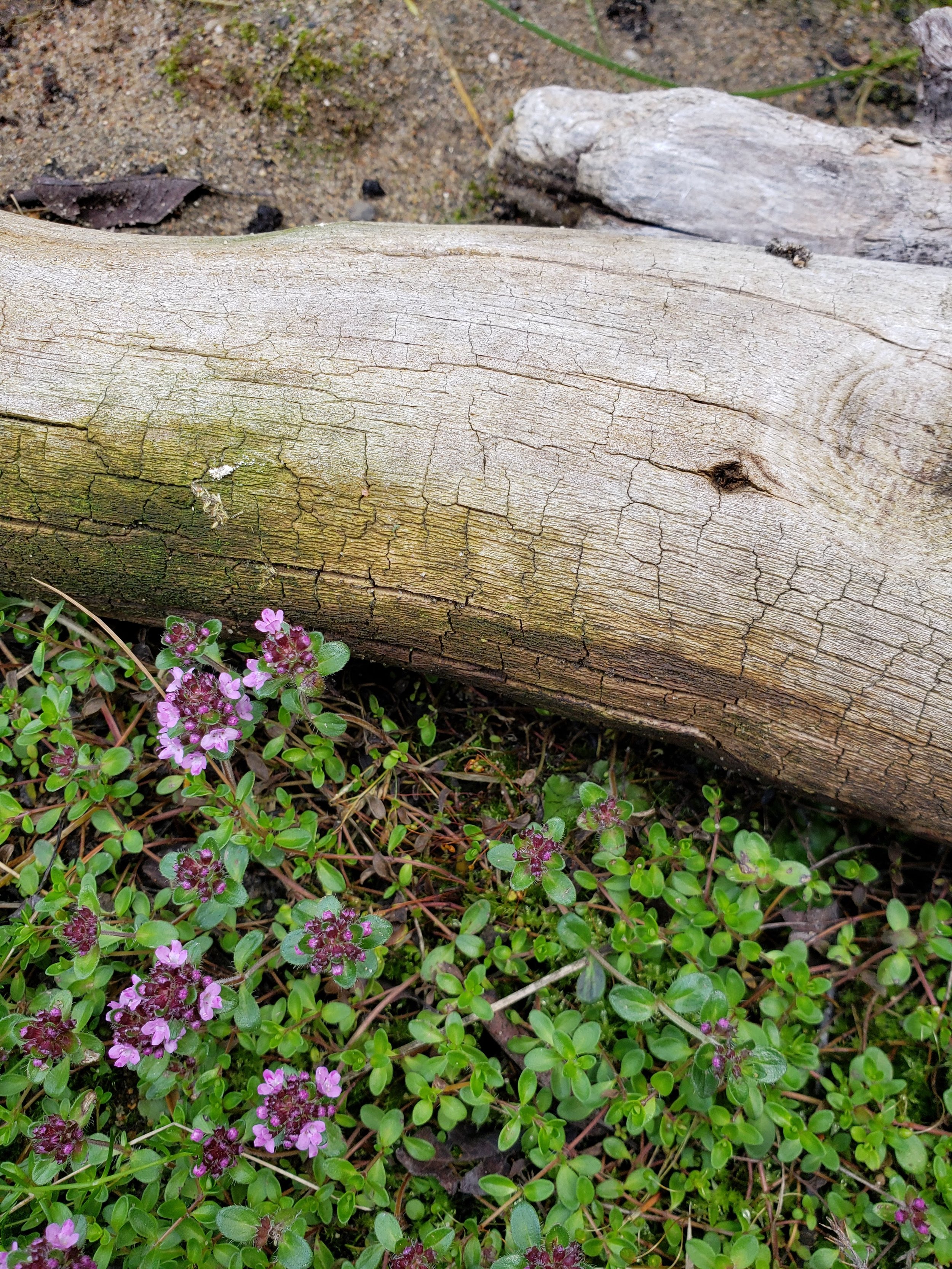
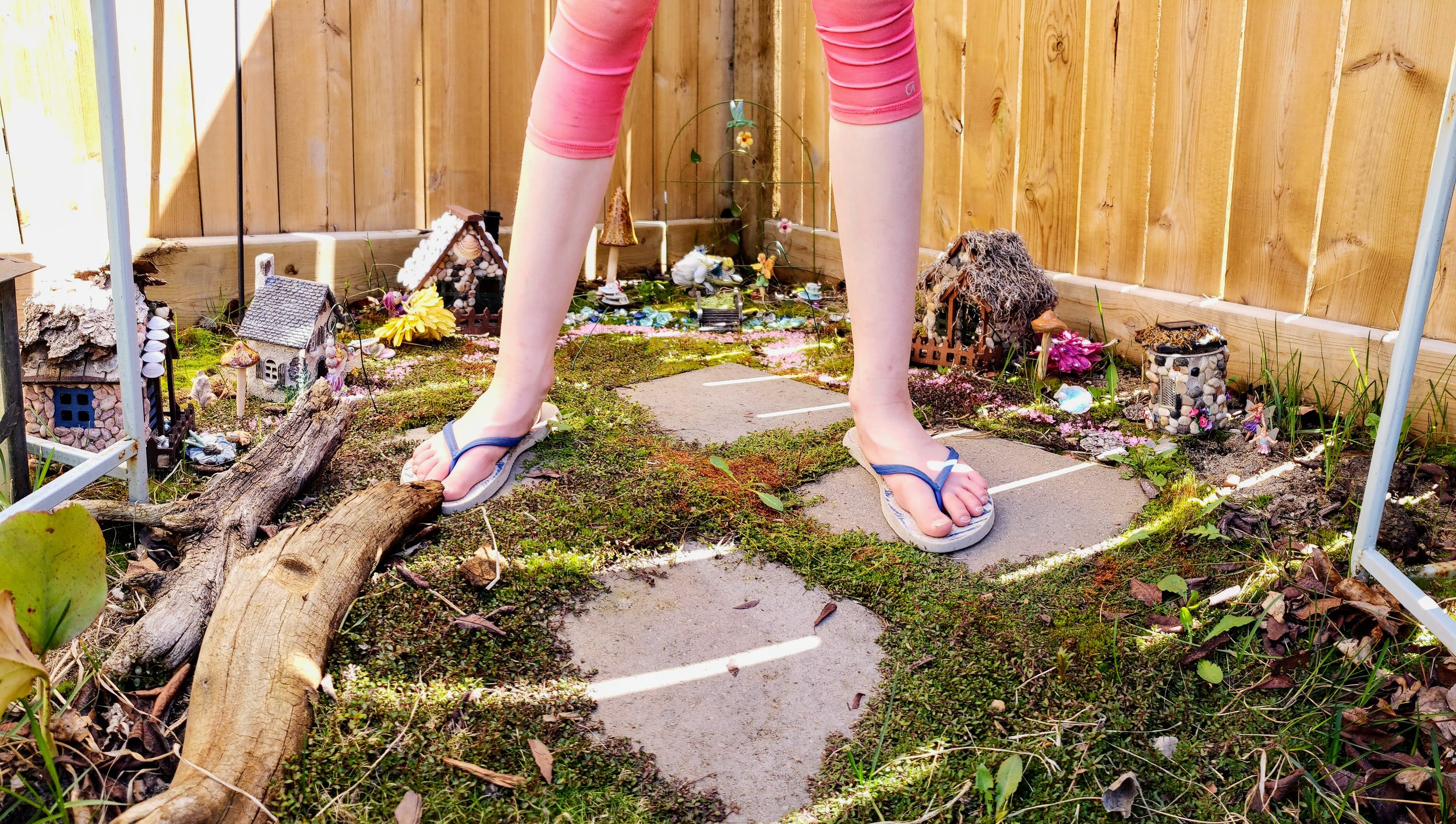
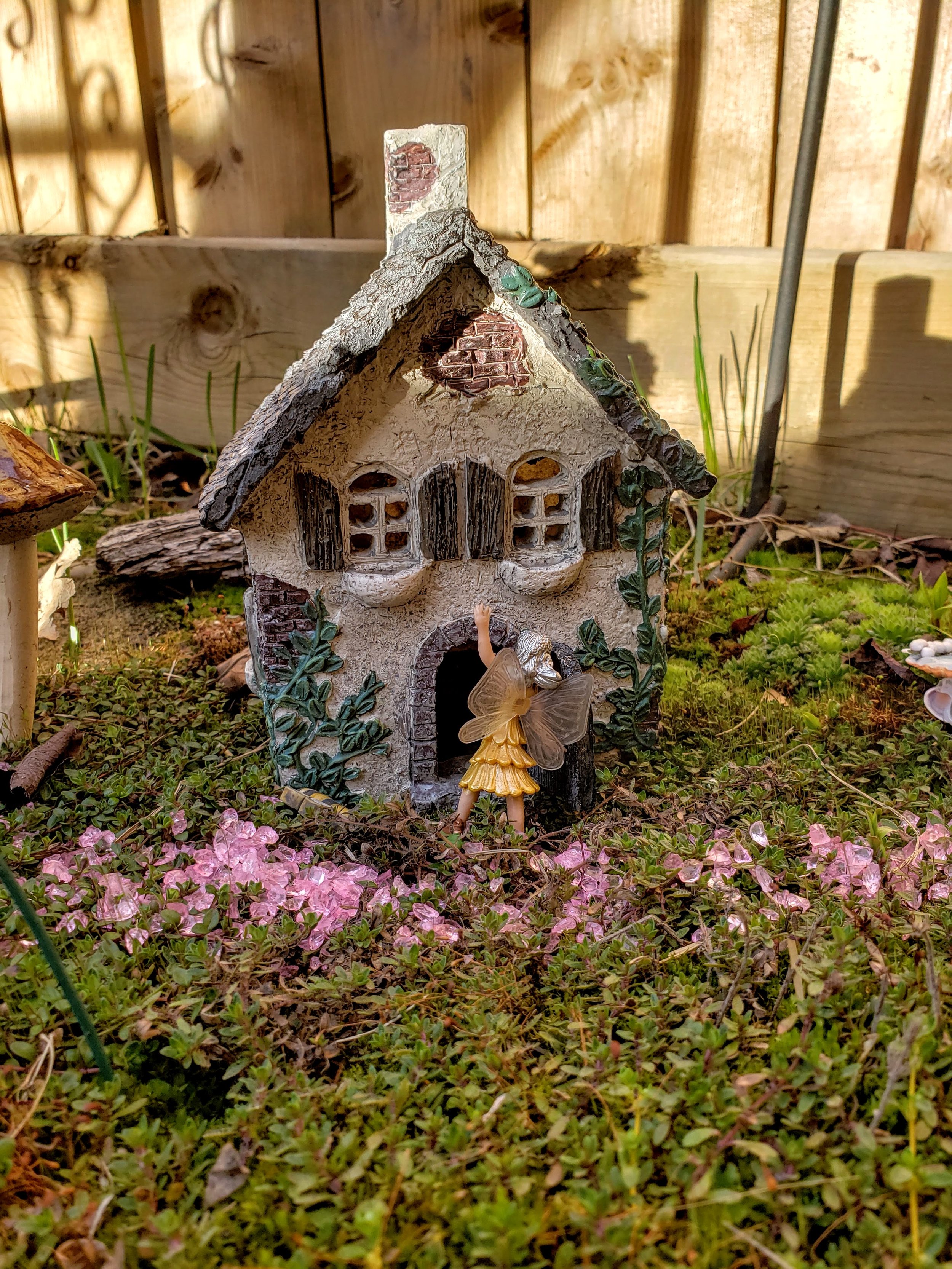
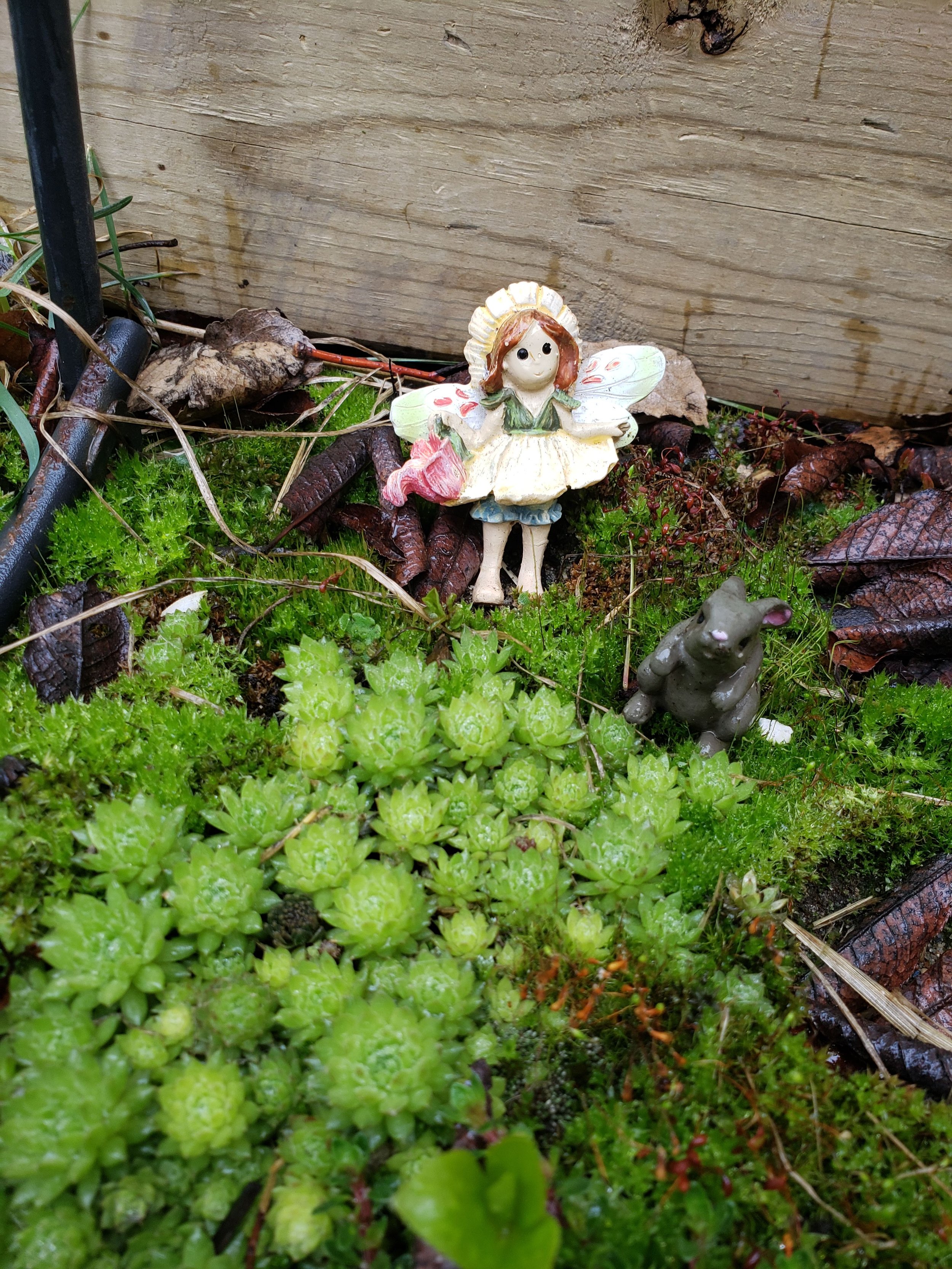
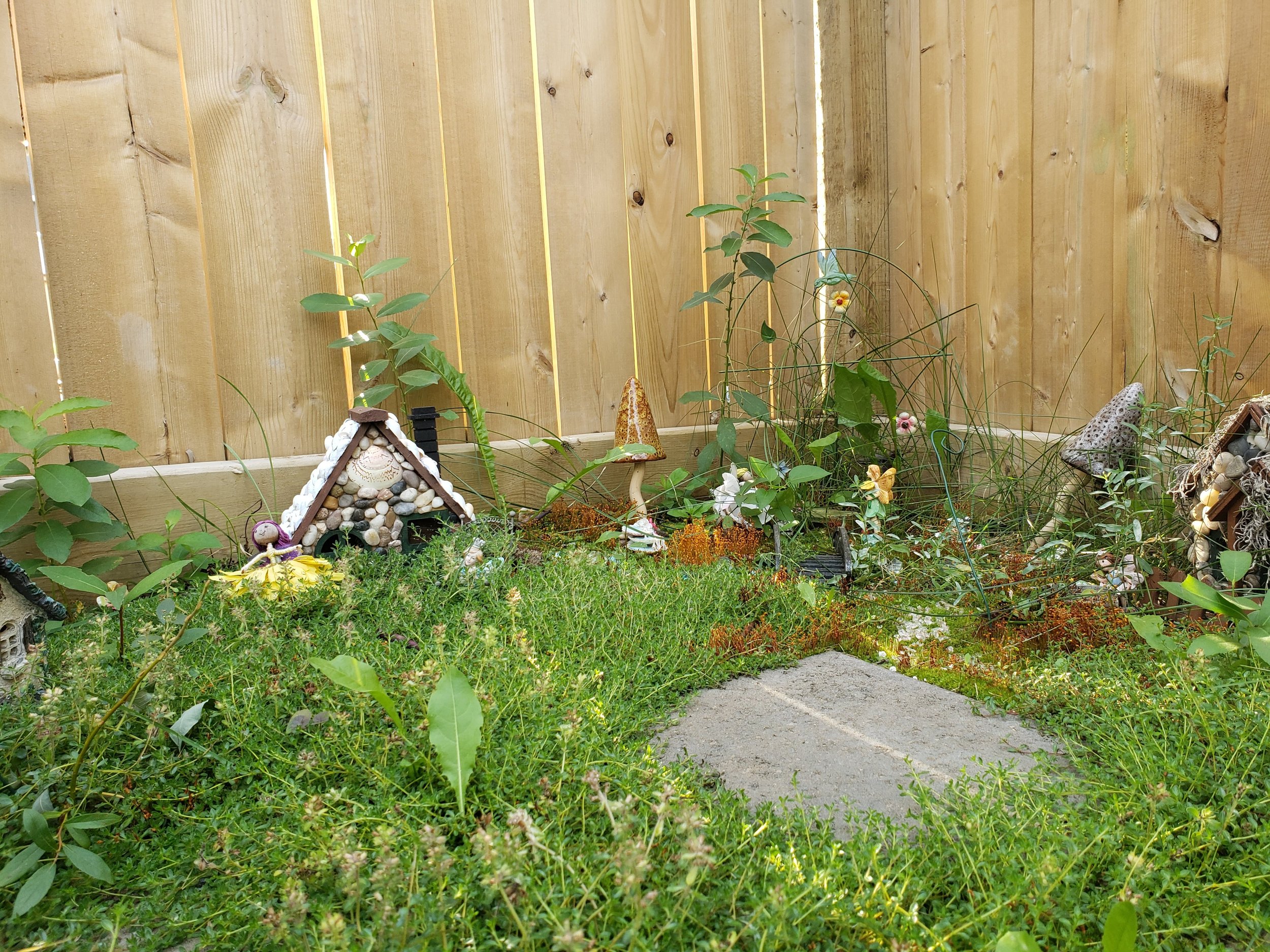
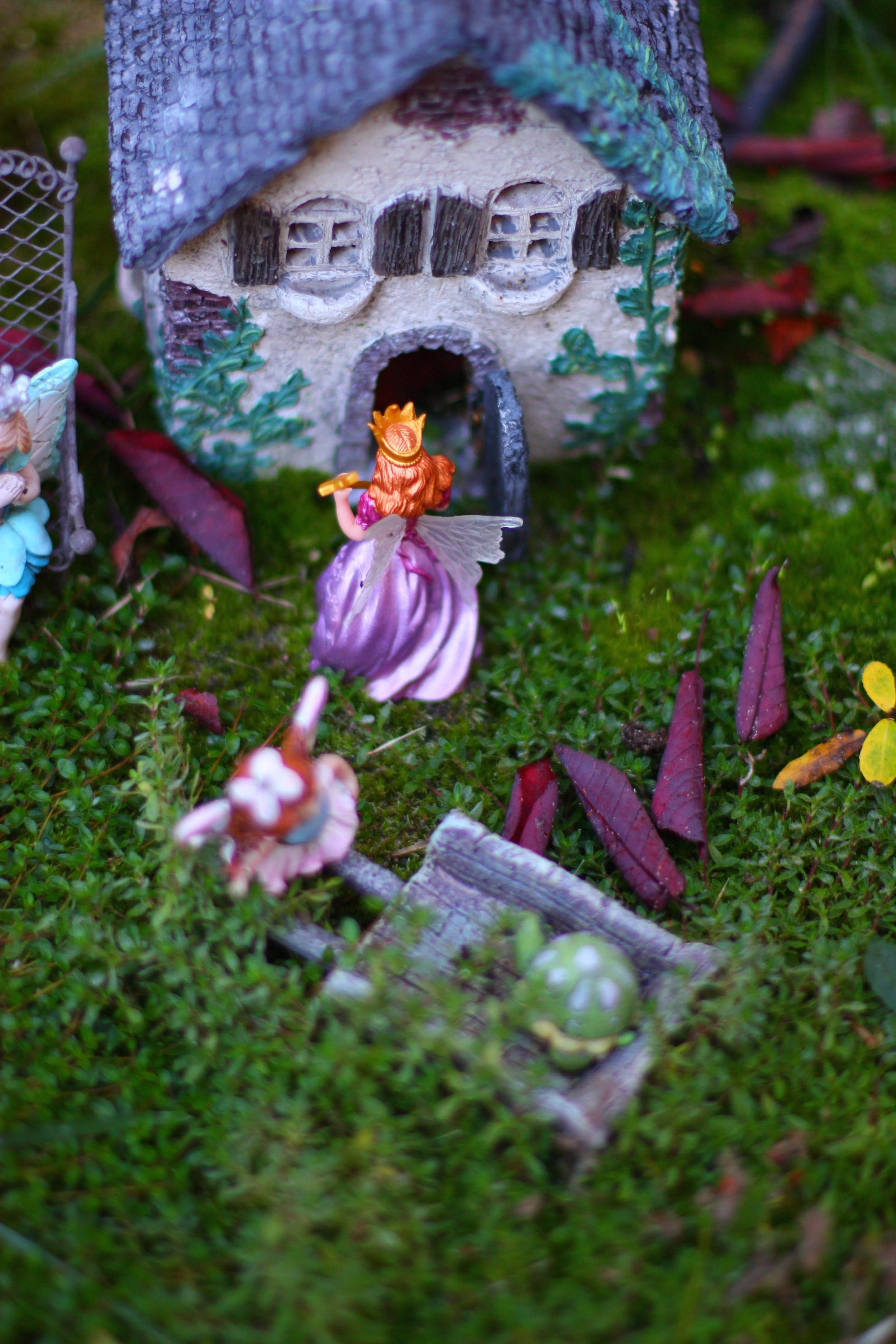
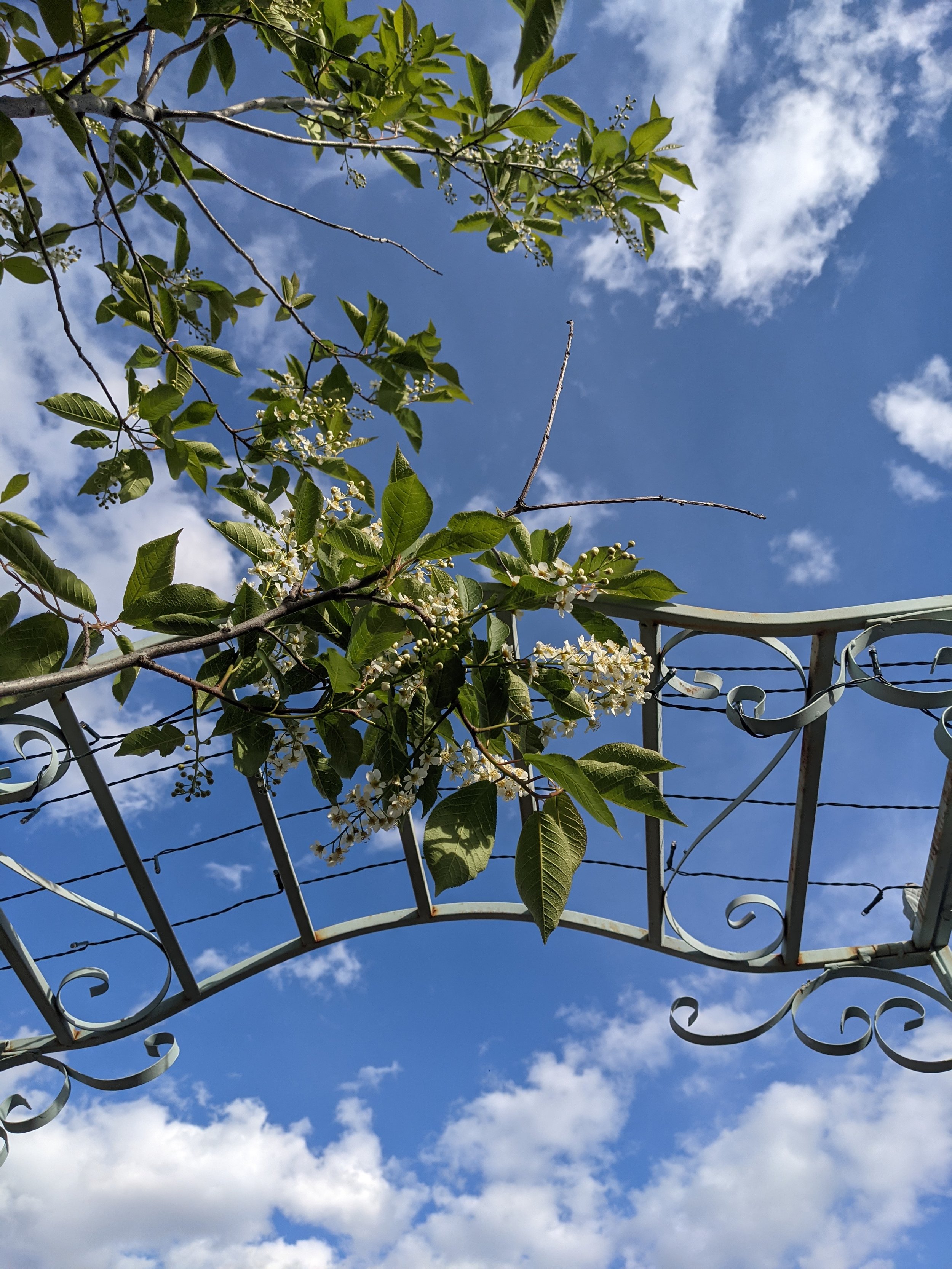
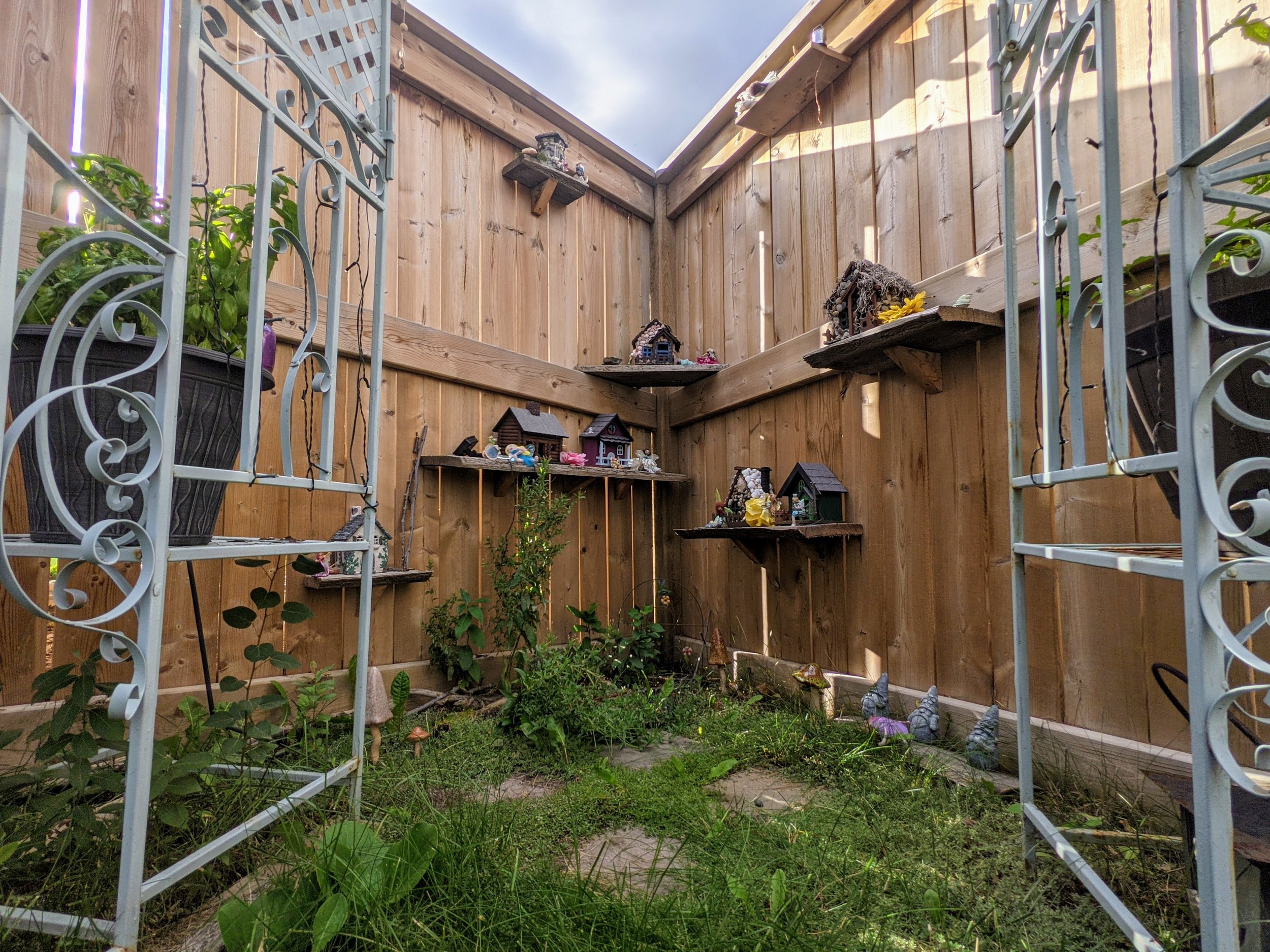
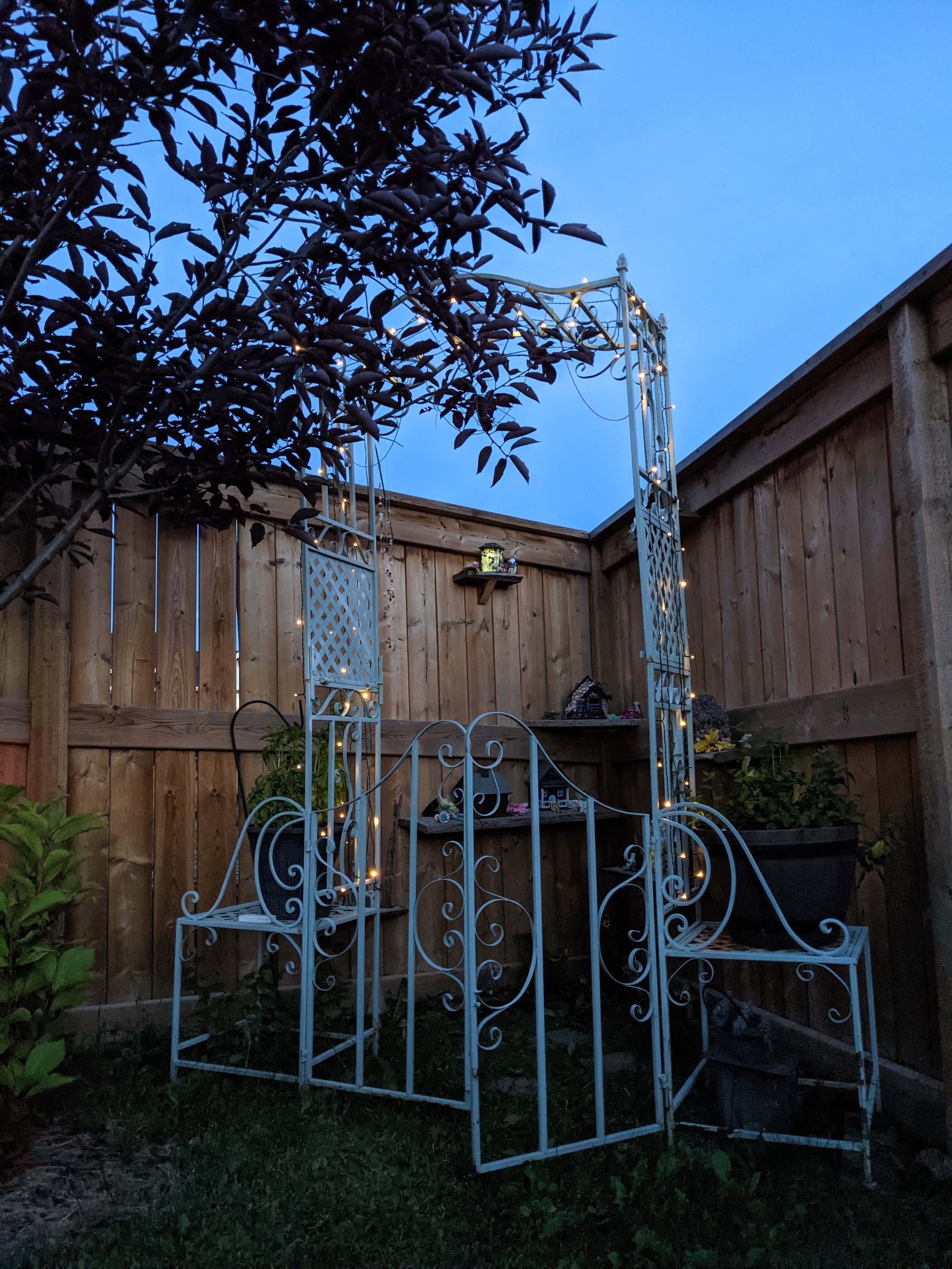
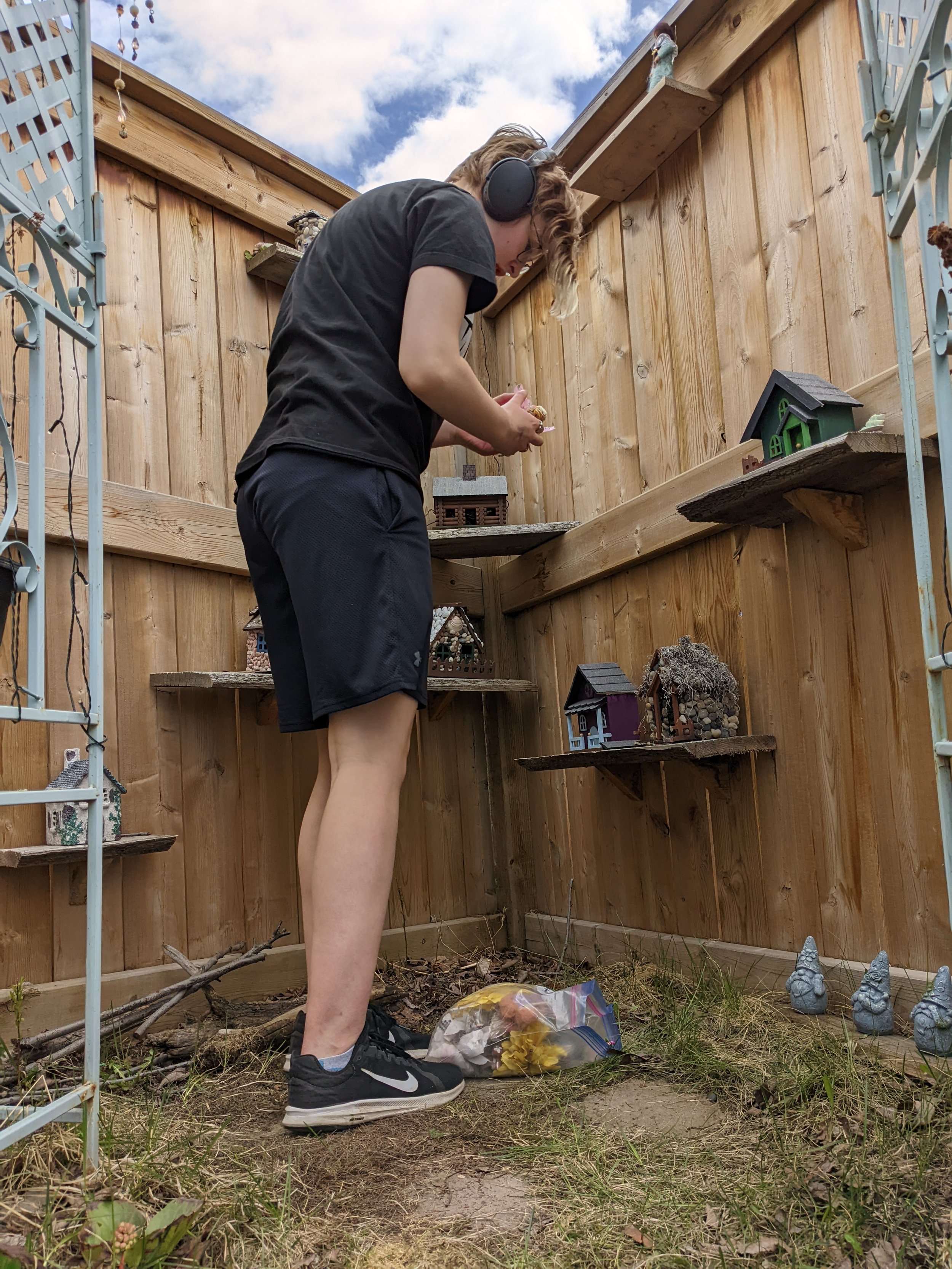
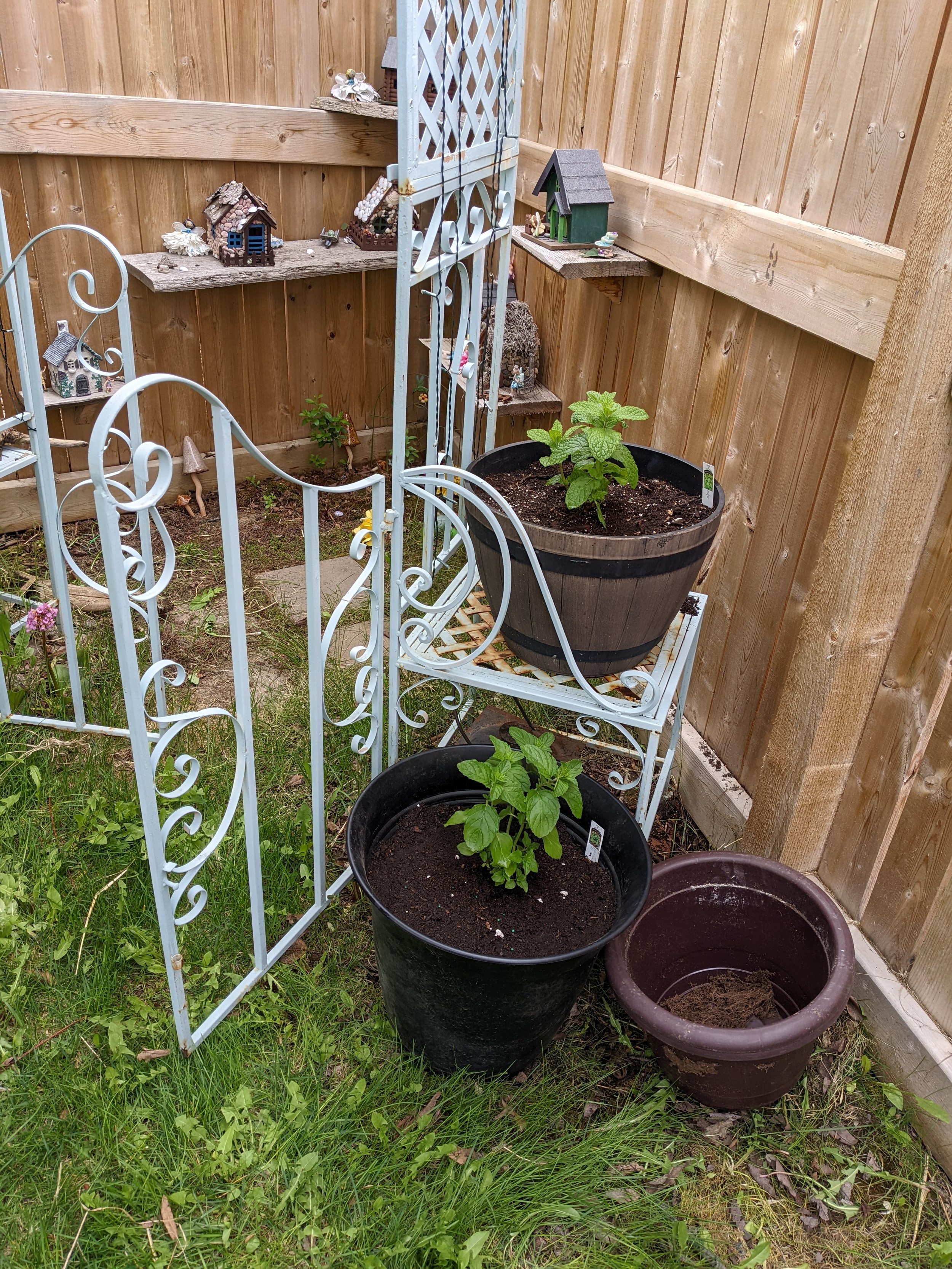

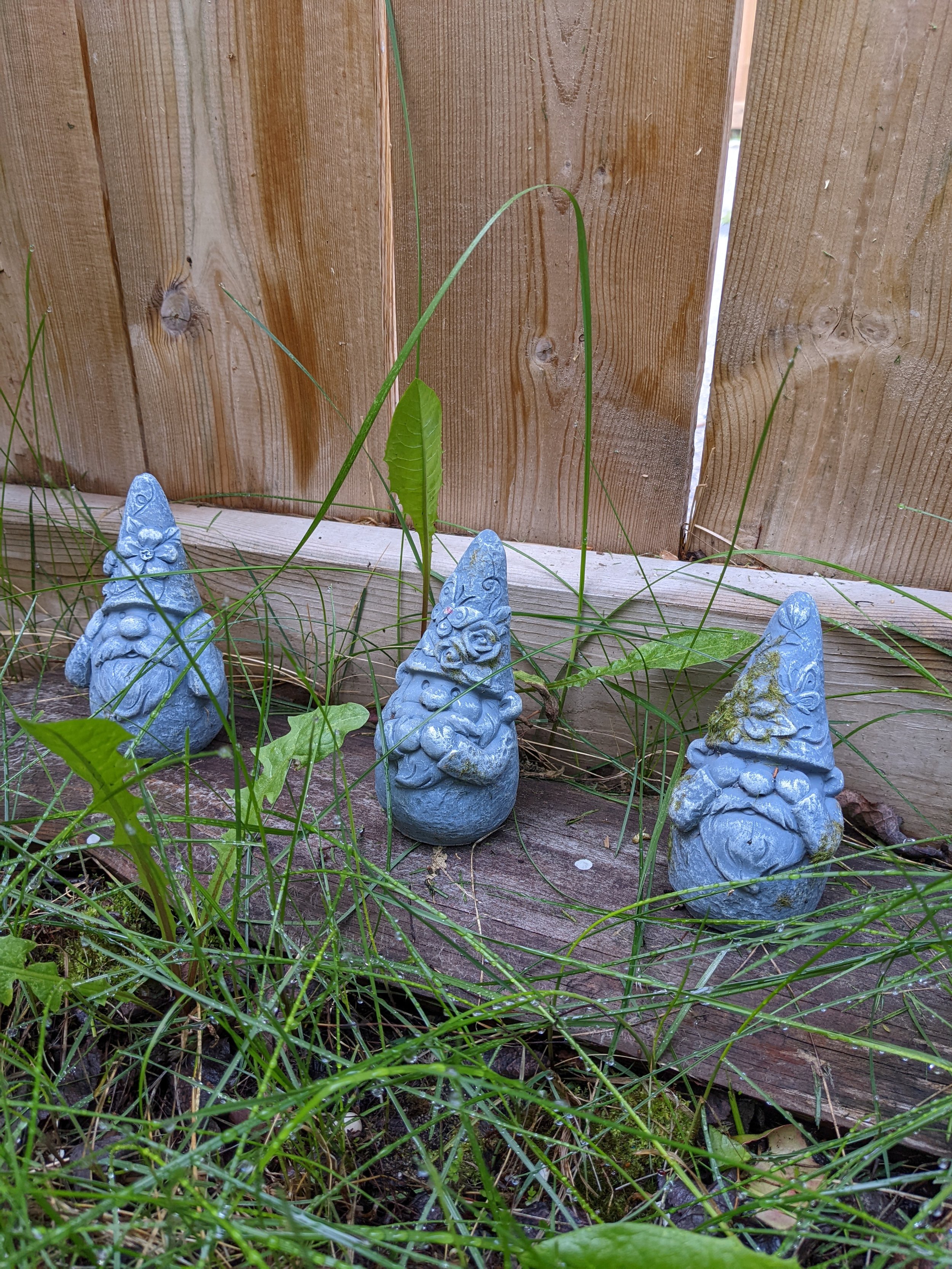
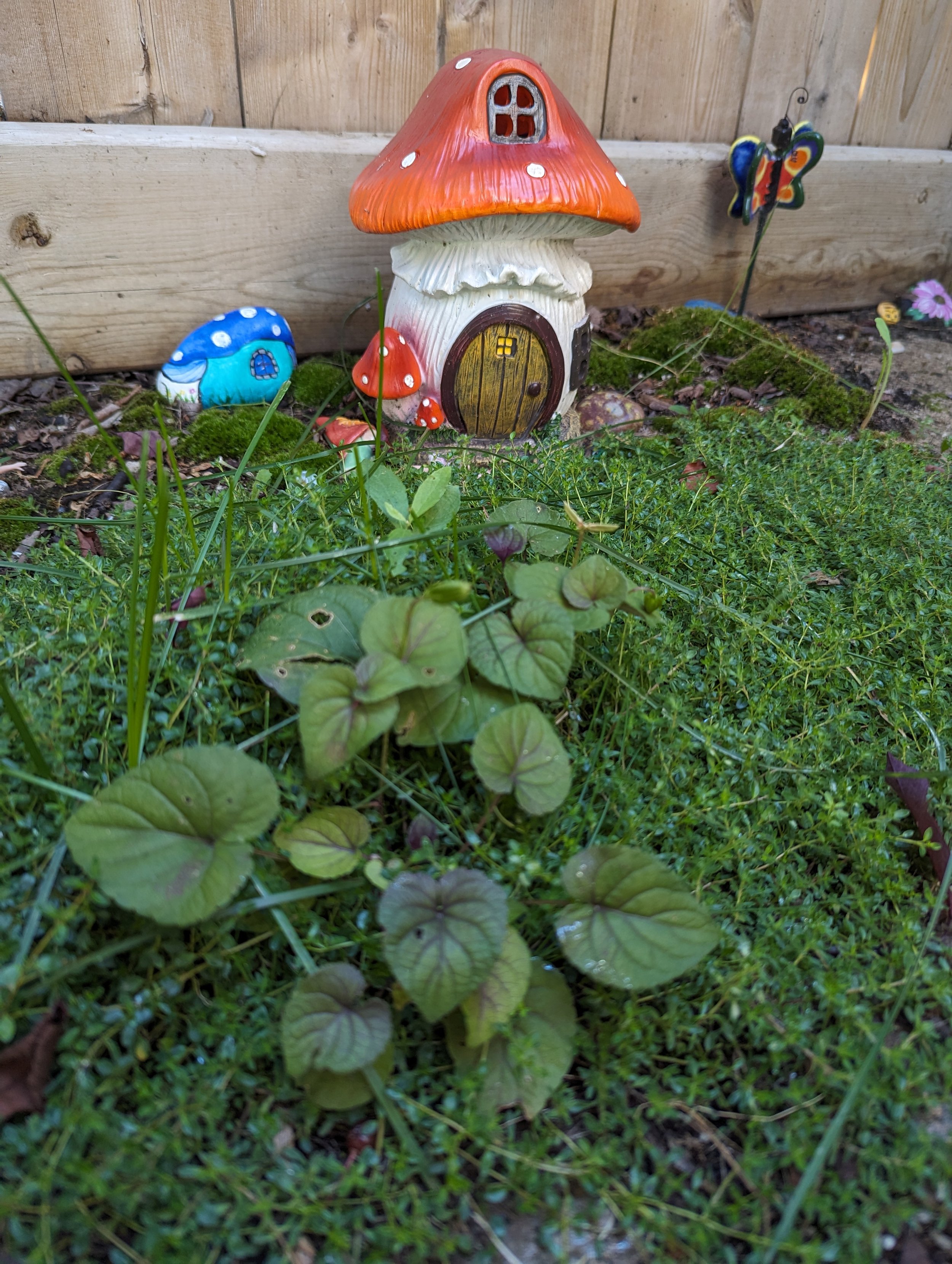
2018 - 2020
The Vegetable Beds
Our vegetable garden has shifted as we observe the patterns of light and water in our space. We started with a huge 24’ long vegetable bed on the east fence. Then we added a section of earth shaped like Saskatchewan for our potatoes, onions, and garlic. The 24-foot-long bed was too long, and the veggies on the east side didn’t get enough light. The potato patch was very successful, so we knew we needed to use that space in our re-design. We now have eight annual garden beds weaving through the east side of the yard with a total growing space of 175 square feet. Each bed is fully irrigated and built just 12 inches off the ground - to save wood and to use the soil we have already been nurturing. Some have vertical space for pole beans, others have hoop tunnels we can use in the cool spring months and to protect from hail.
I’ve written blog posts on what you need for a seed-starting set-up, lighting for seed-starting, and when you should start your annual garden seeds indoors.
What we grow: Our annual veggies change from year to year, but typically we grow scallions, potatoes, beets, kale, various lettuces, radishes, carrots, leeks, zucchini, beans, peas; various edible flowers, including calendula, violas, and nasturtium, as well as herbs like sage and dill.
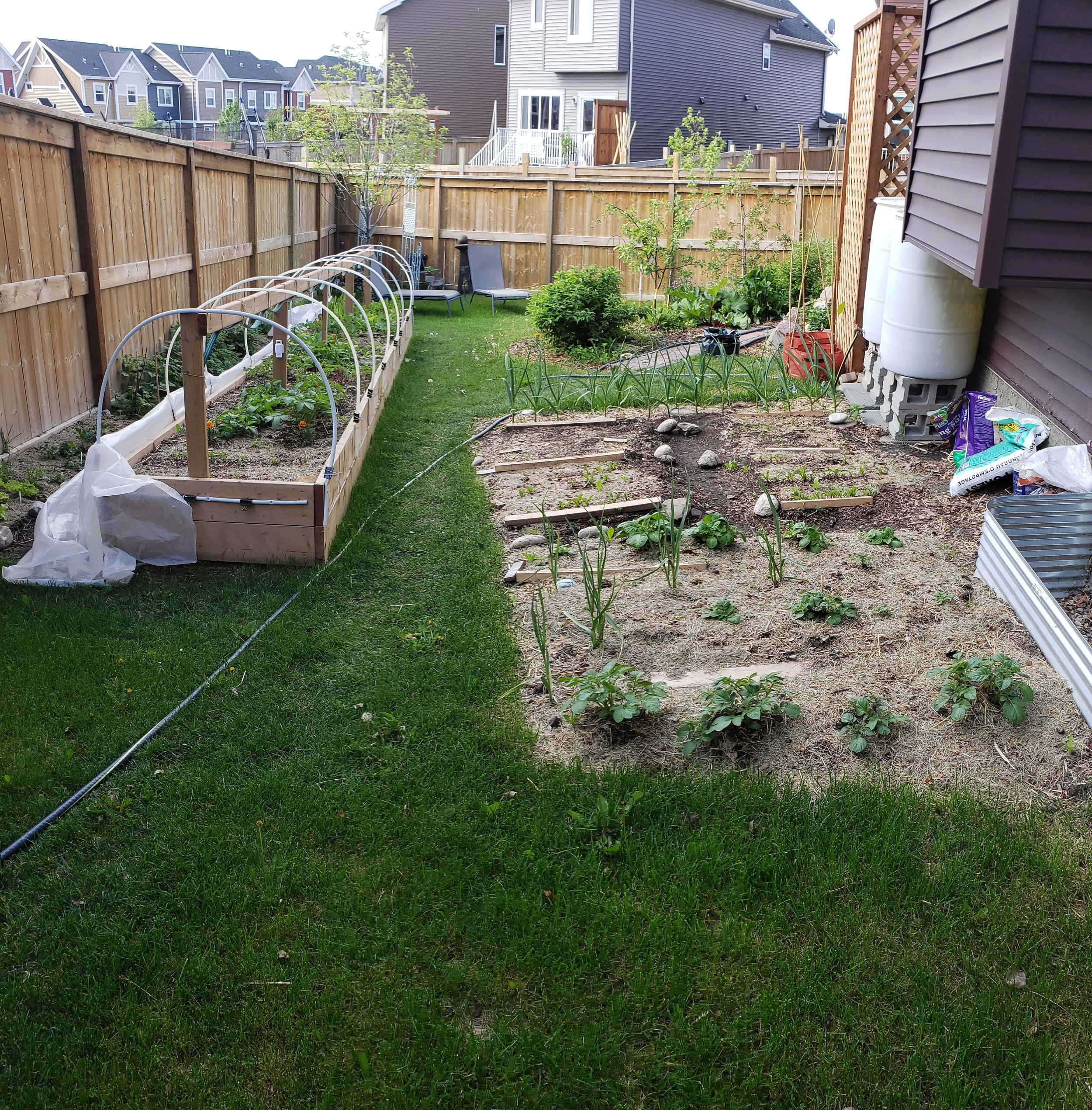
Original design with 24' bed & potato patch
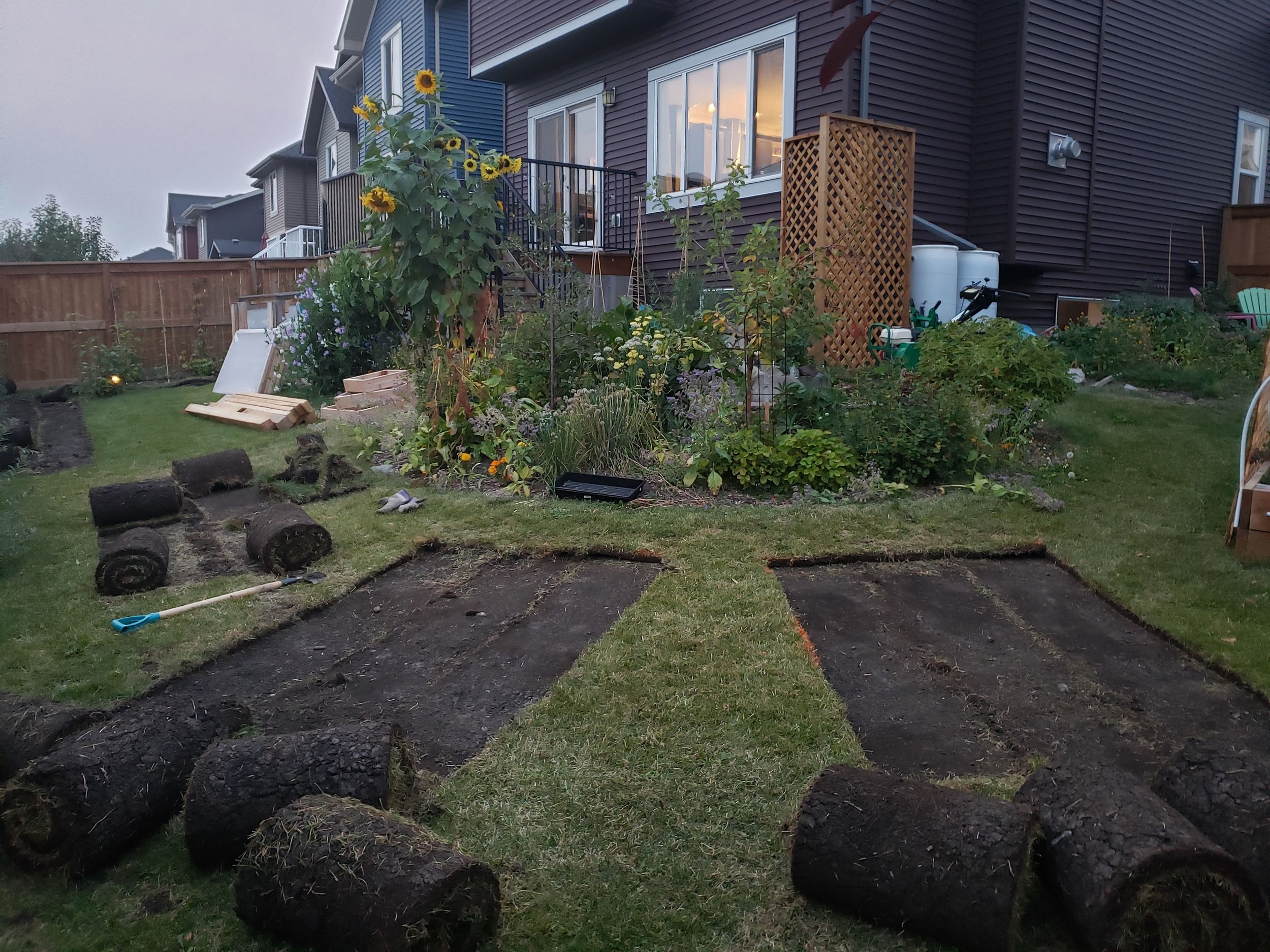
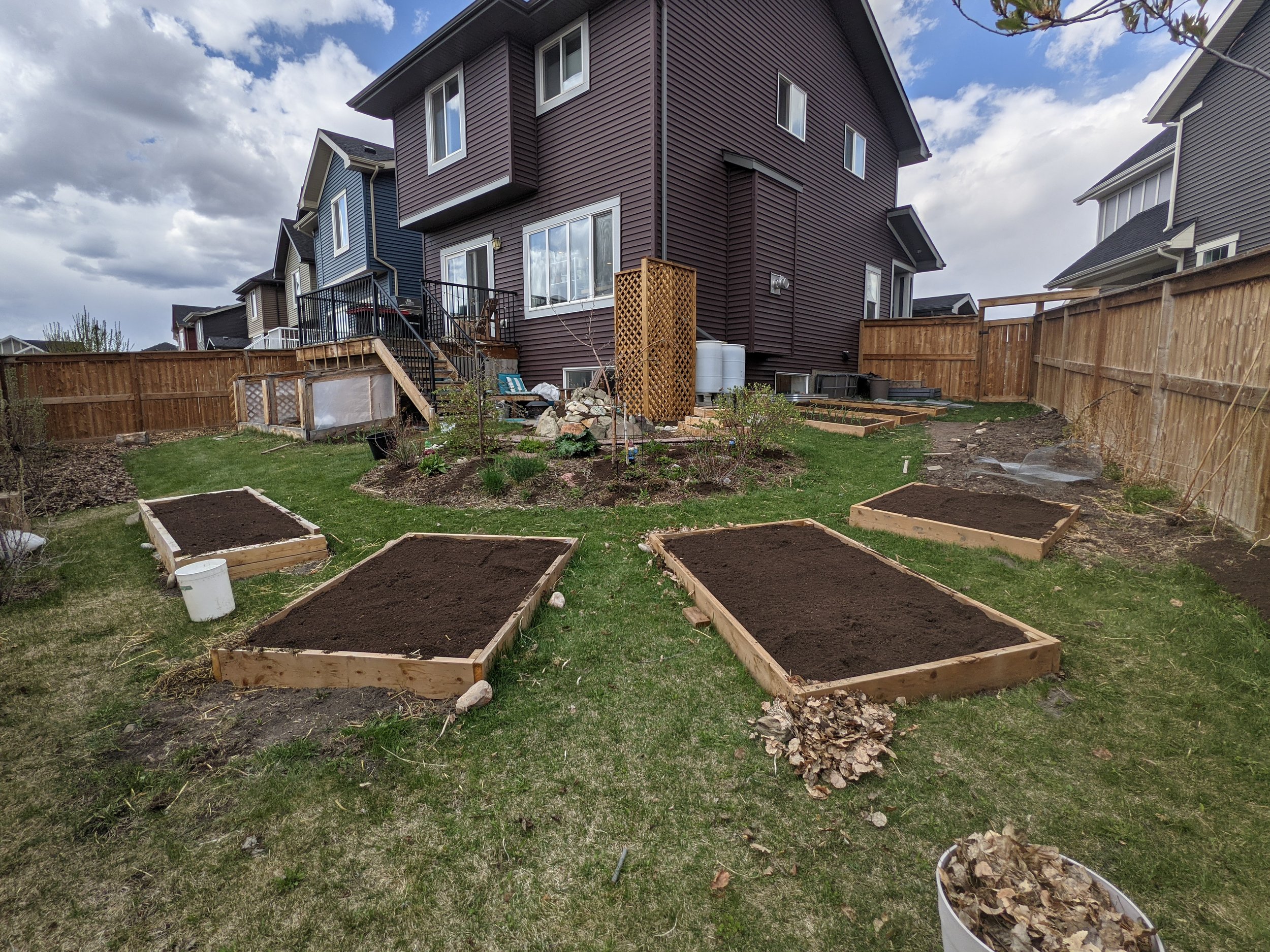
Redesign

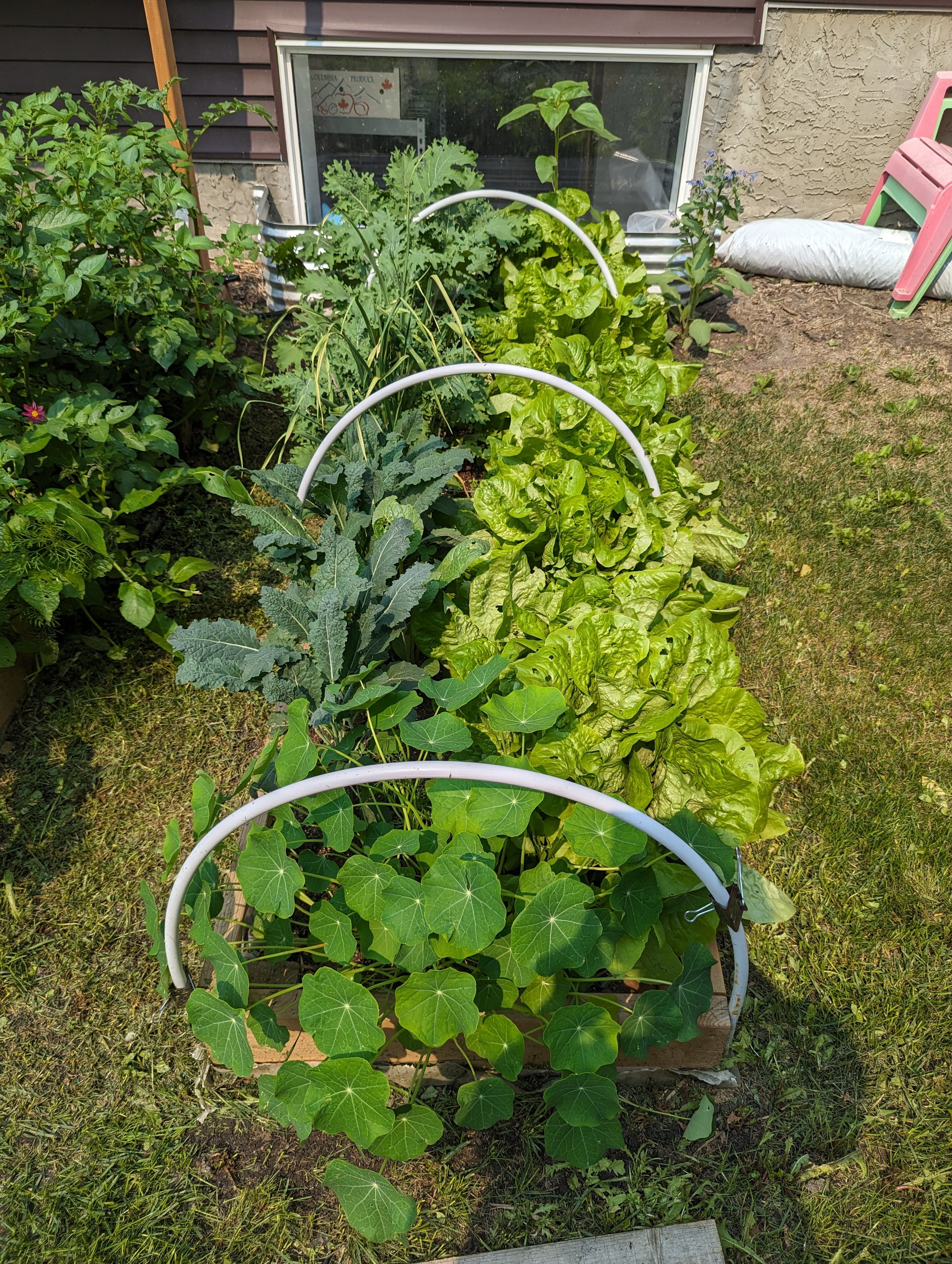
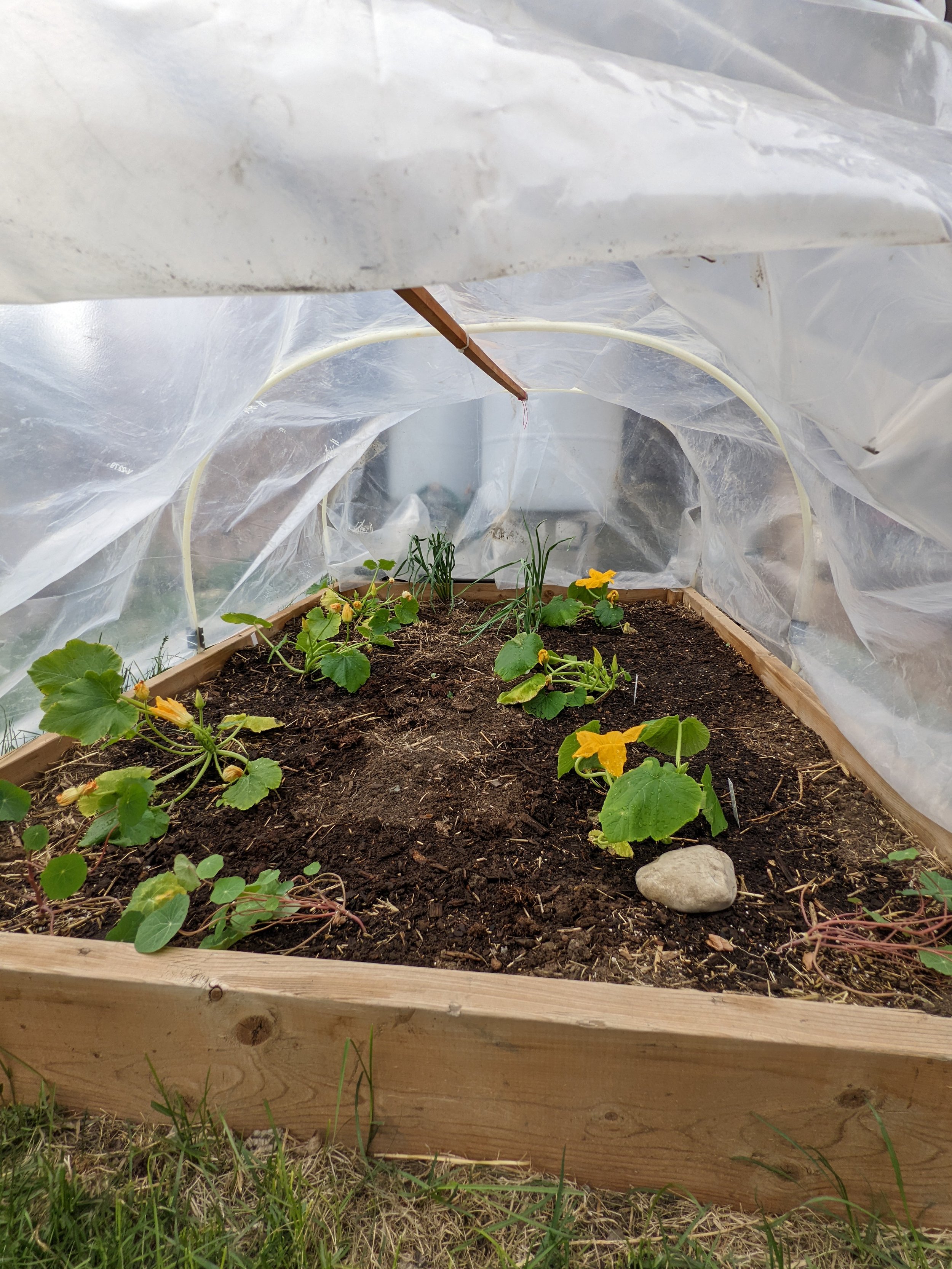
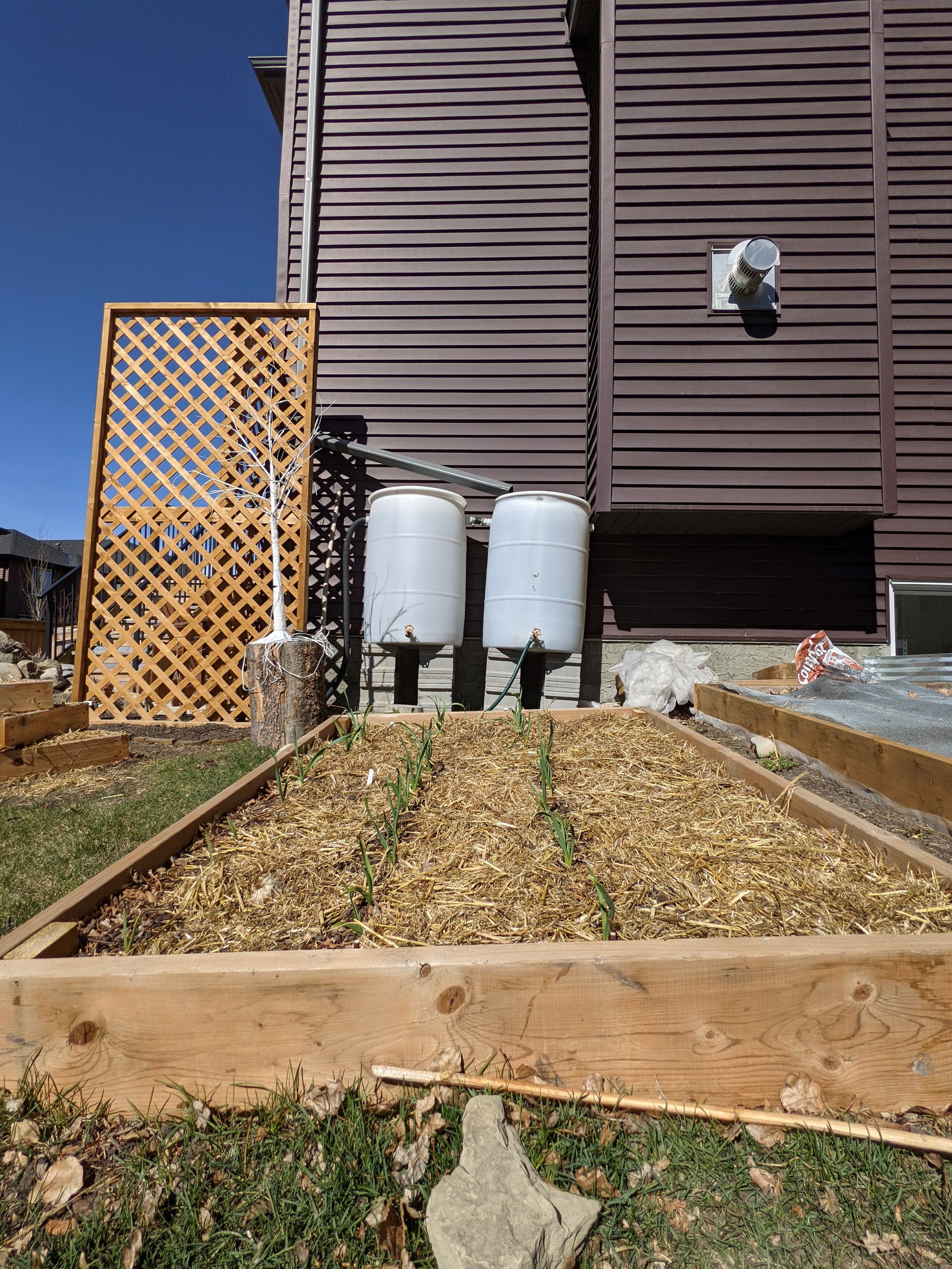
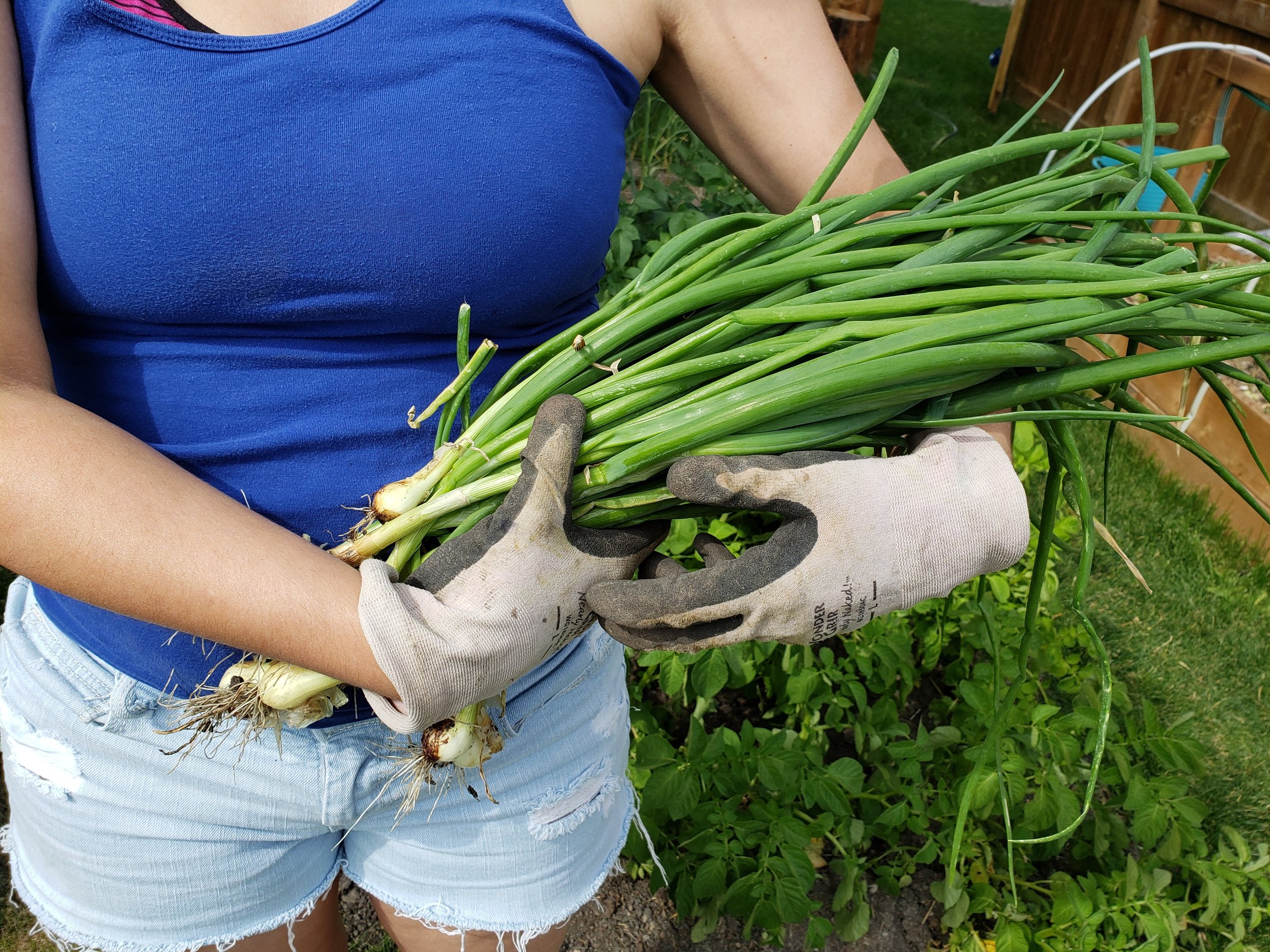

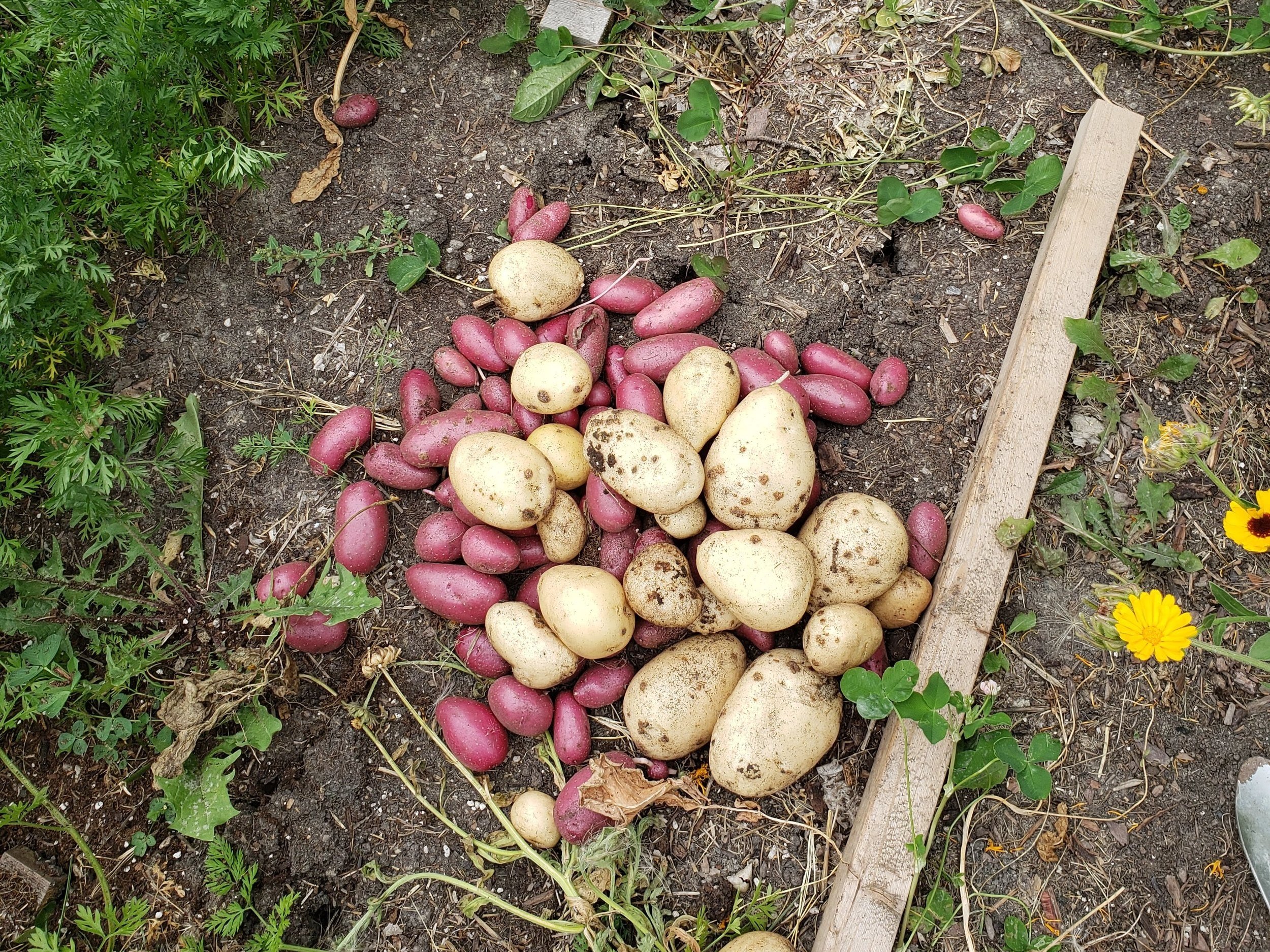
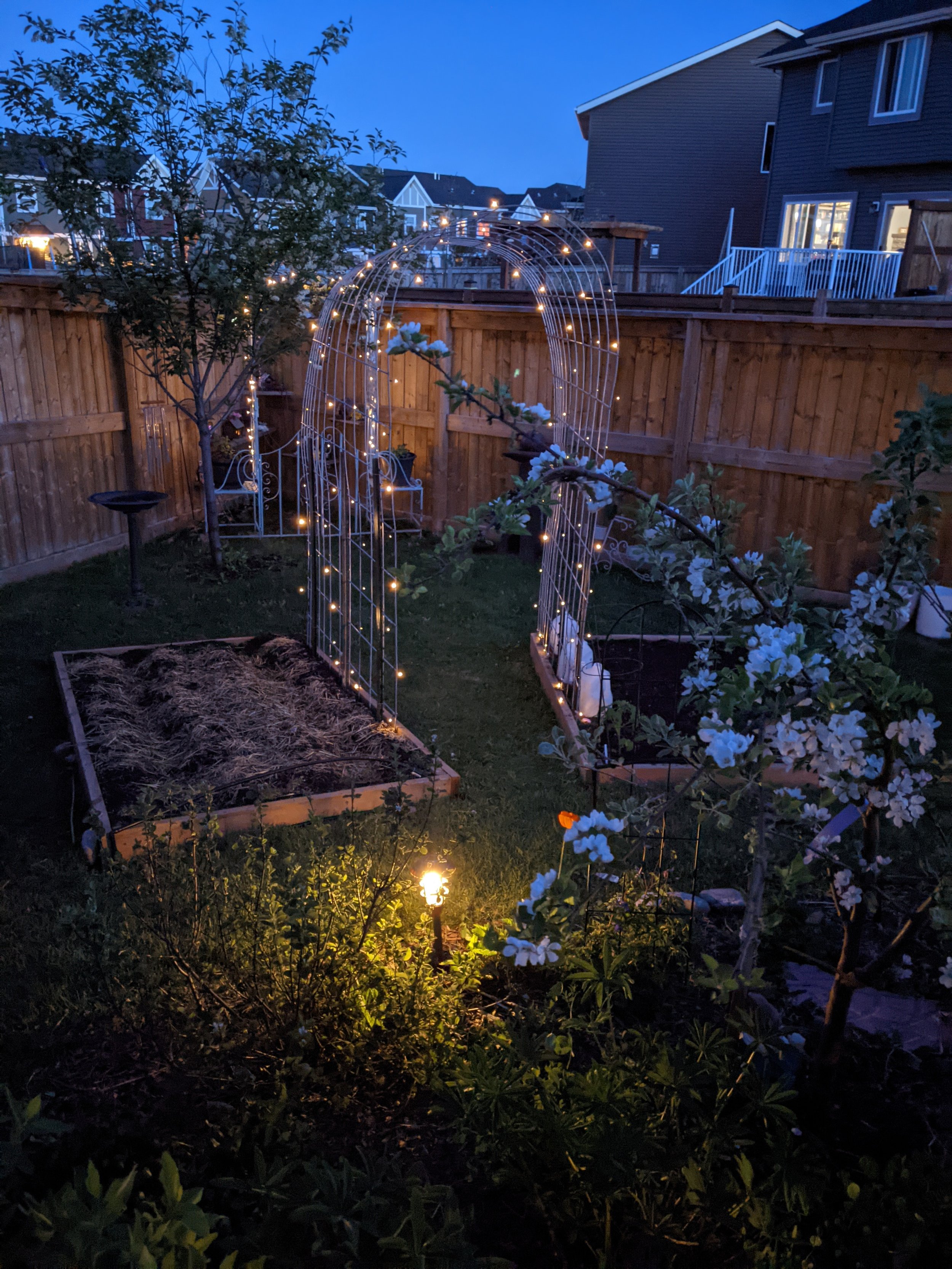
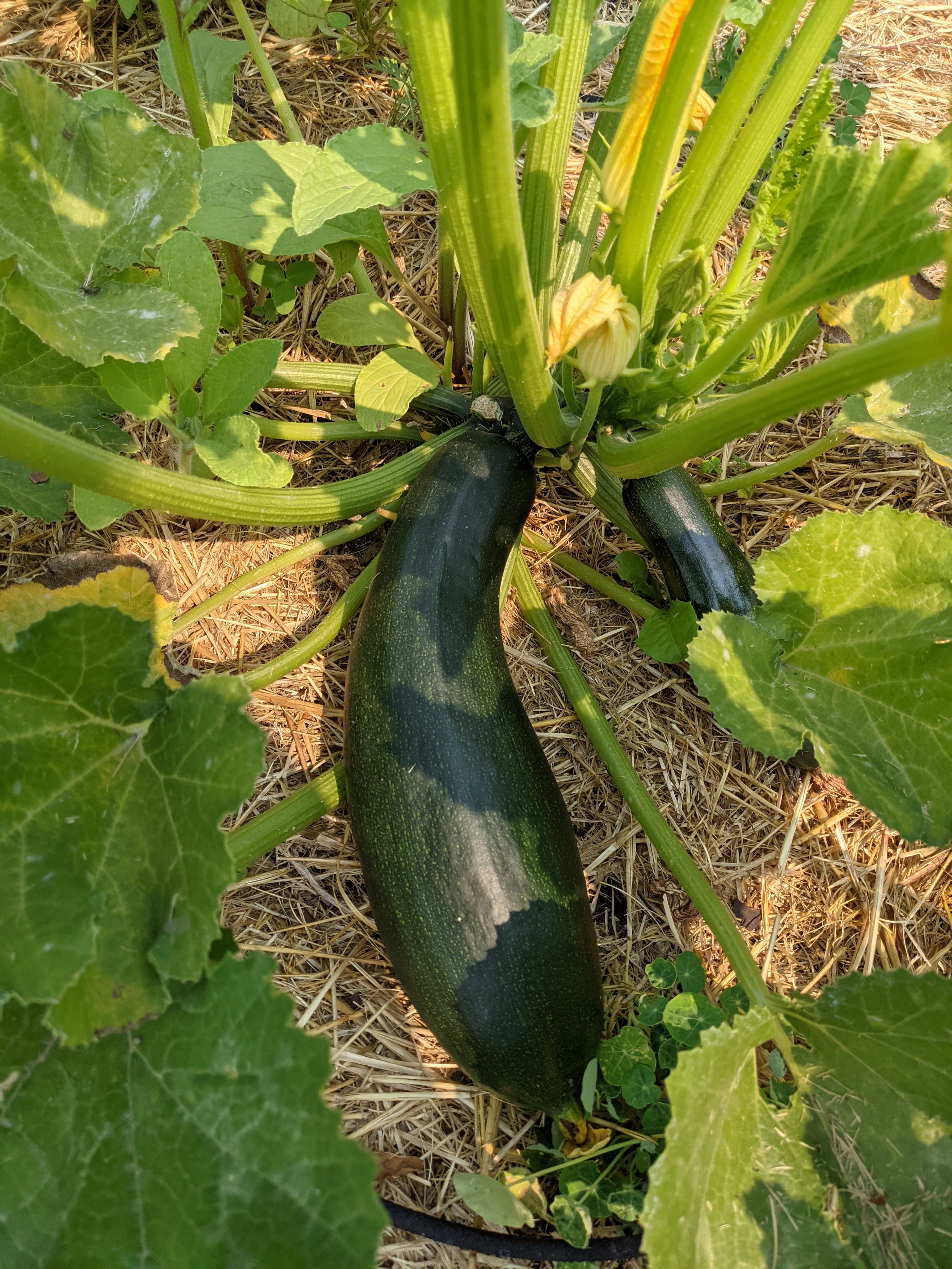
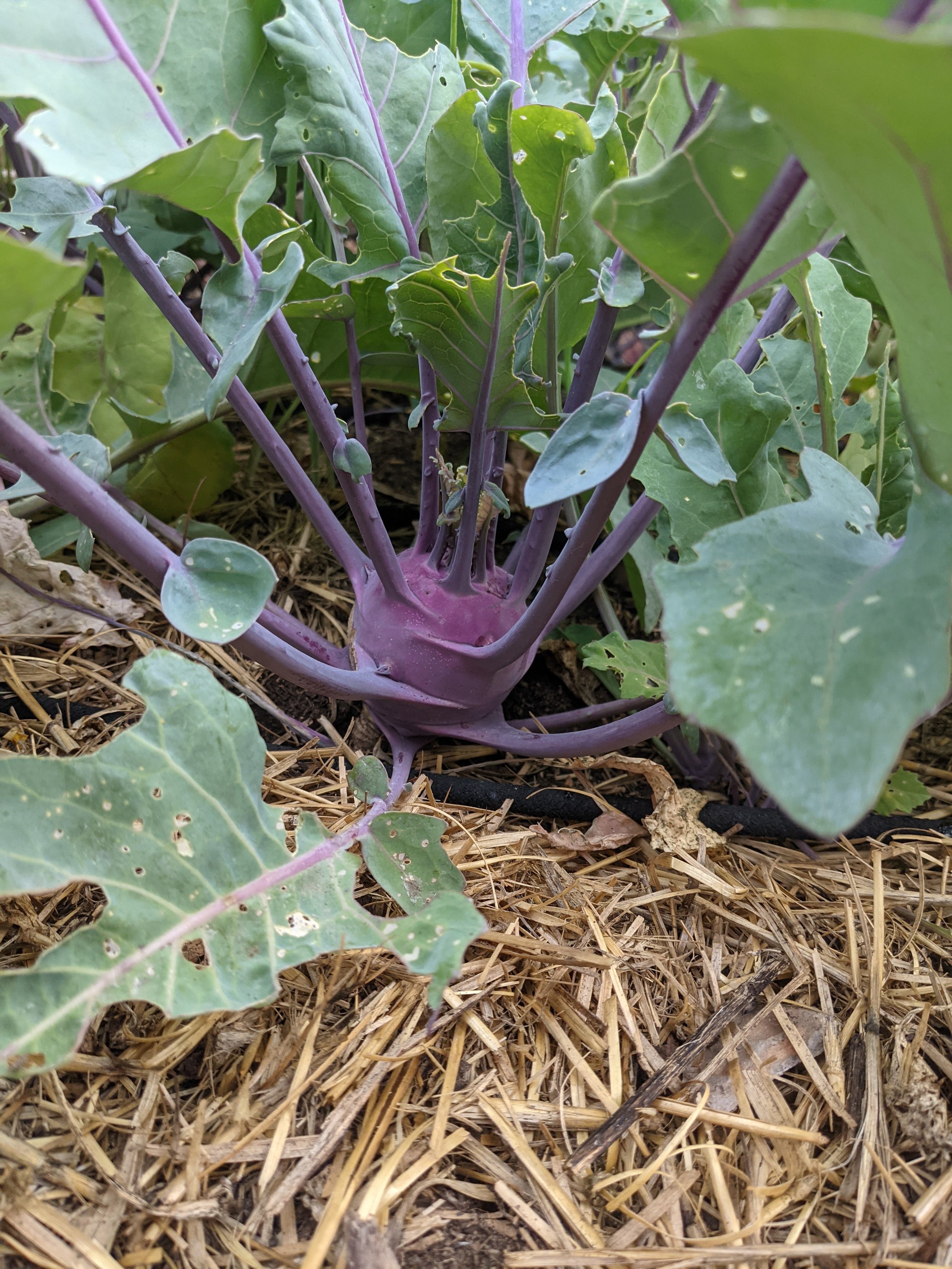

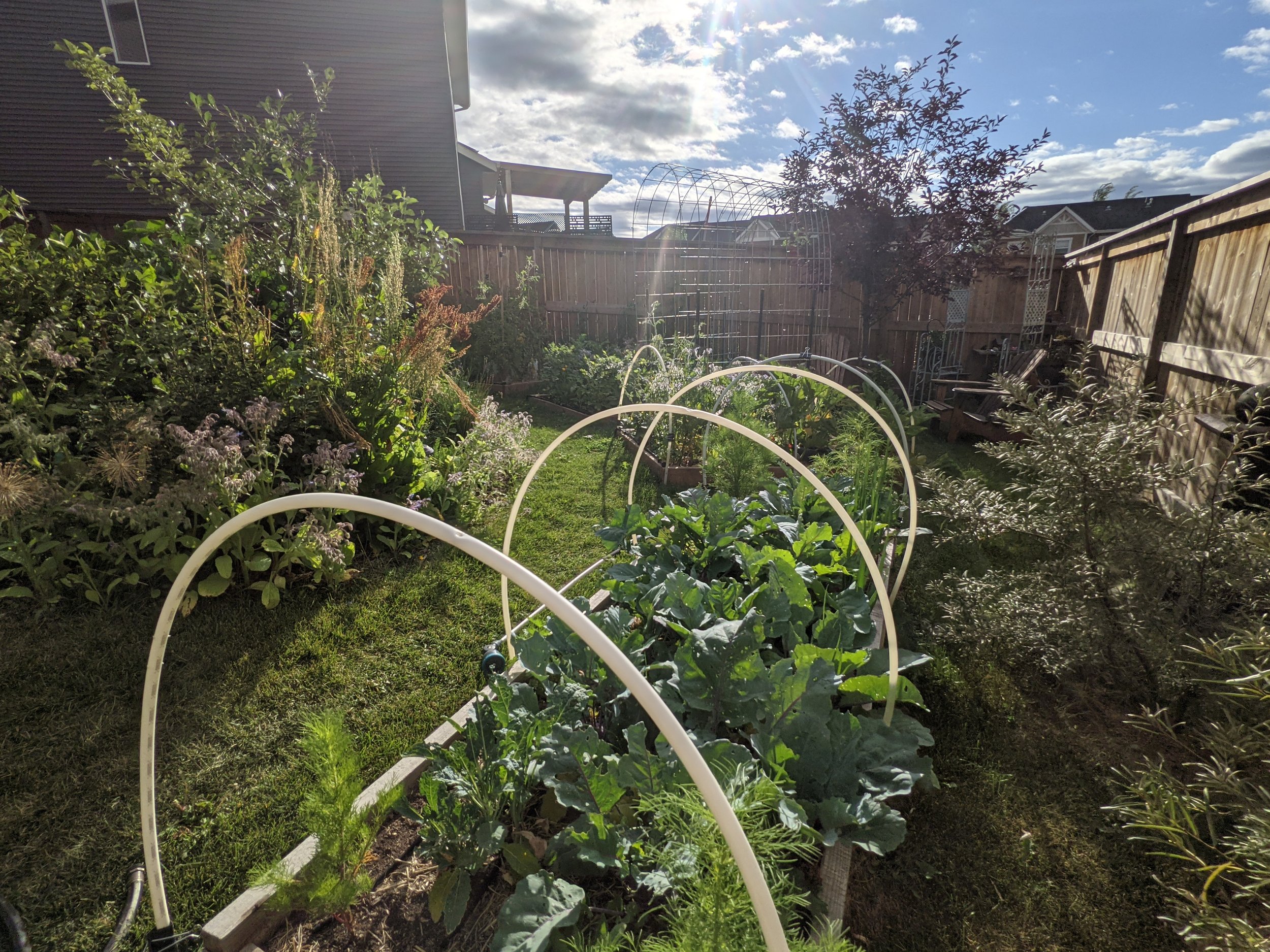
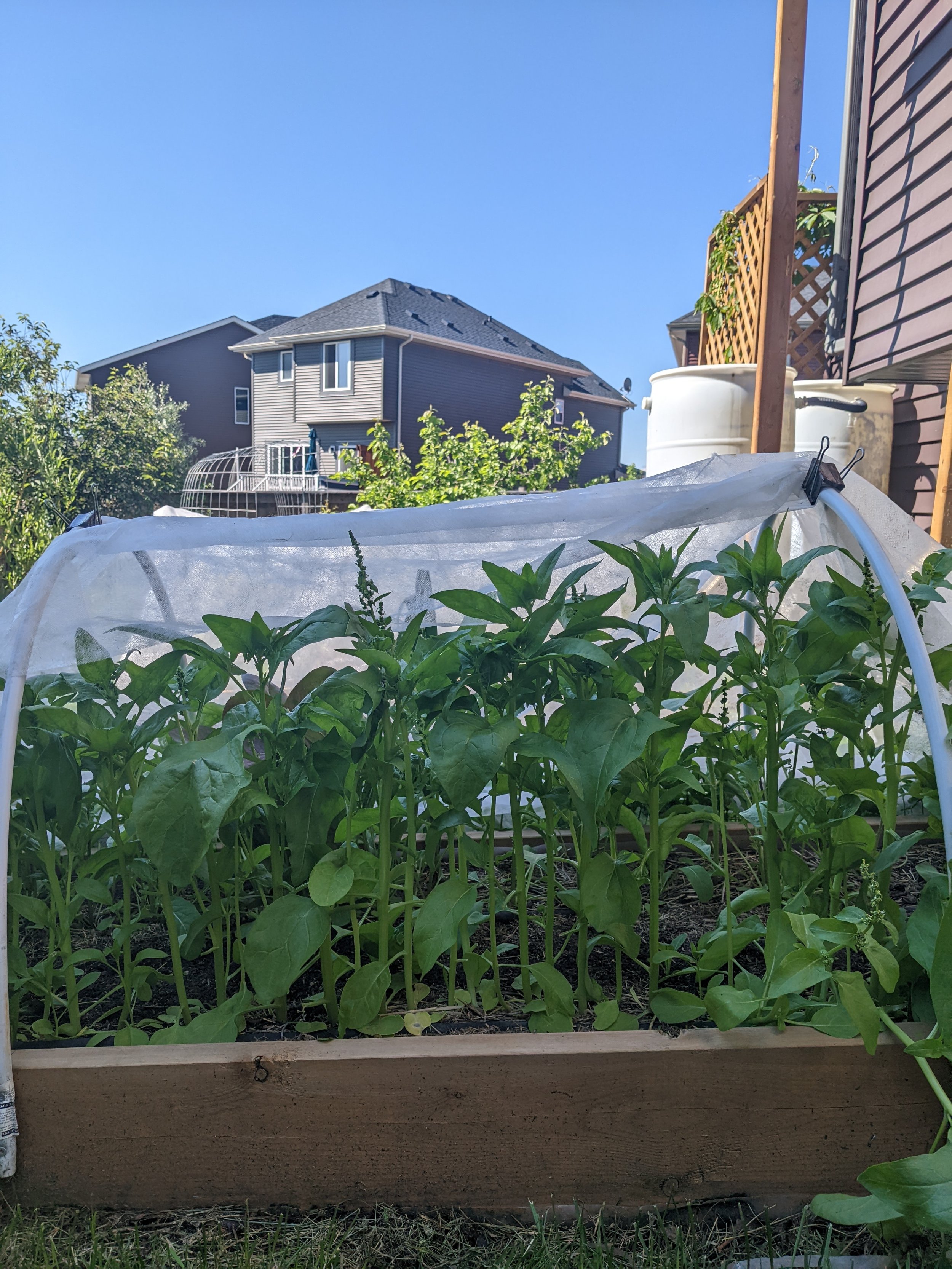
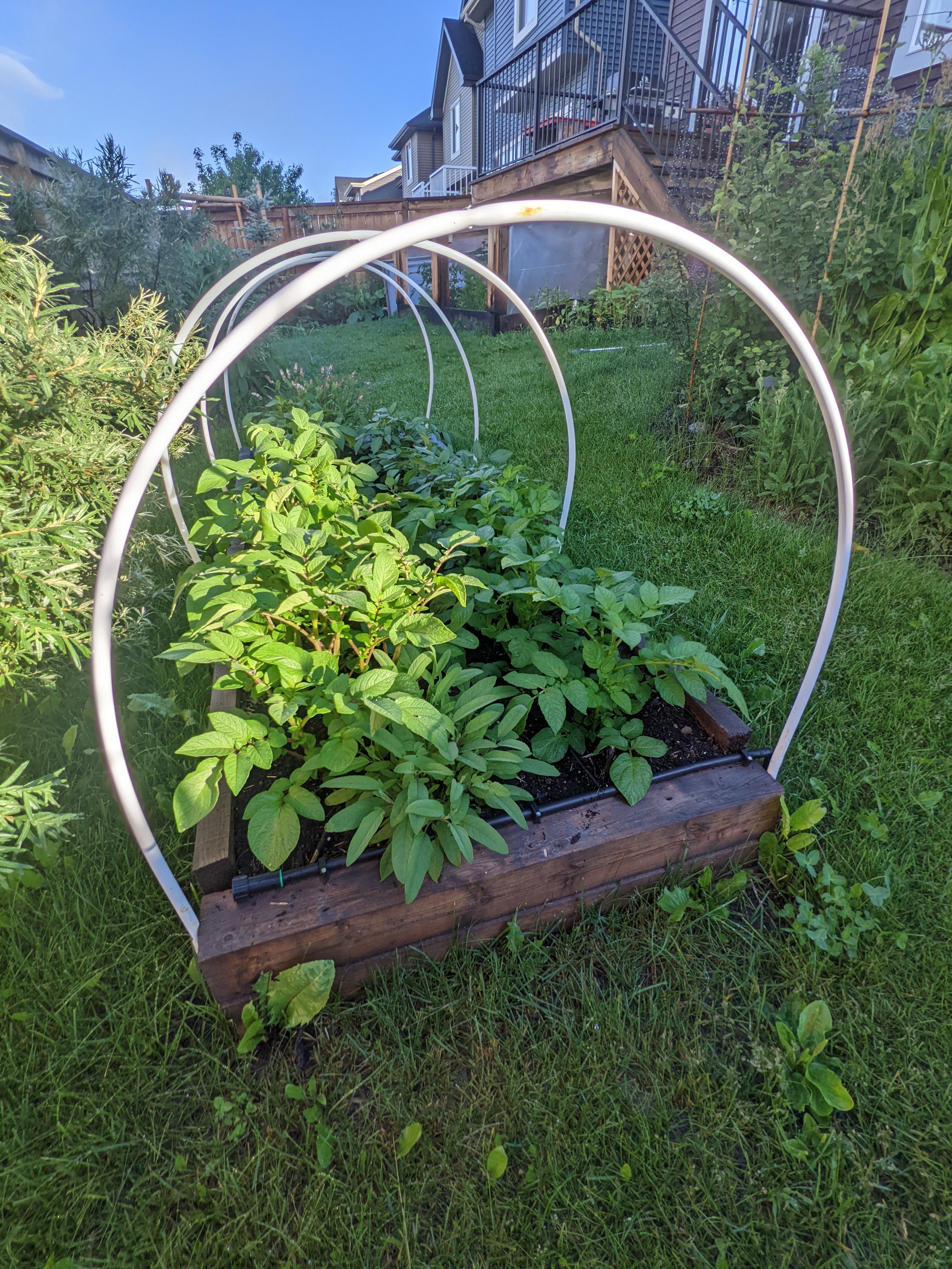
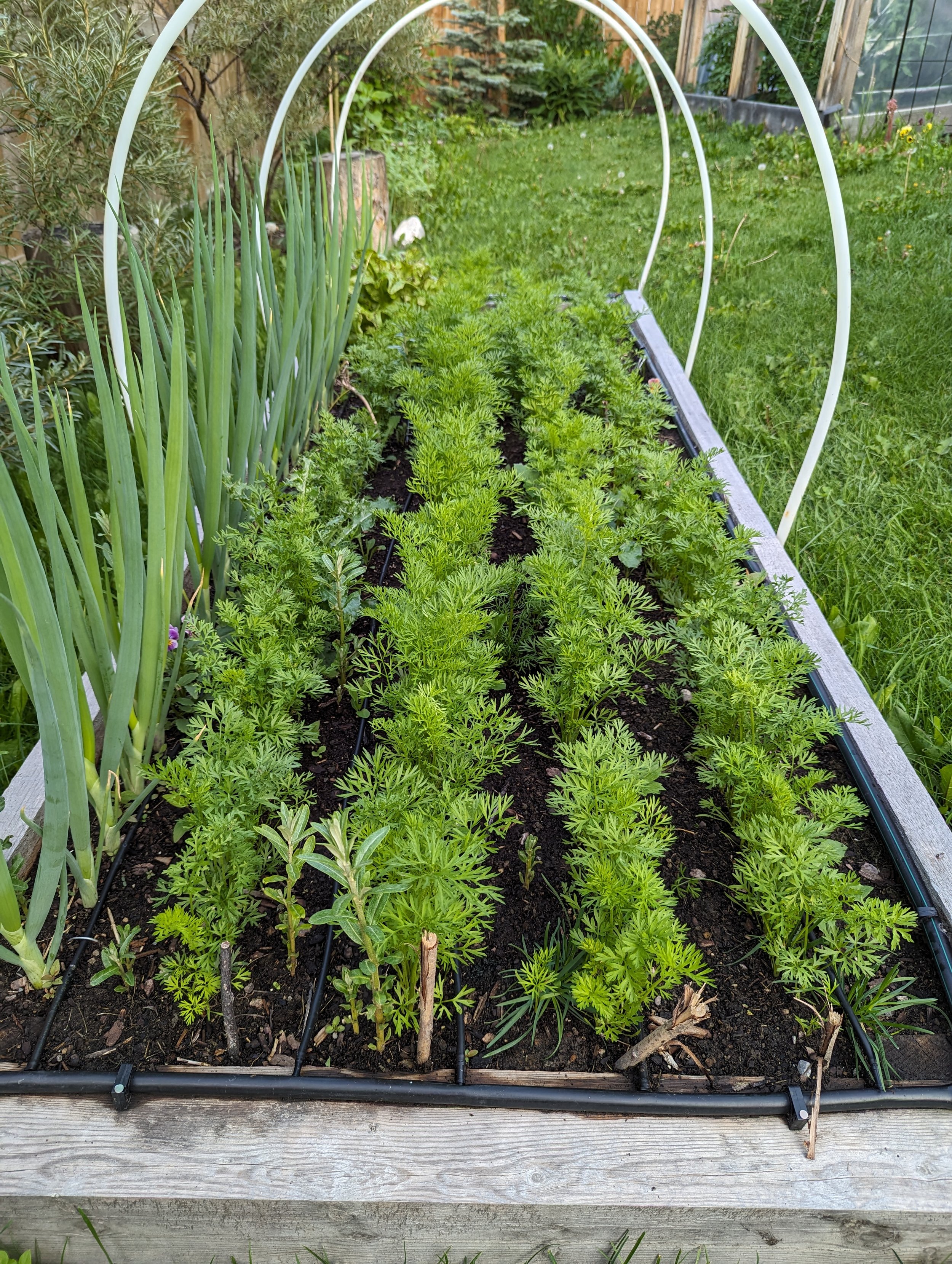
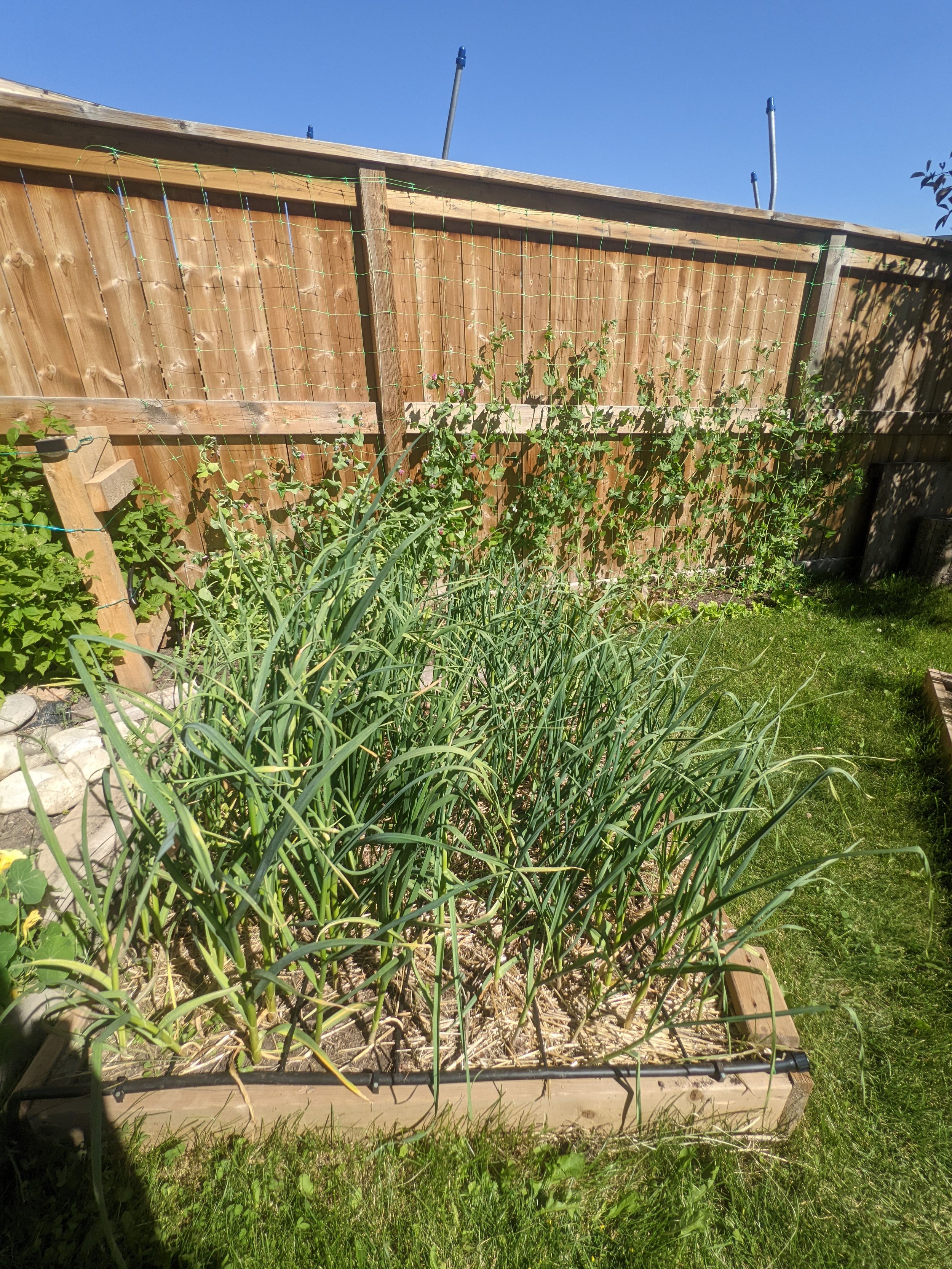
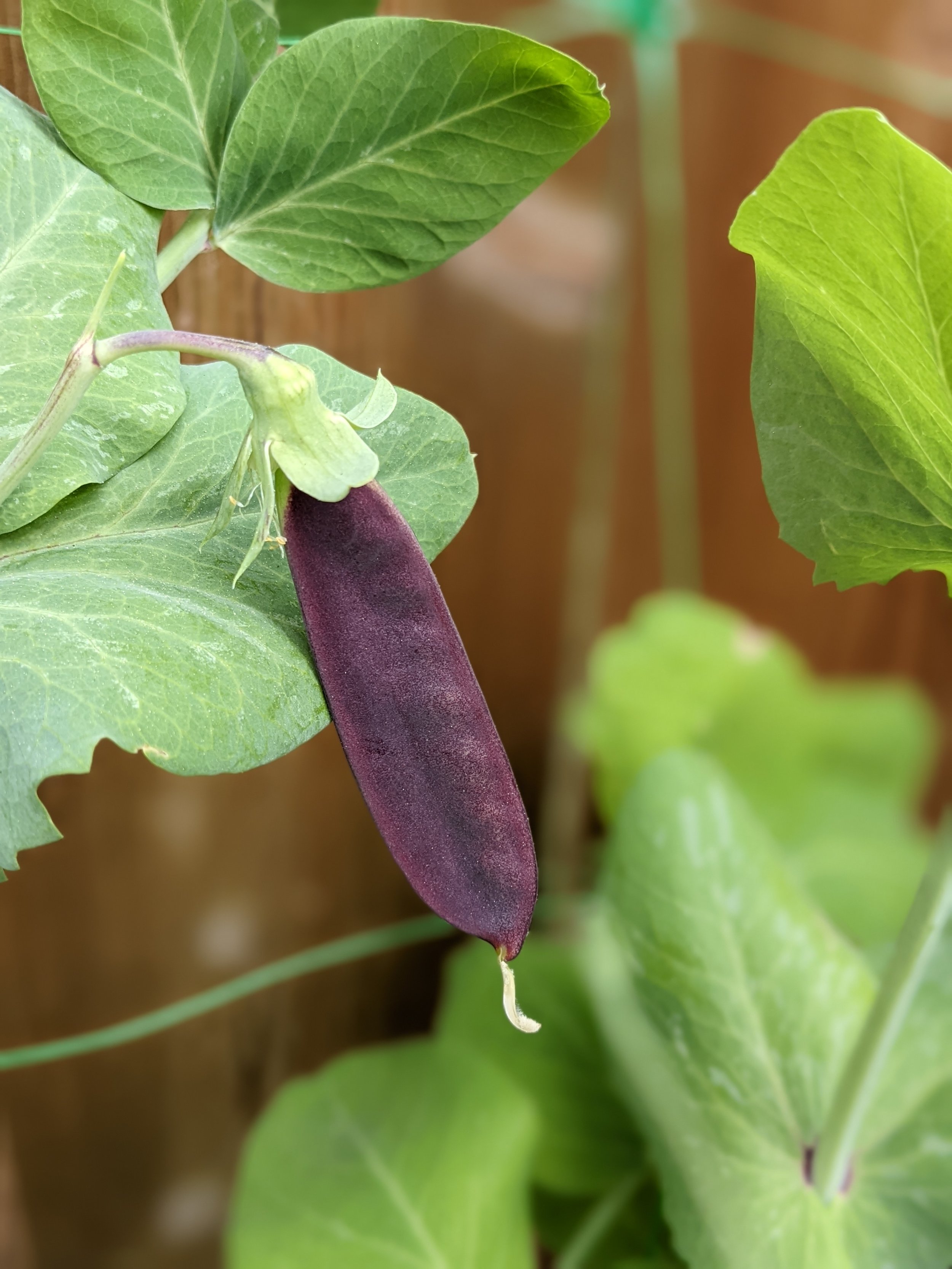
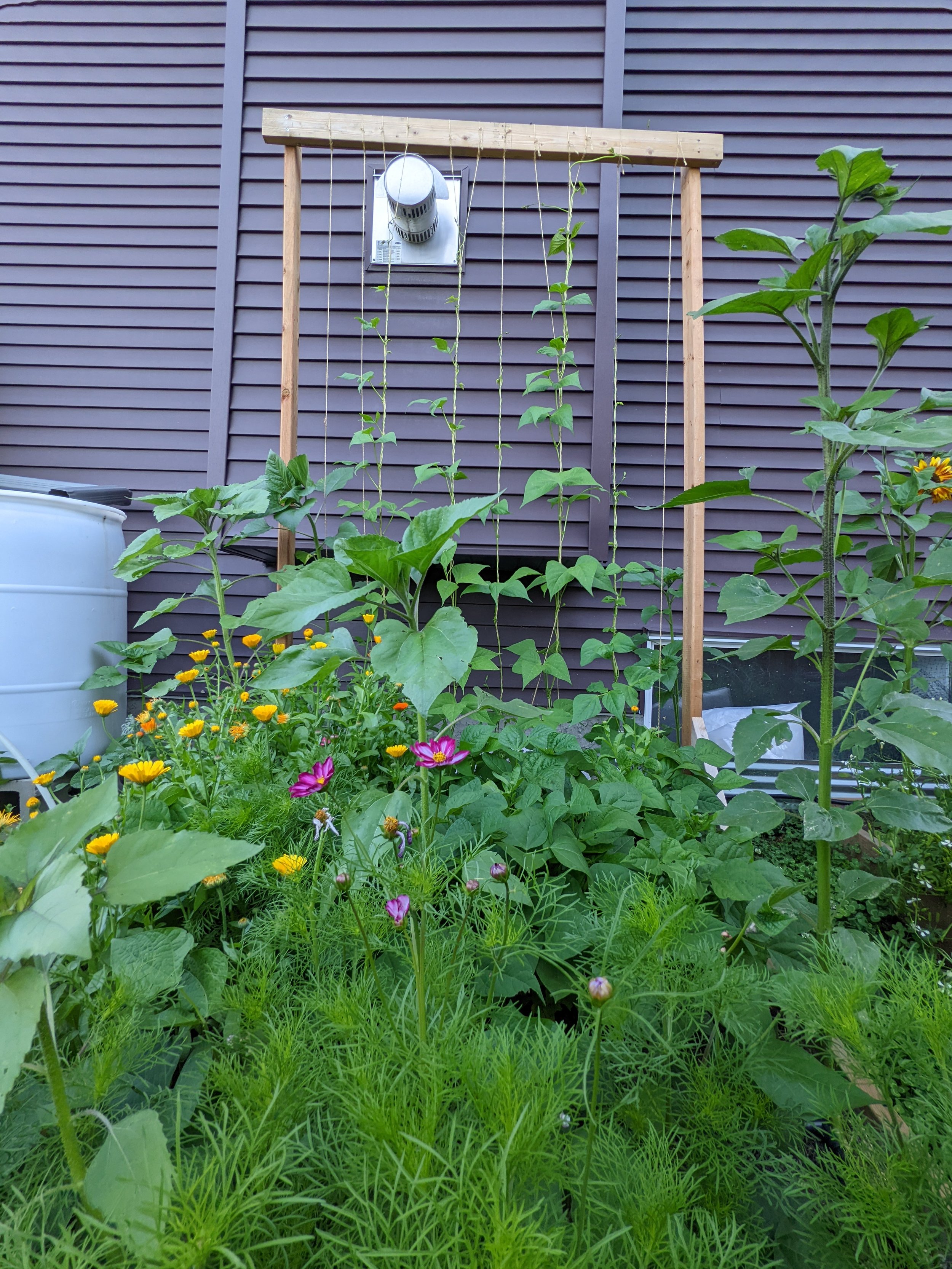
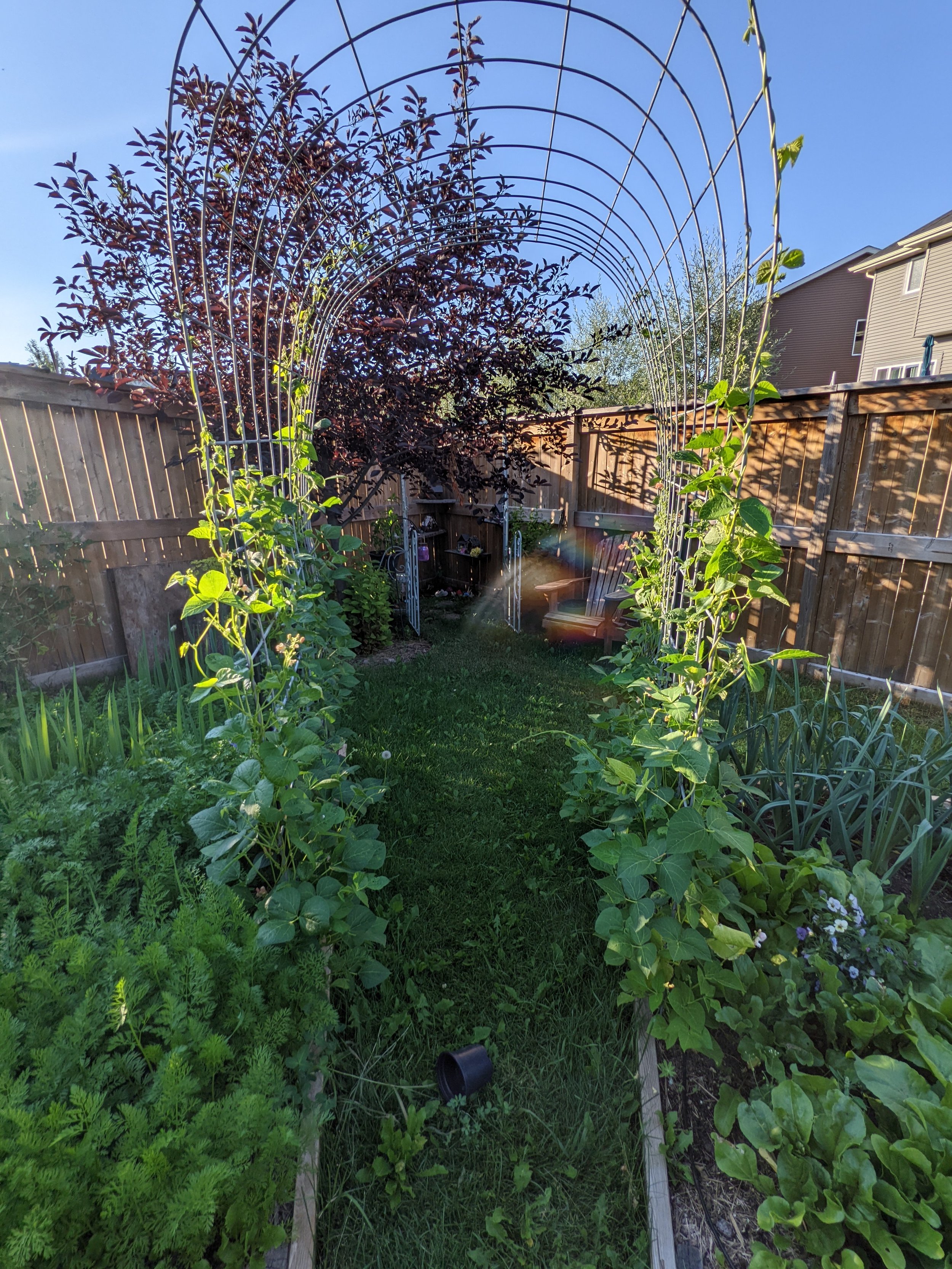
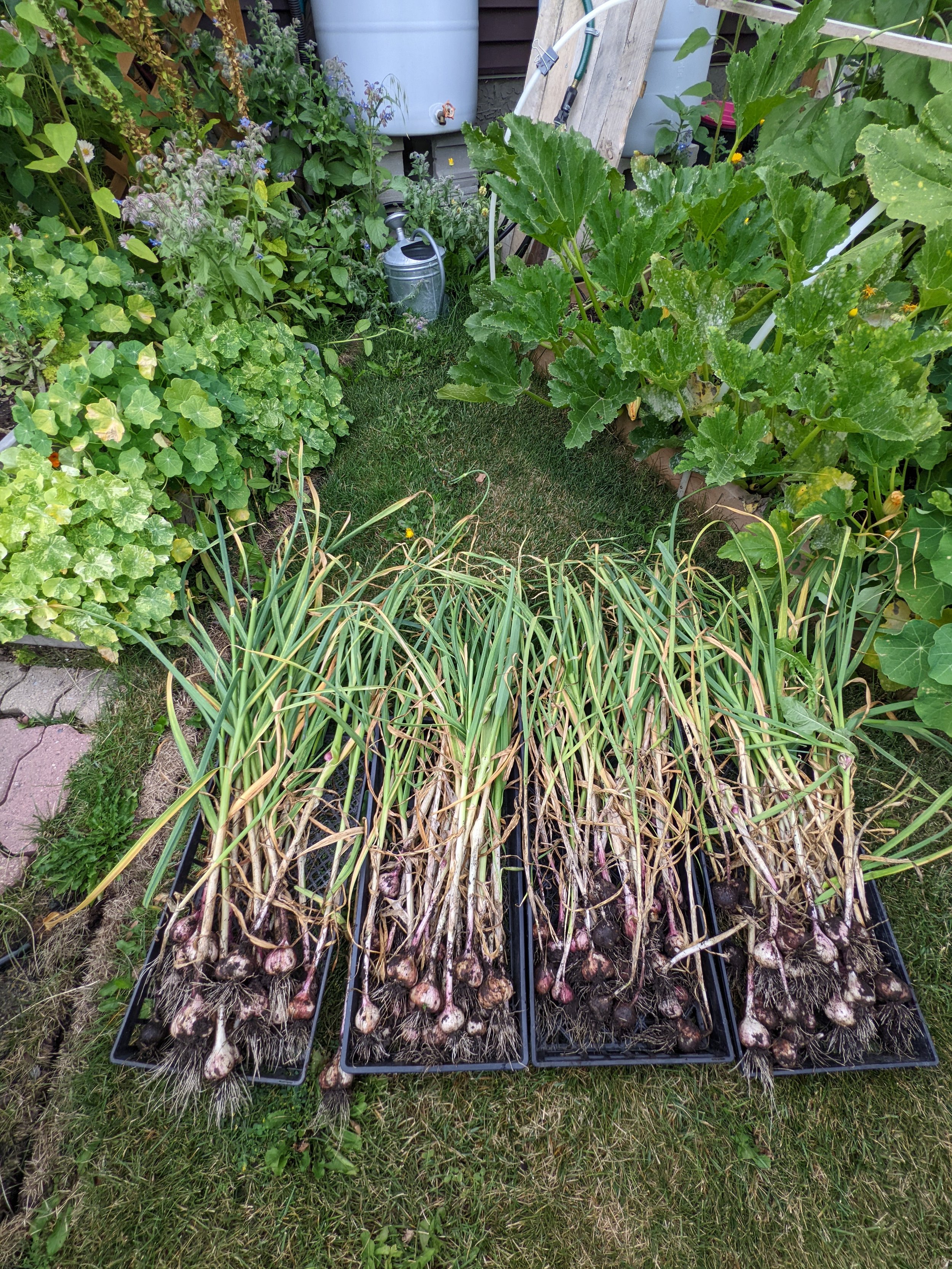
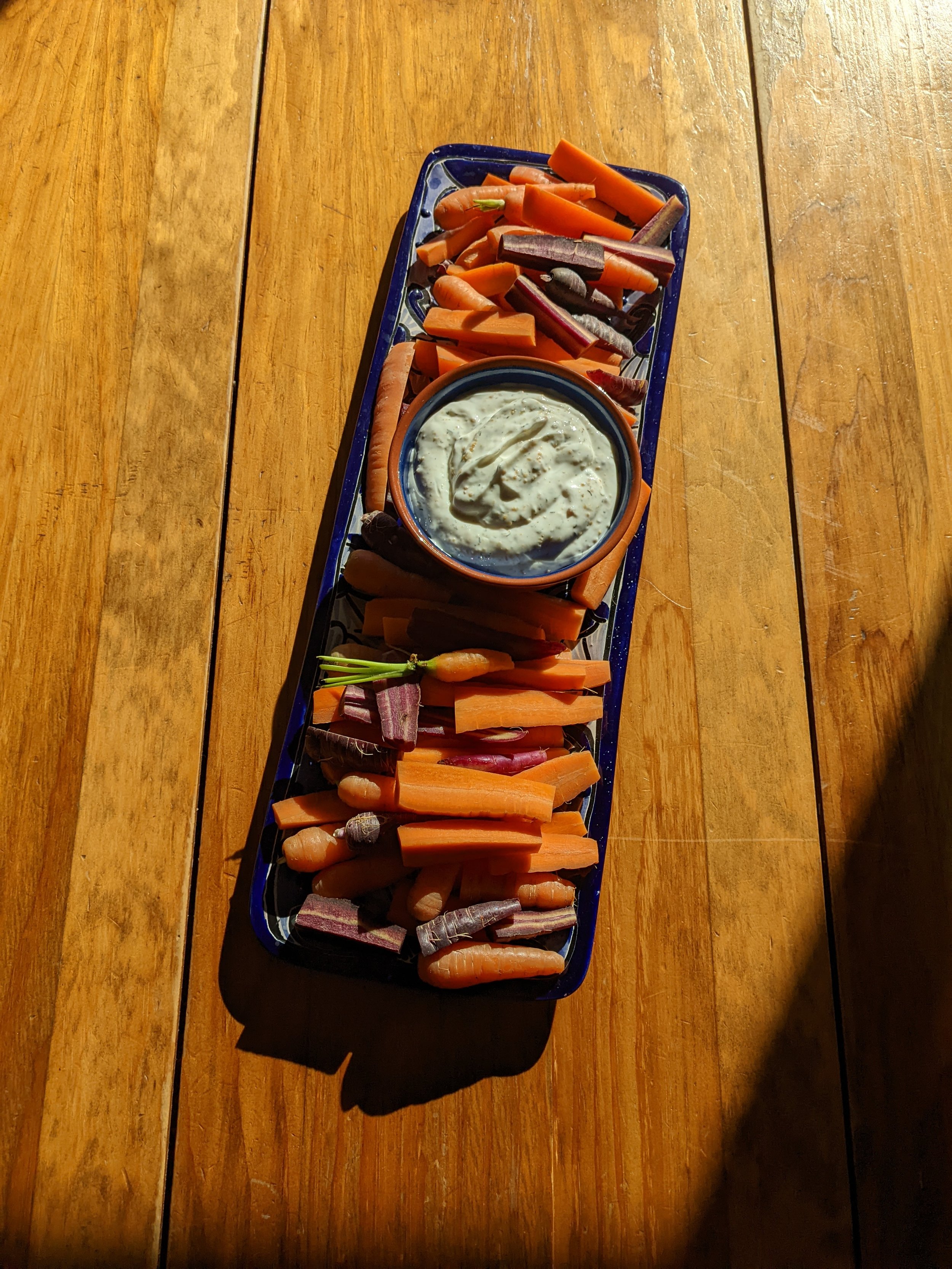
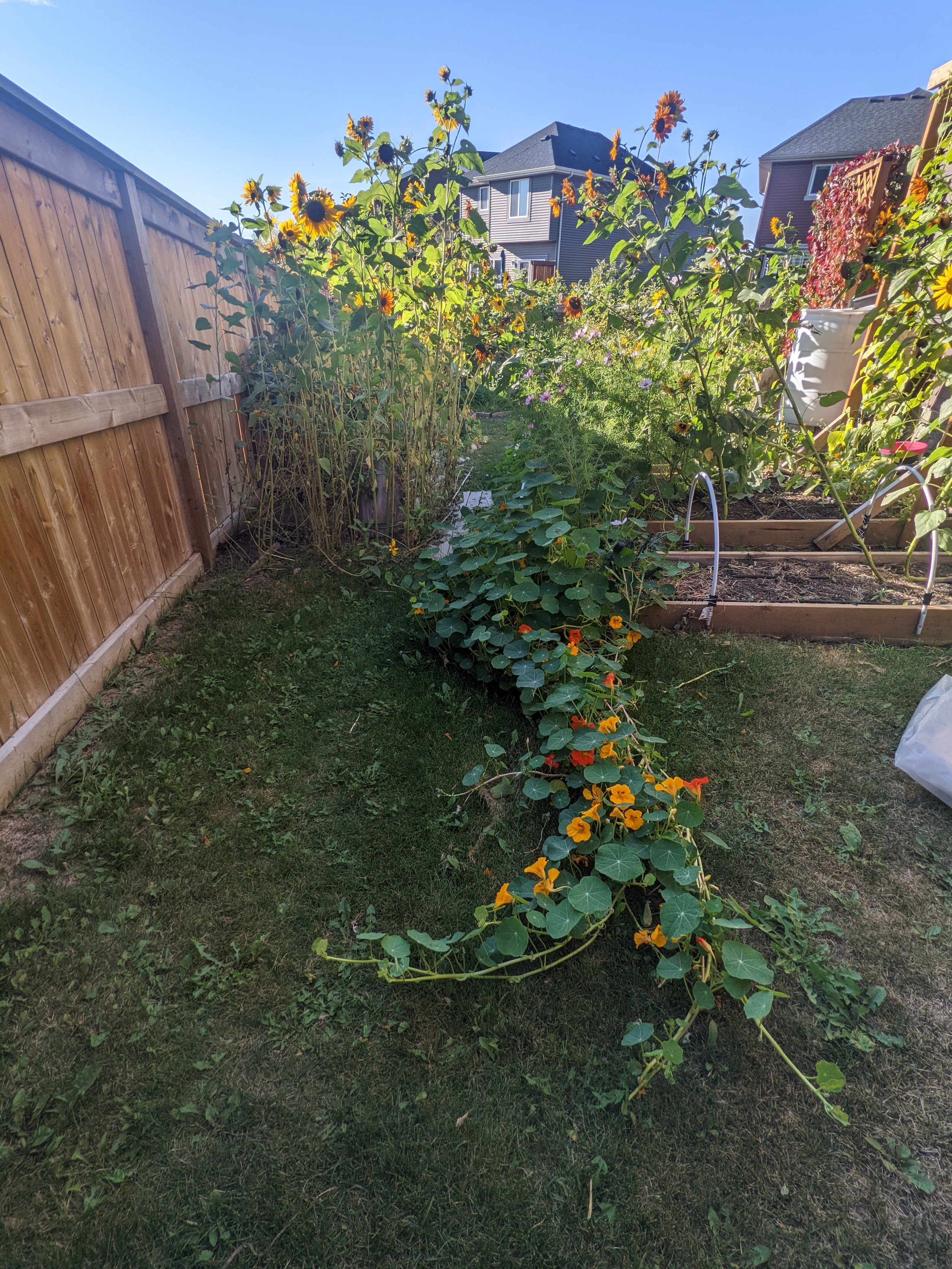
2019
The Tomato Cottage
We have significant wind in our yard, and the only way we succeed with tomatoes is by protecting them from that wind. The tomato cottage is a 12’ x 5’ custom-designed cold frame with a removable top and front panels. In the early growing season, we keep the top panels on (it protects from hail, too), and the front panels get taken on and off to allow for ventilation. Once the tomatoes really start to grow, all of the panels come off.
What we grow: Tomatoes, tomatoes, tomatoes. My favourite varieties are sweet millions, black krim, and Sakura. Have I had issues because I don’t rotate this crop? No. Not yet.
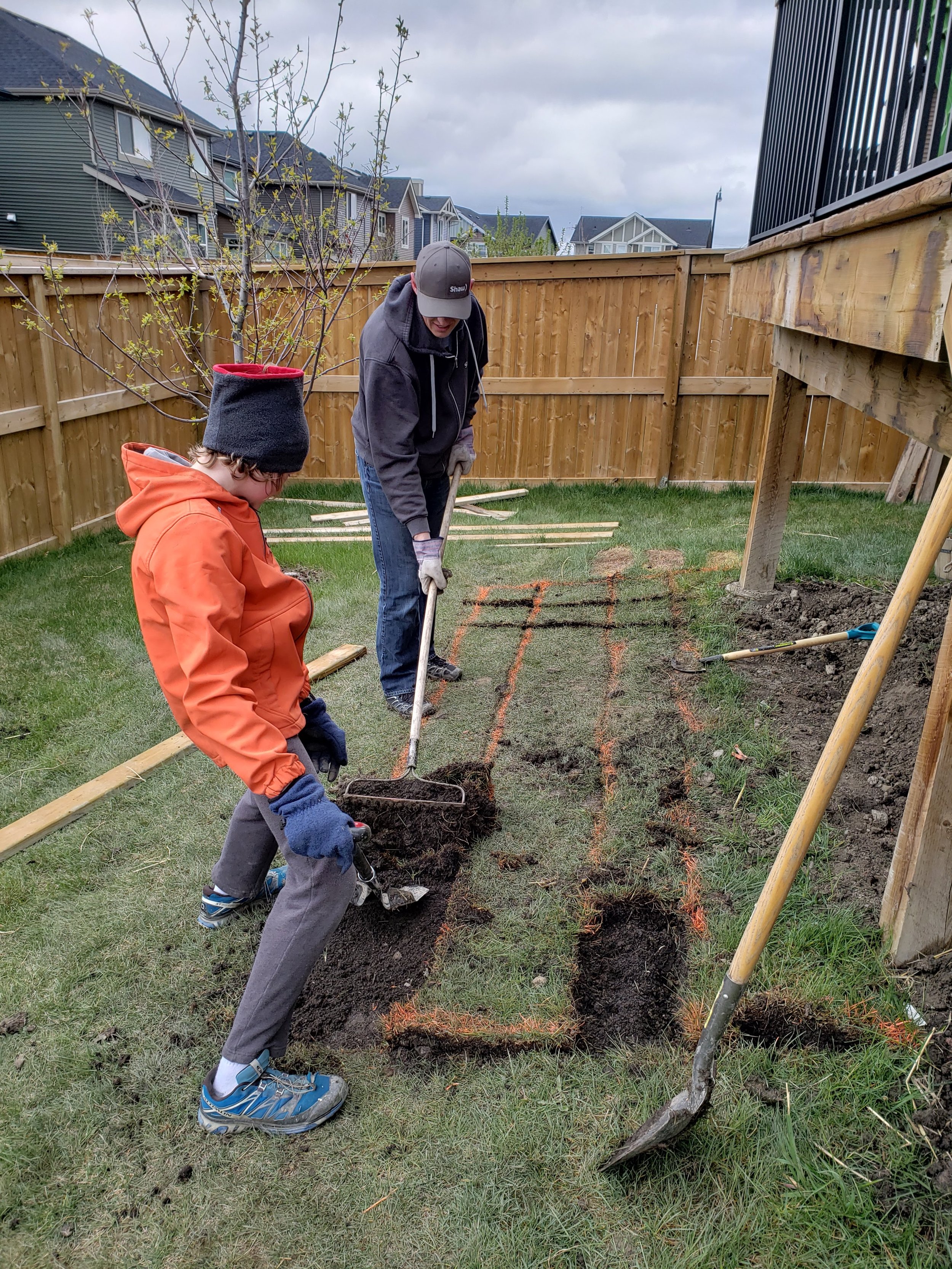
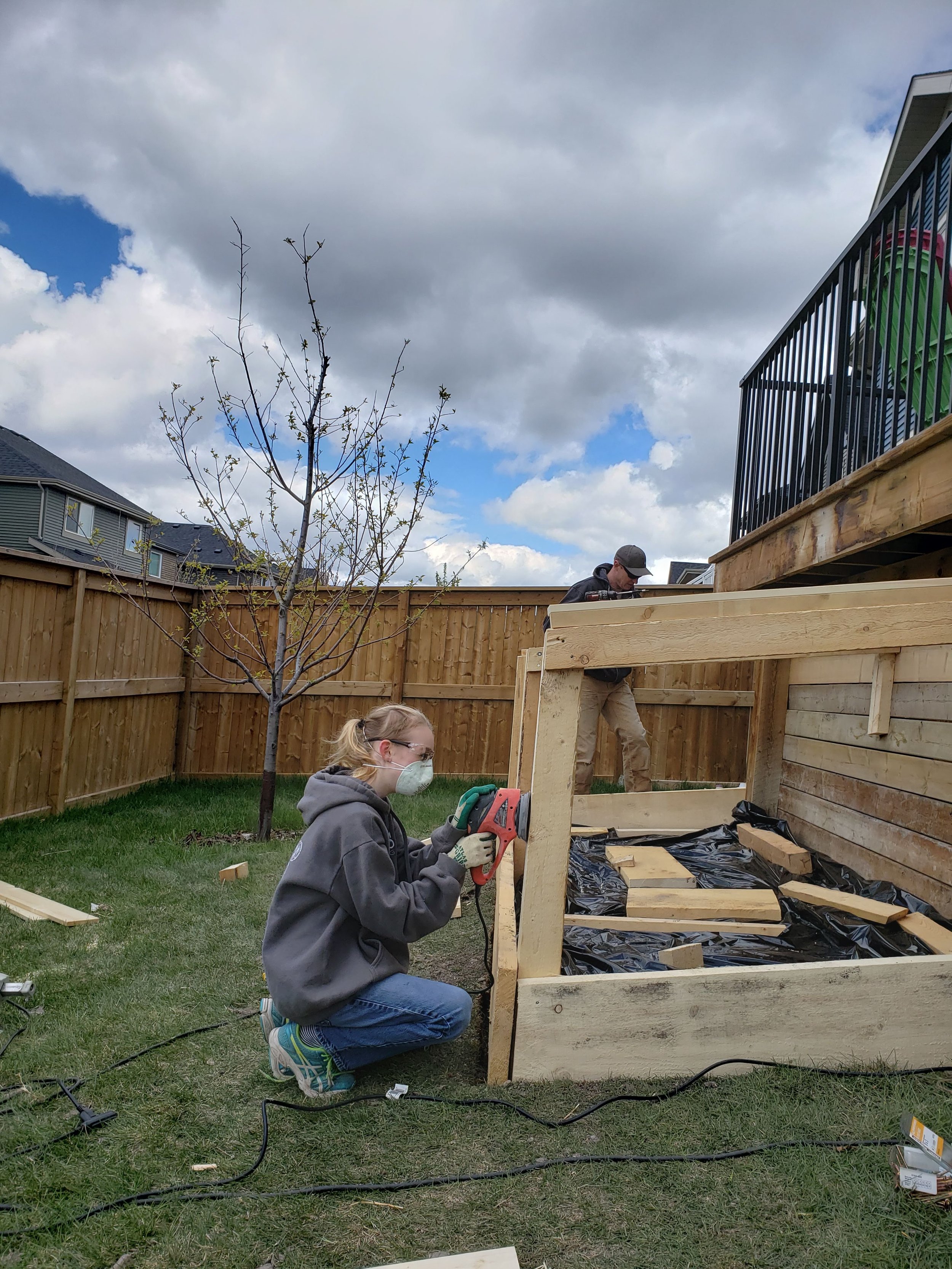

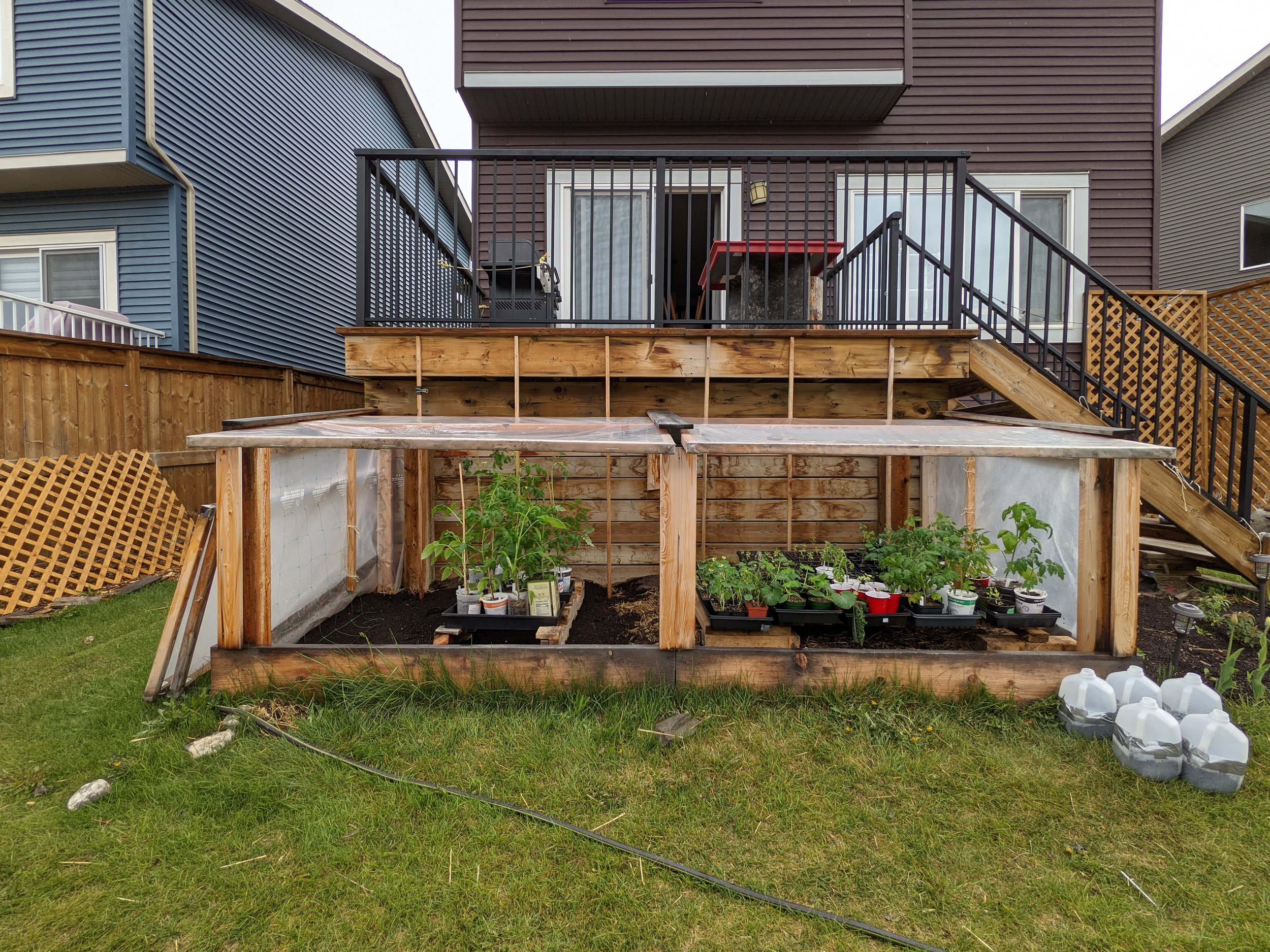
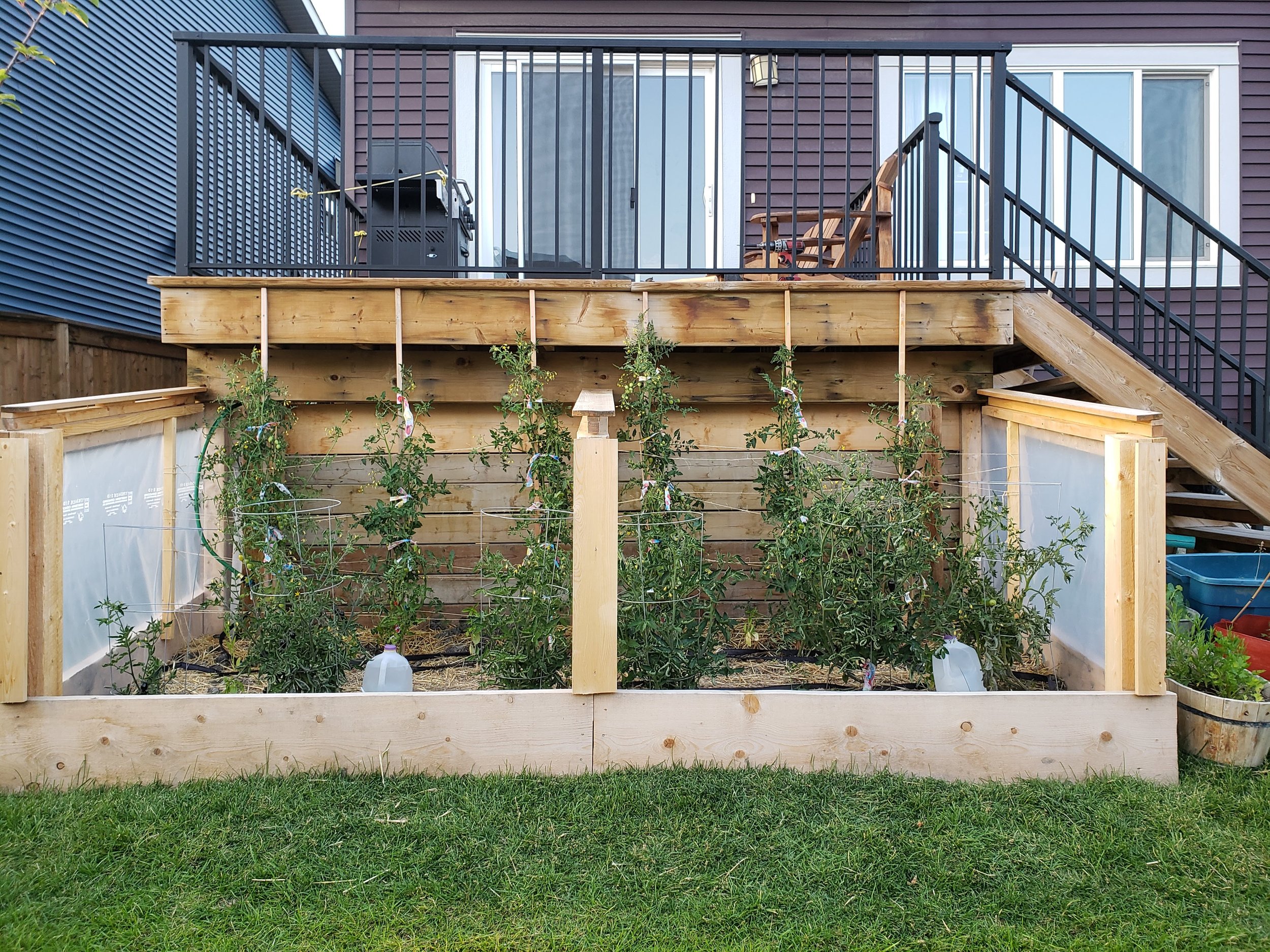
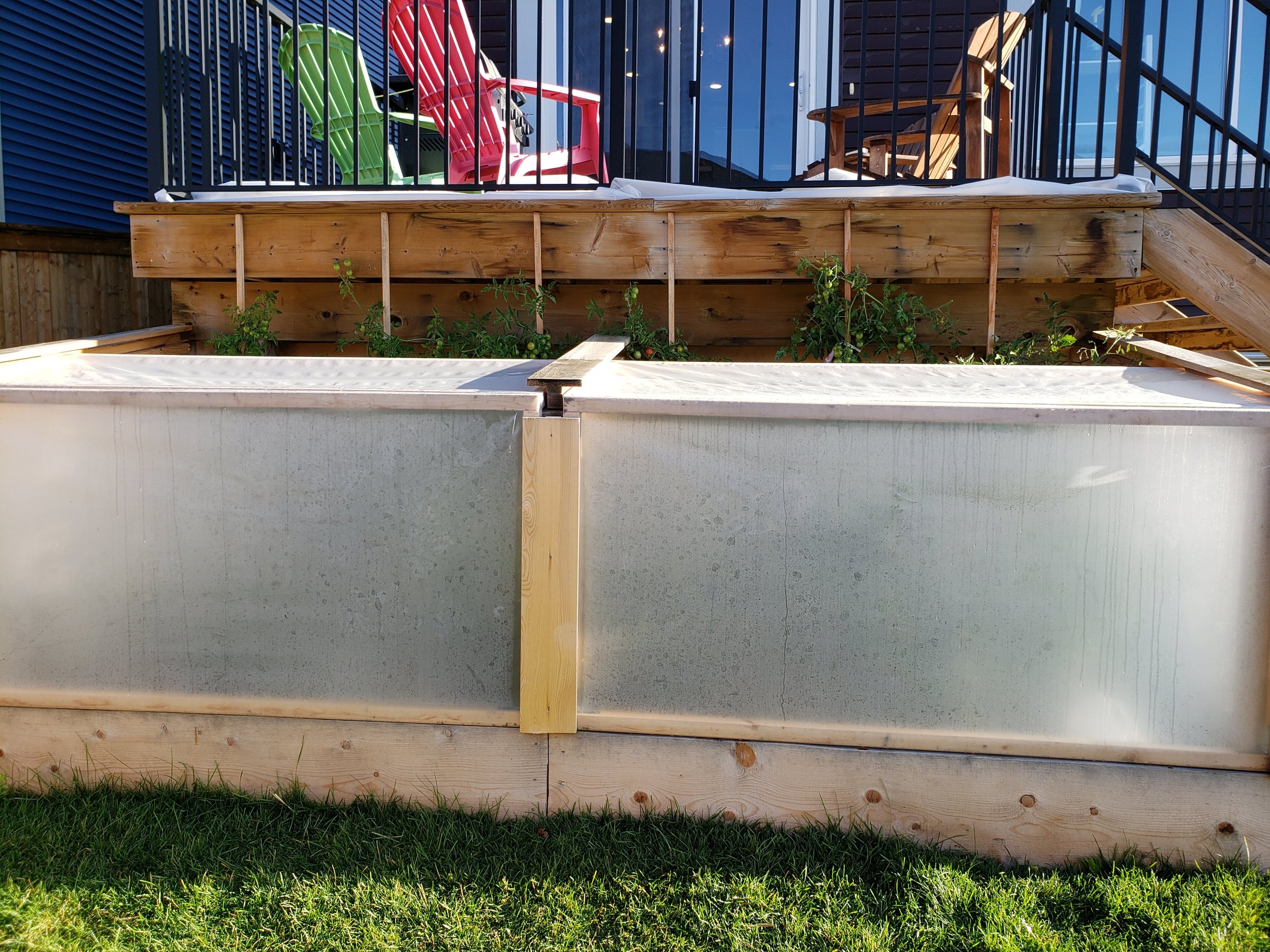
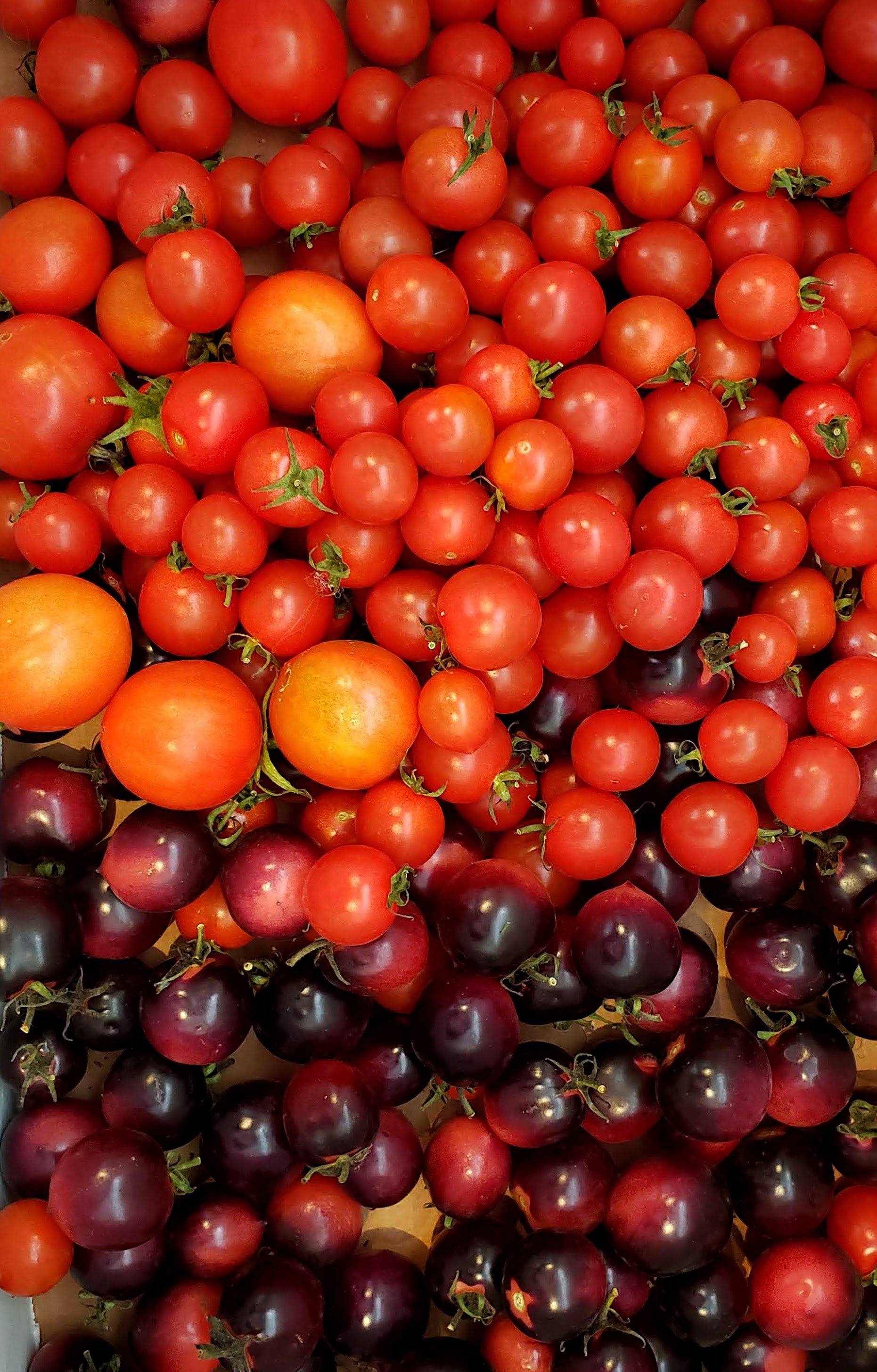
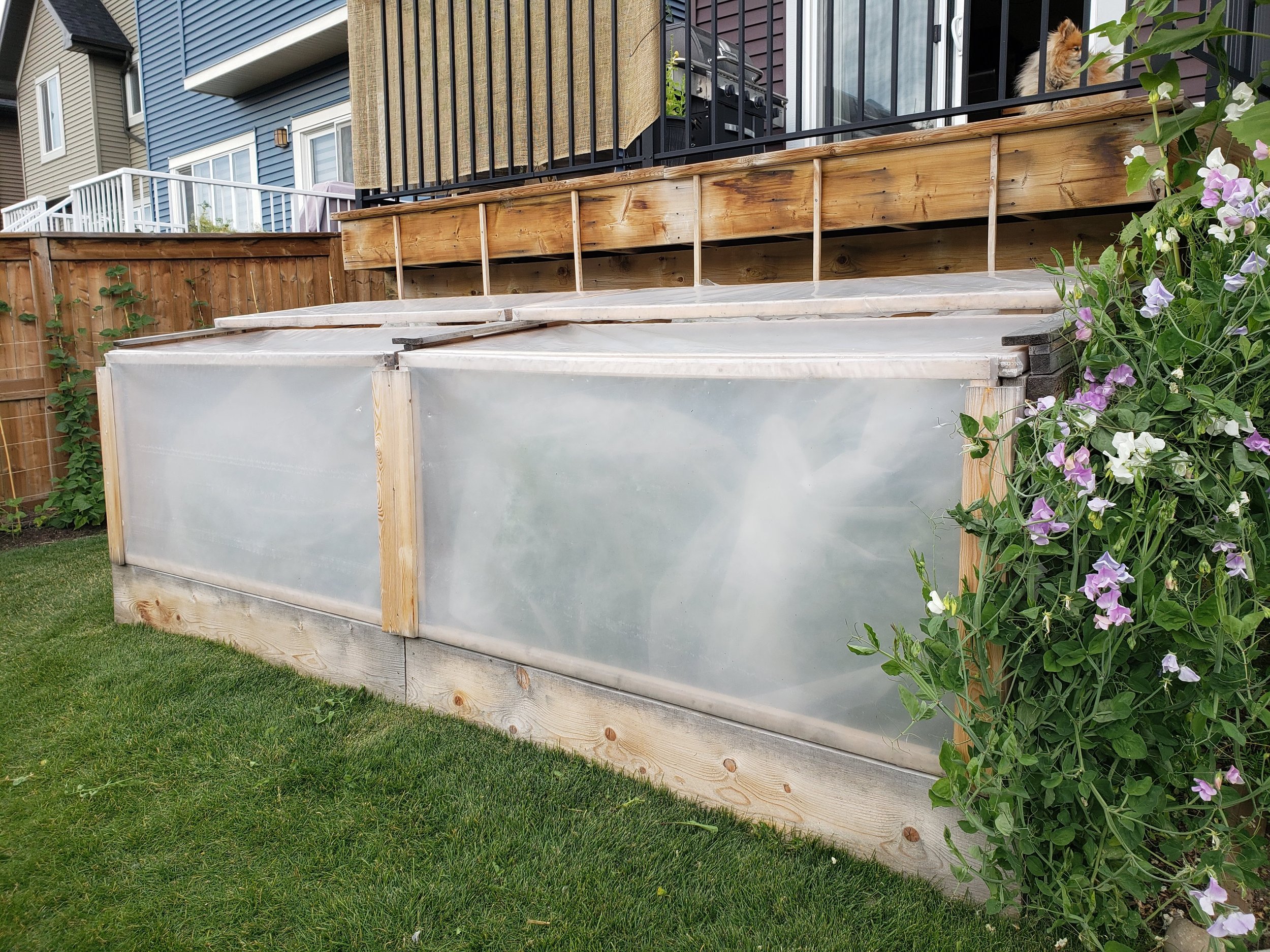
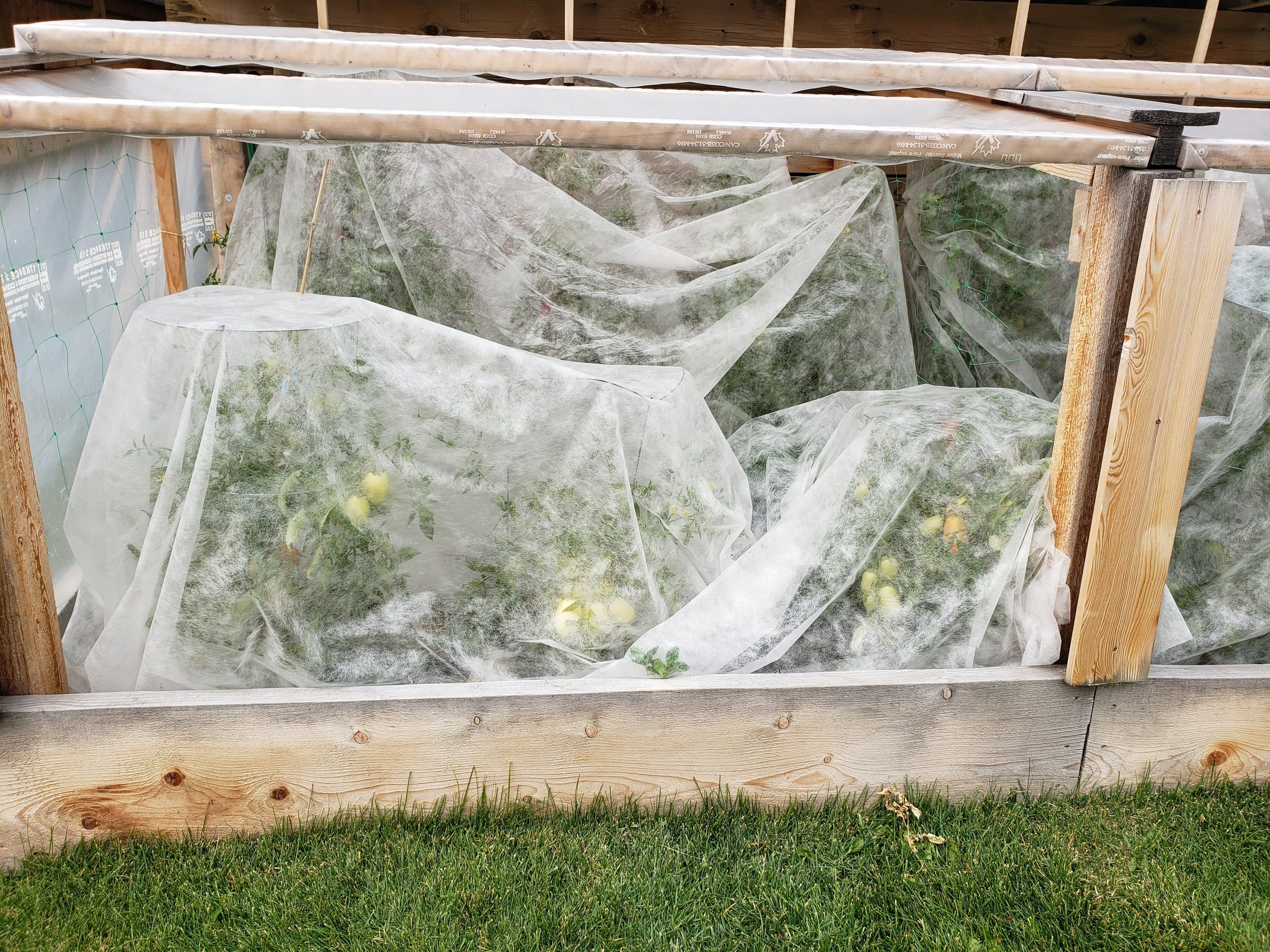
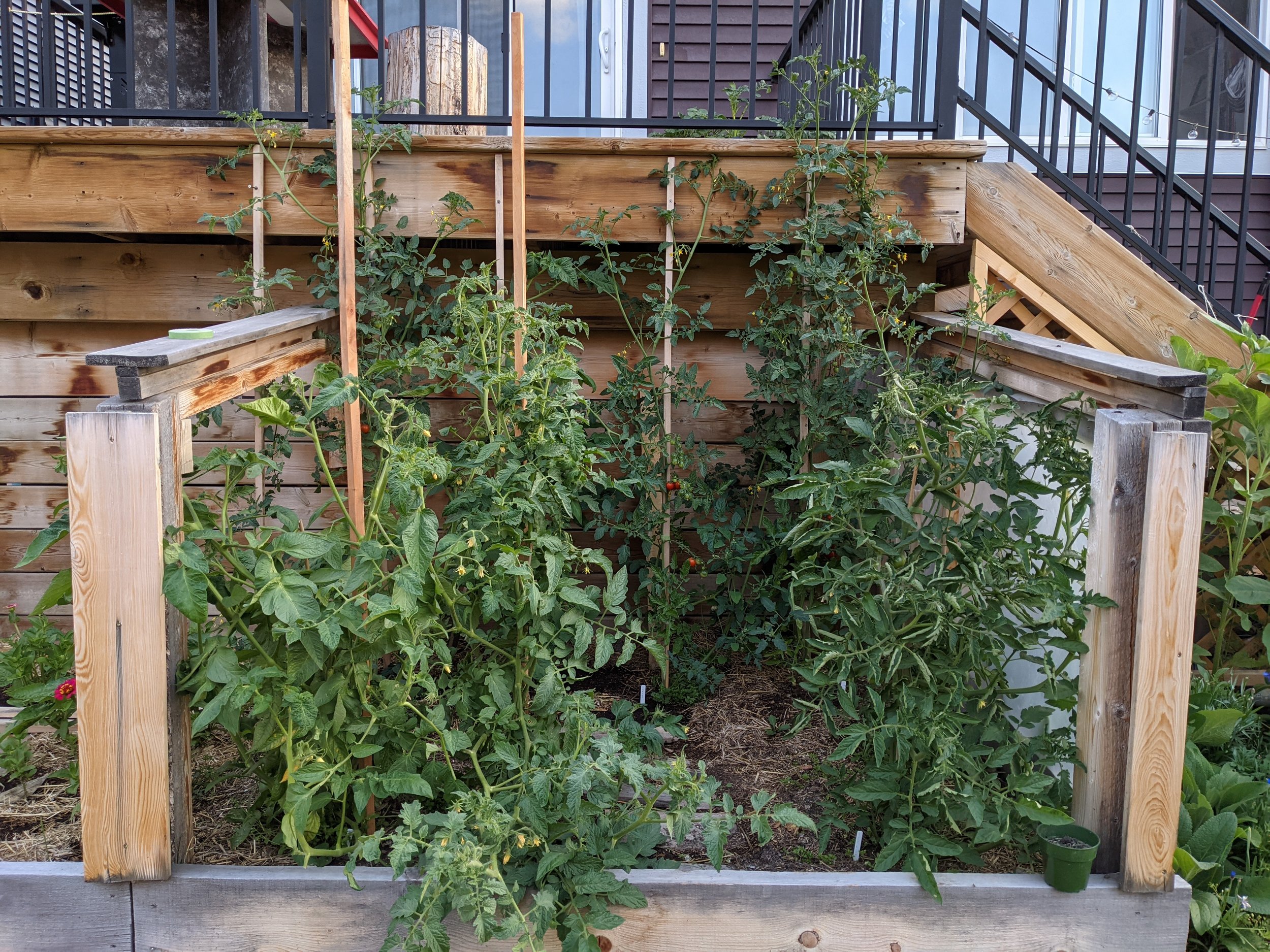

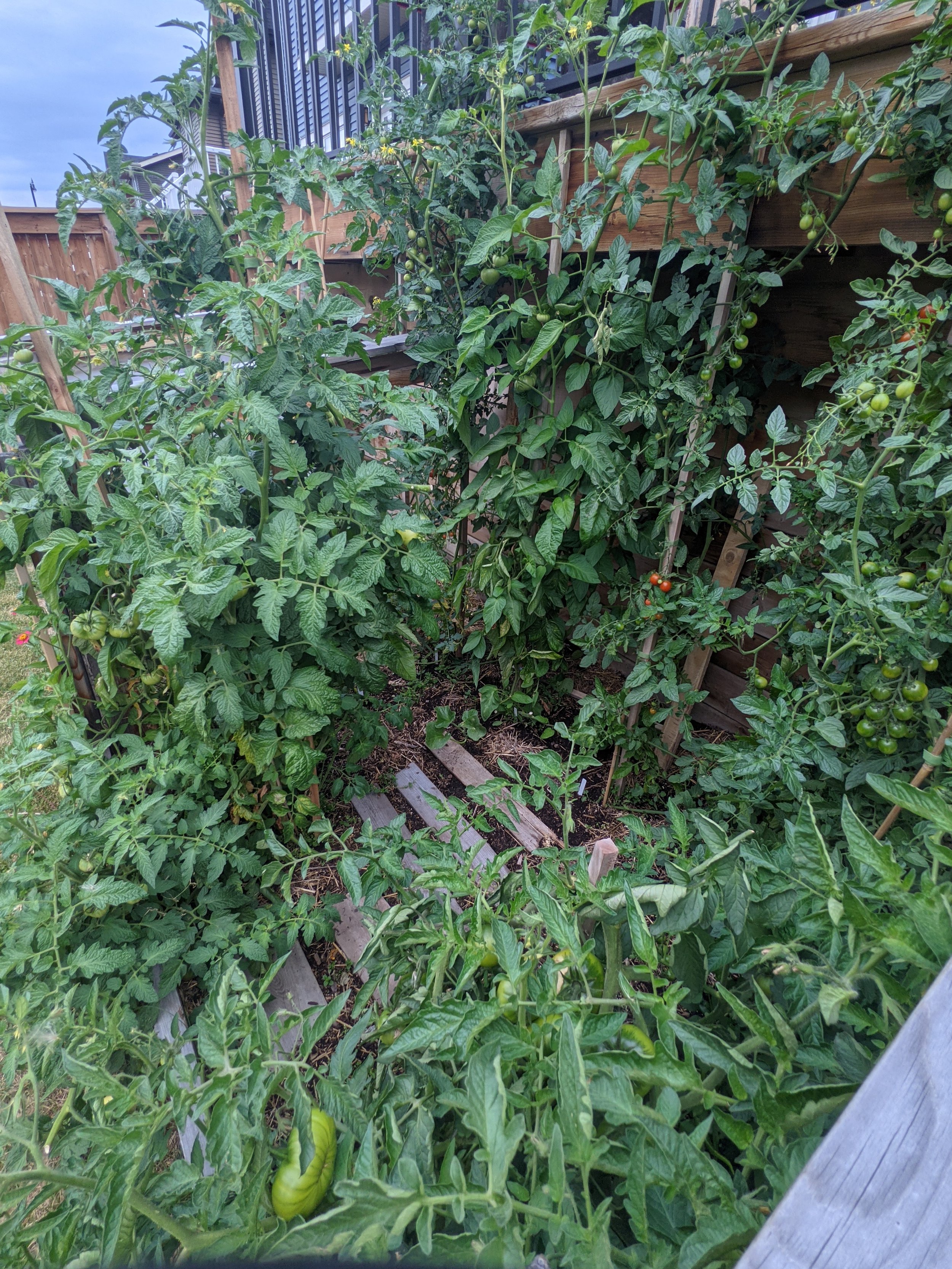
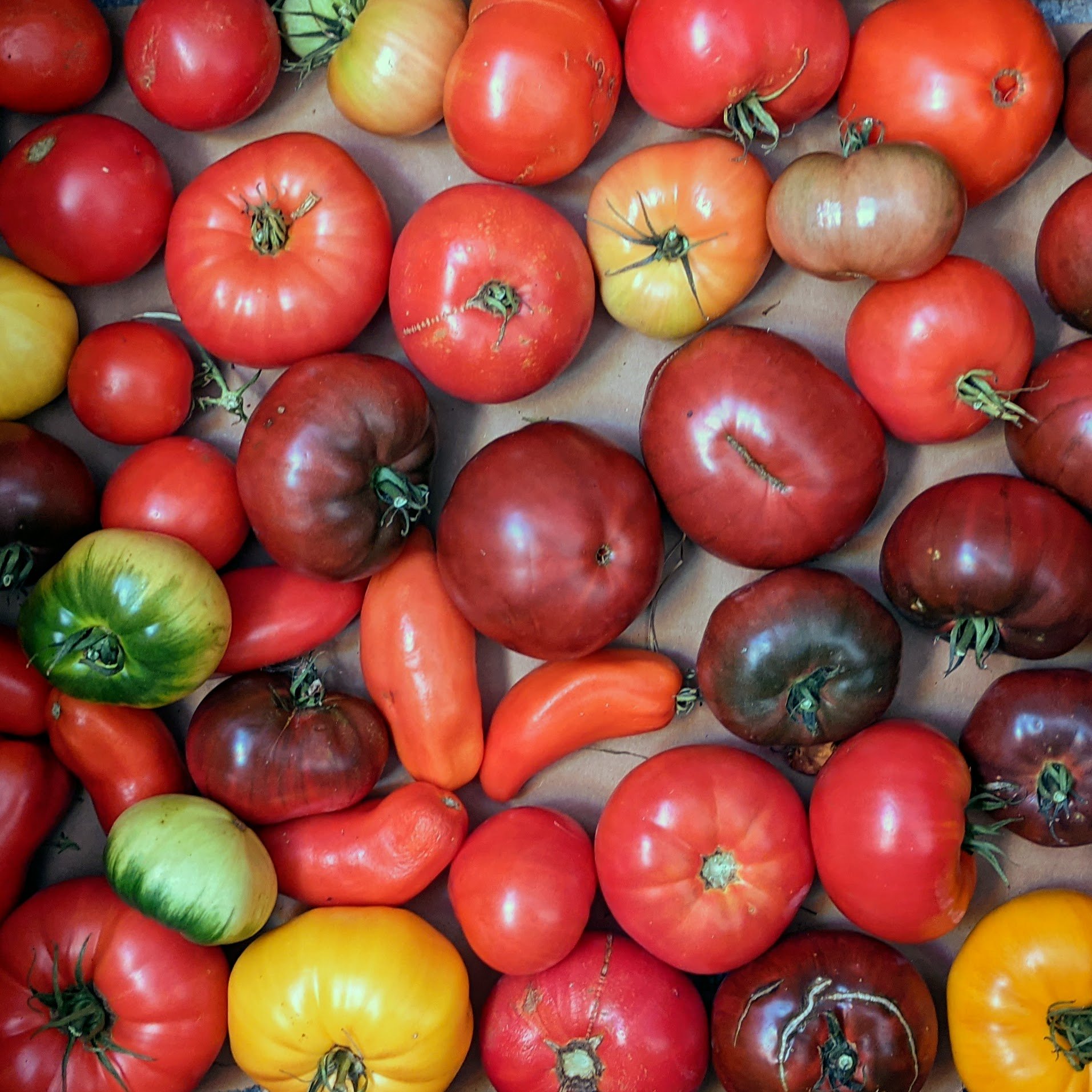
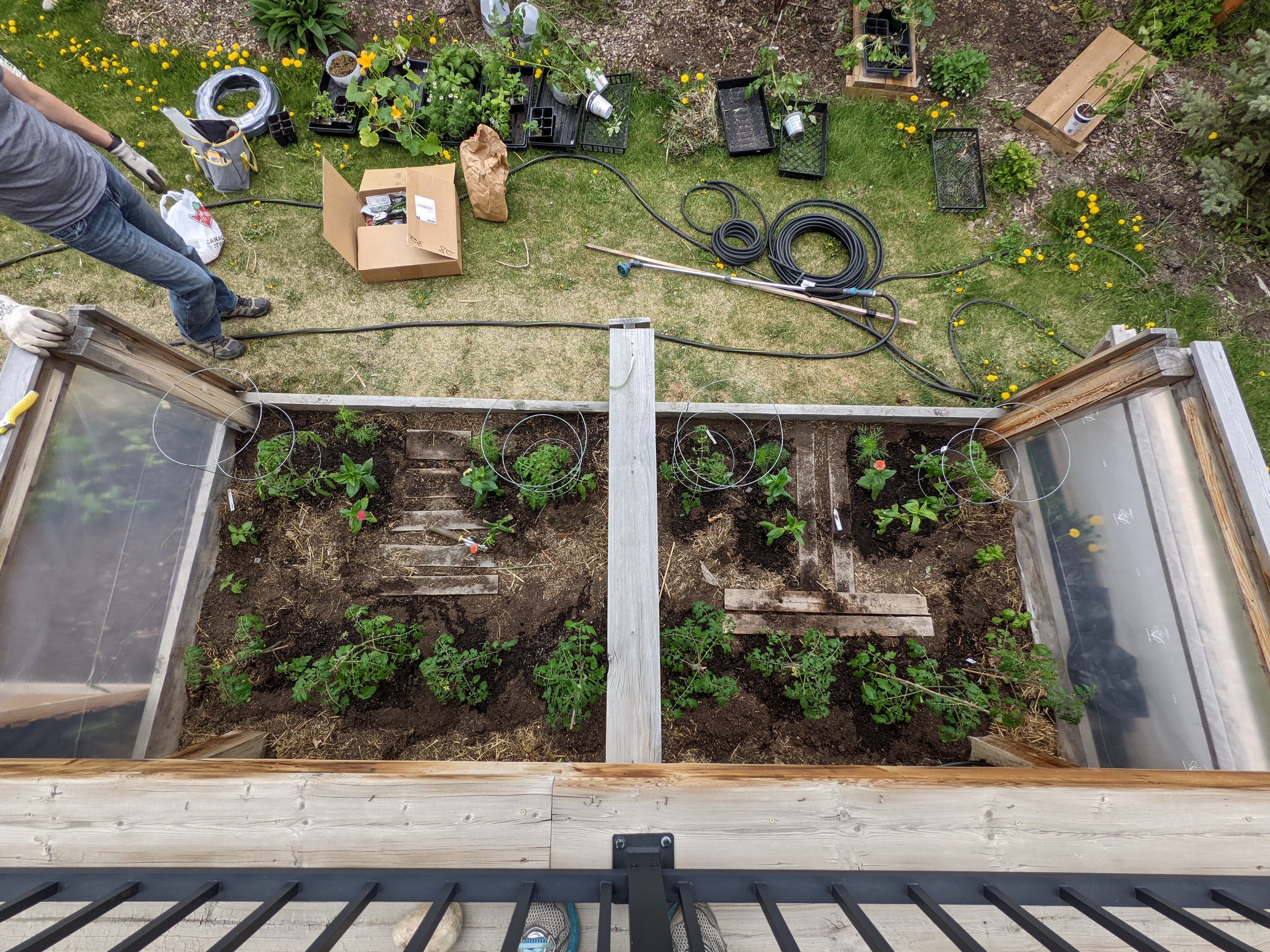
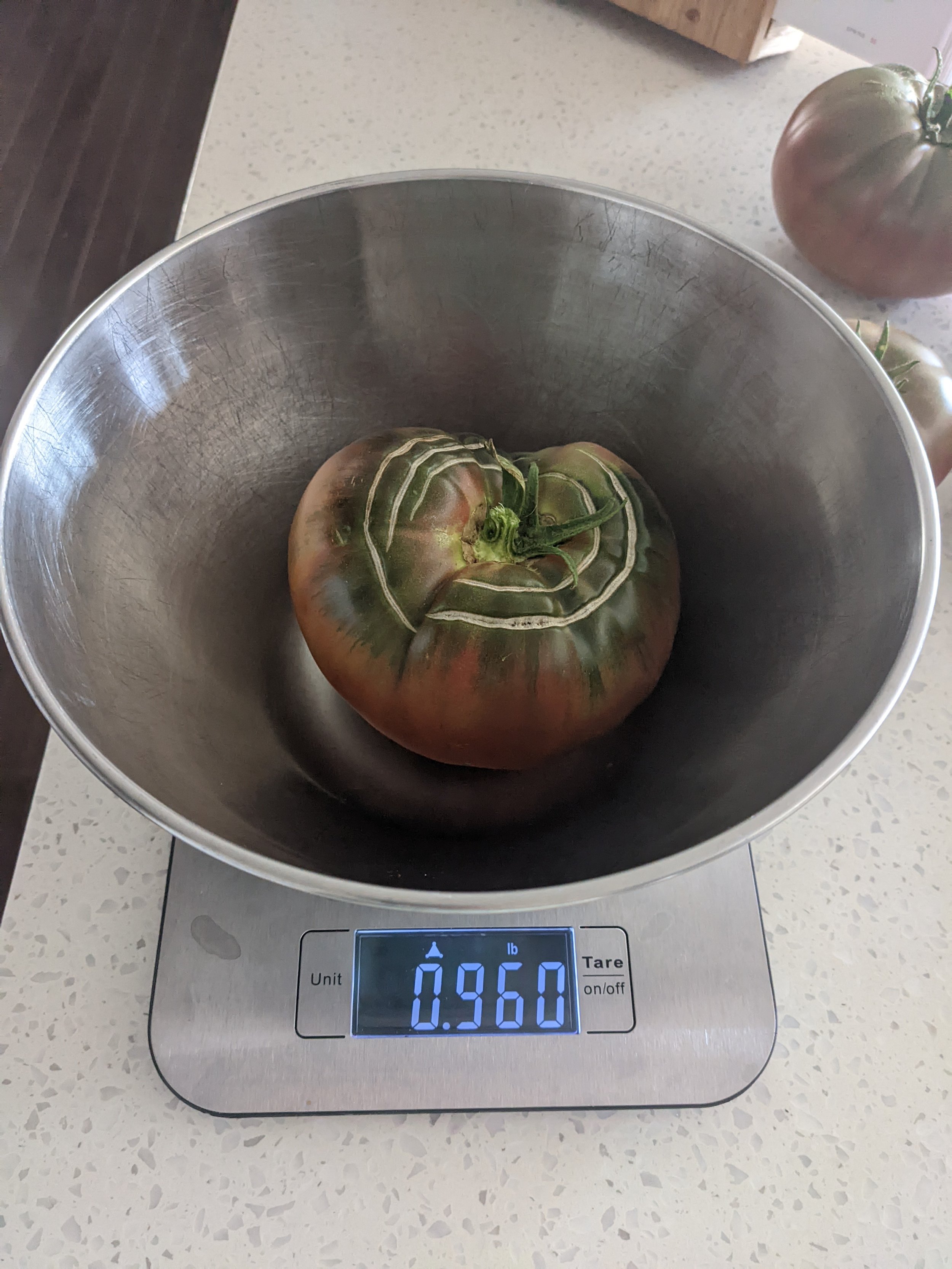
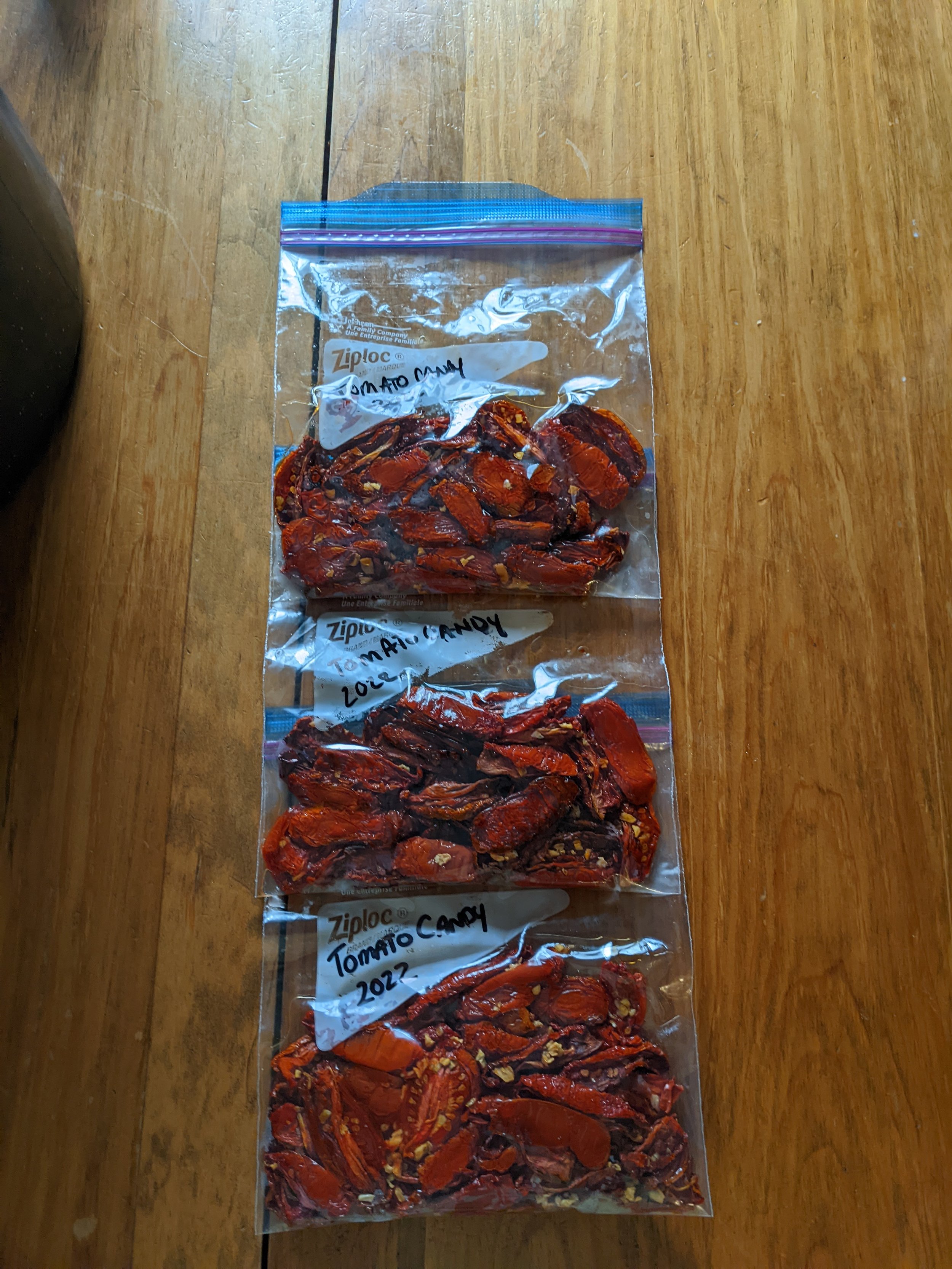
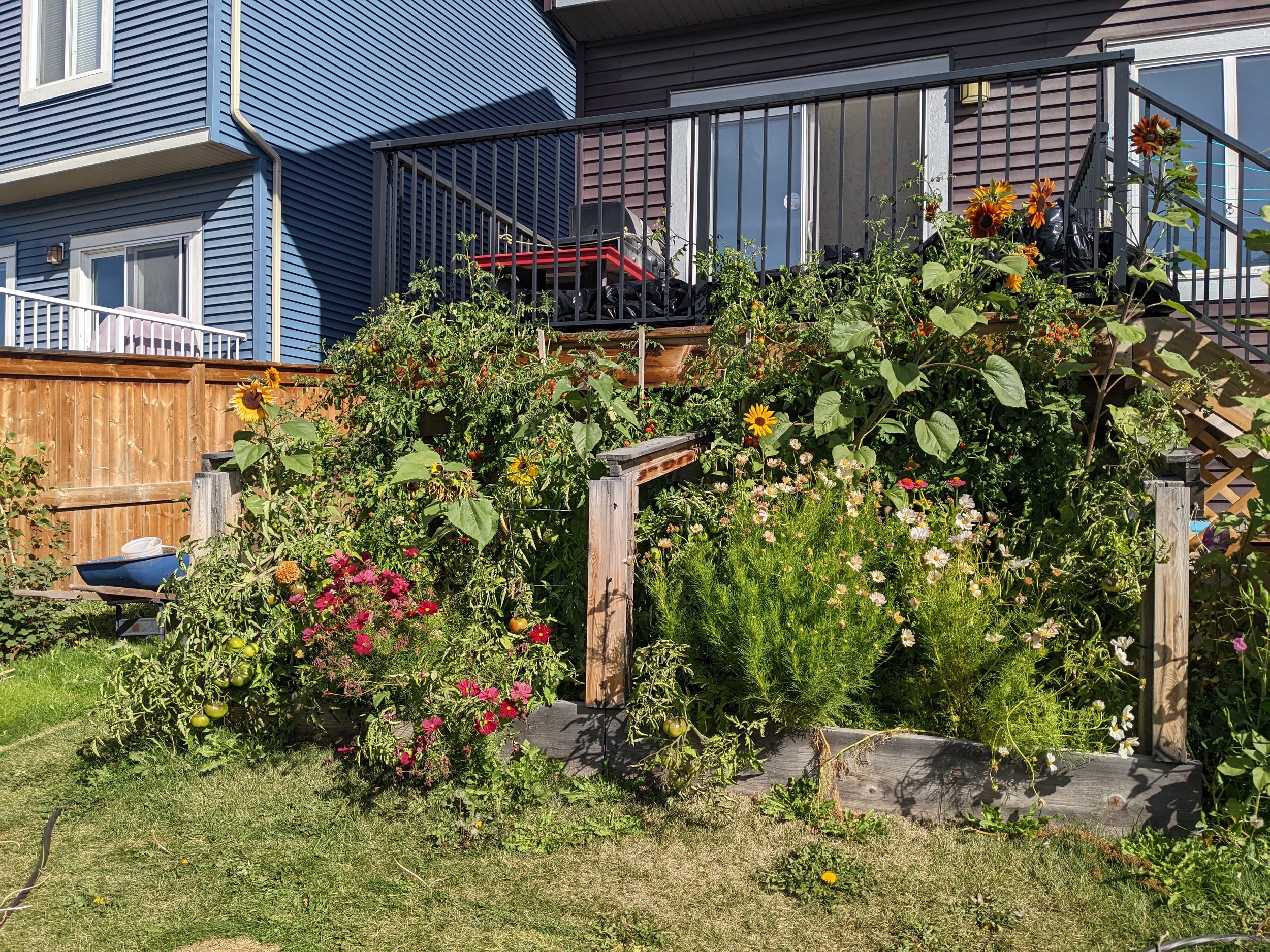

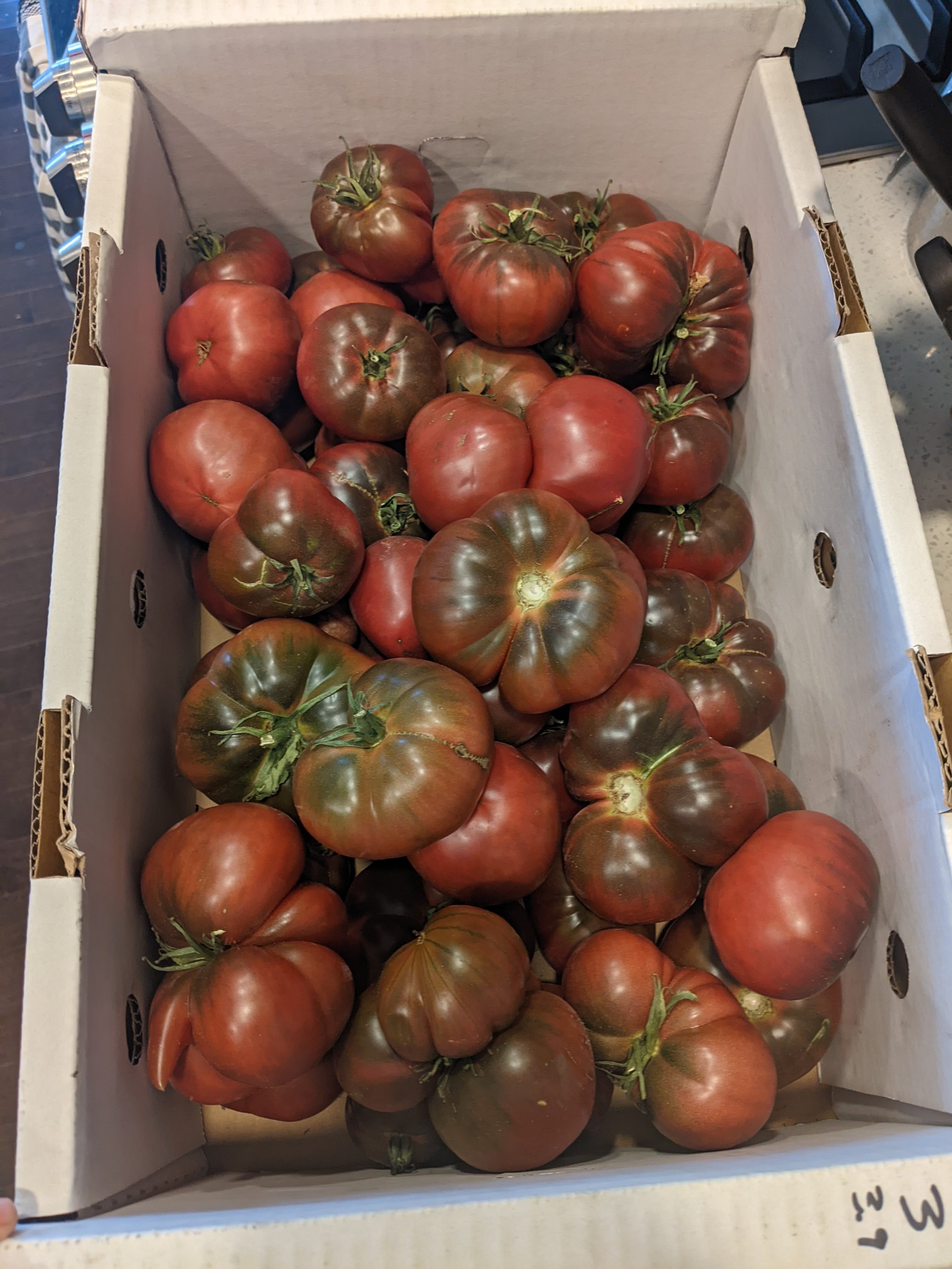
2019
The Herb Spiral
Our herb spiral is designed to create a significant amount of growing space in a 5’ circle with various microclimates. The shape creates spaces with shade, spaces blocked by wind, and spaces with more water (at the bottom) and drier soil (at the top). The stone of the spiral creates heat, which is so valuable in our cold climate. We ran an irrigation tub through the centre of the spiral during construction, and it is now irrigated using drip irrigation. Our herb spiral is also interesting and beautiful and one of my favourite features in our backyard.
I’ve written blog posts on how to build and plant your own herb spiral.
What we grow: Oregano, thyme, rosemary, shiso, savoury, lemon balm, chervil, parsley, chives, garlic chives, pansy, chamomile, stevia, nasturtium, tarragon, marigold, and mint (in a pot at the base). I also plant creeping thyme in the rock crevices.
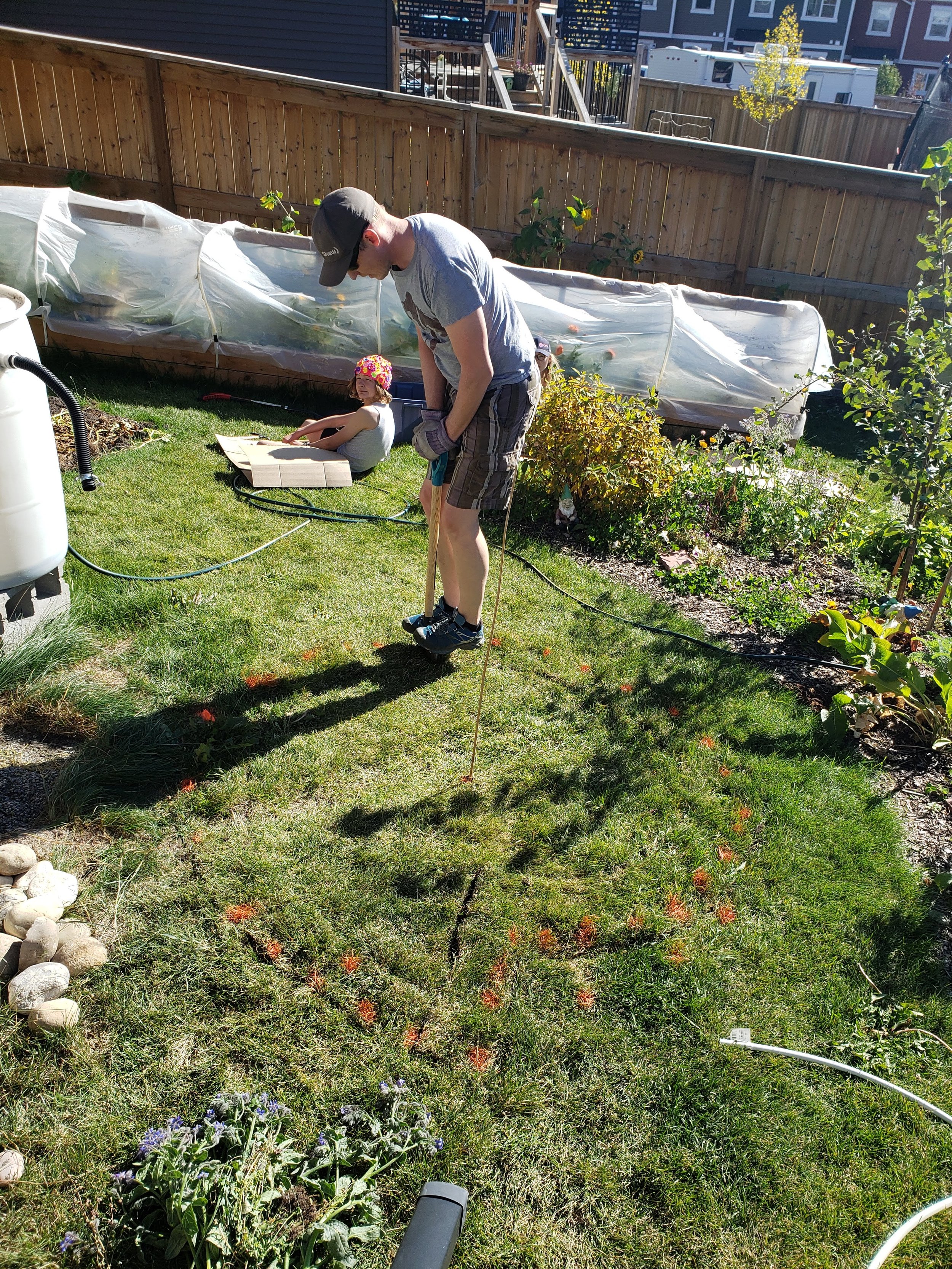
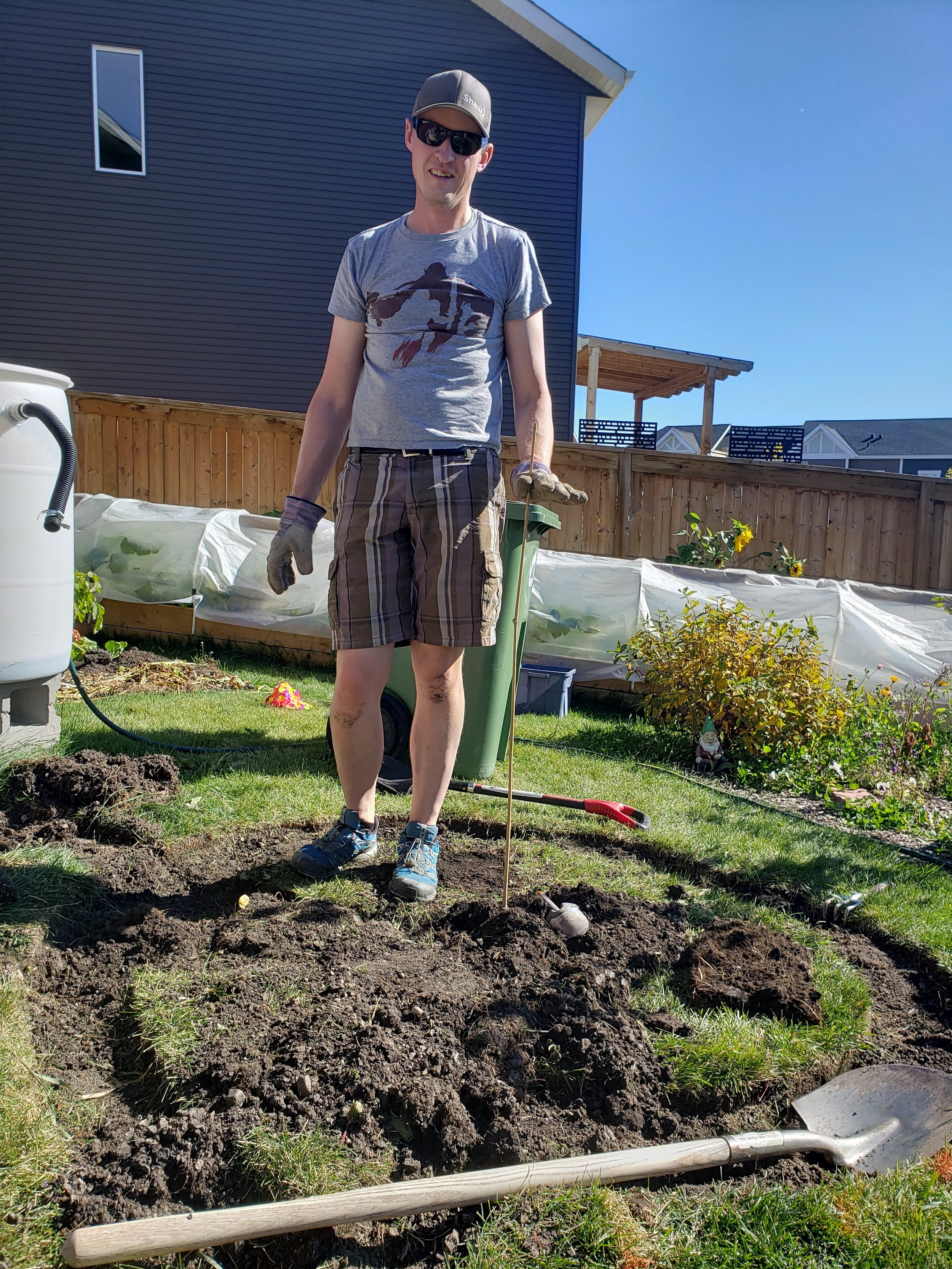
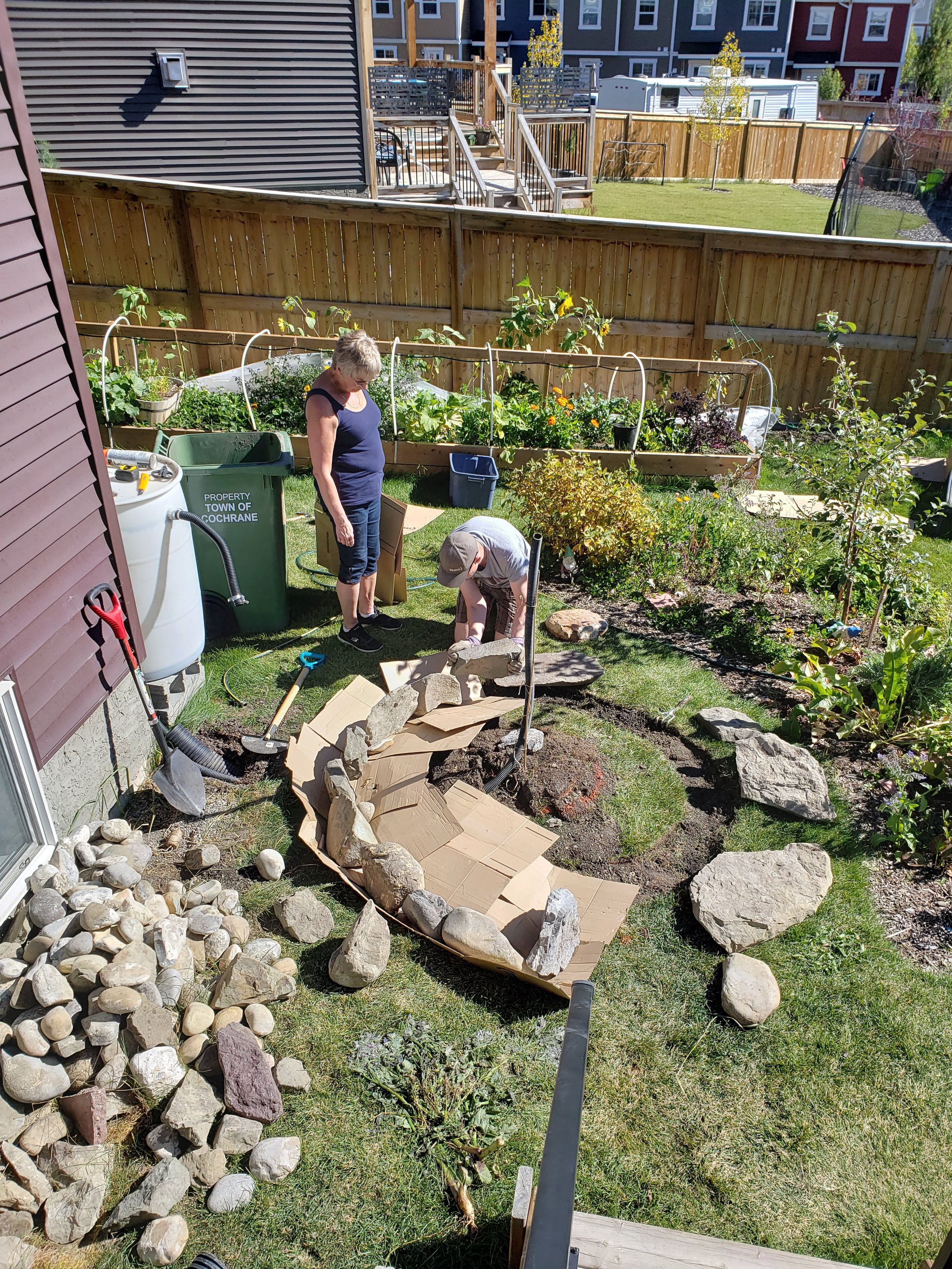
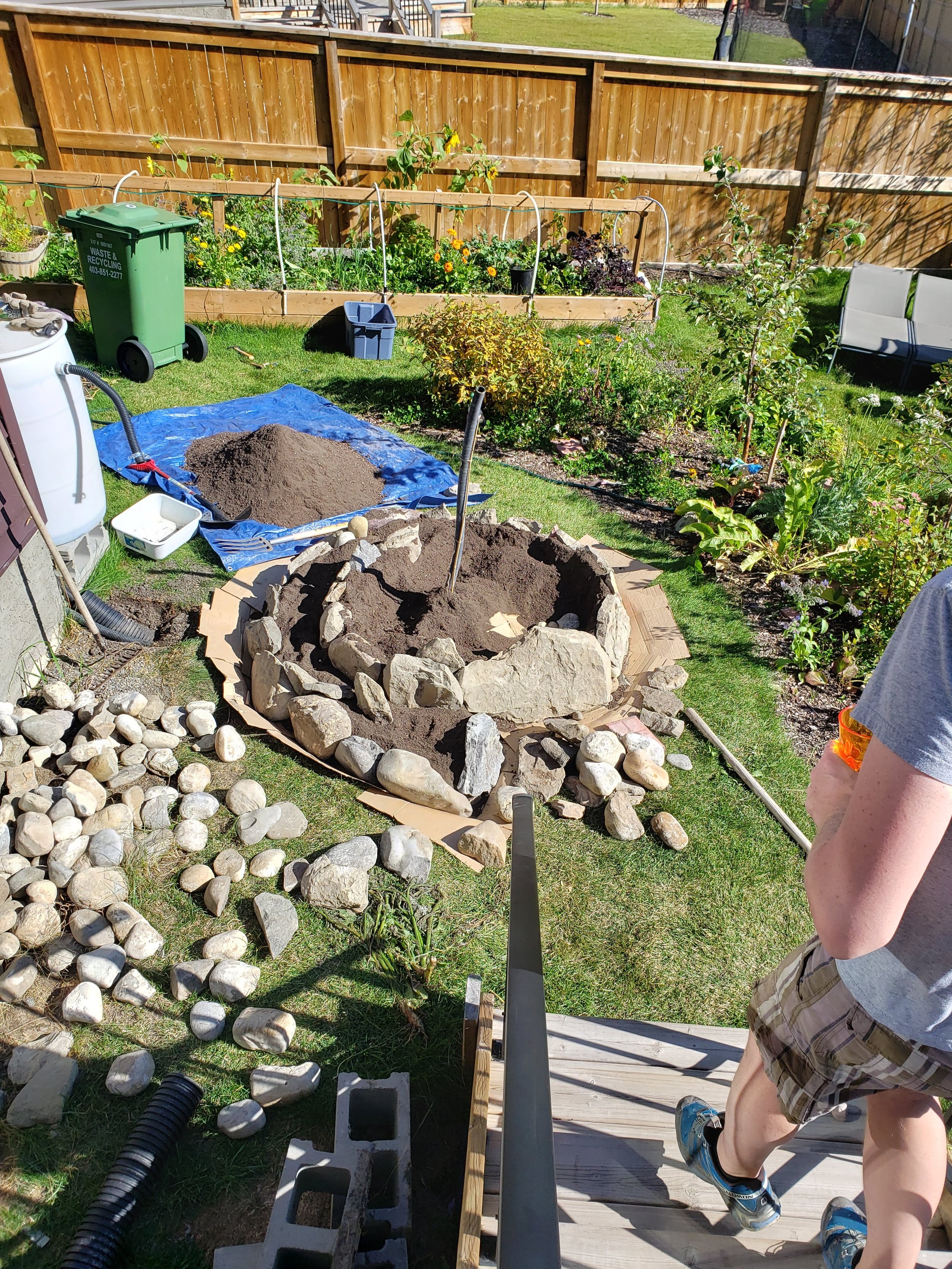
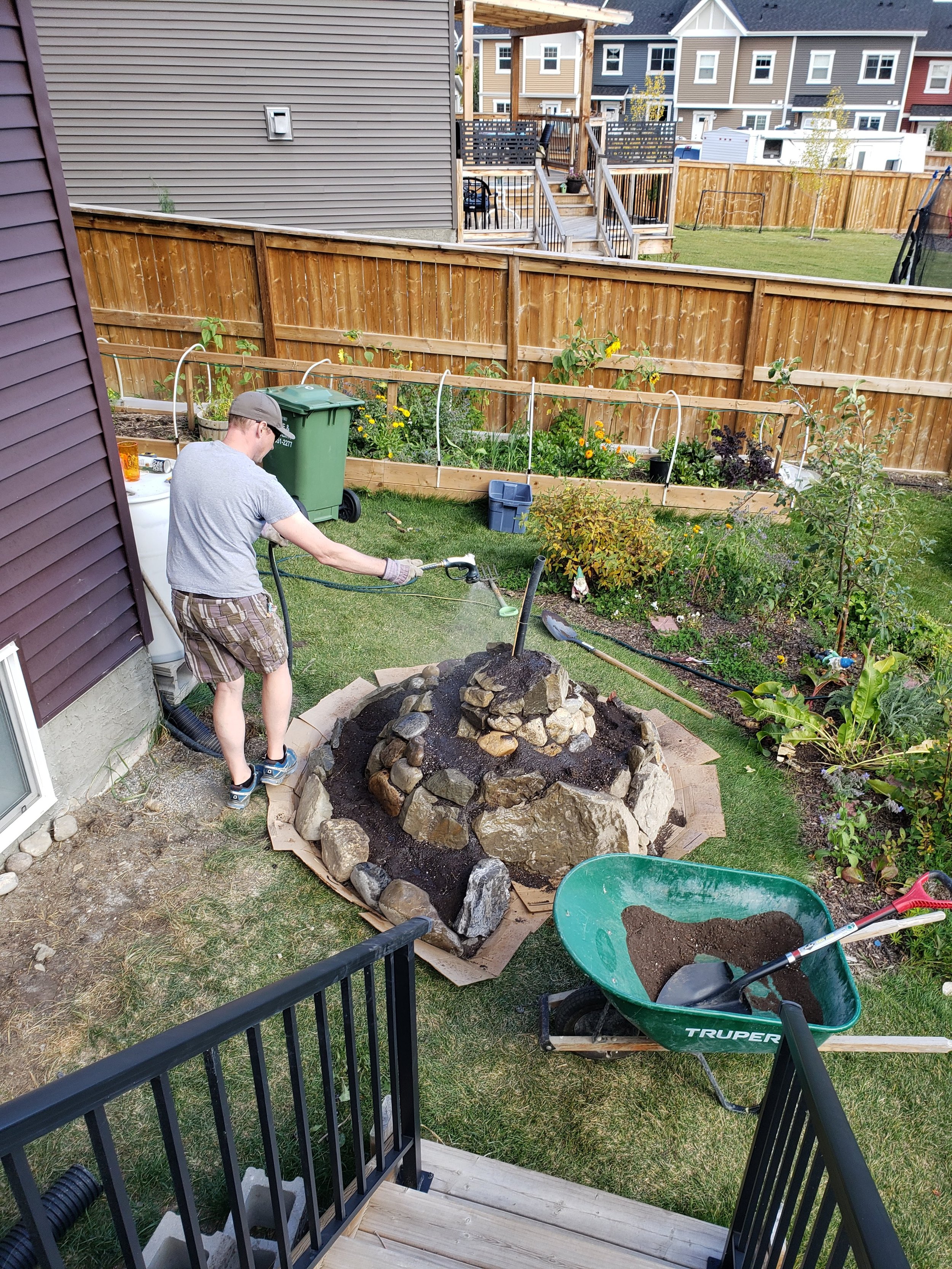
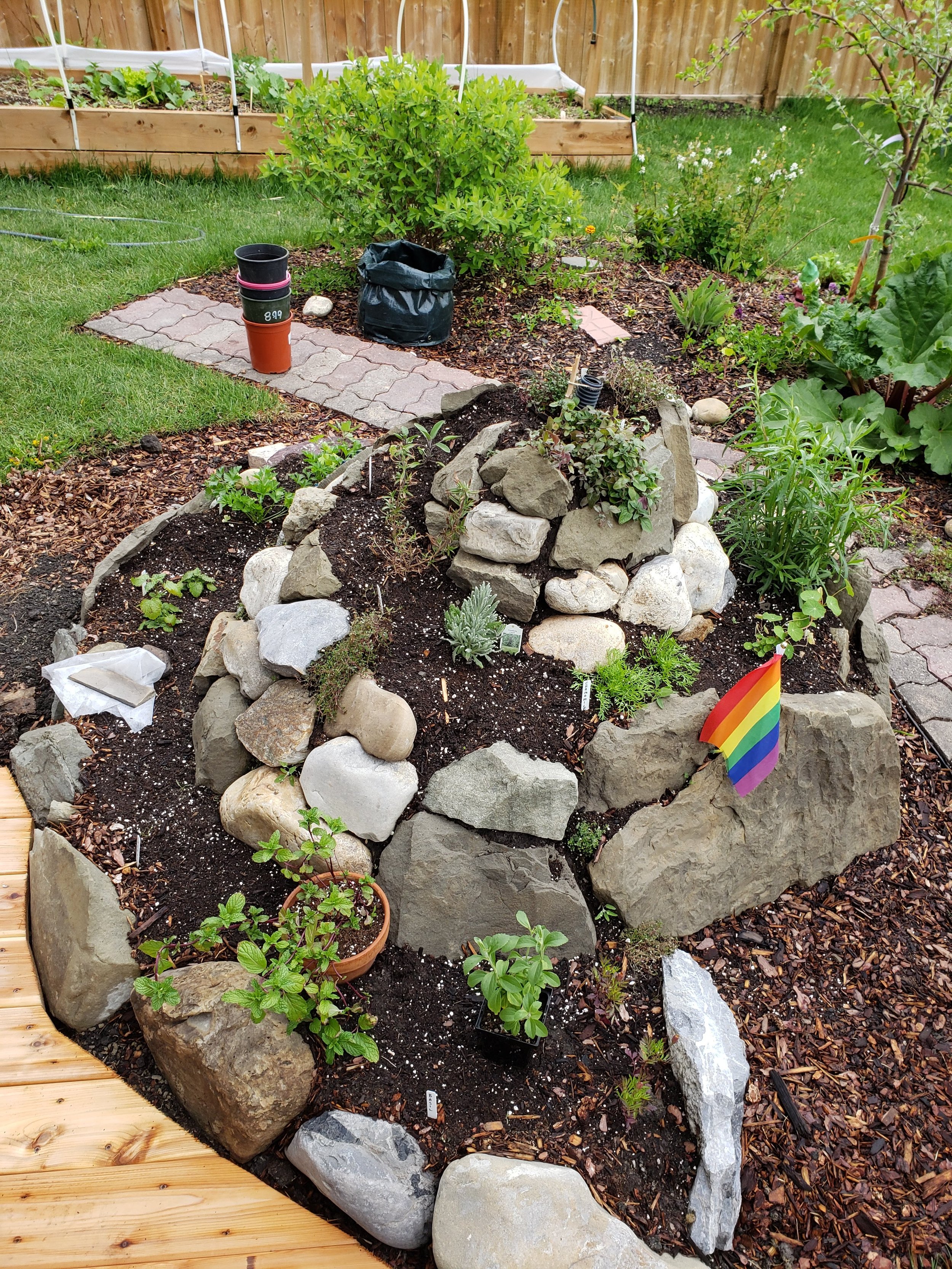

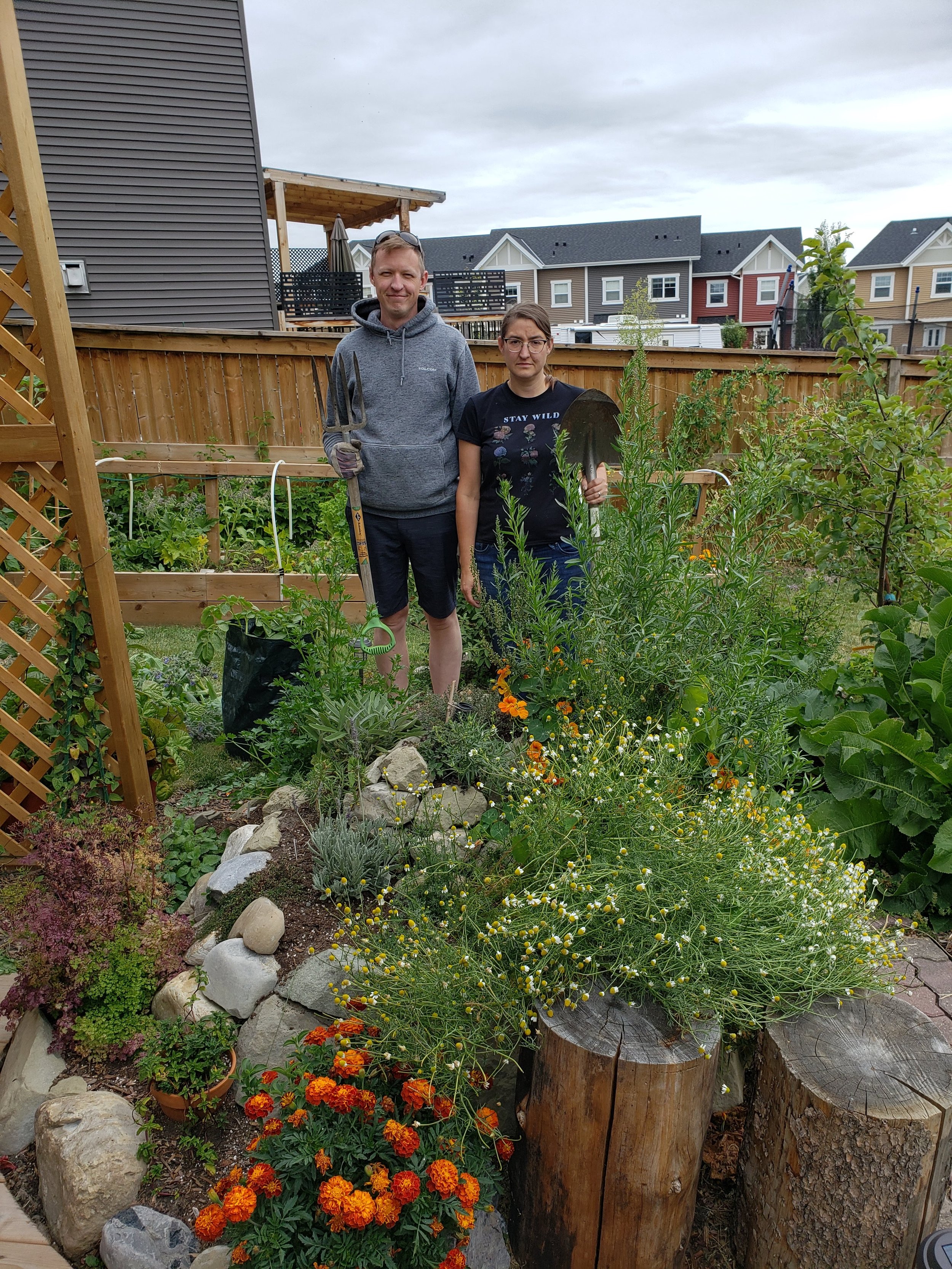
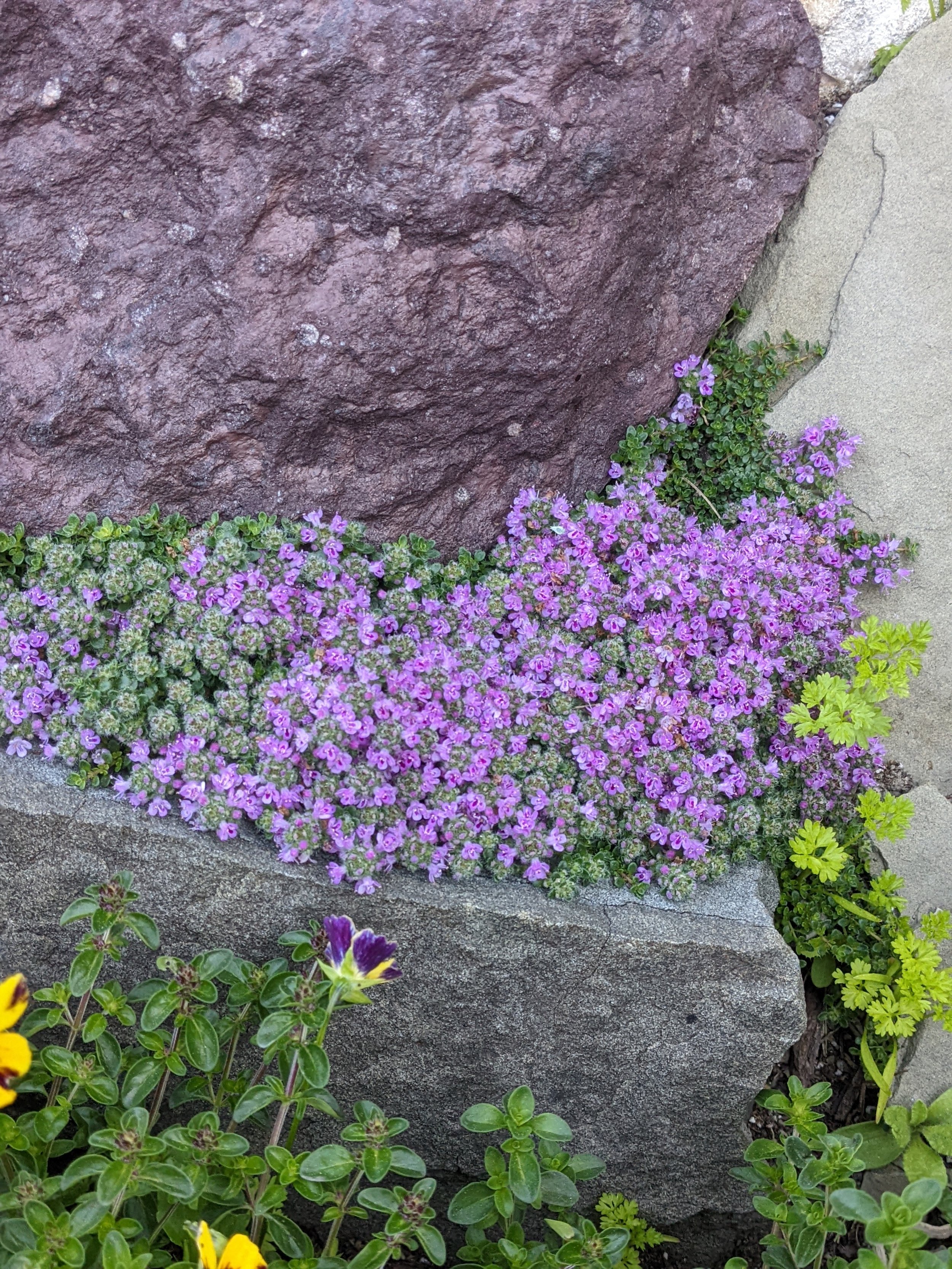
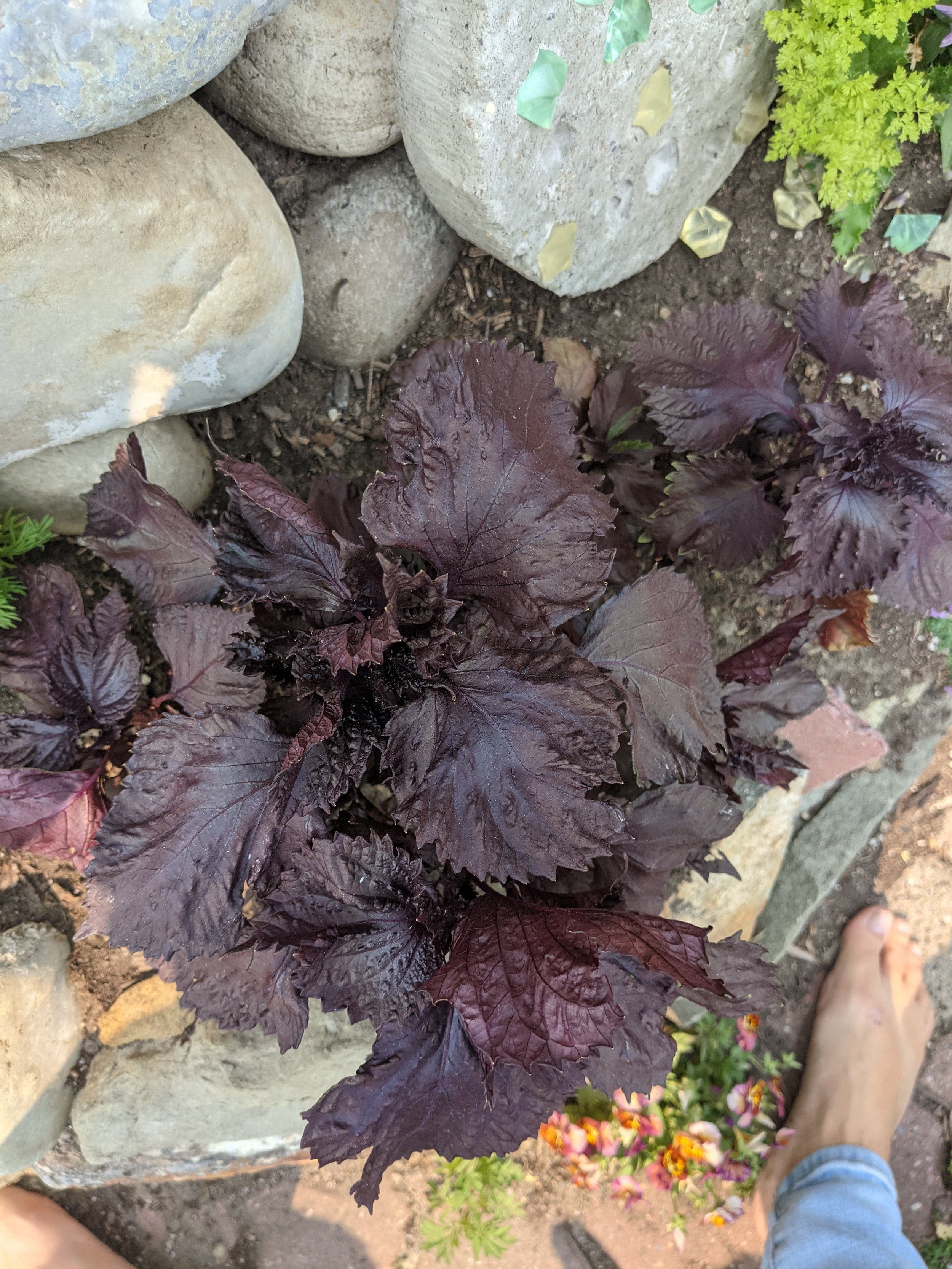
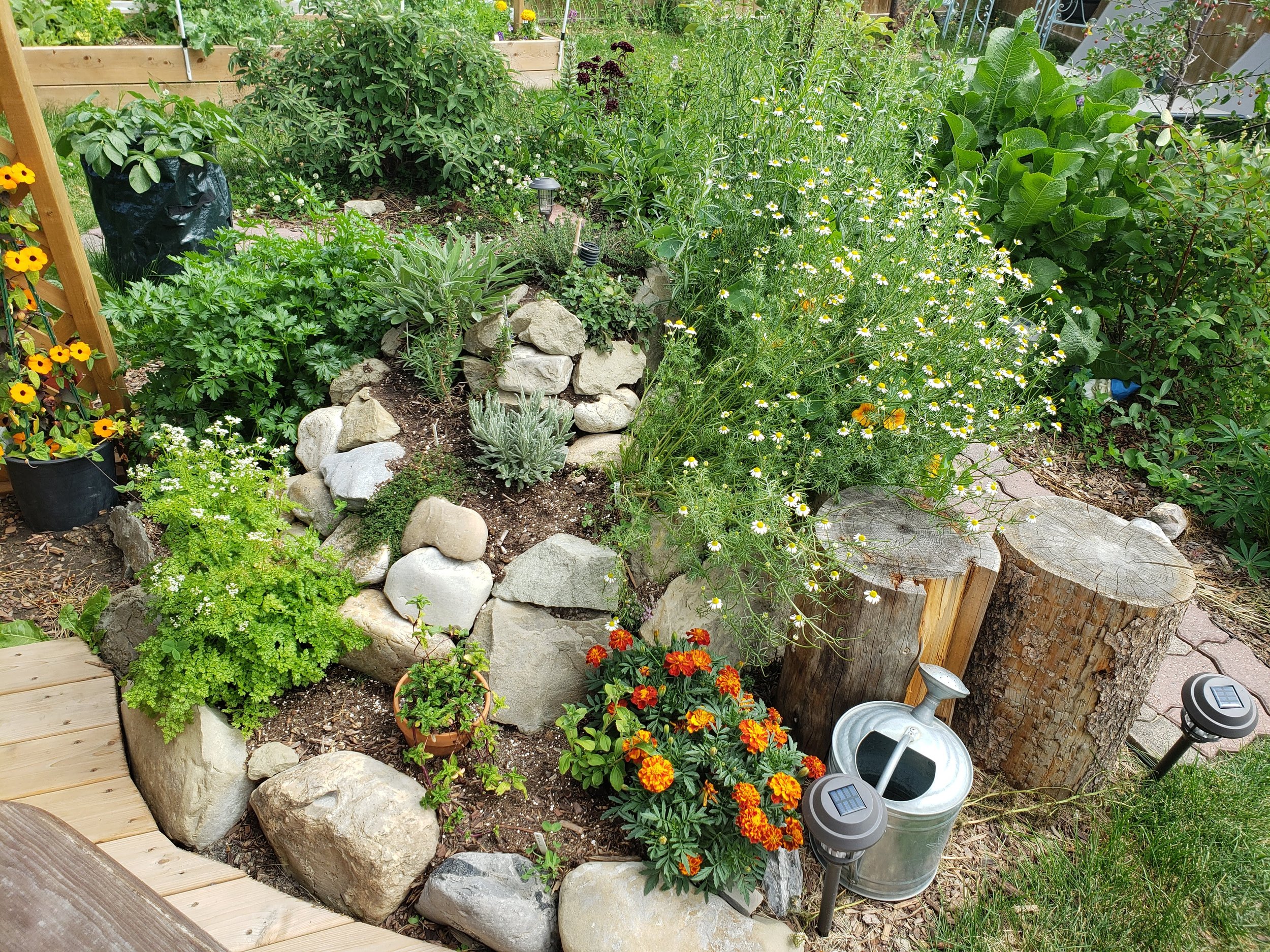
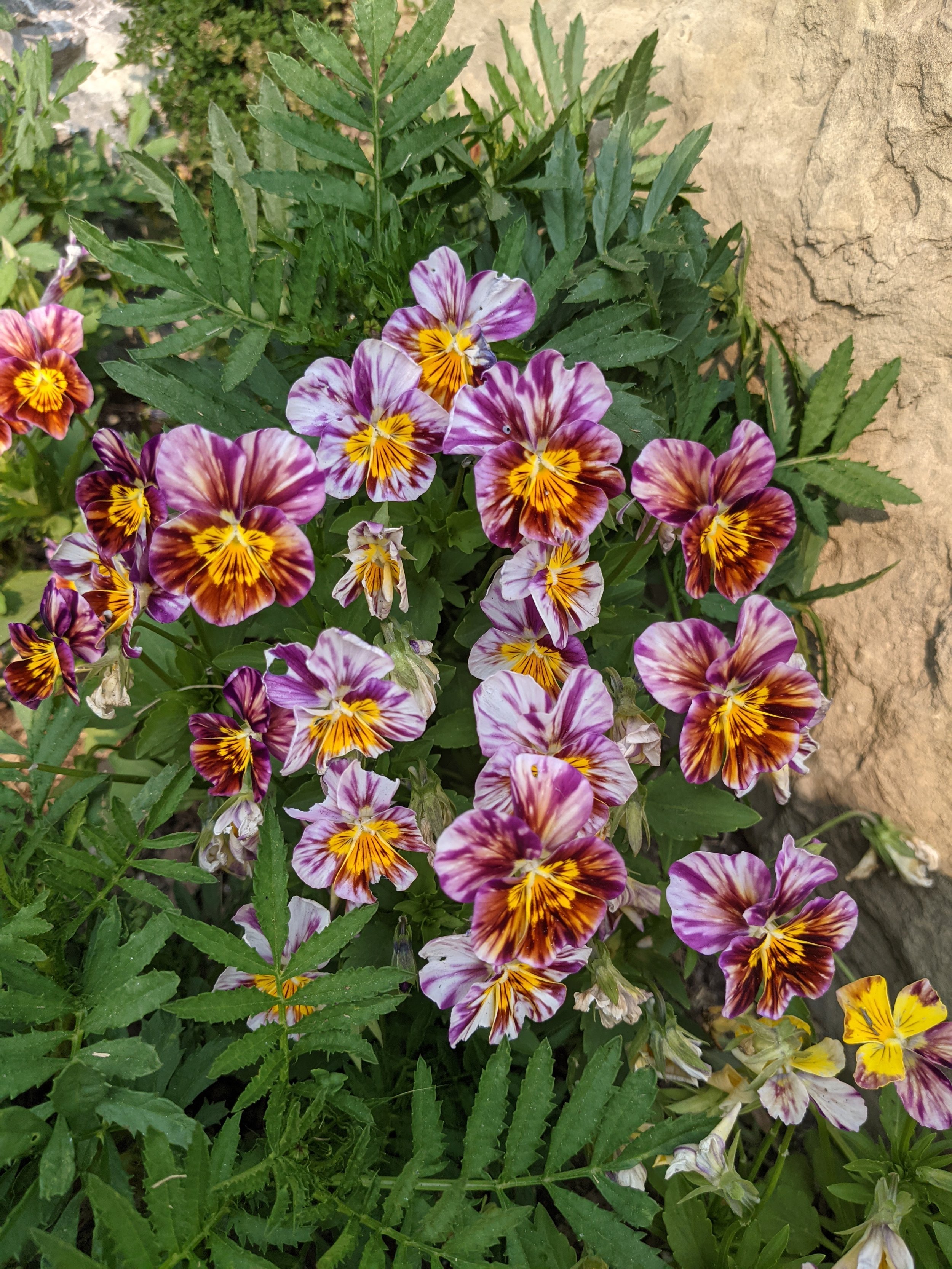
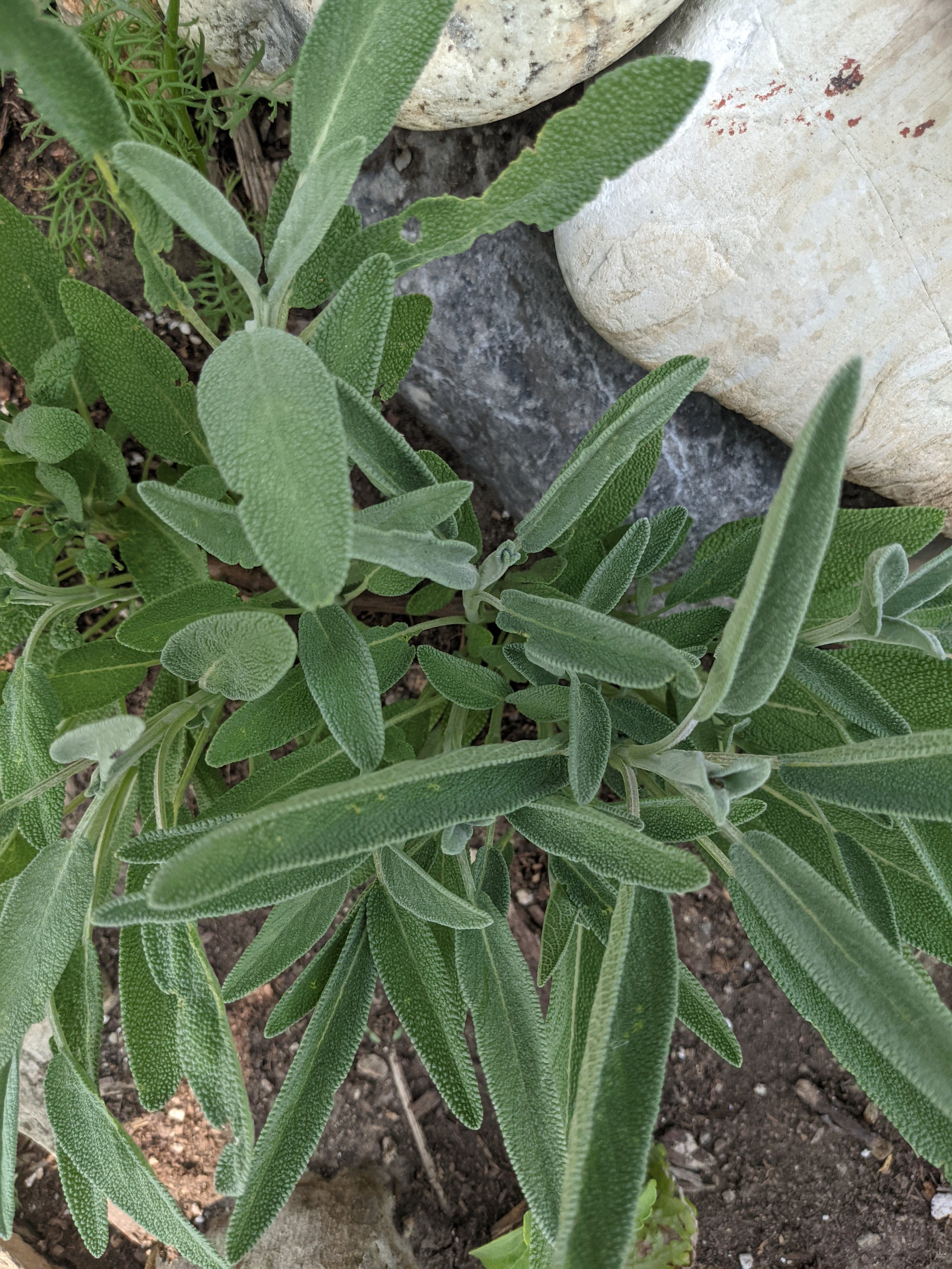
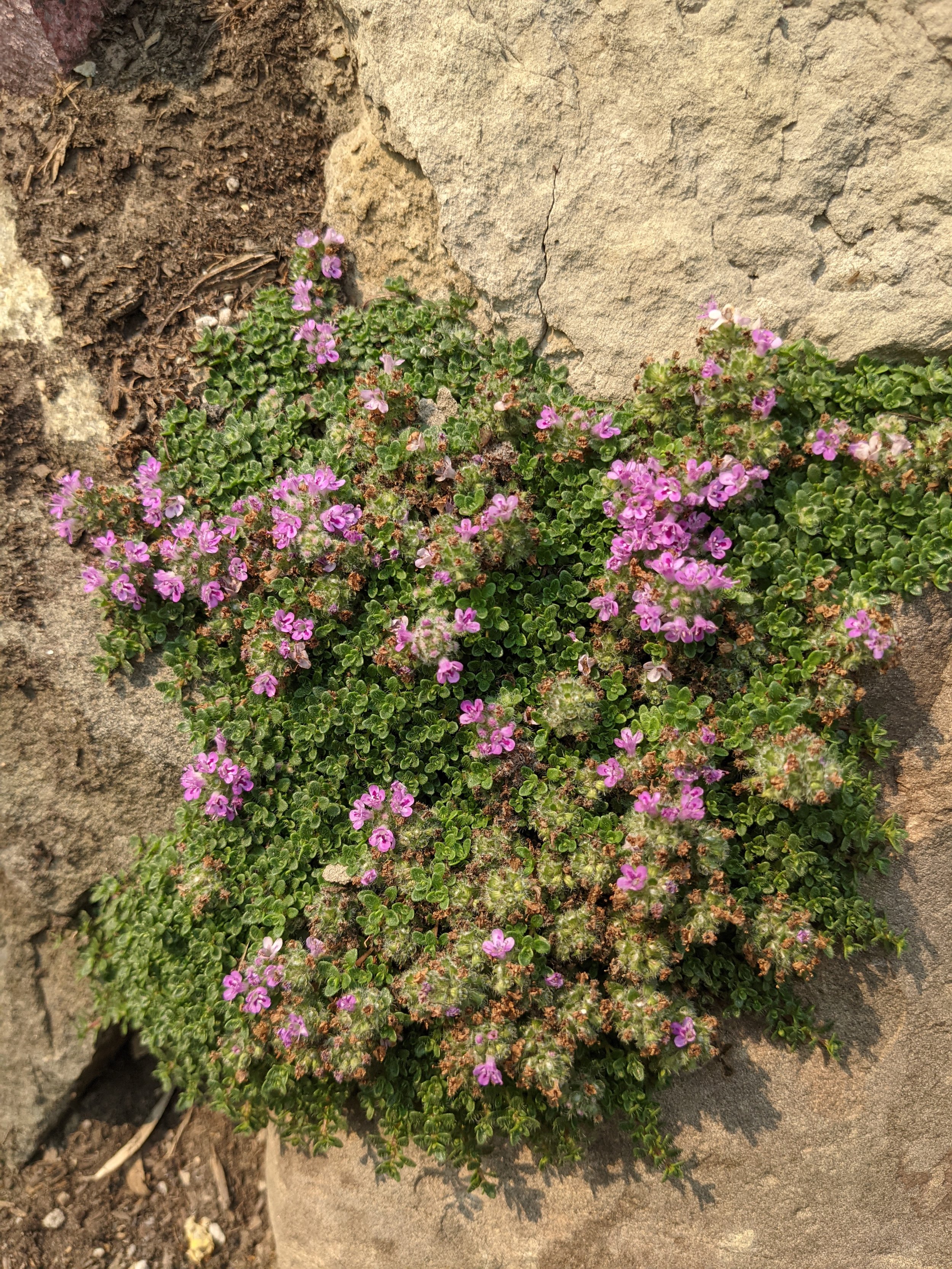
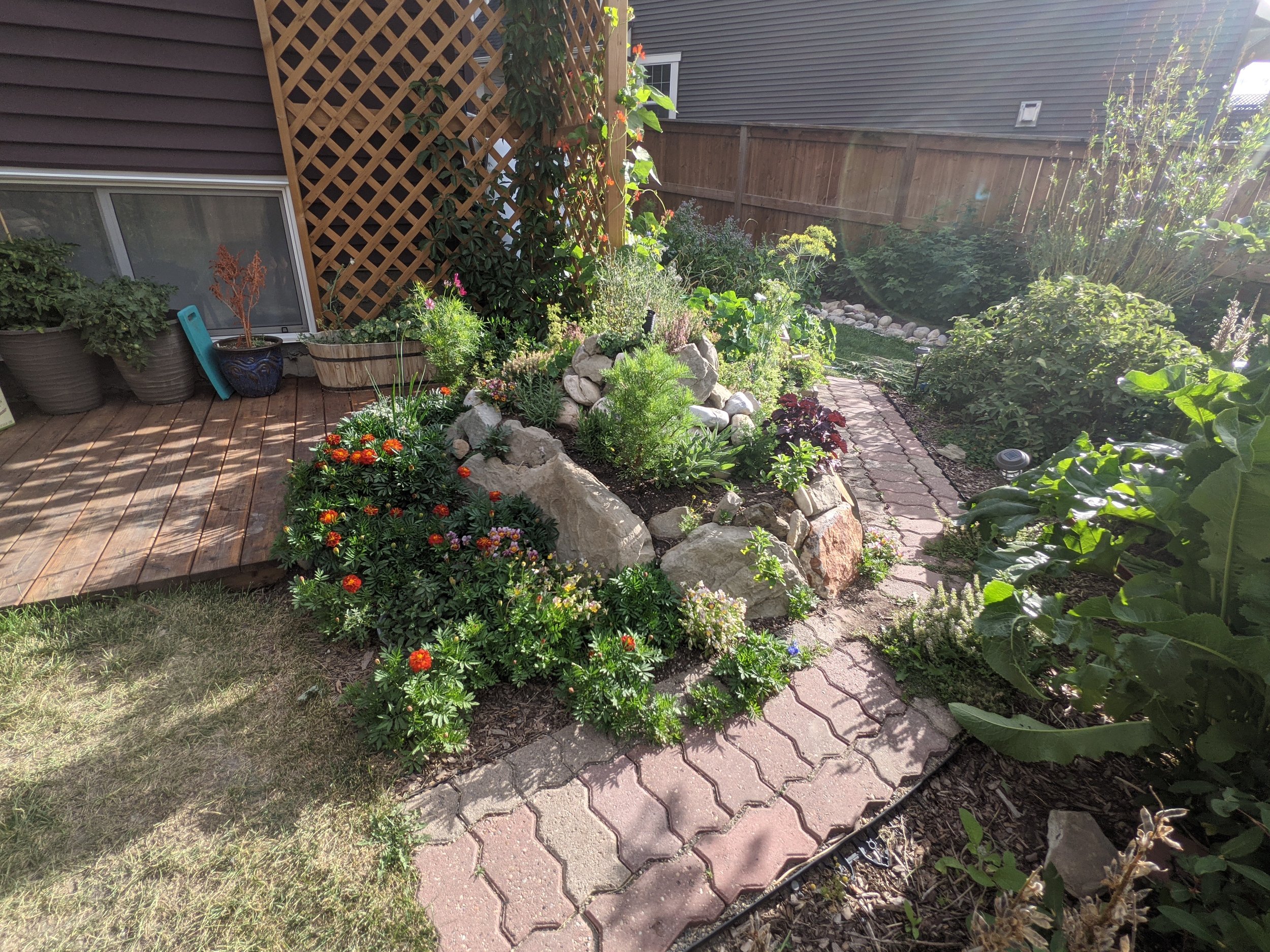
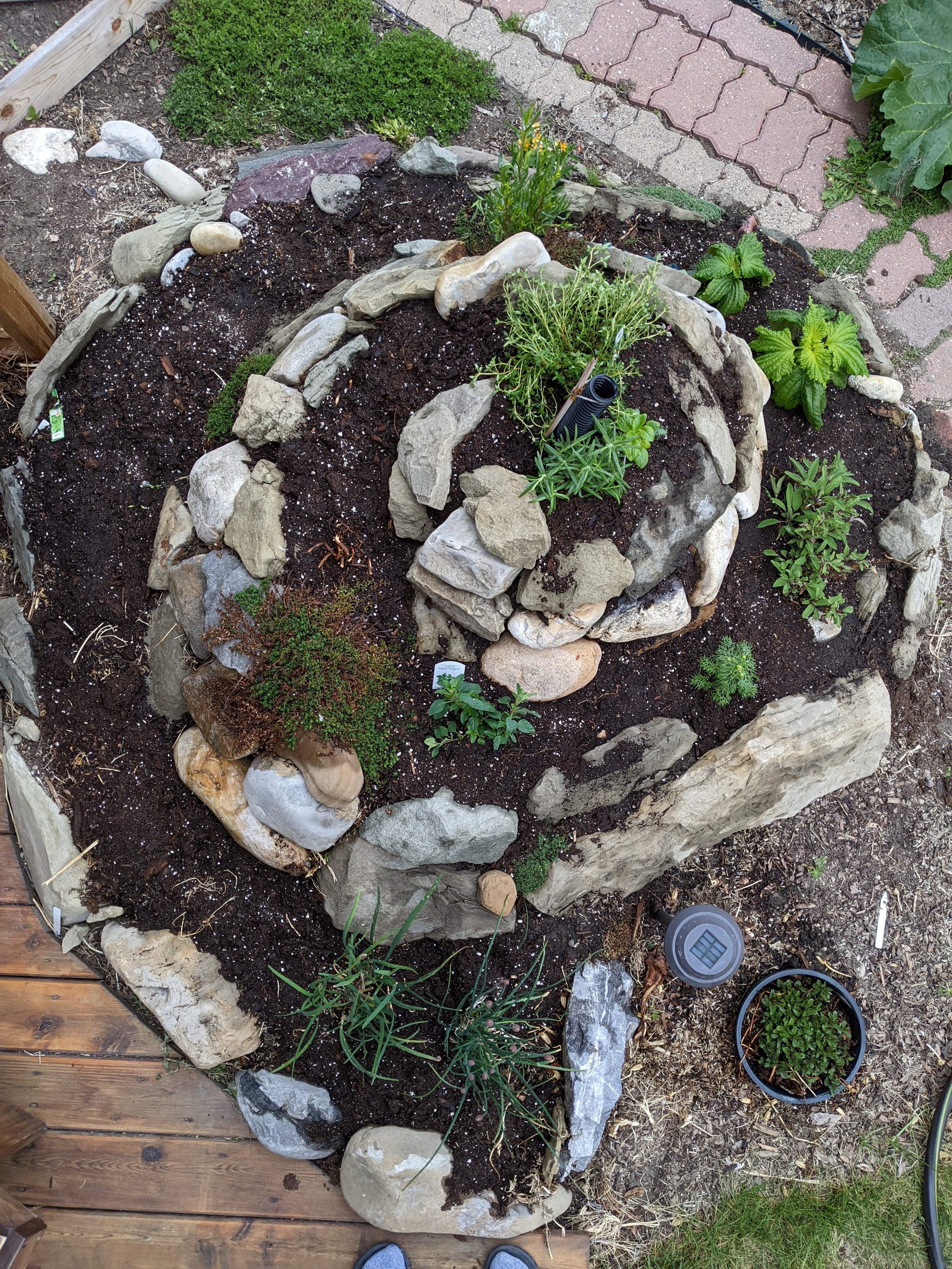
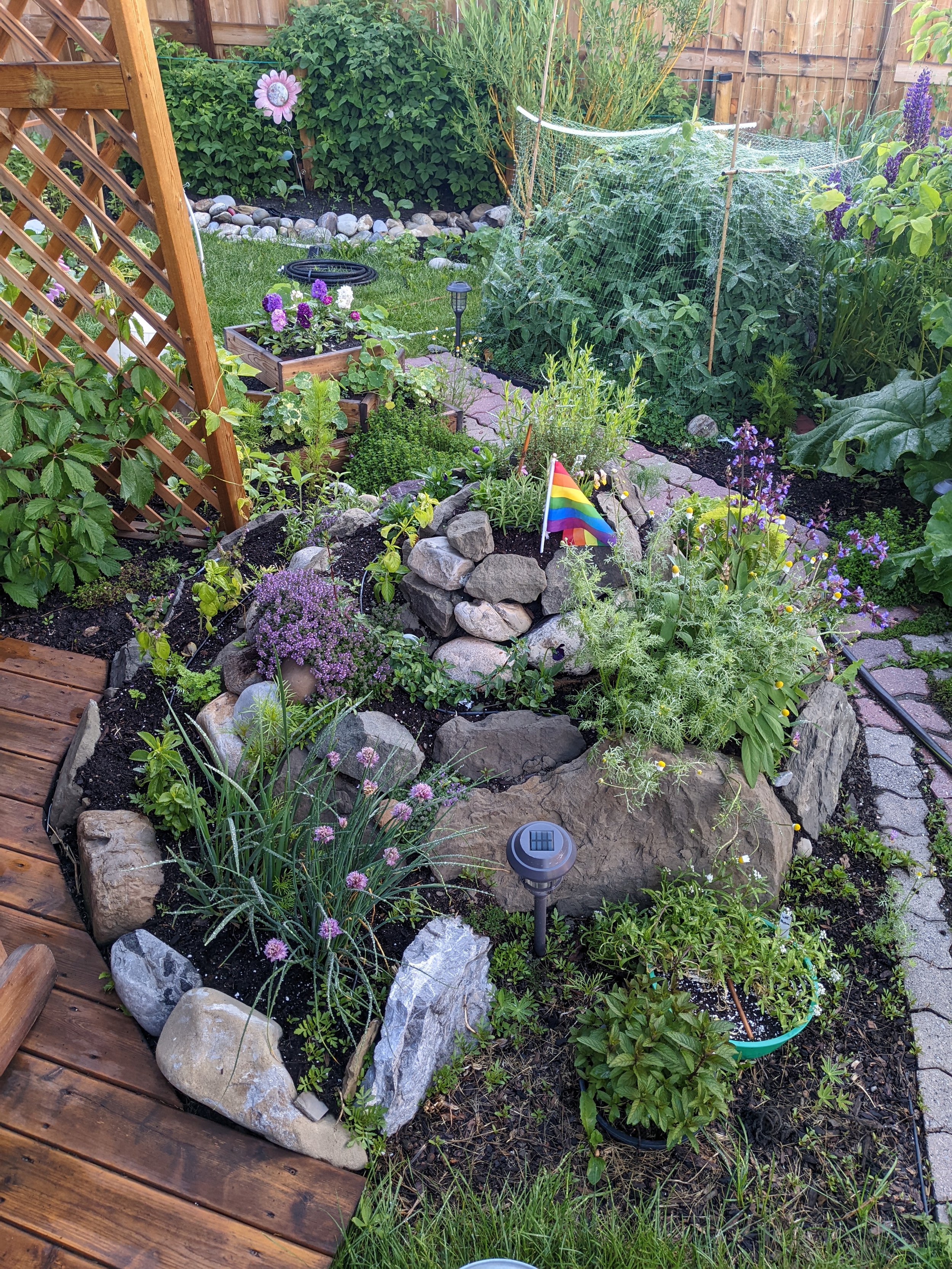
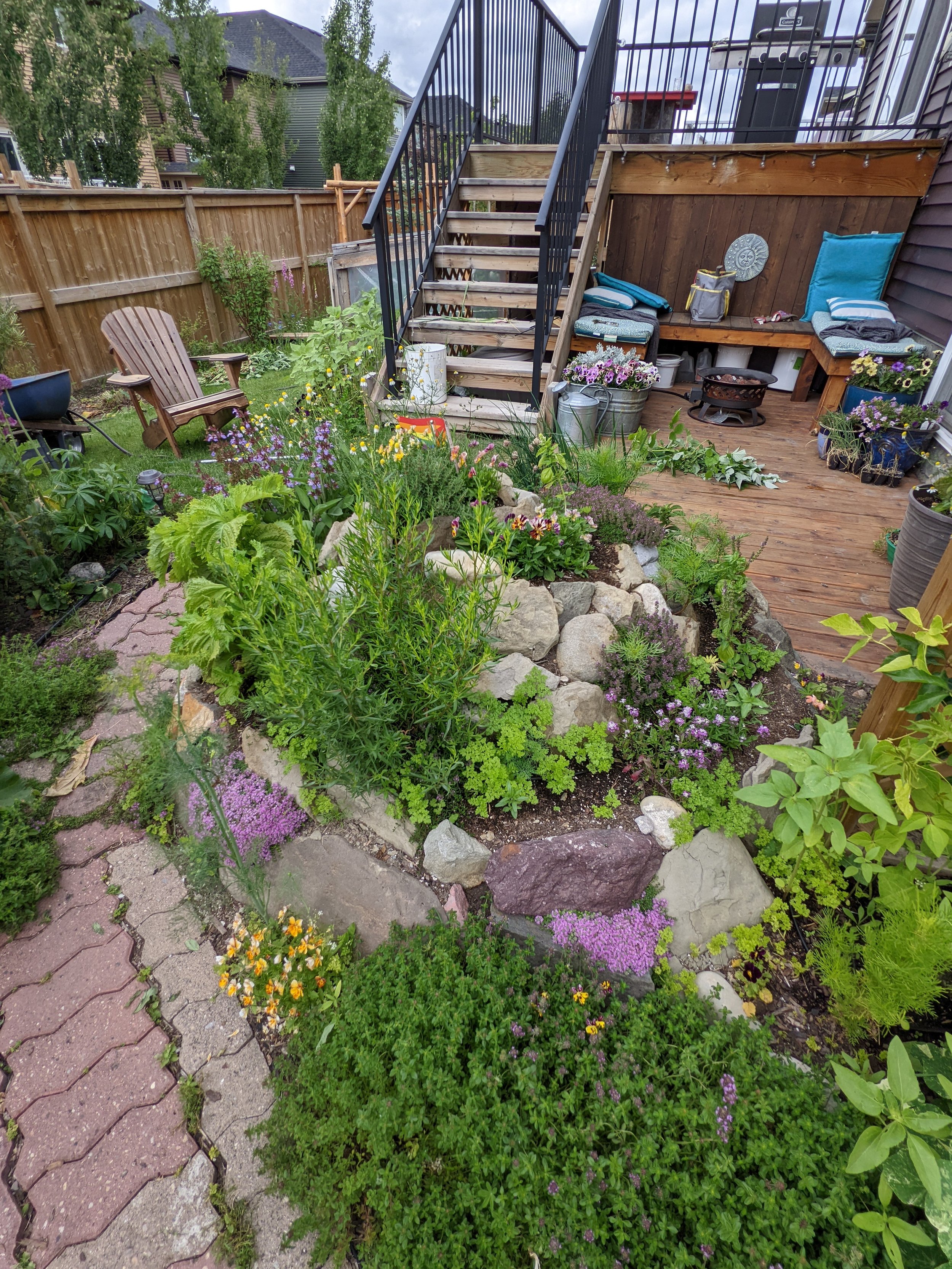
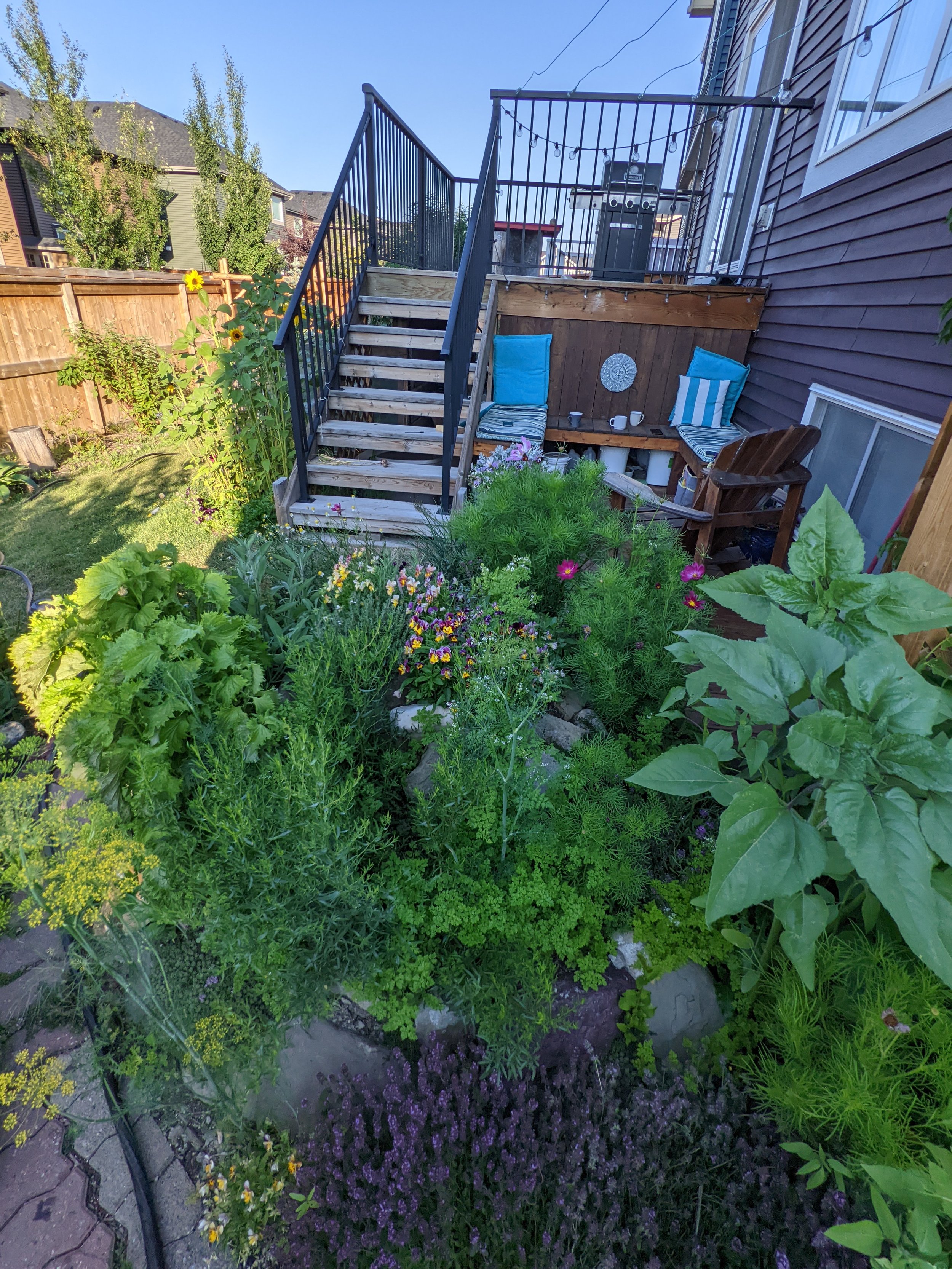
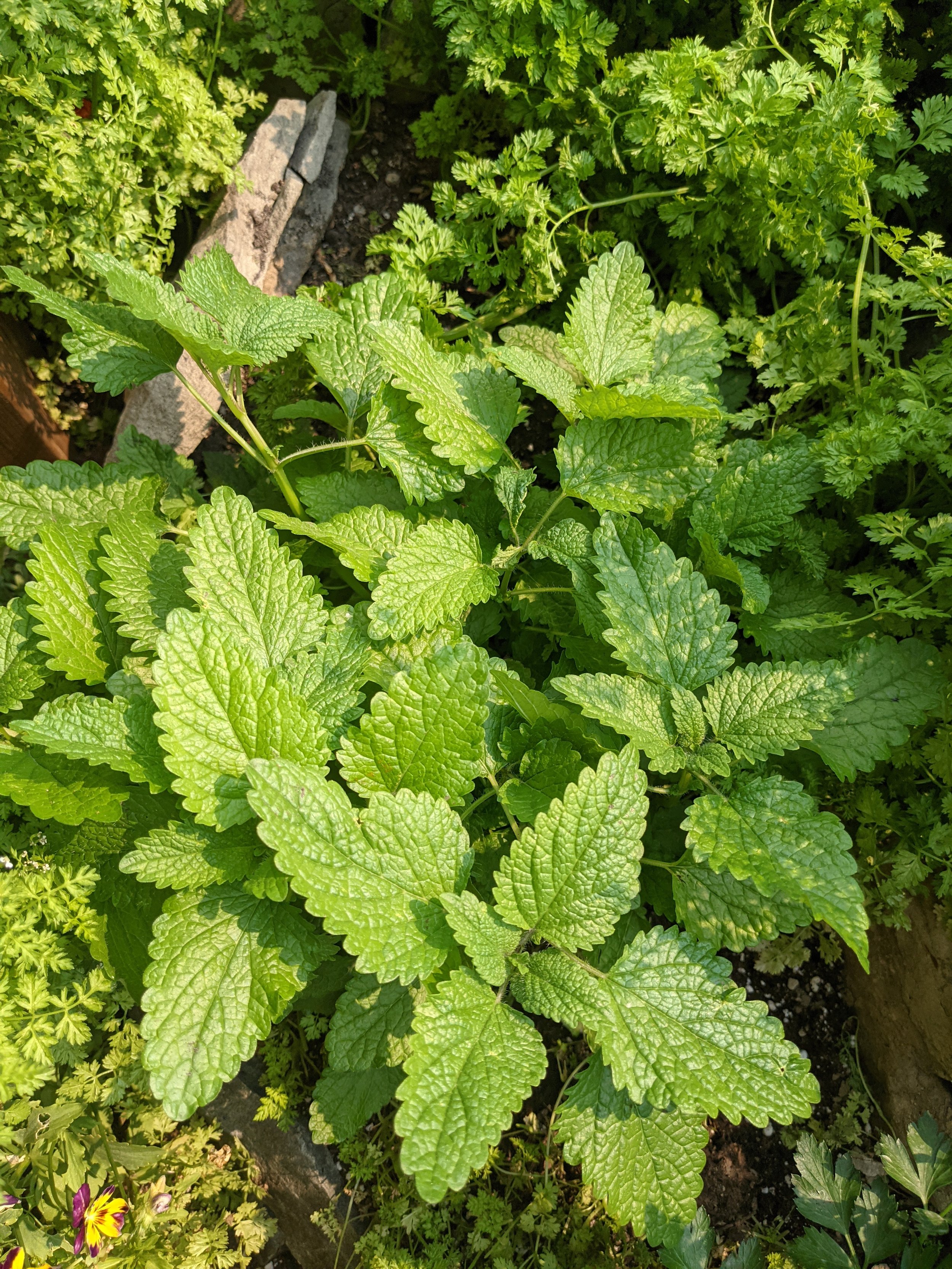
2020
The Nook
The Nook was a Covid project. We were desperate to be outside and had always intended to create spaces to gather in the Backyard Harvest Project. The Nook space was initially earmarked for the herb spiral, but we adjusted when we observed a lack of water (it was covered partially by the eavestrough), limited sun exposure, and wildlife activity (voles, it’s the voles).
We had an upcycled outdoor table (the wood was from a wedding display) that we decided to upcycle again into The Nook. With its protection from the wind, we use this space for coffee in the morning, apero in the afternoon, and late evening glasses of wine under the string lights. During covid, we even created a Christmas lounge to entertain friends outdoors. At the end of 2022 we installed wire across the top of The Nook in hopes we’ll have an ivy canopy by the end of 2023.
What we grow: Ivy, ornamental flowers in pots, connection with each other.
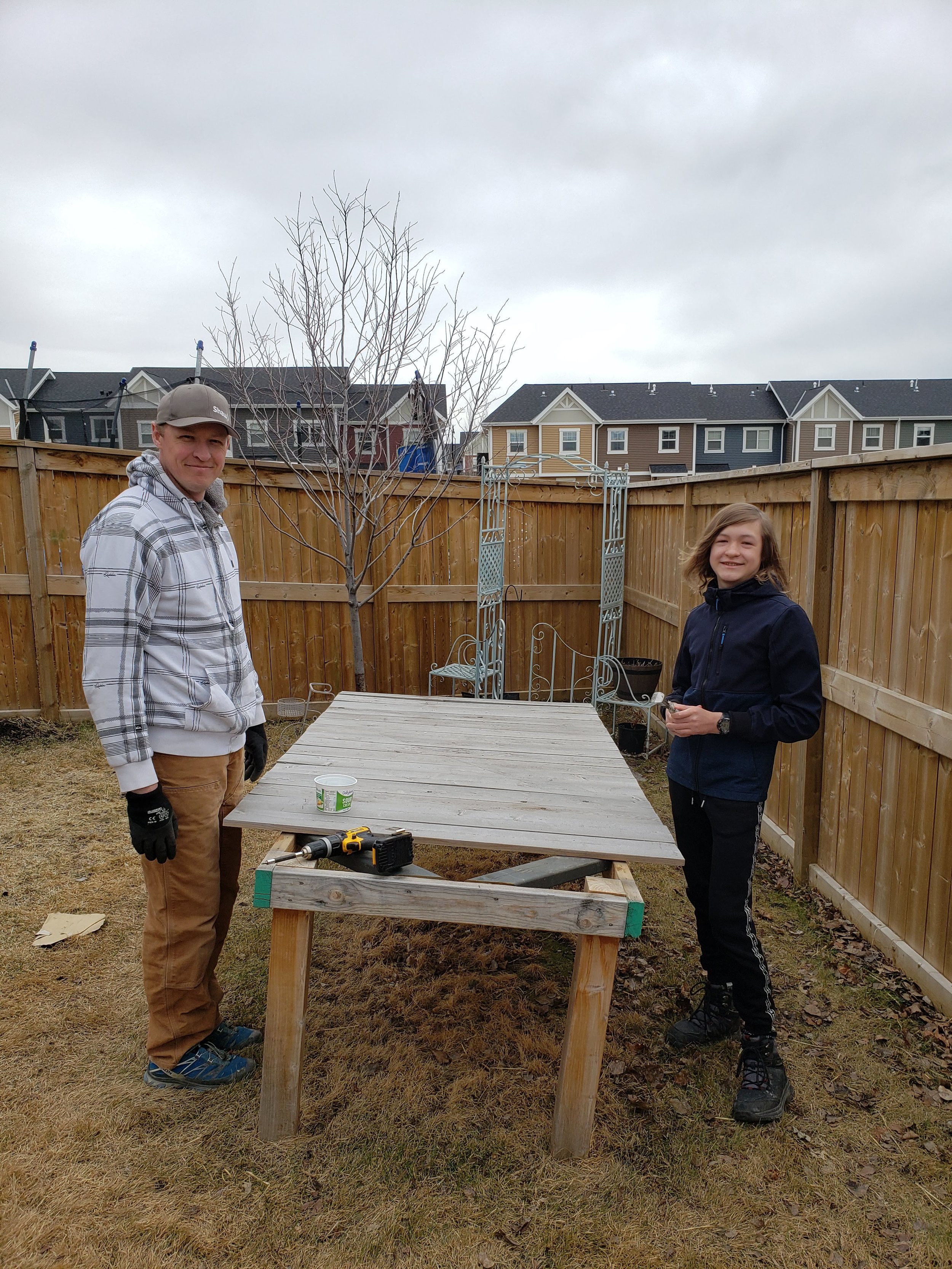
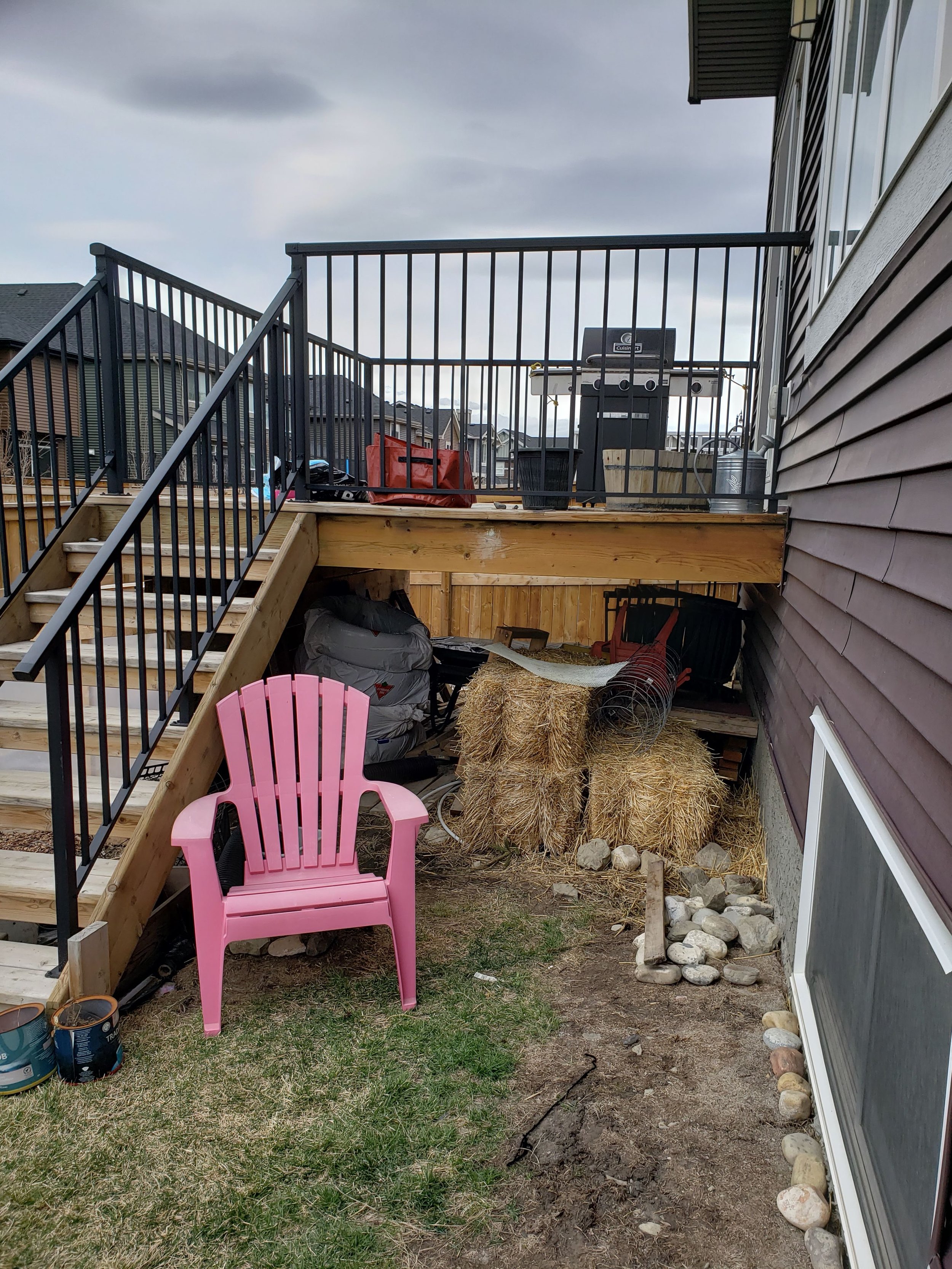
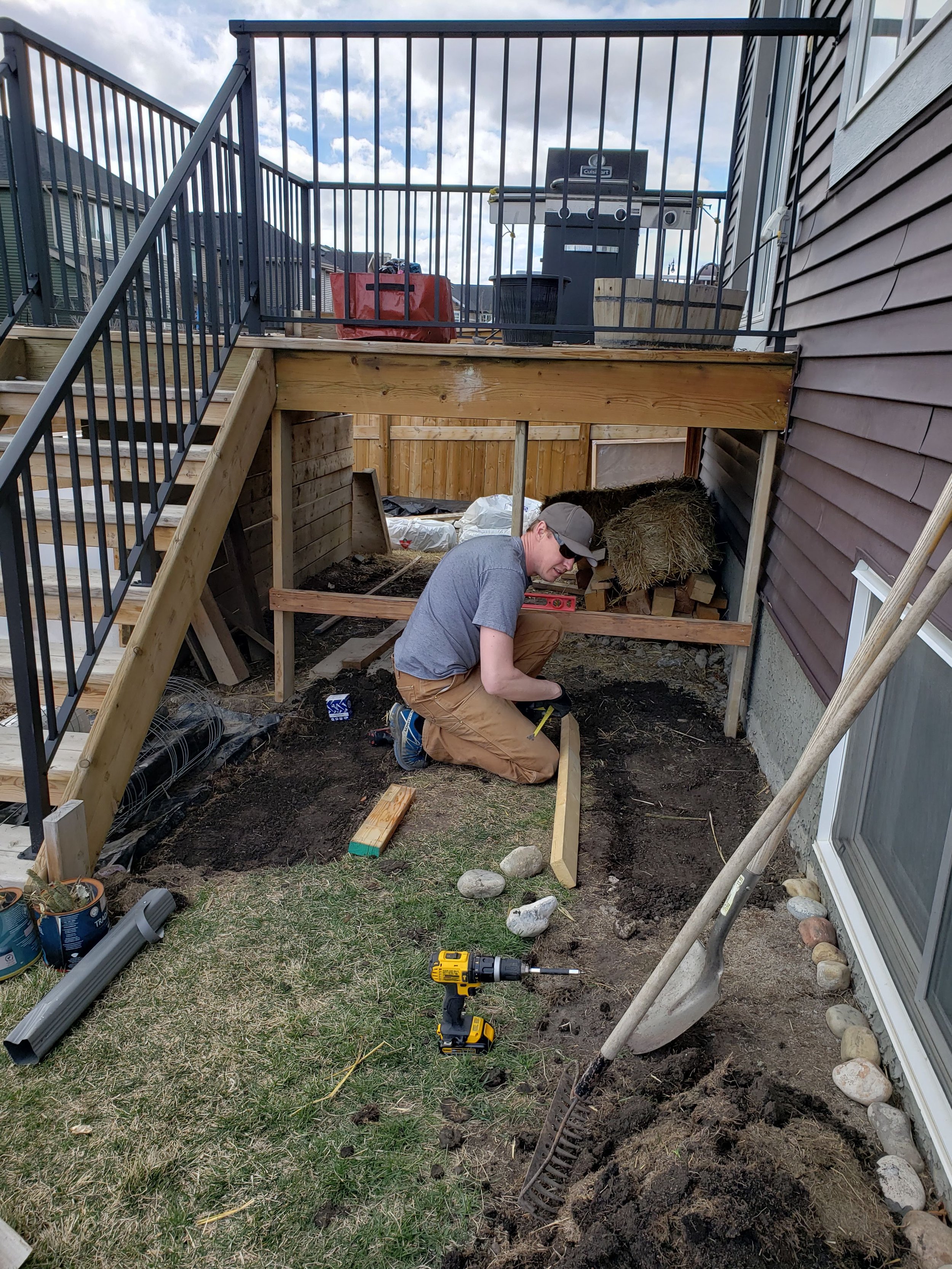
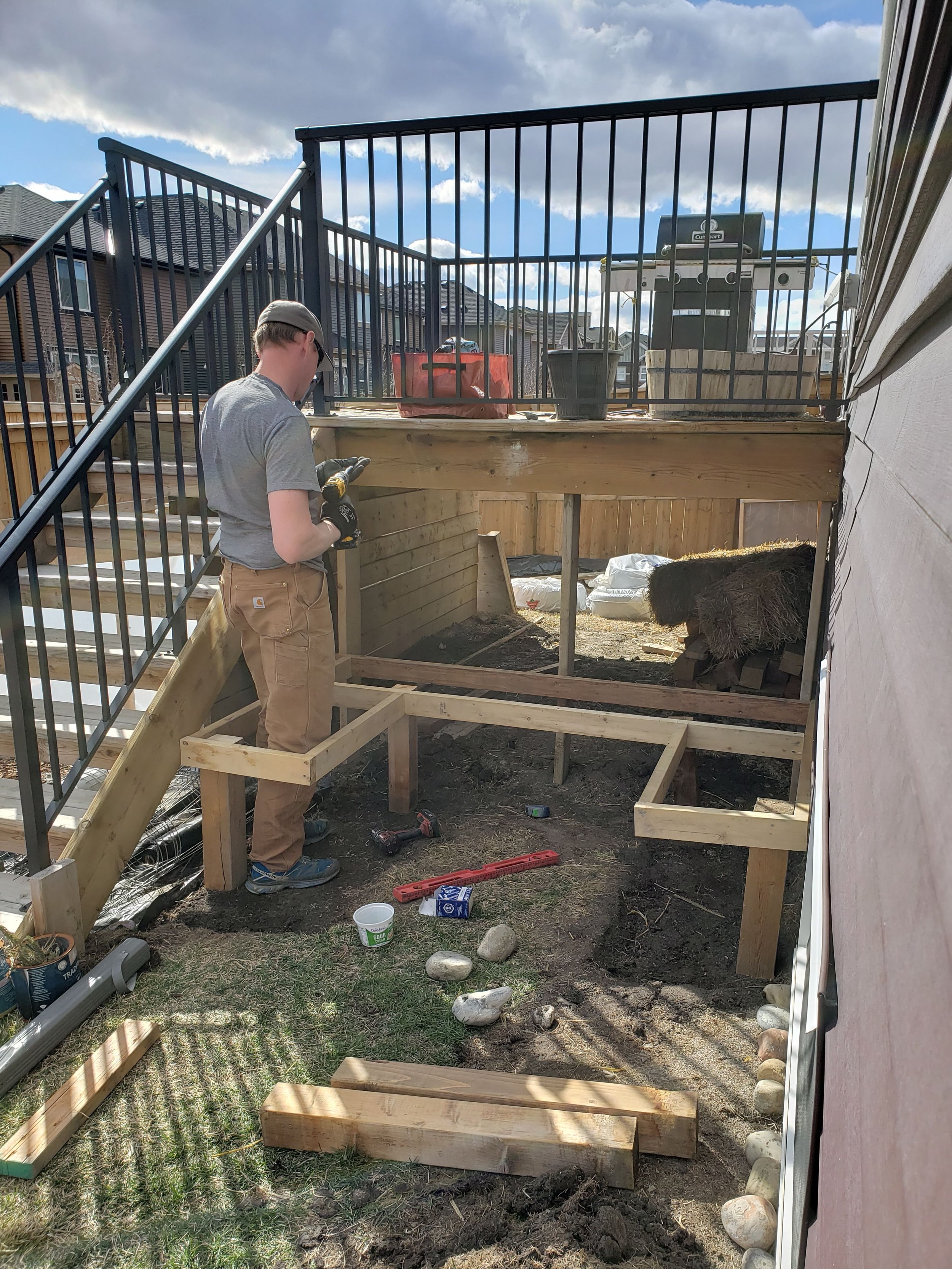

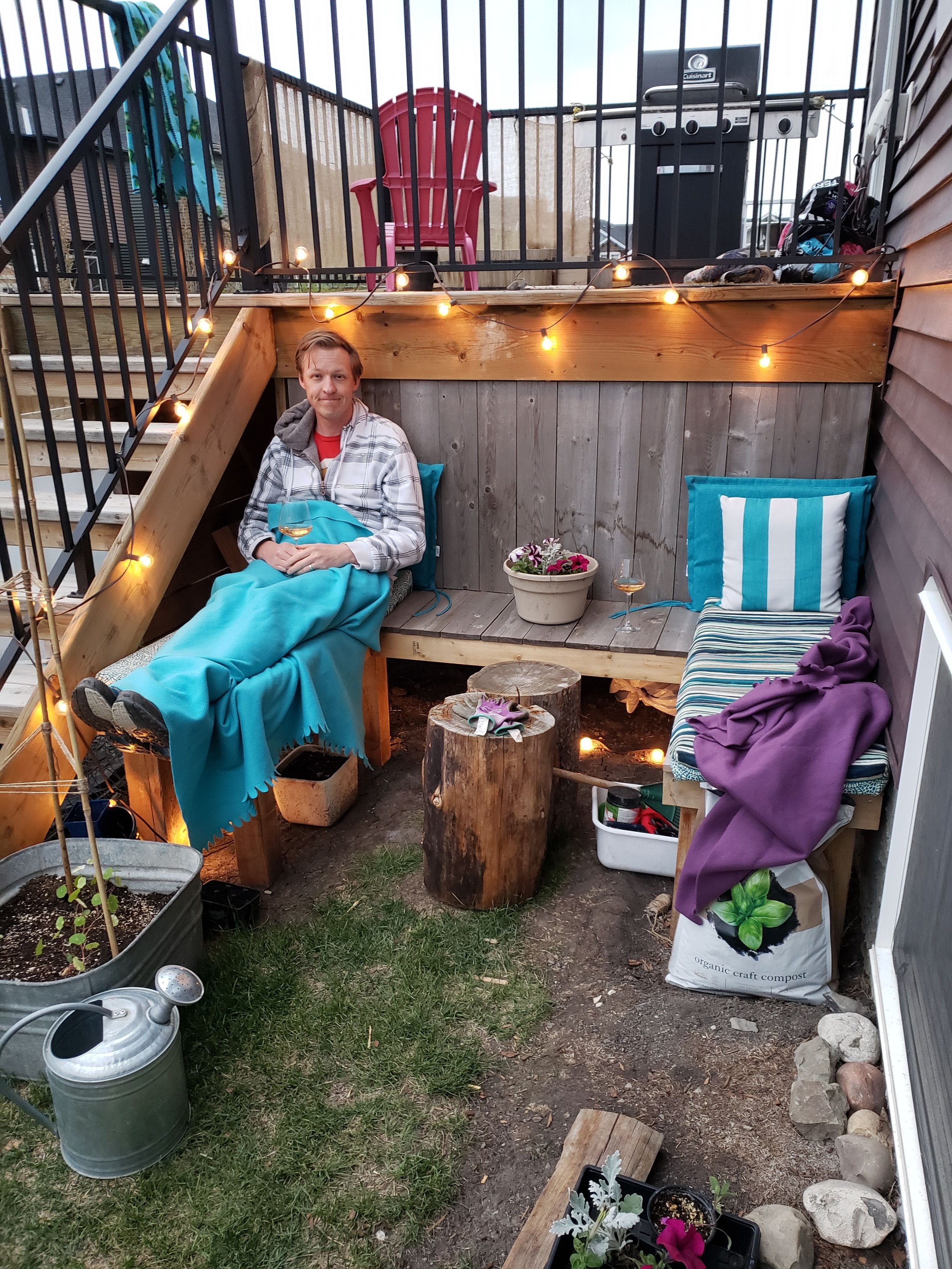

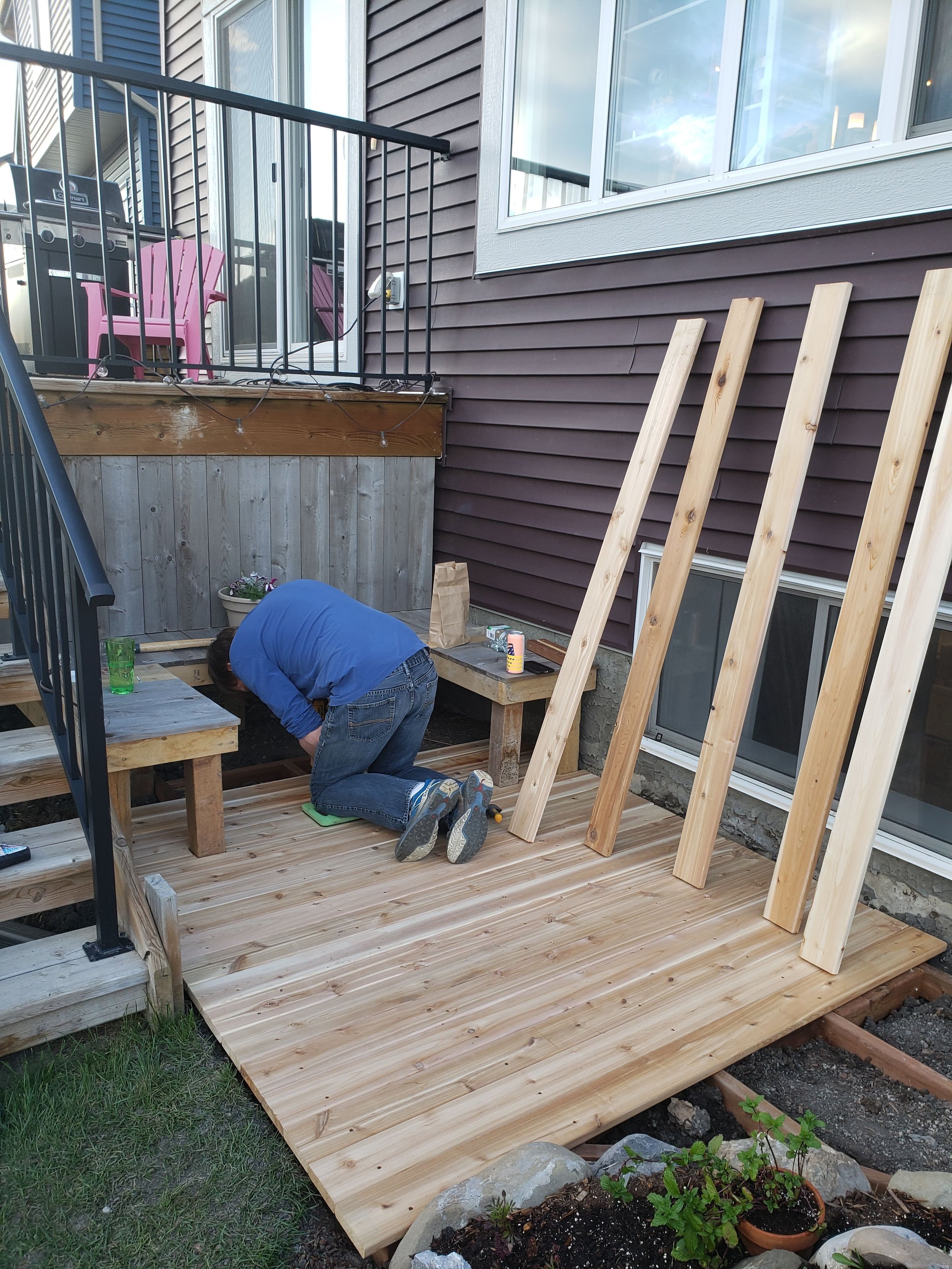

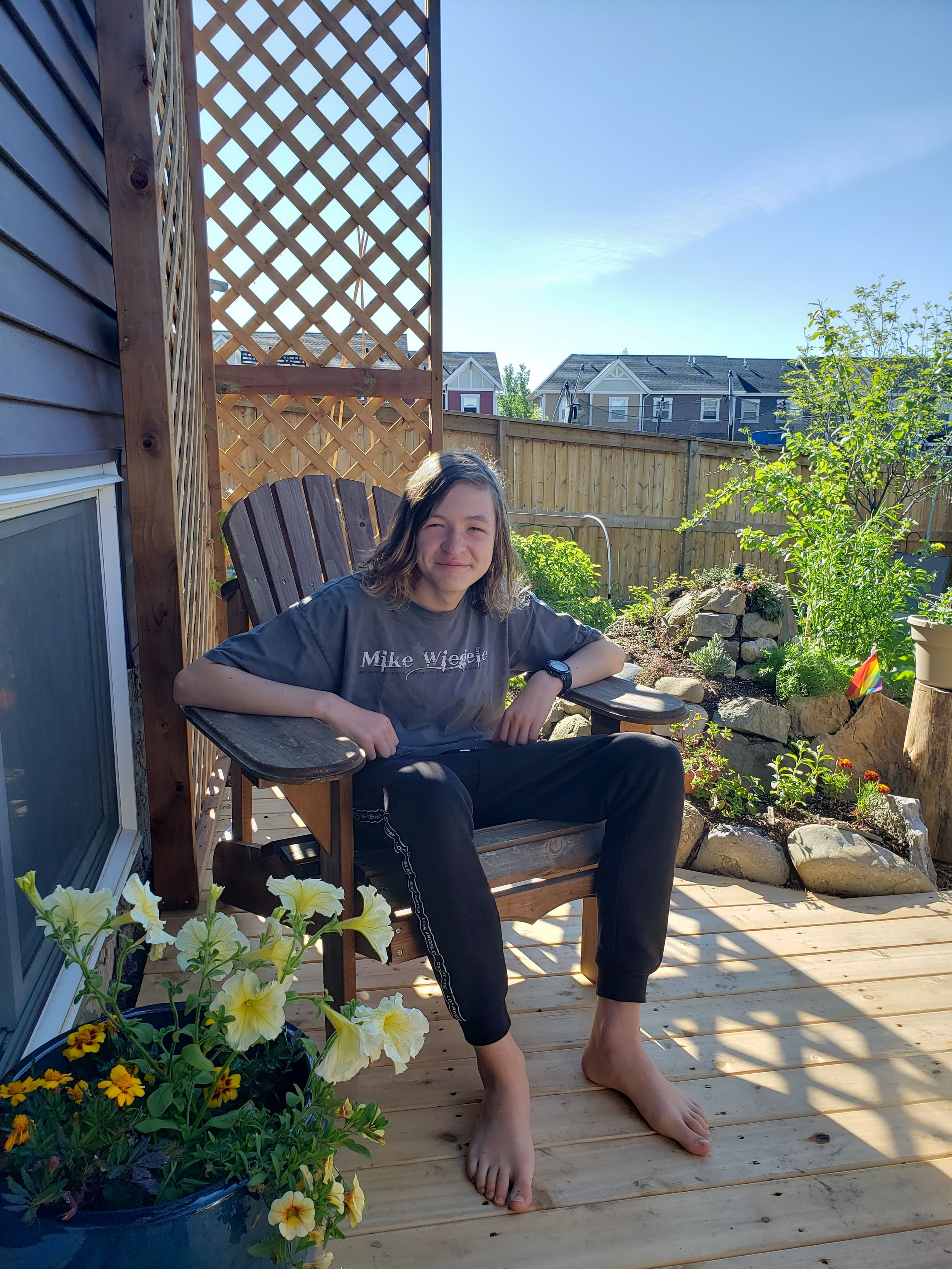

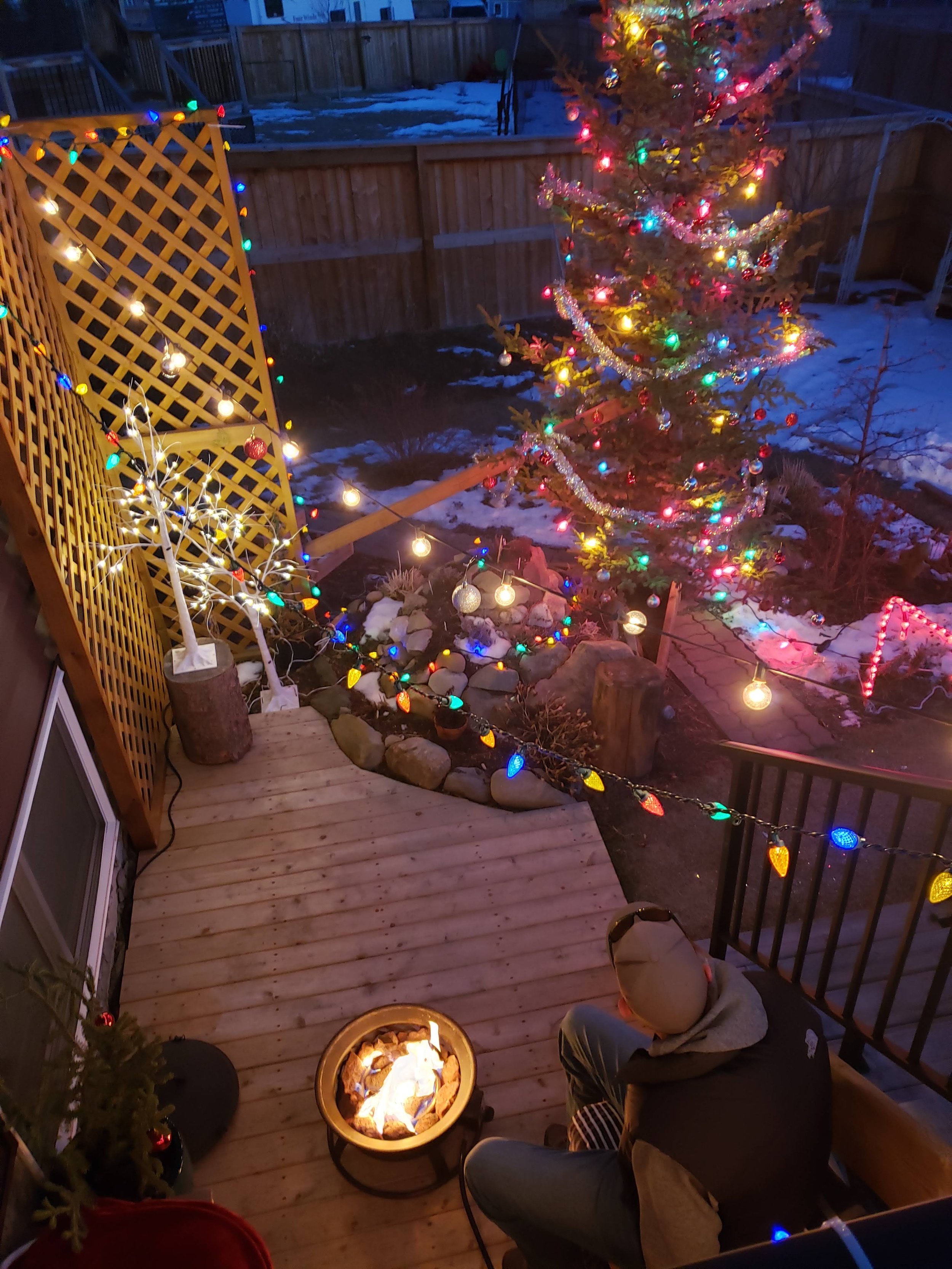
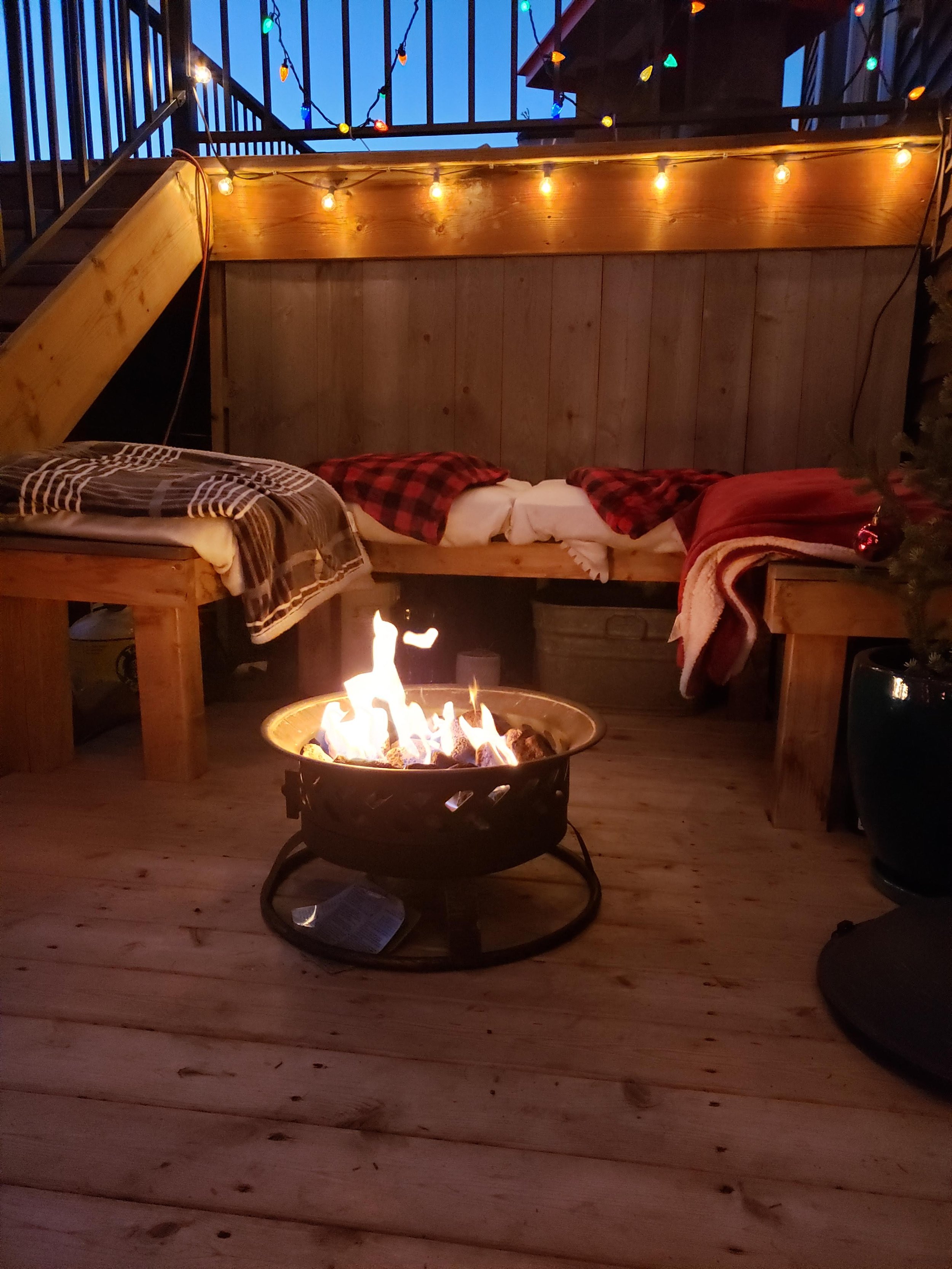
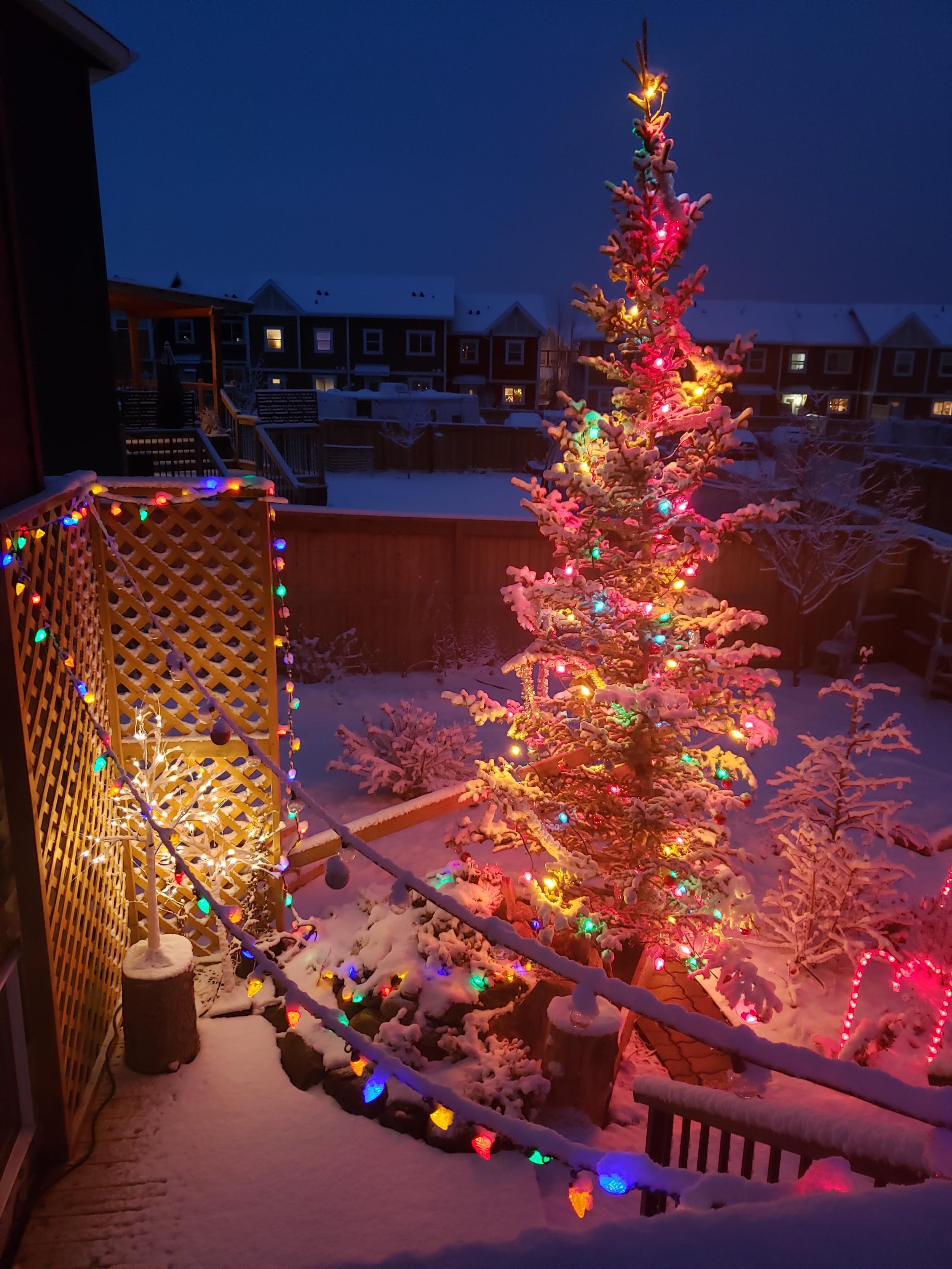
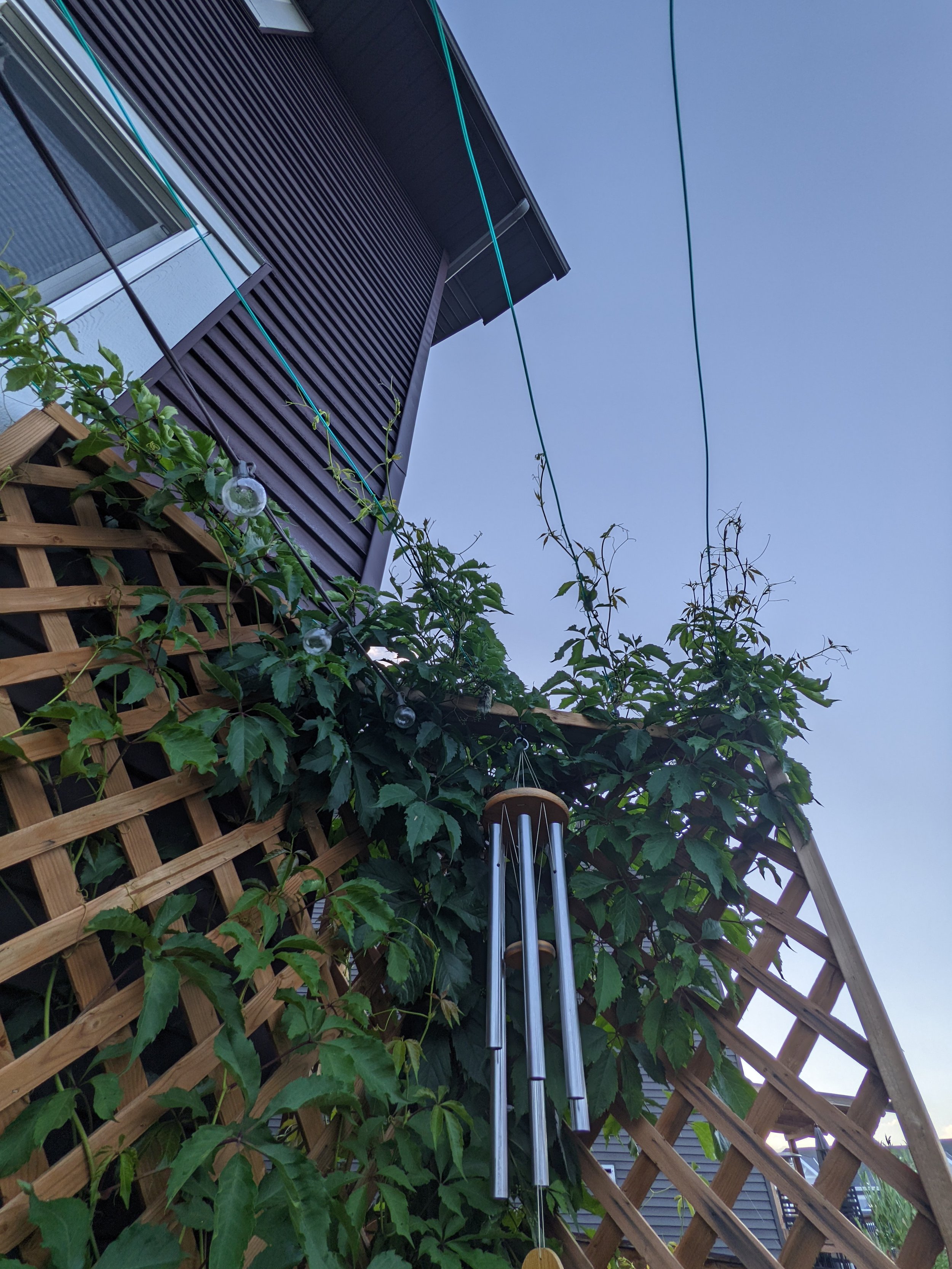
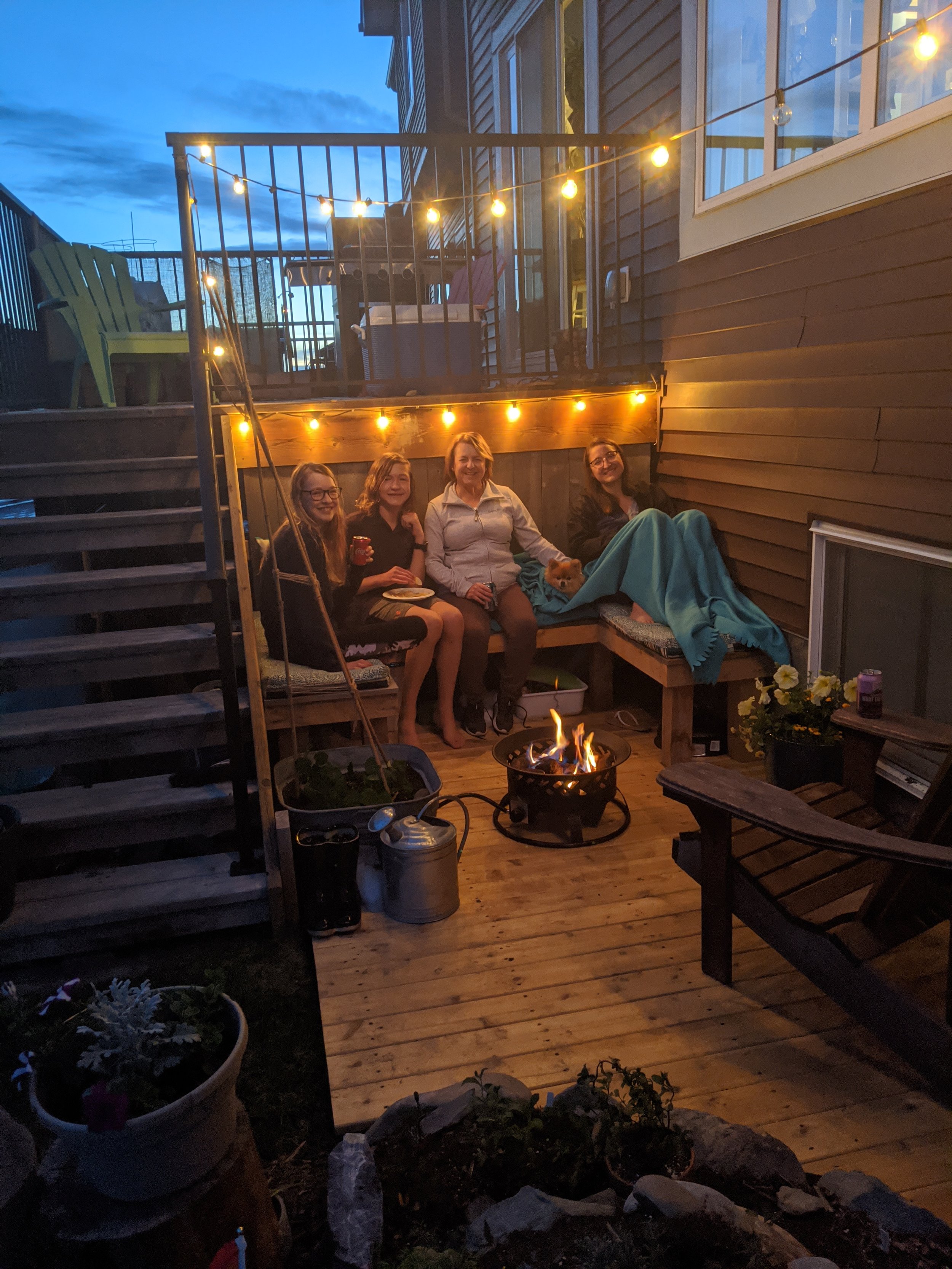
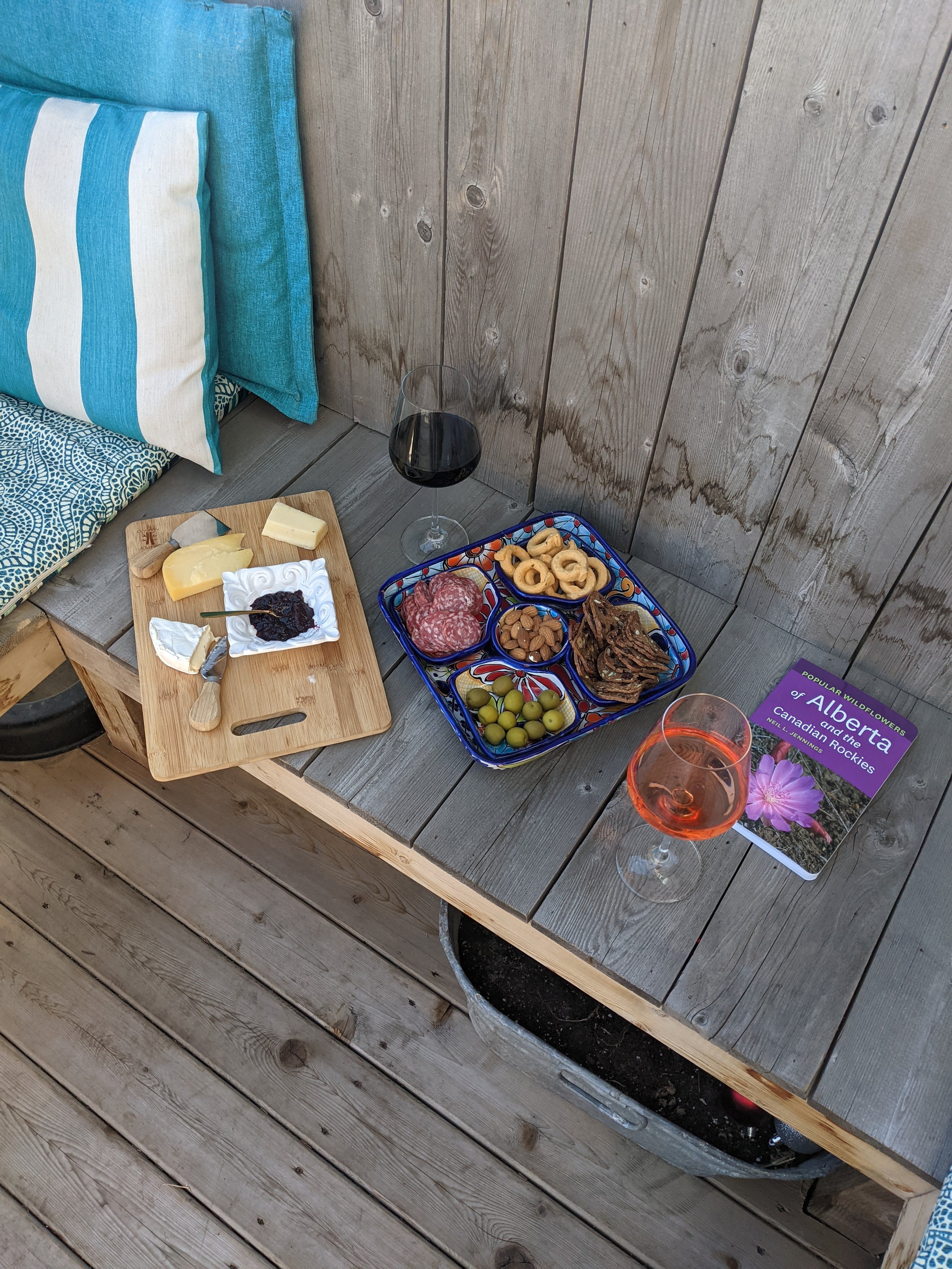
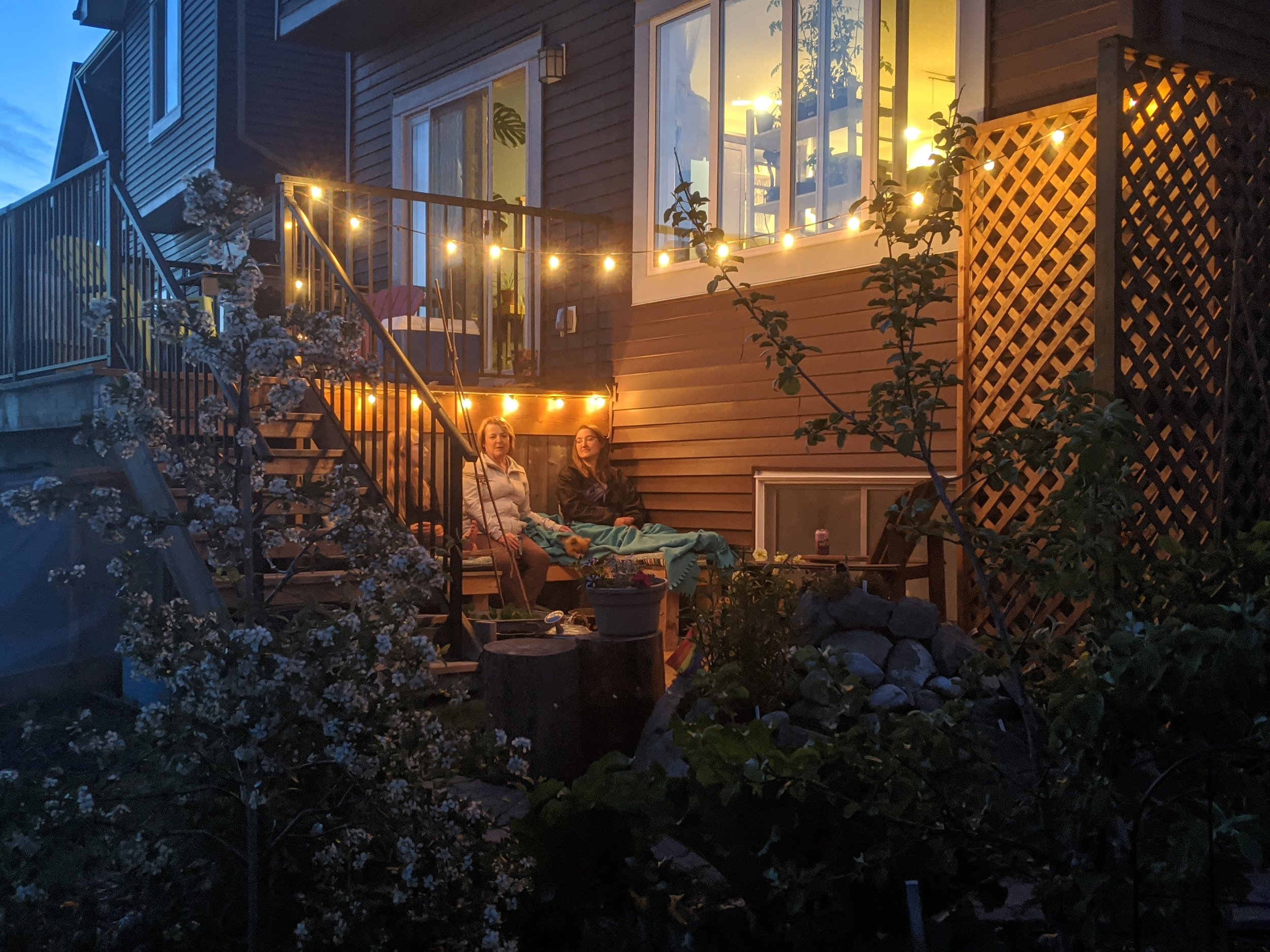
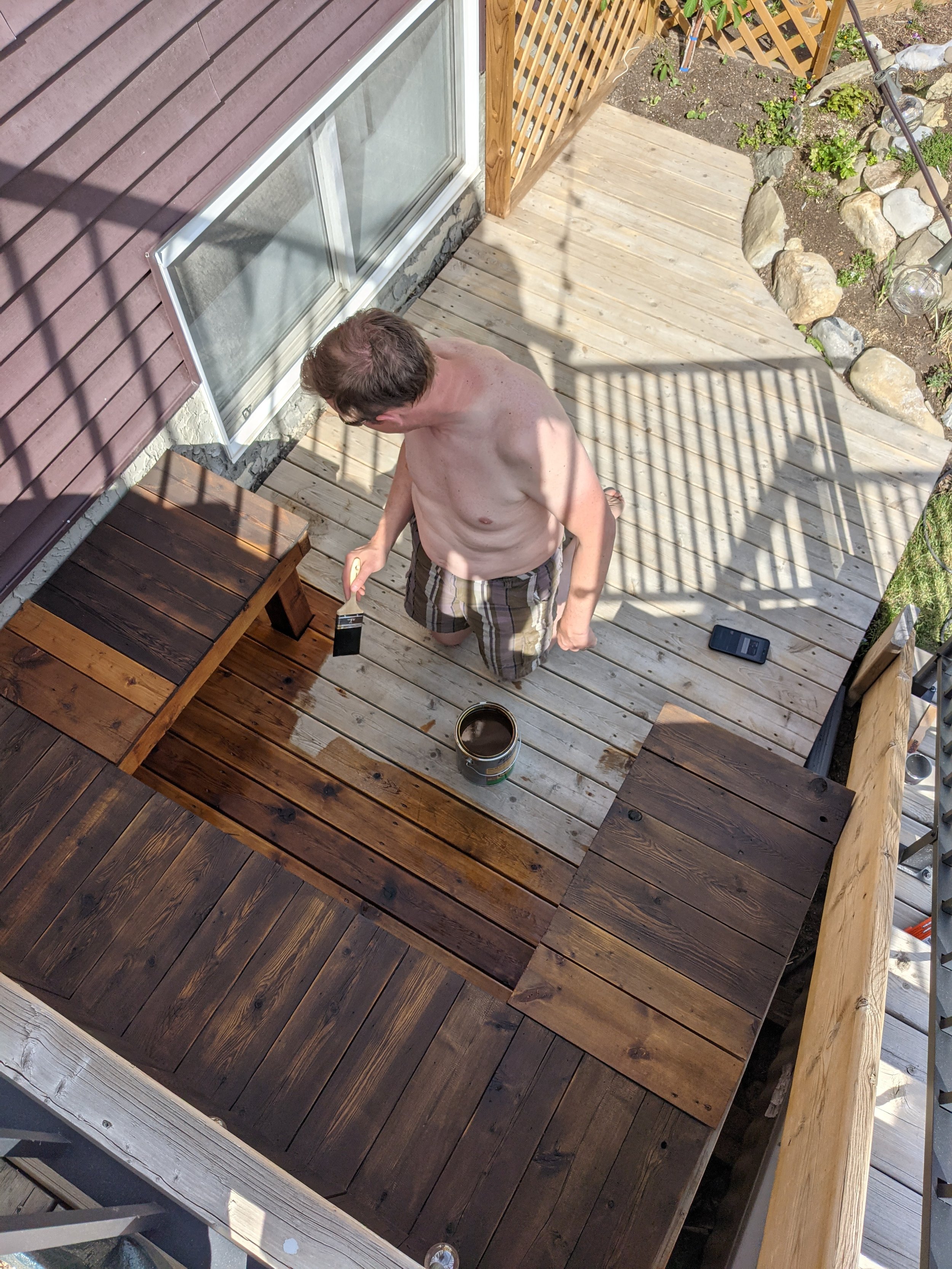
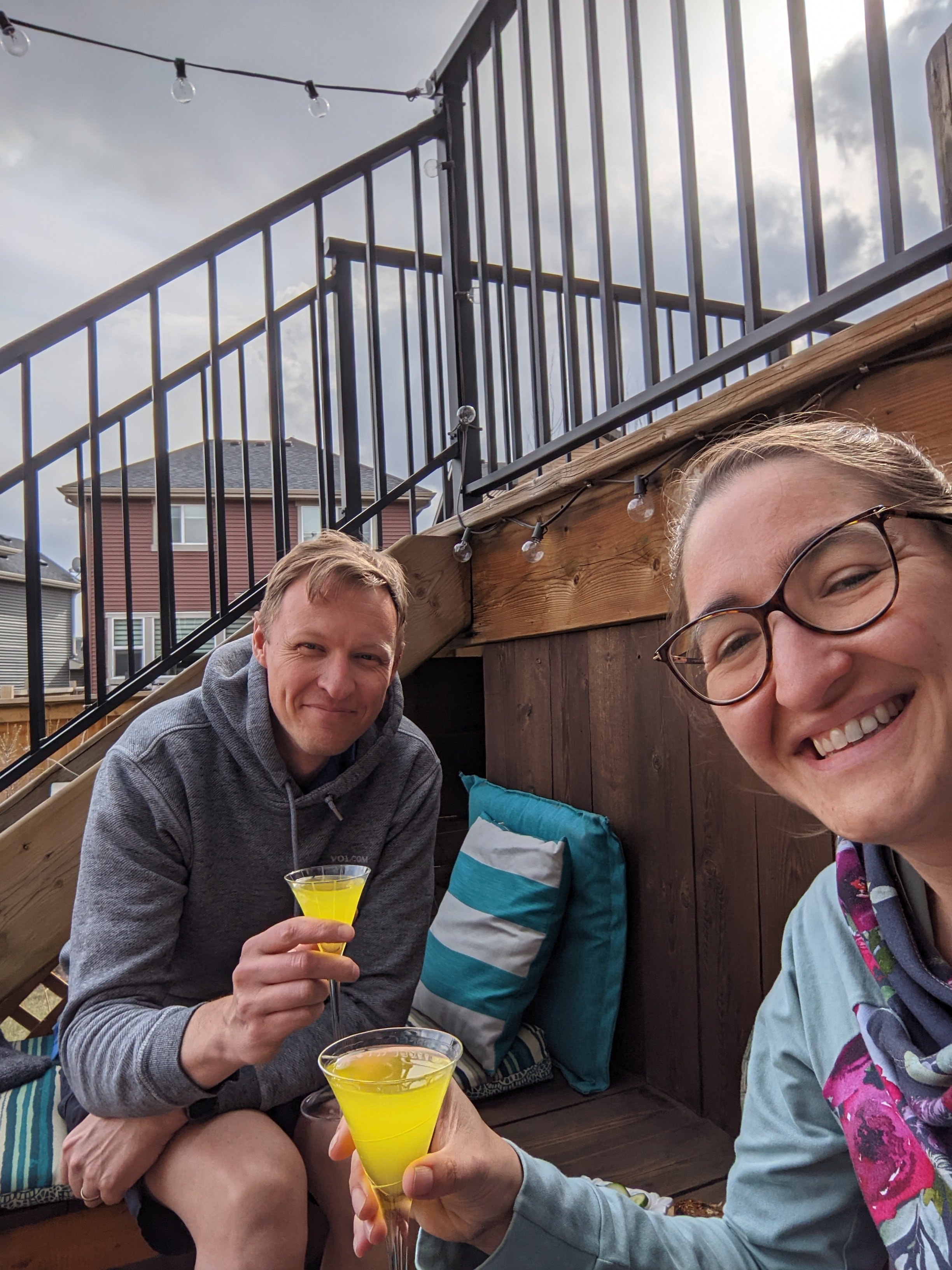

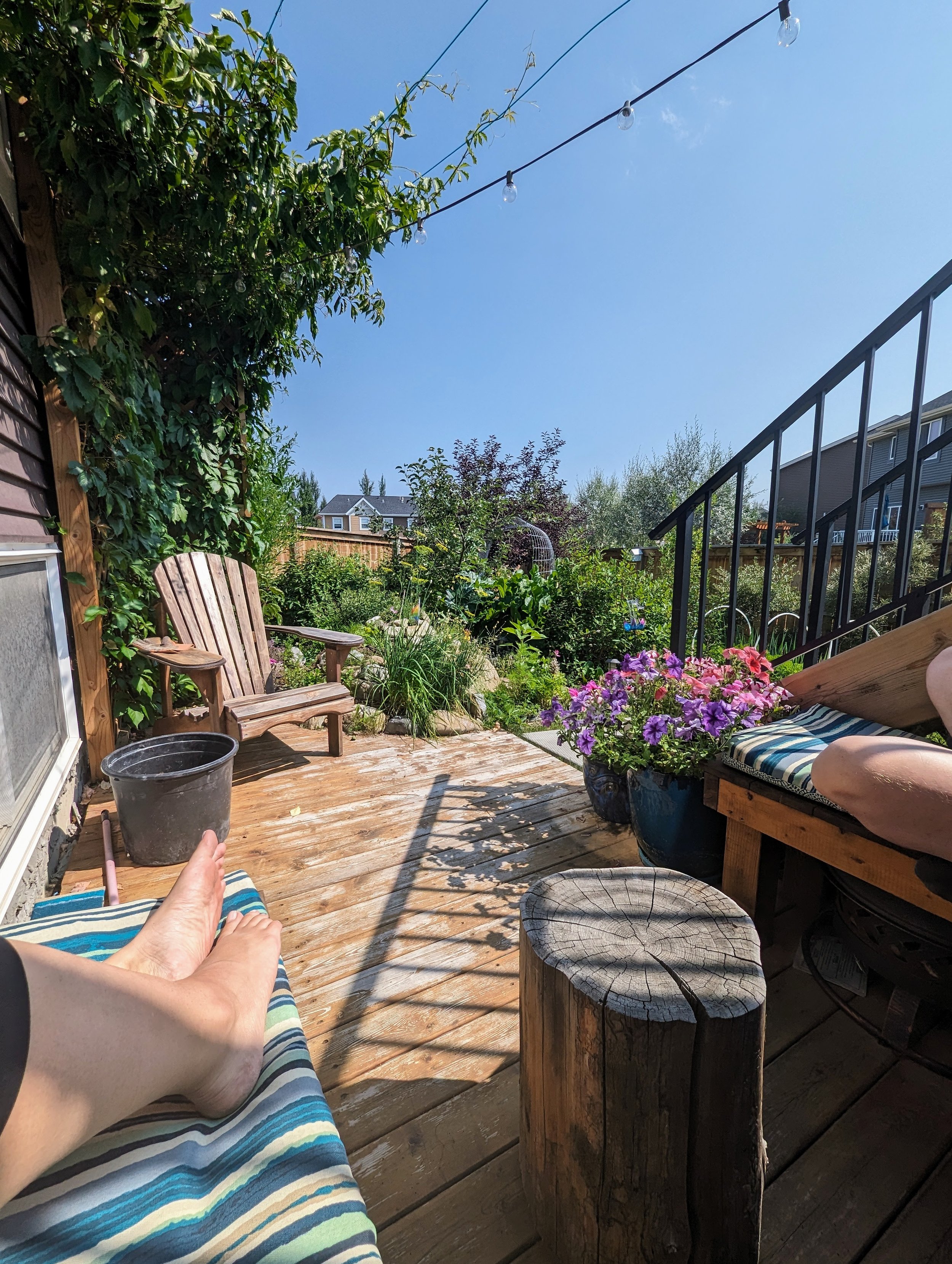
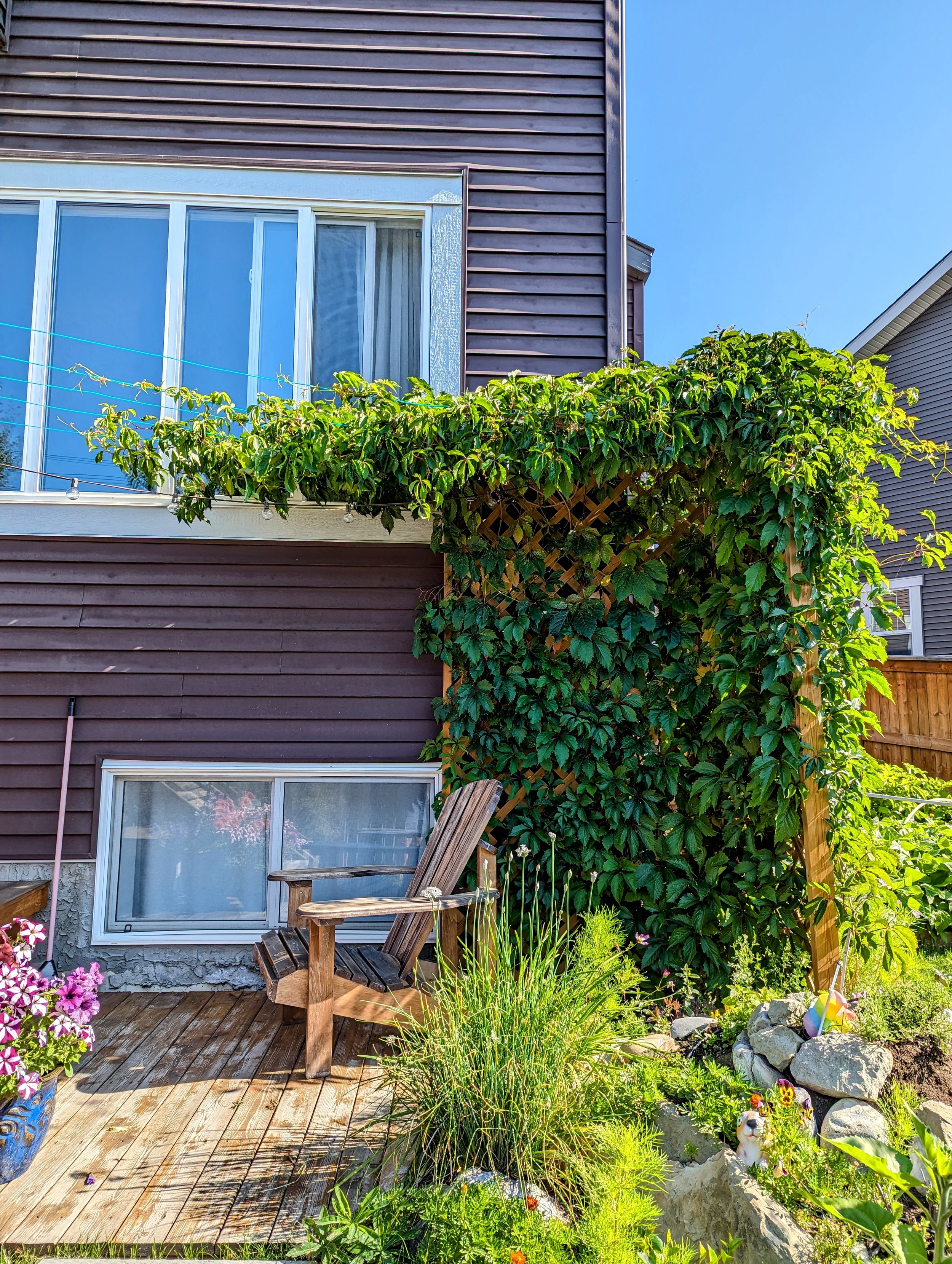
2020
The Alley Garden
I noticed a diversity of weeds thriving in the alley behind our backyard. It has full sun, and water drains from the yards into the alley. So we decided to dig out the very limited space along the fence (we’re talking 2-4” in some spots), and plant some seeds. It was labour intensive, but it worked just as I had hoped. We used reclaimed wood and town compost in the second year to create a more permanent bed. It’s only 4” wide, but it produces abundant flowers. Our neighbours often comment how much they love walking past :-)
What we grow: Sunflowers, cosmos, dianthus, mallow, zinnia, calendula, and any other wildflowers I can get my hands on!
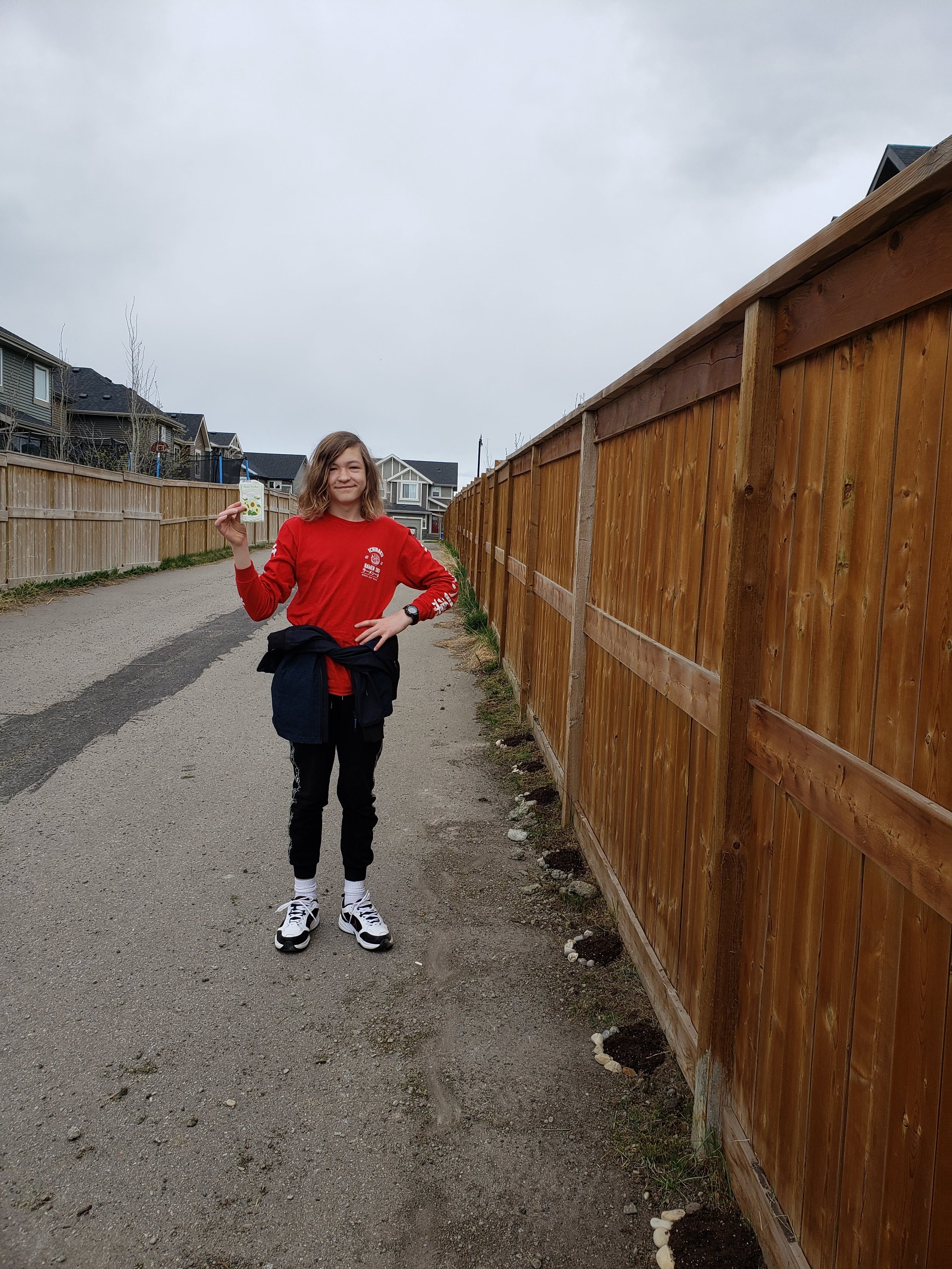
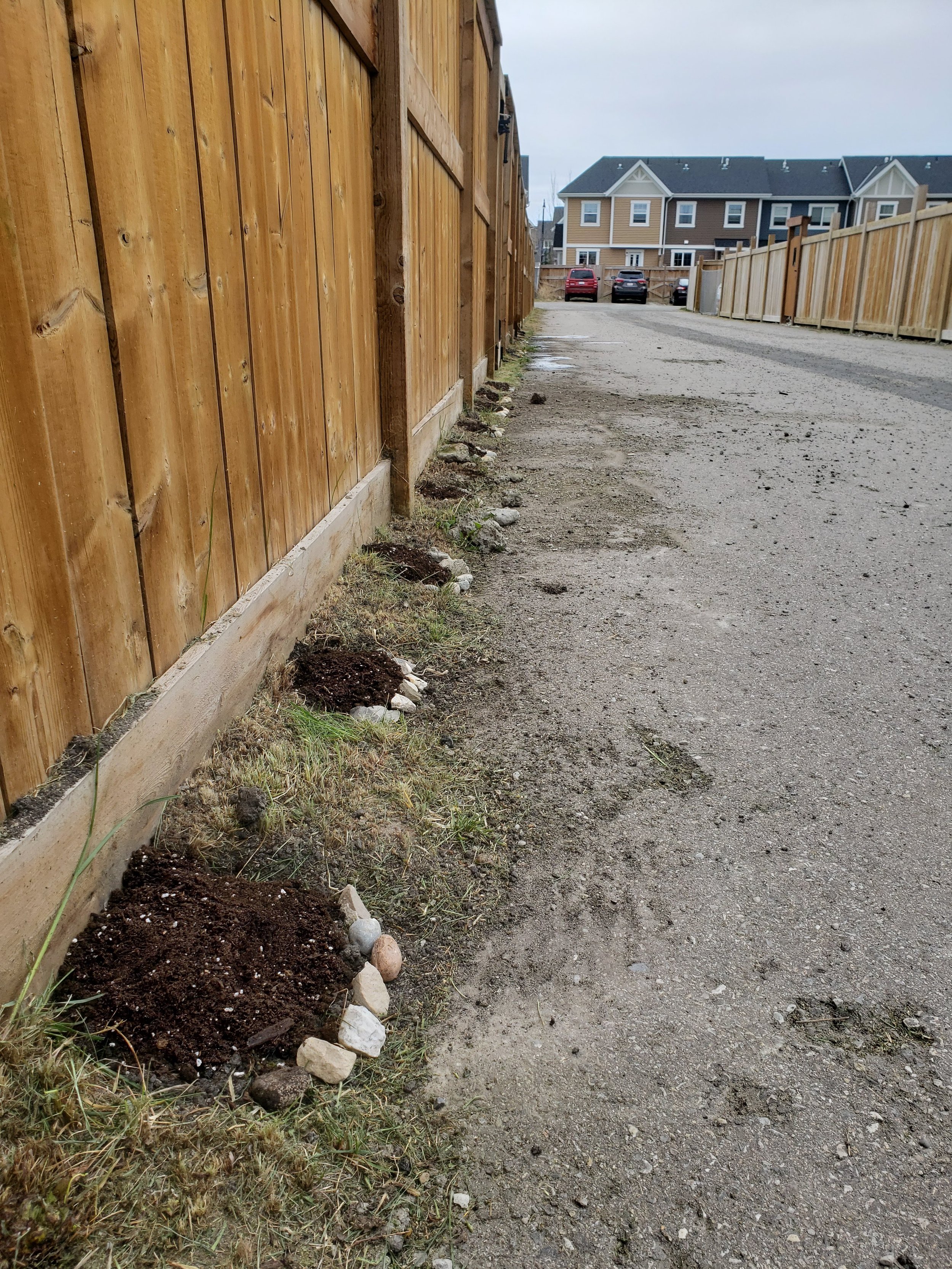
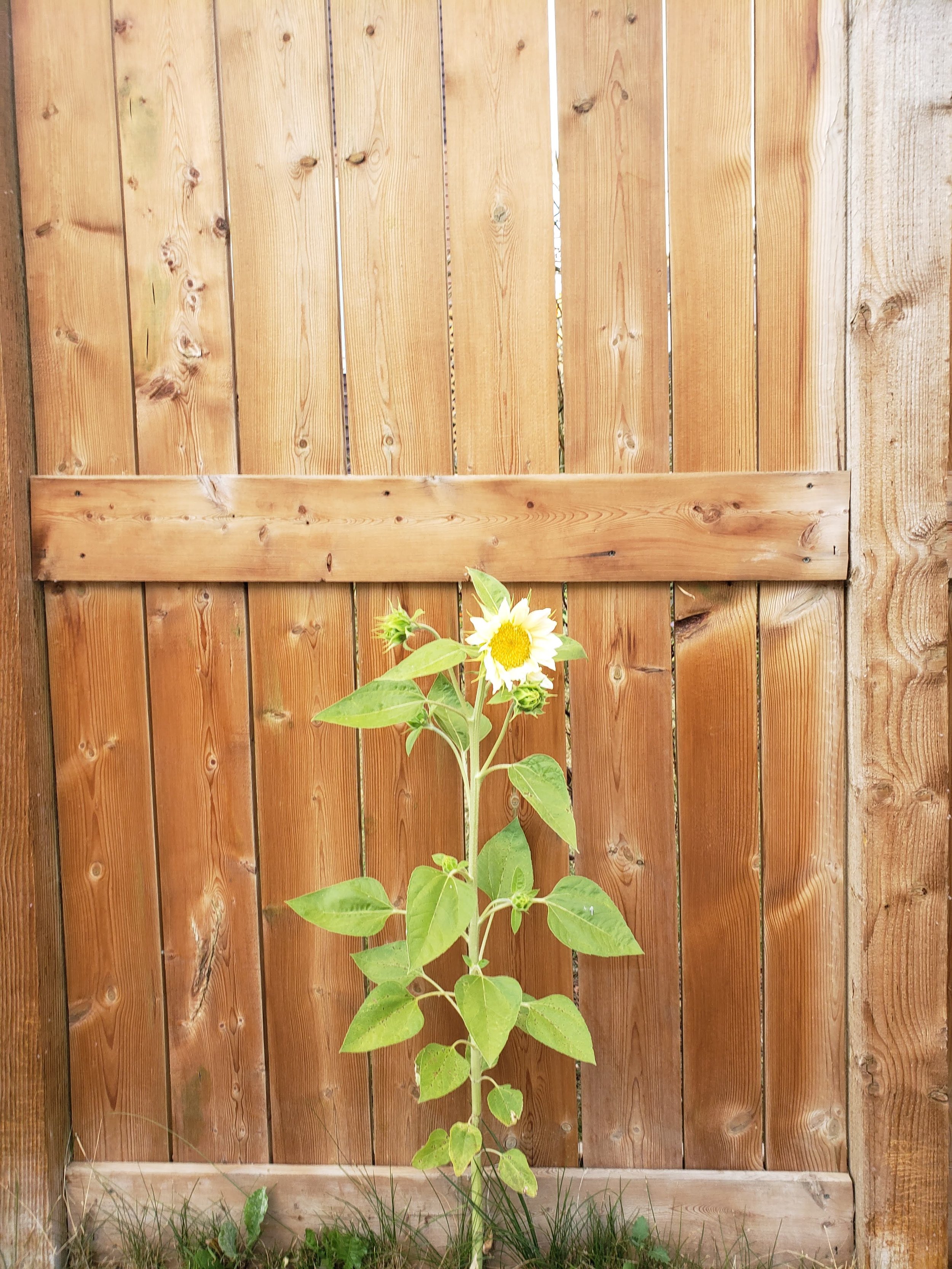
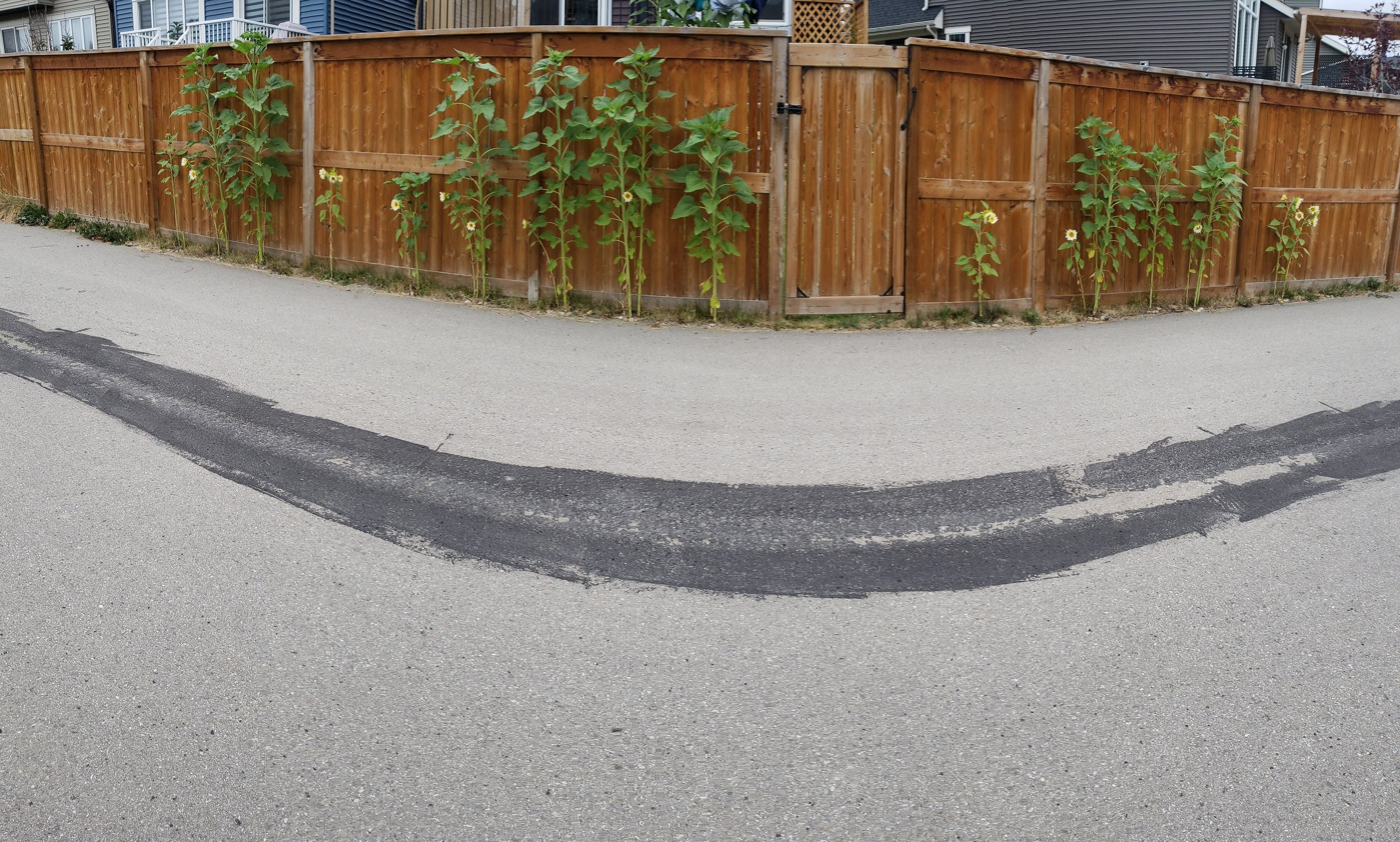
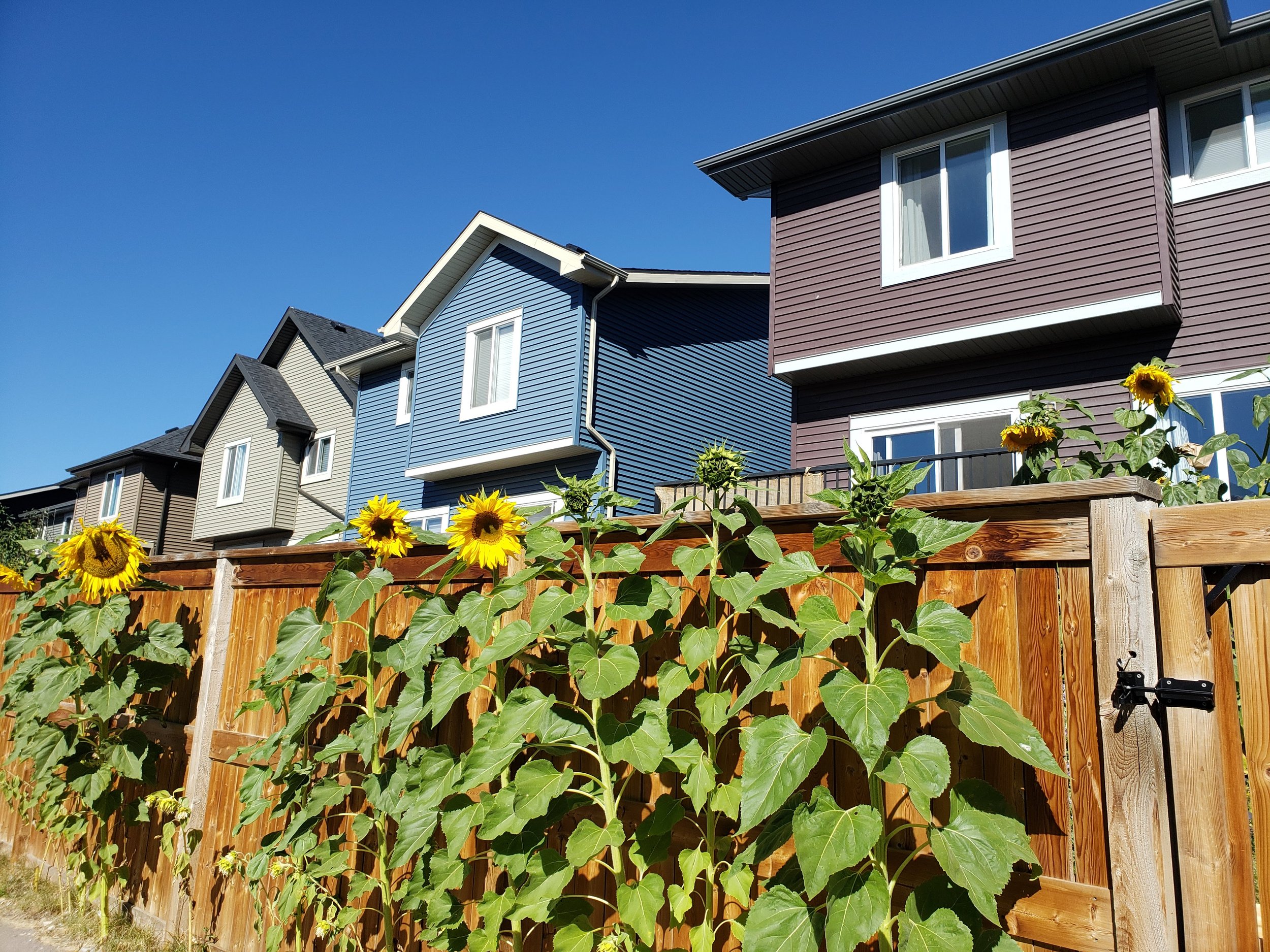
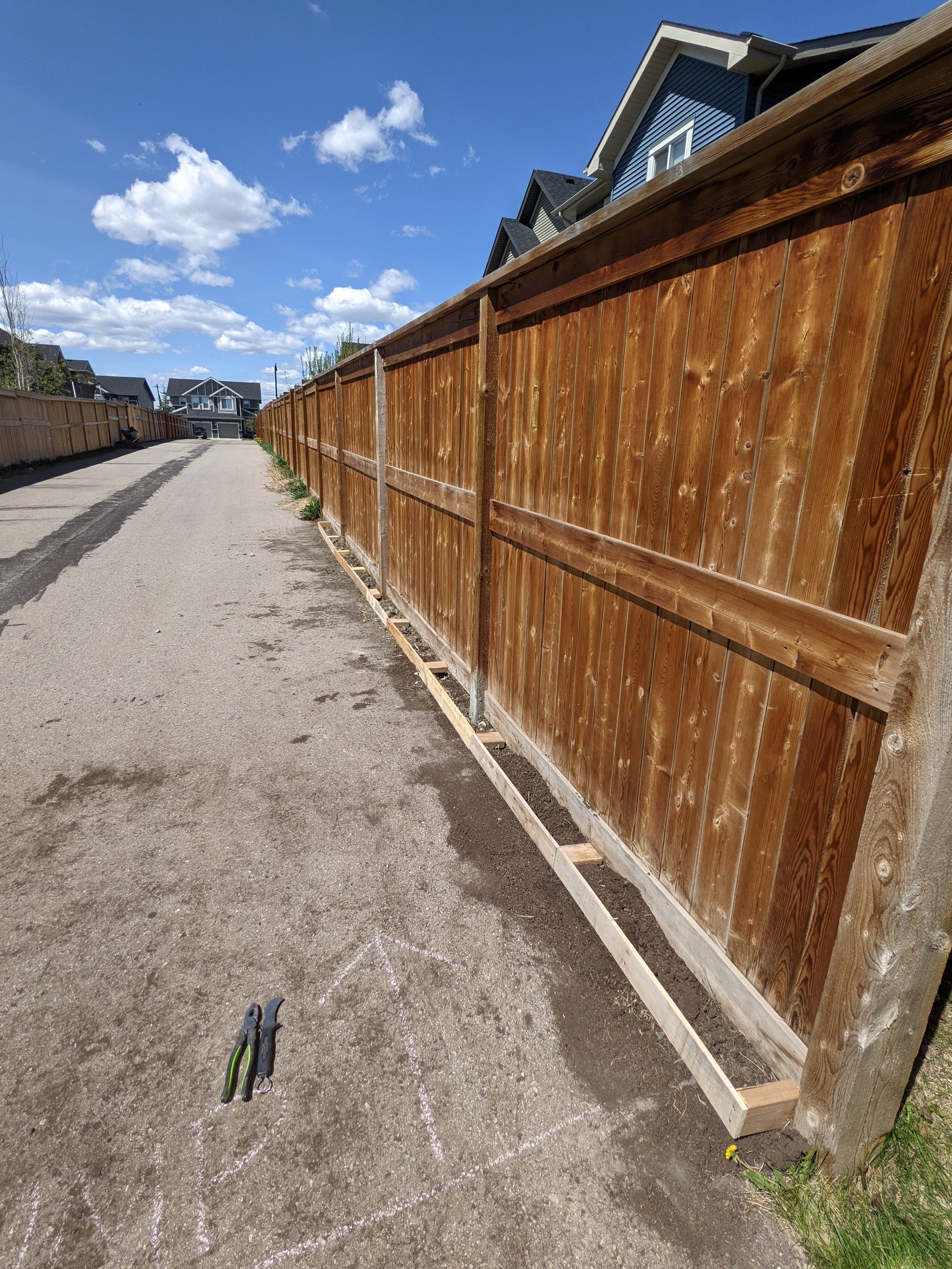
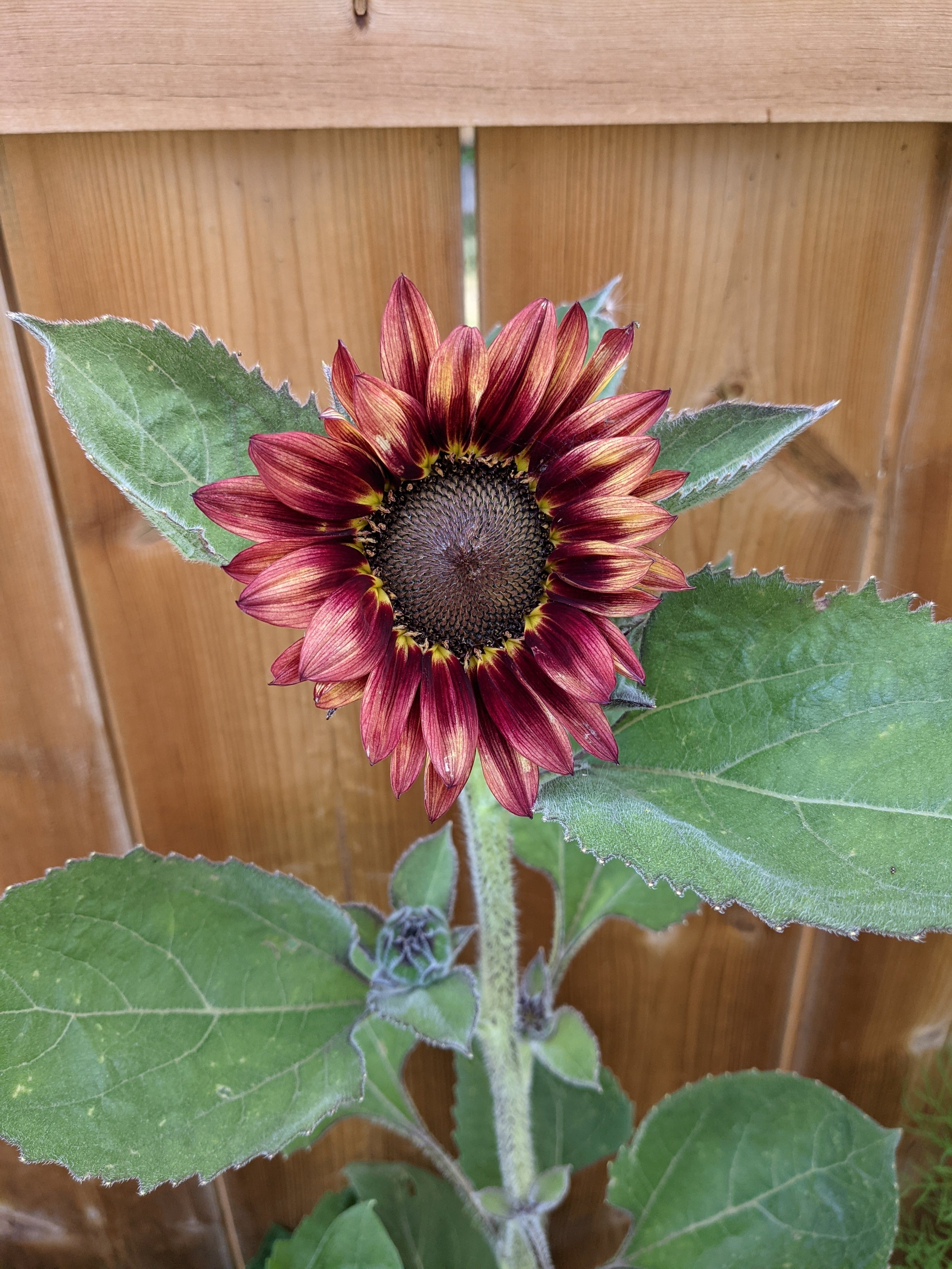
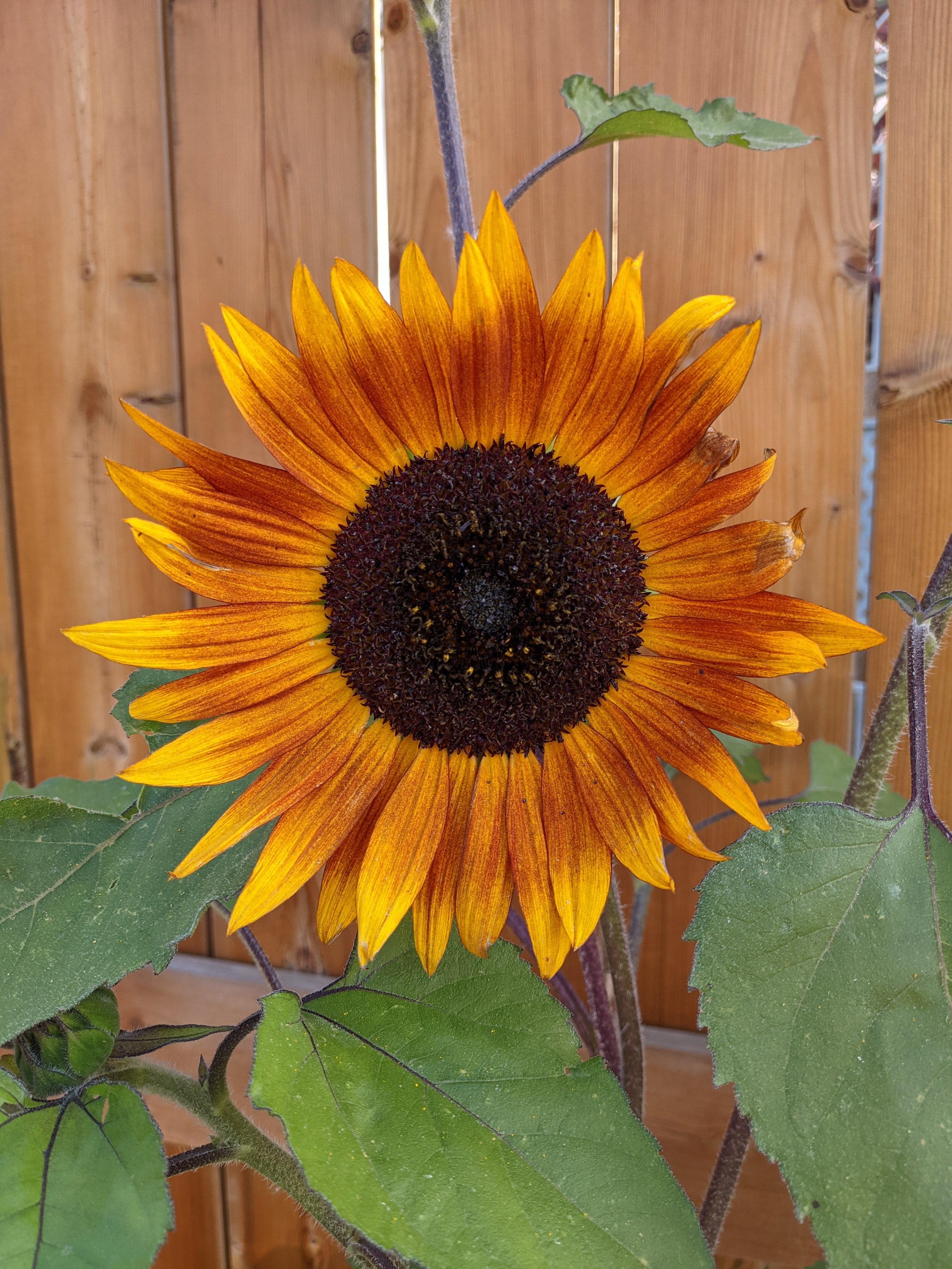
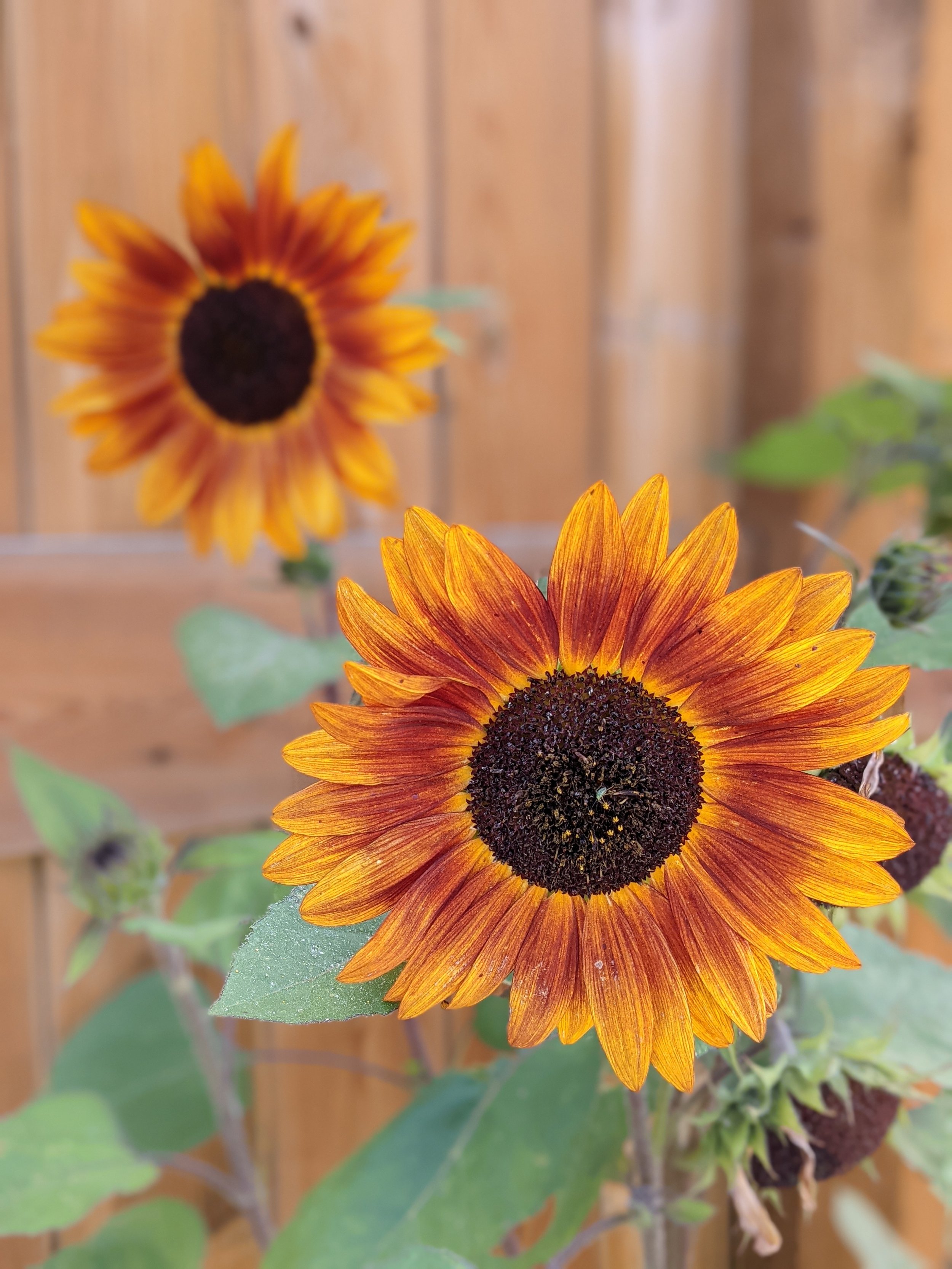
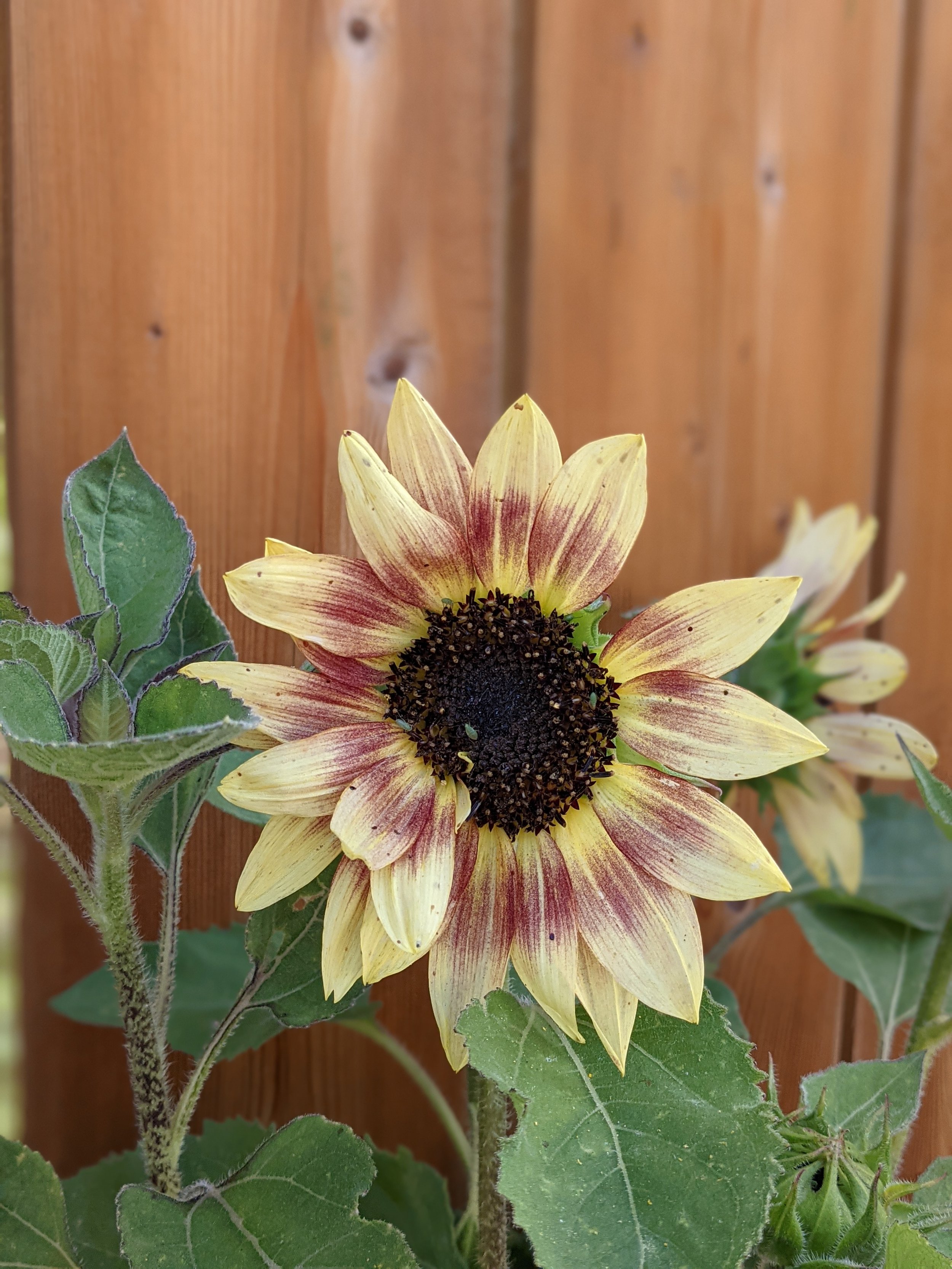
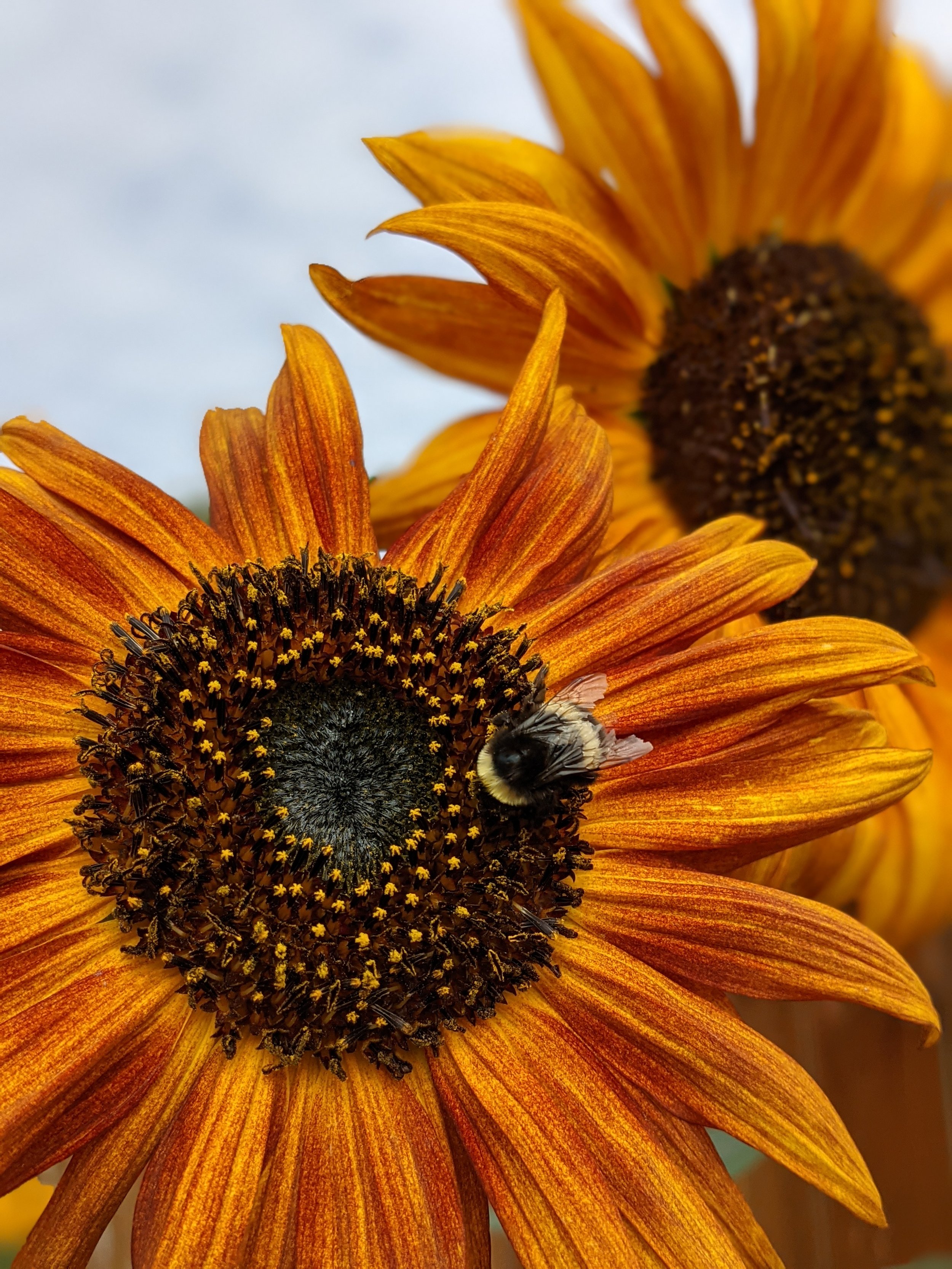
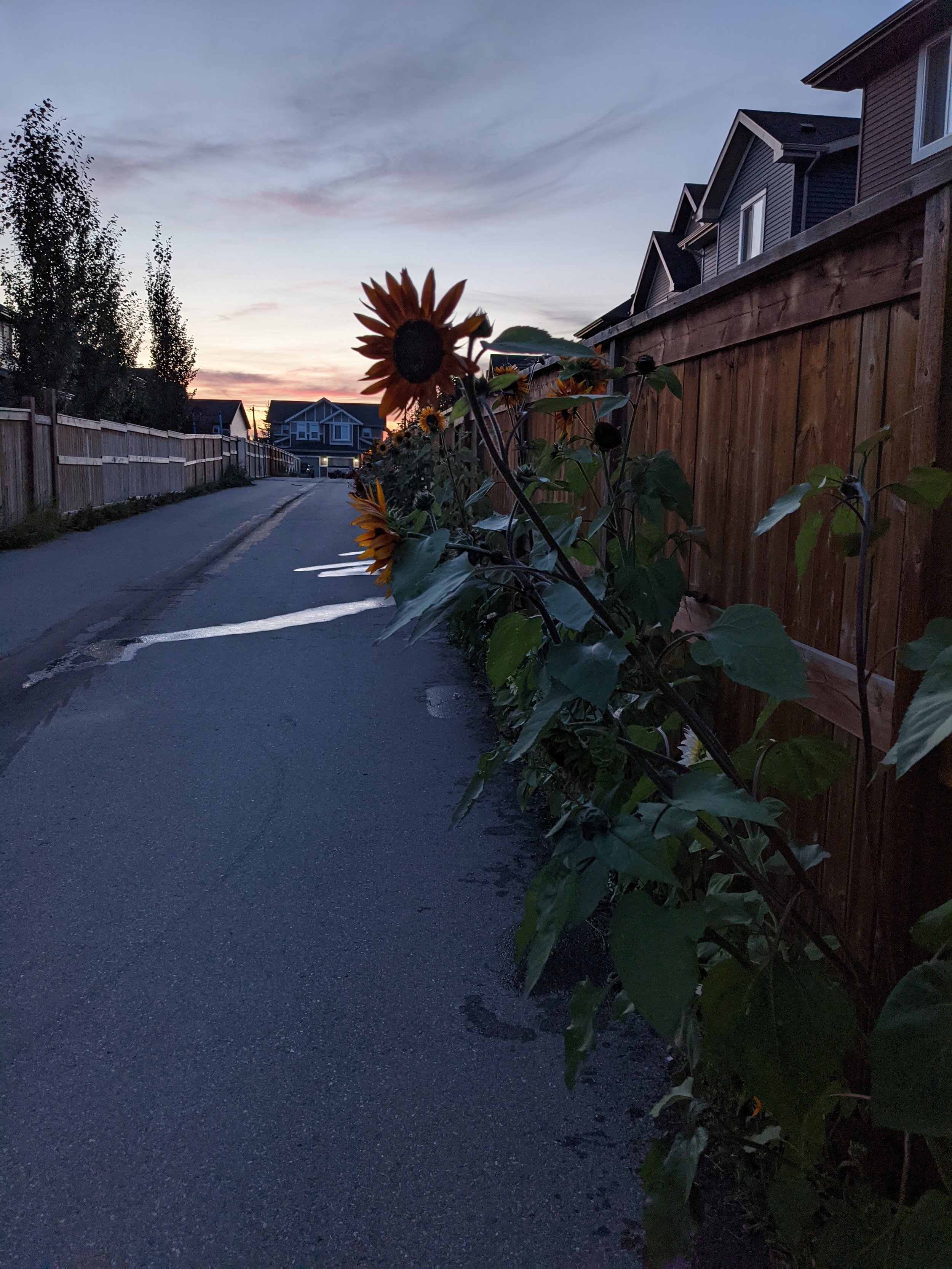

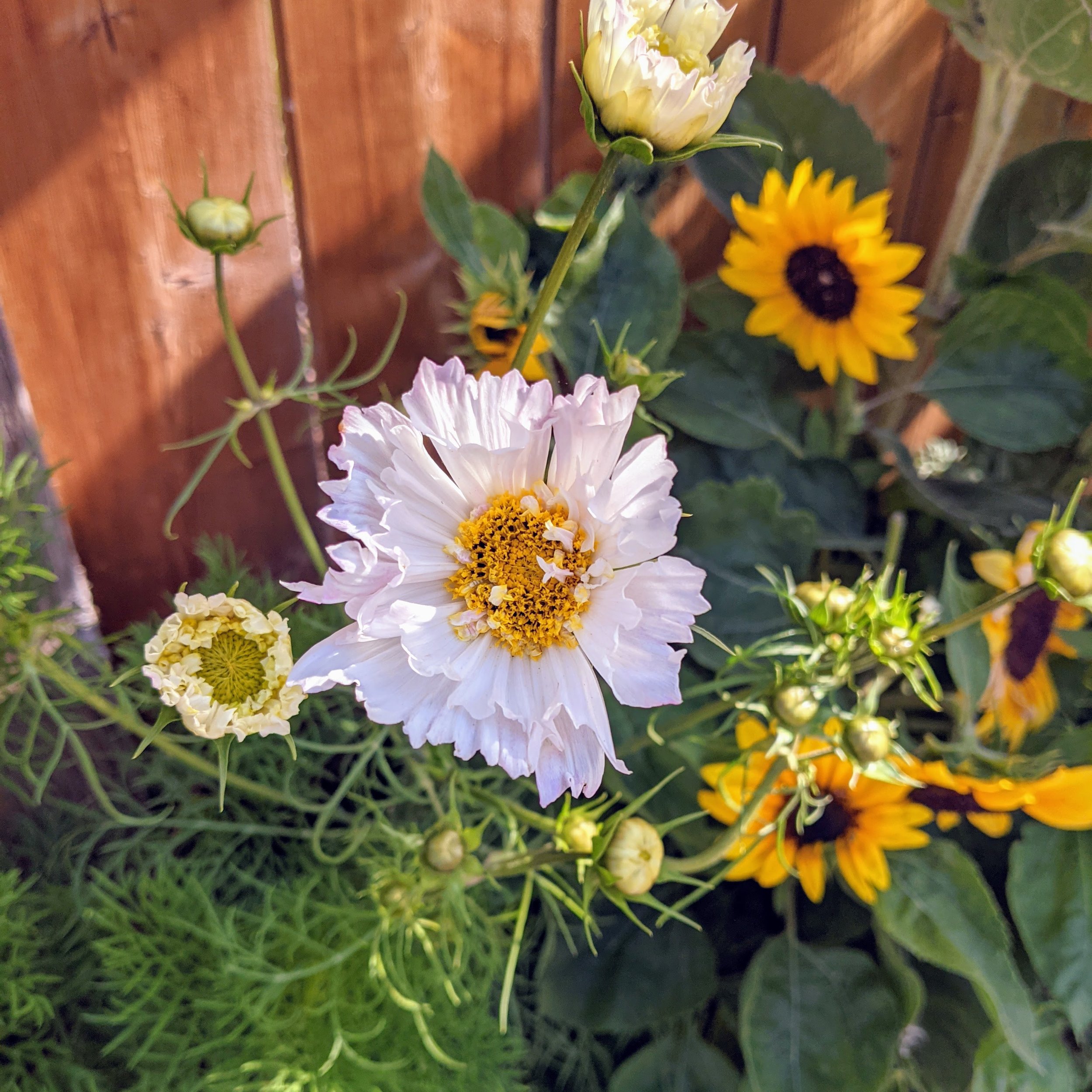
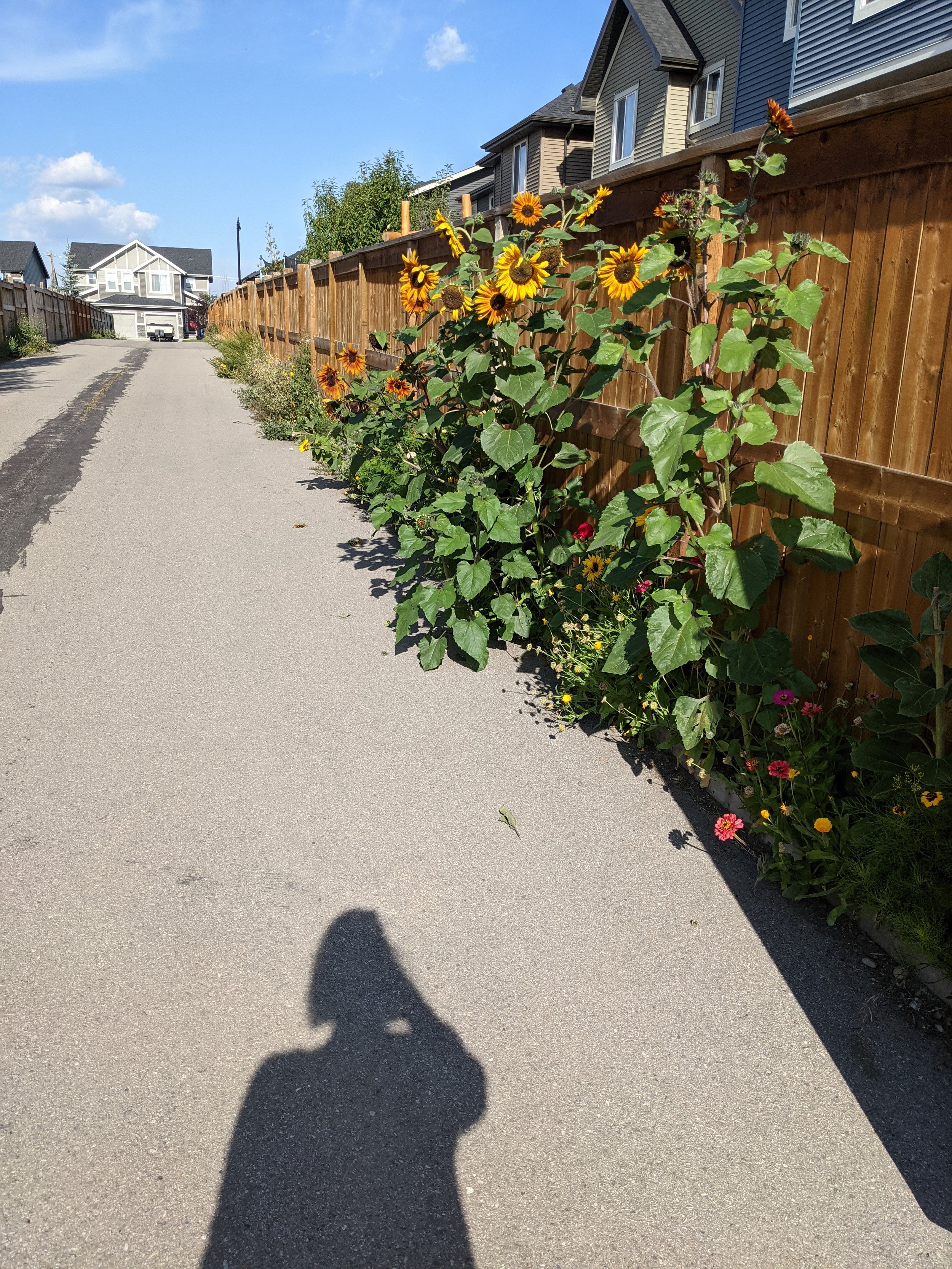

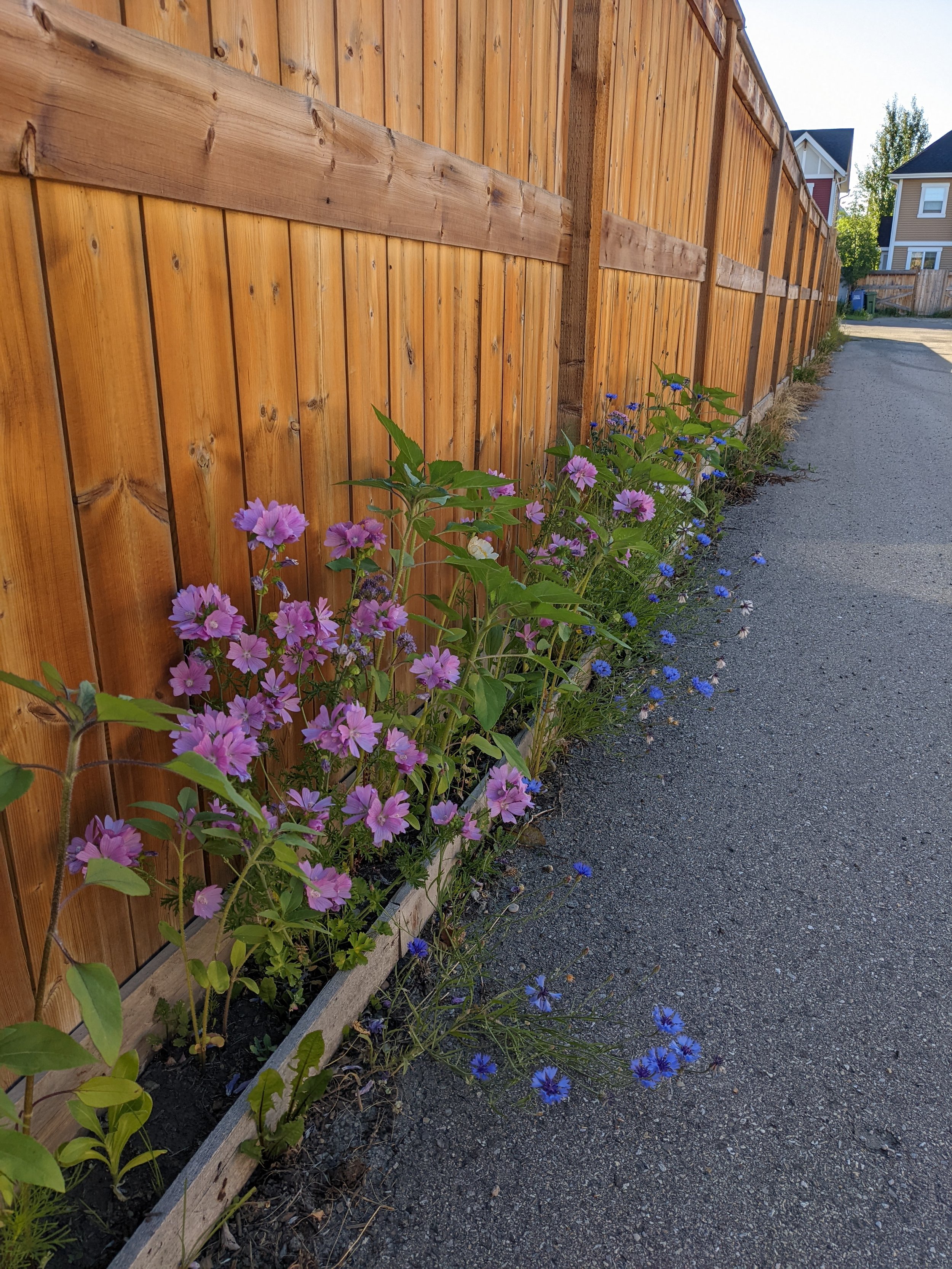
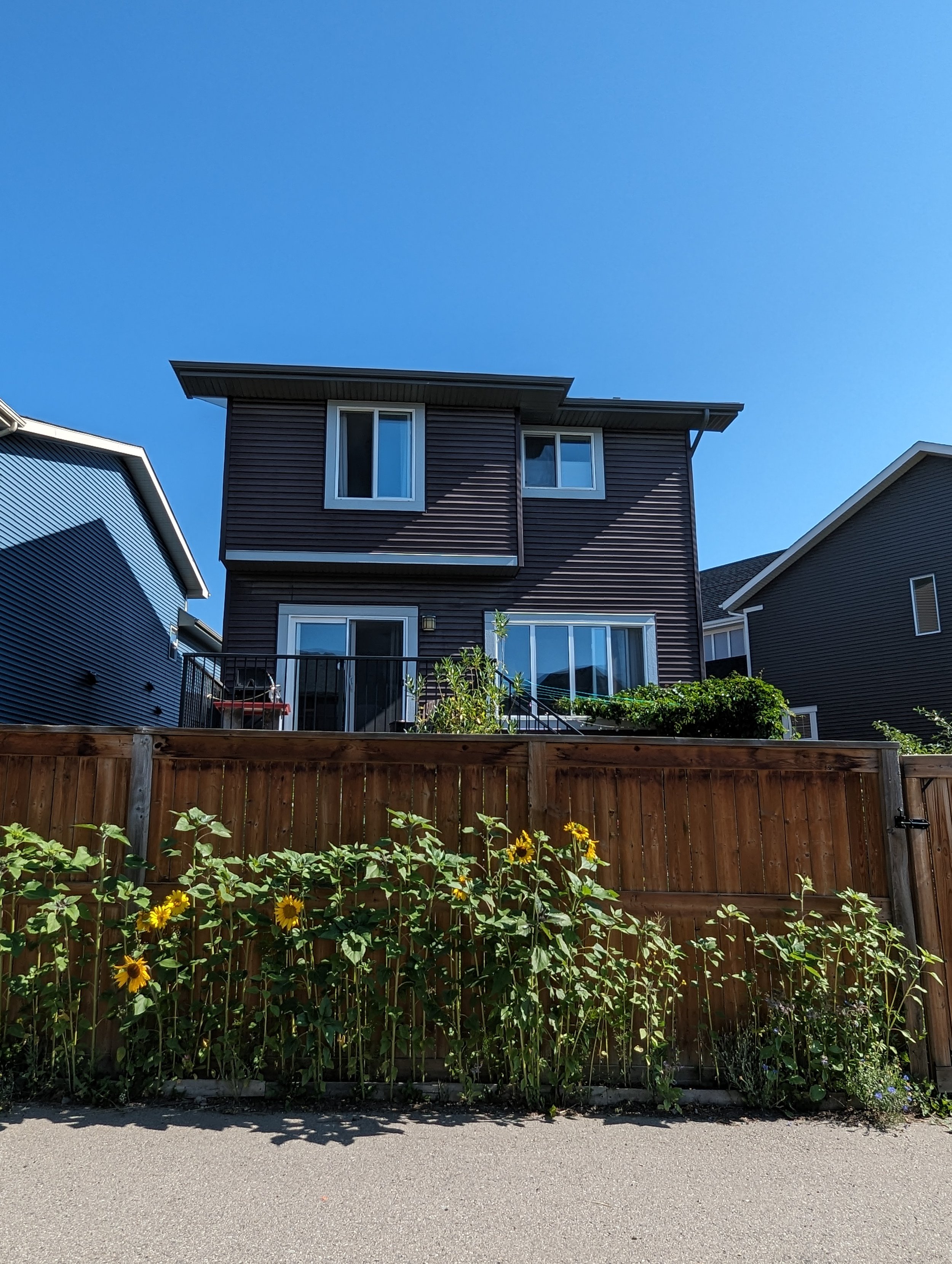
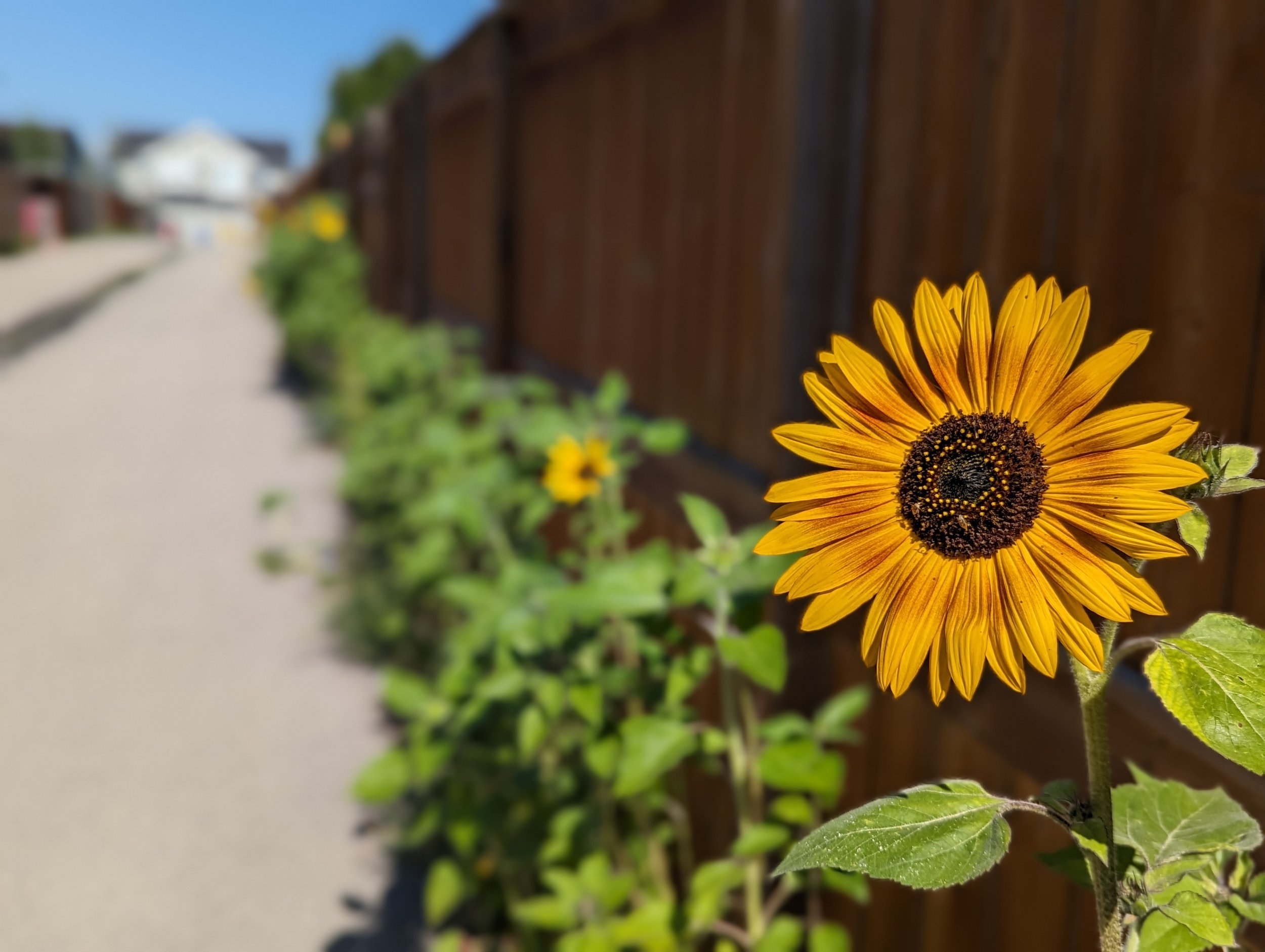
2020 - 2021
The Natural Forest
The natural forest was inspired by the ecosystems of the Canadian Rockies and the foothills. We love to hike, and I wanted to plant a forest ecosystem with some food plants in a shady damp area of the backyard.
What we Grow: It features a blue spruce that is a memorial to my husband’s late father, Alberta wild rose bushes, purple asters, kinnikinnick, wild strawberries, clematis, a Saskatoon bush, pasque flowers, crocus, dogwood, comfrey, rhubarb, foxglove, chickweed, seabuckthorn bushes, and a brand new Willow Tree.
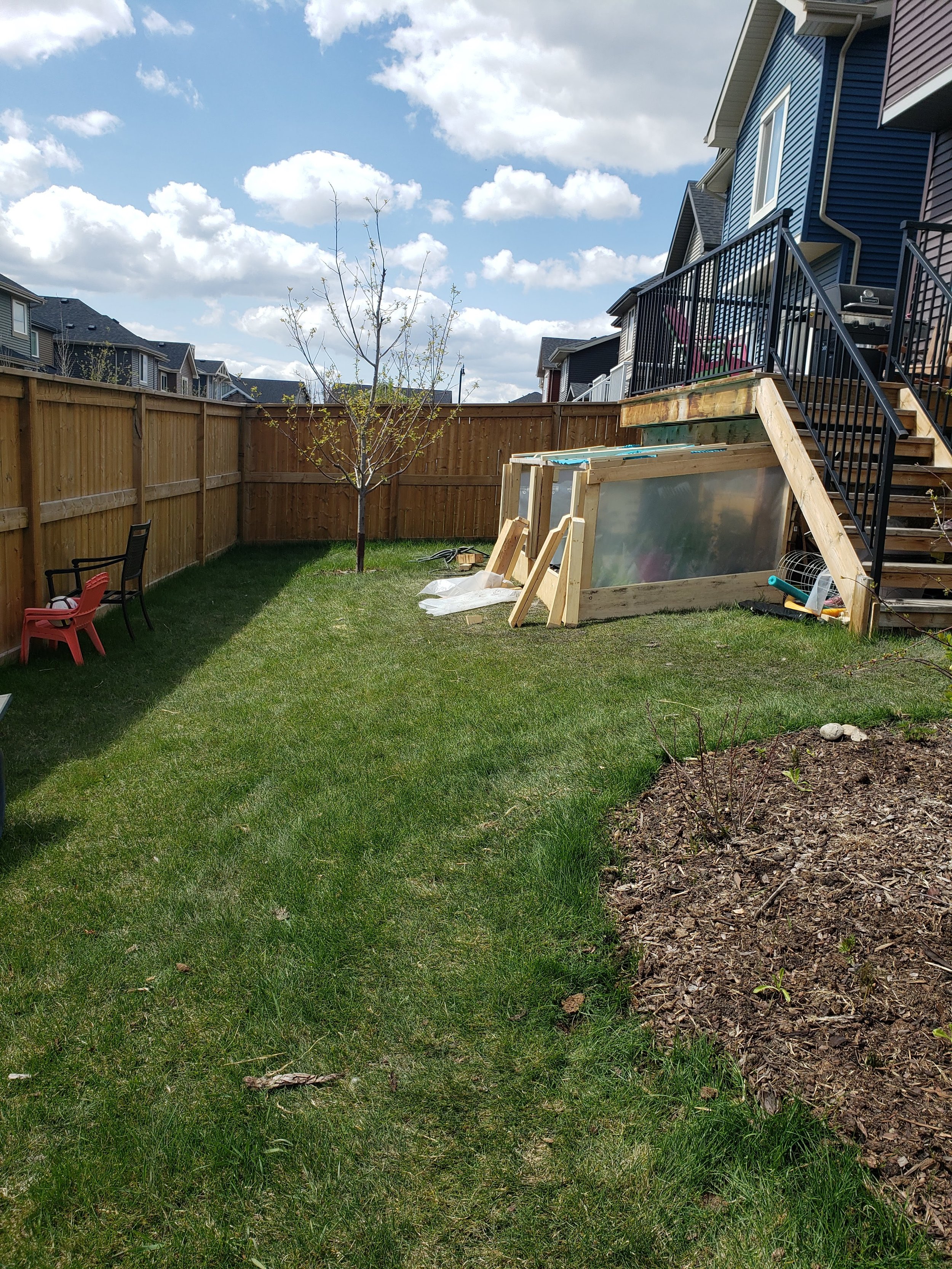
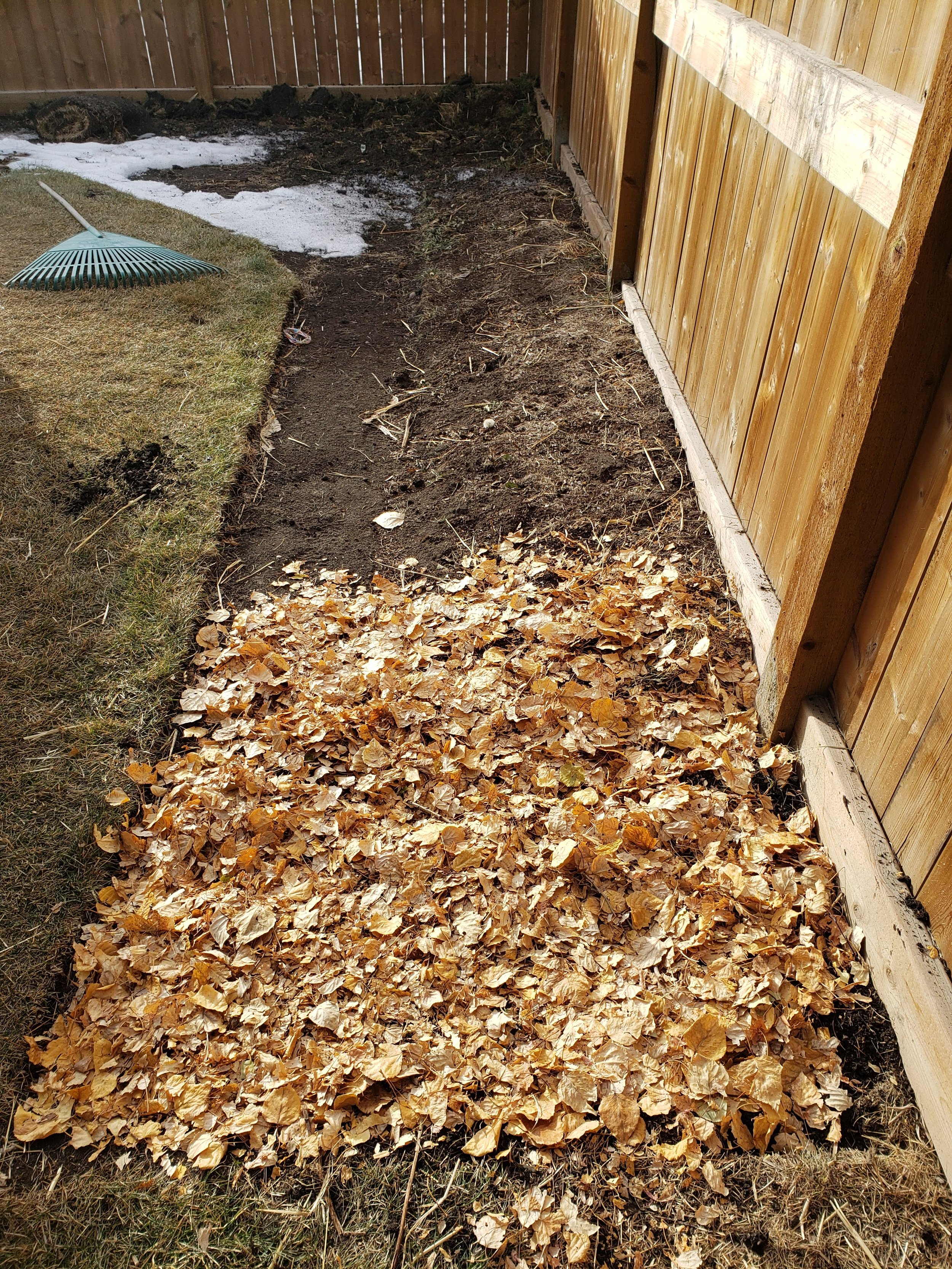
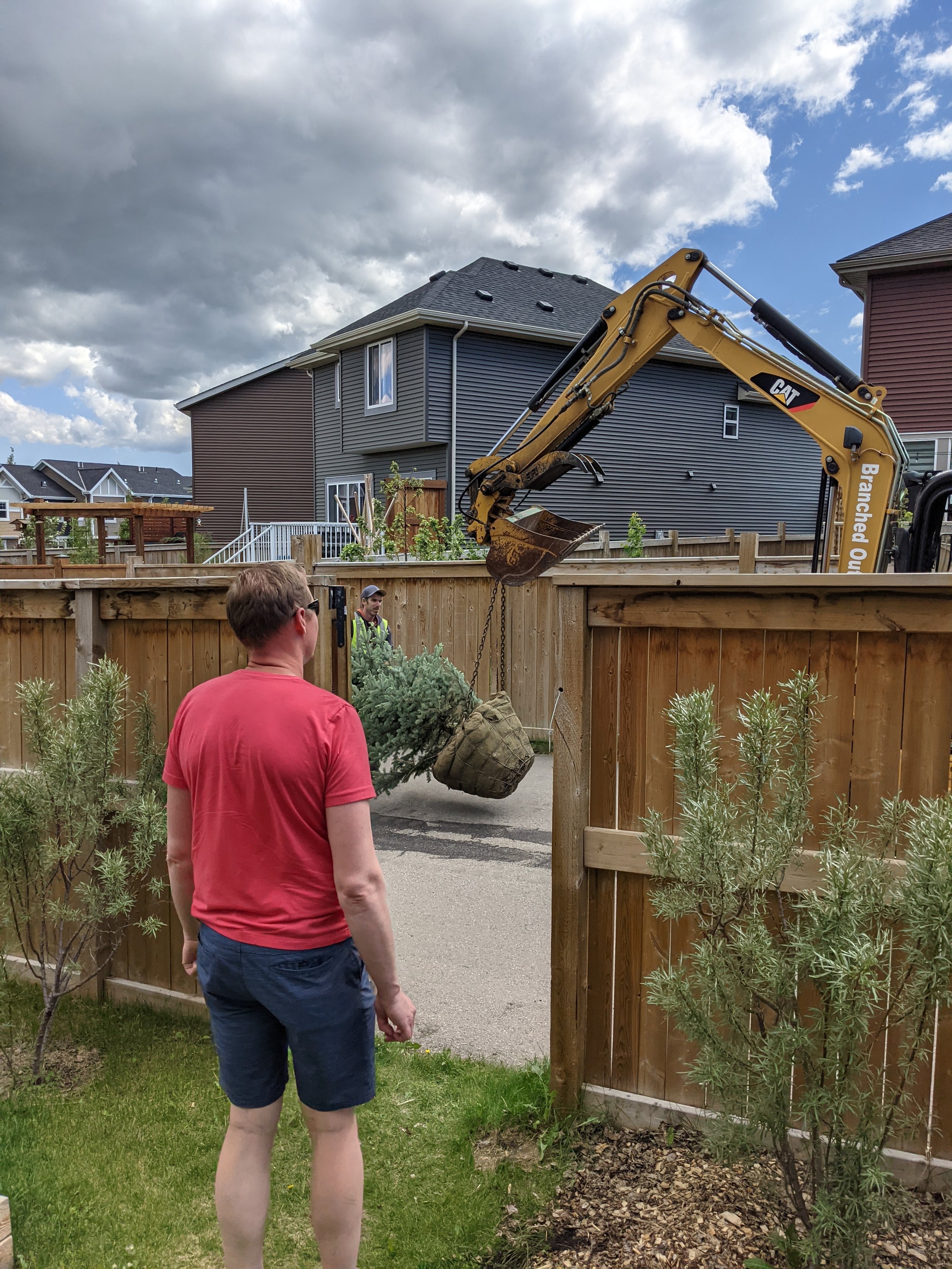
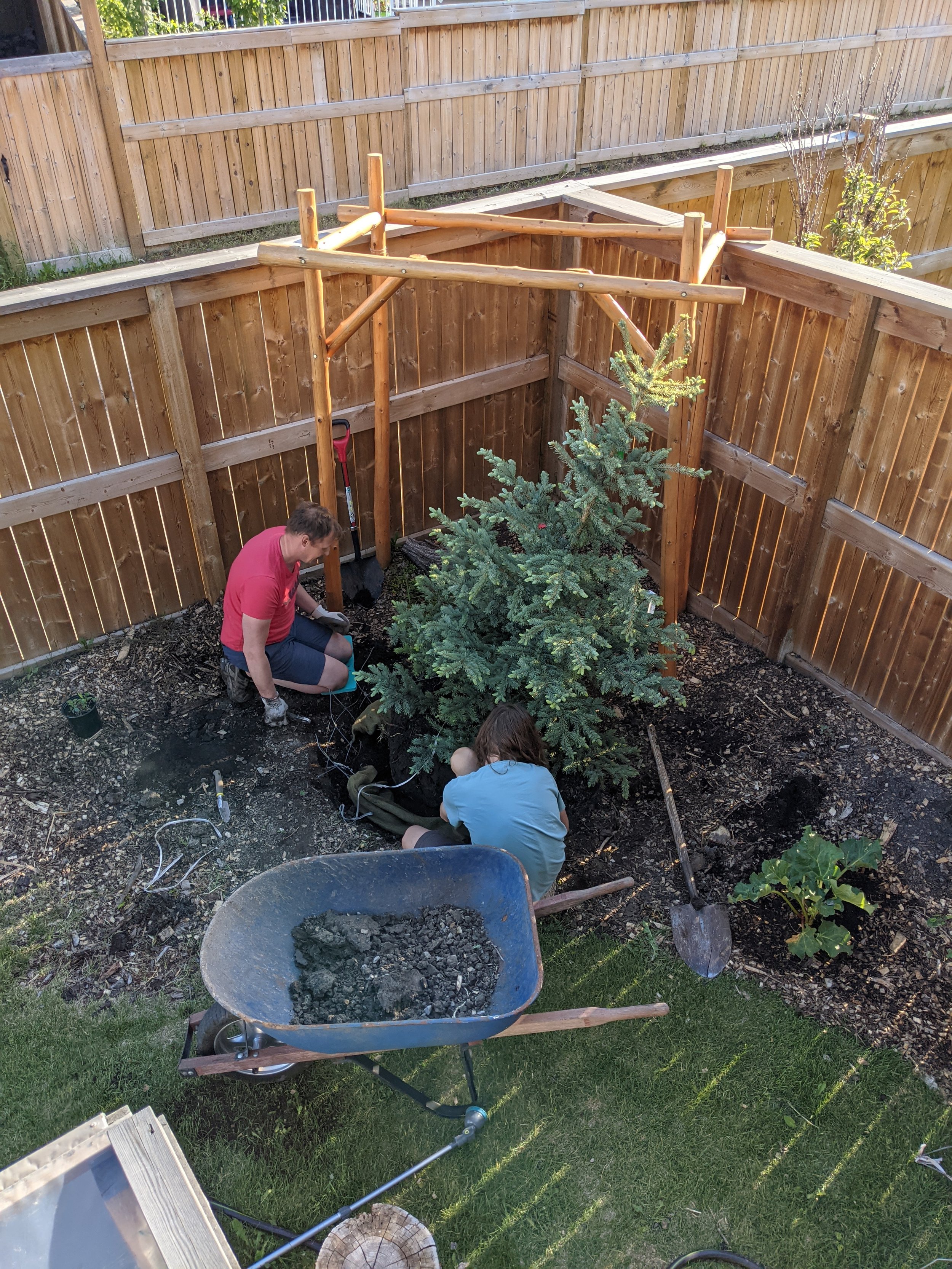

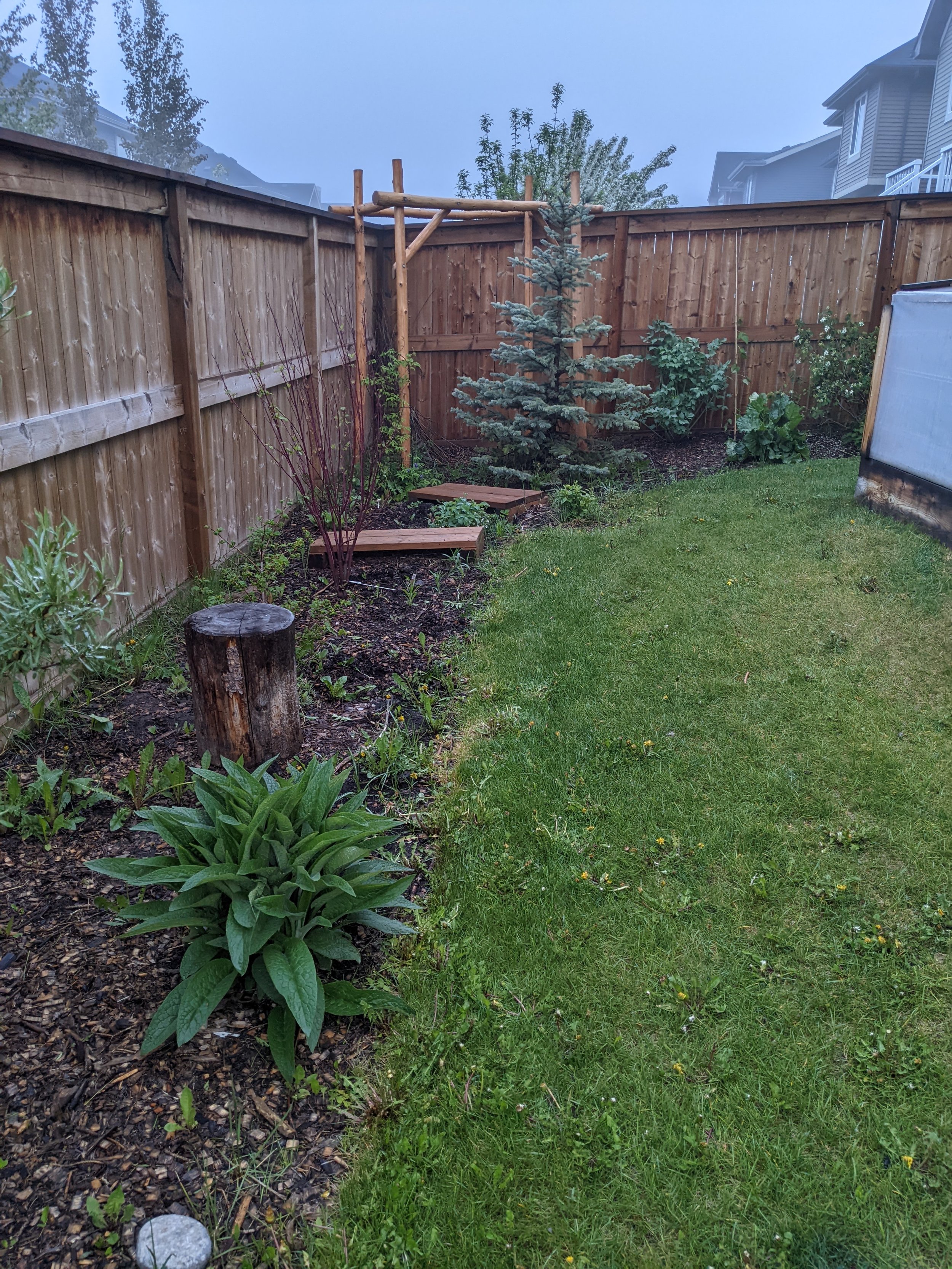
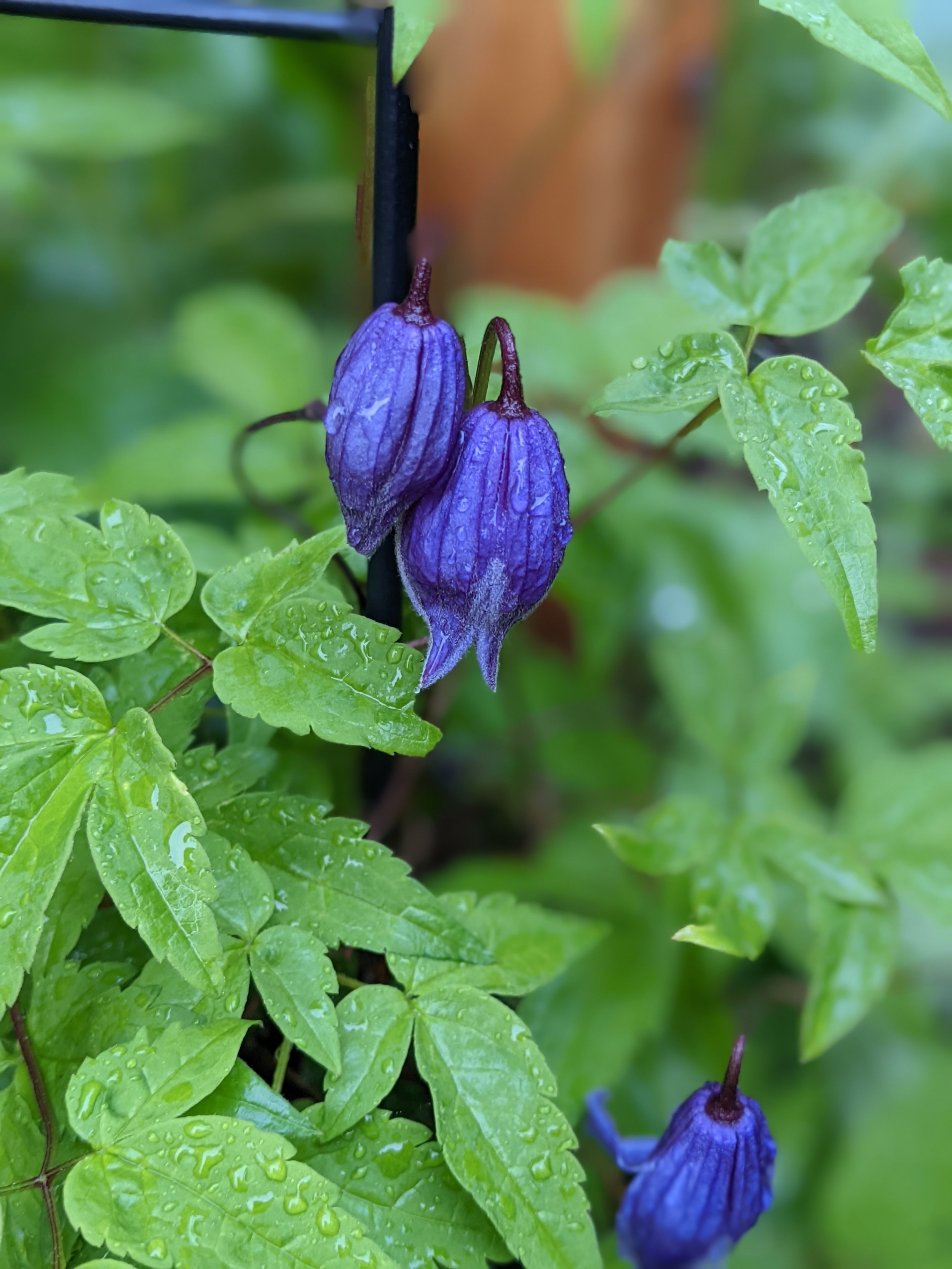
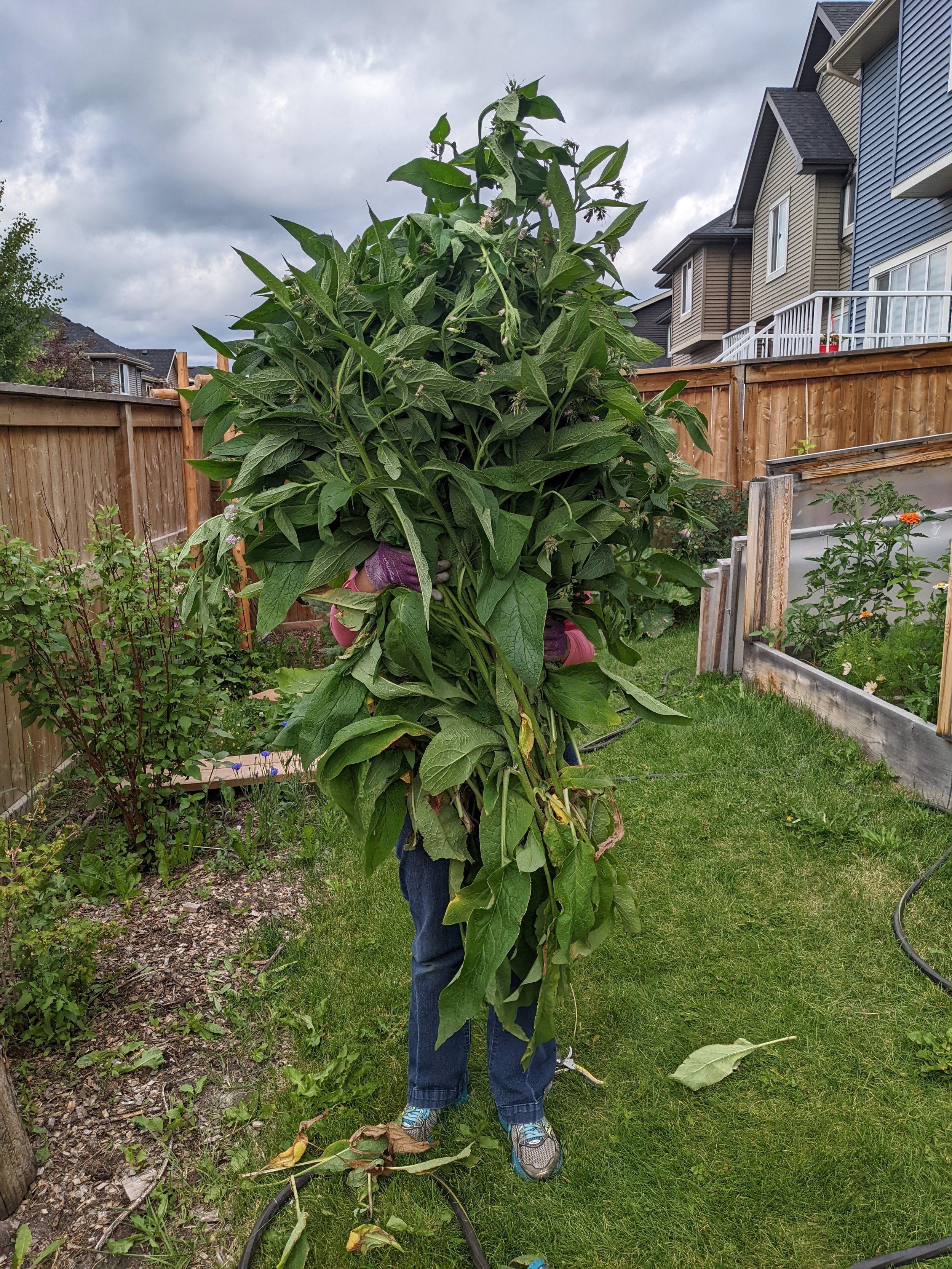
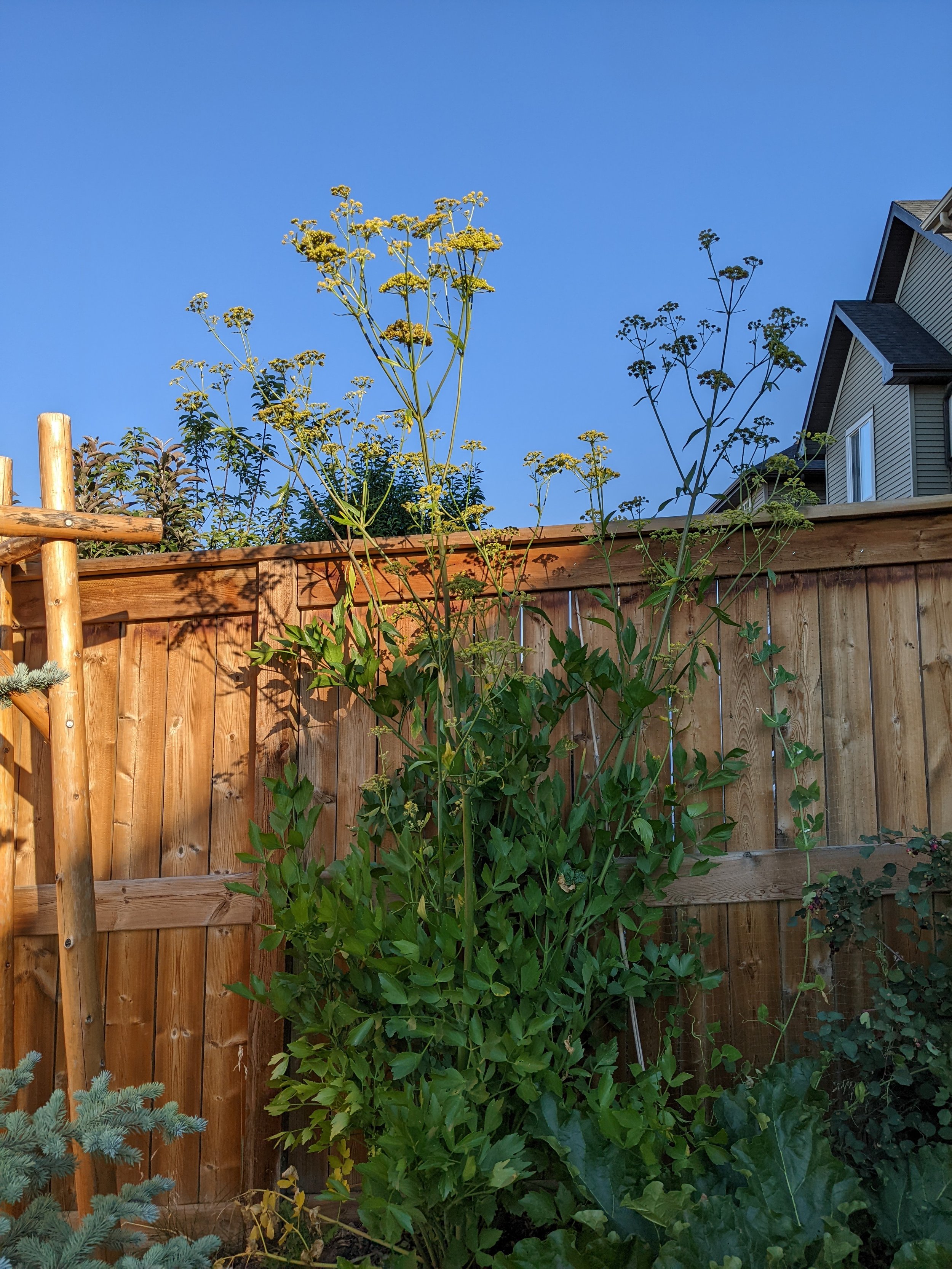
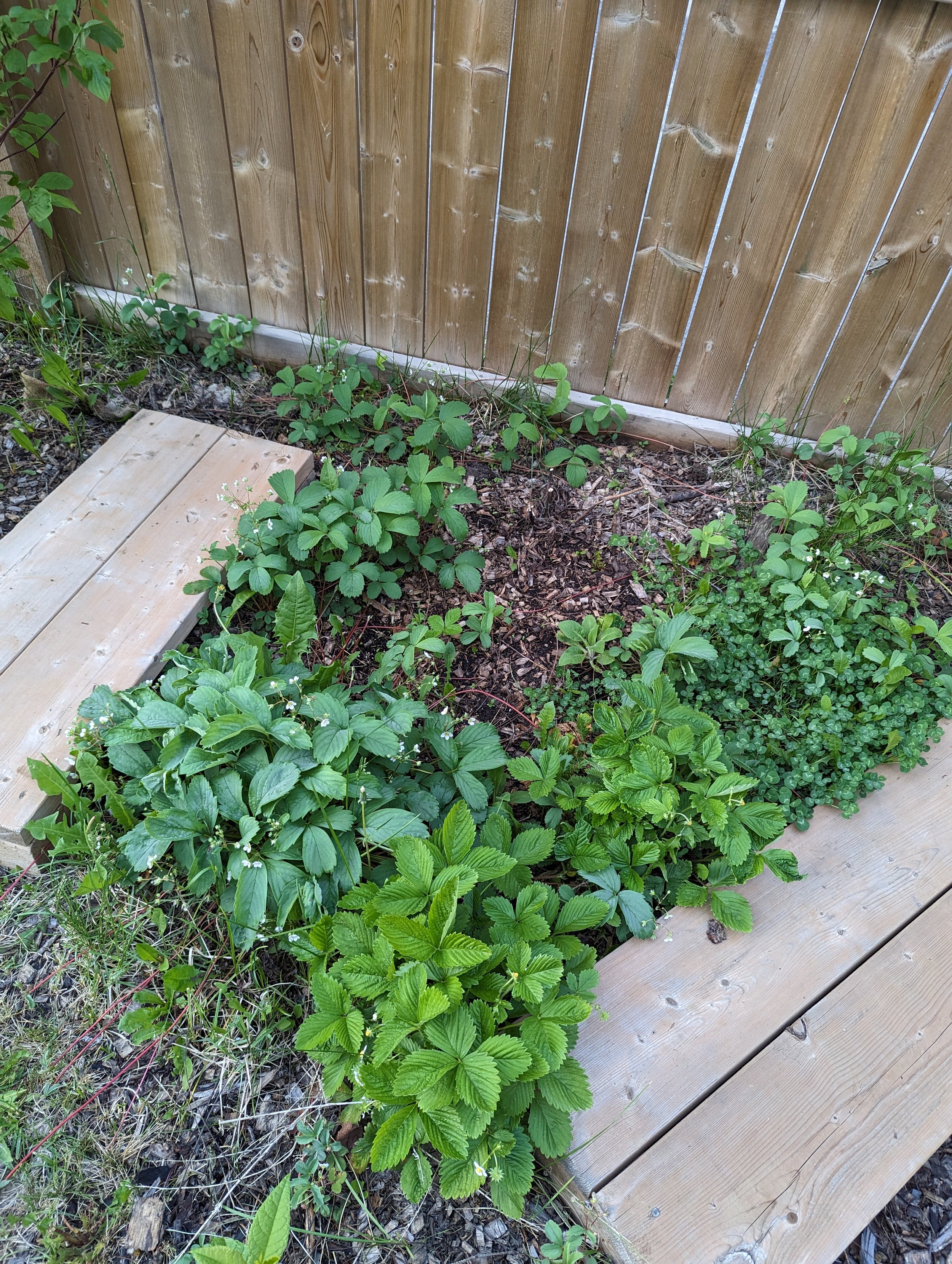
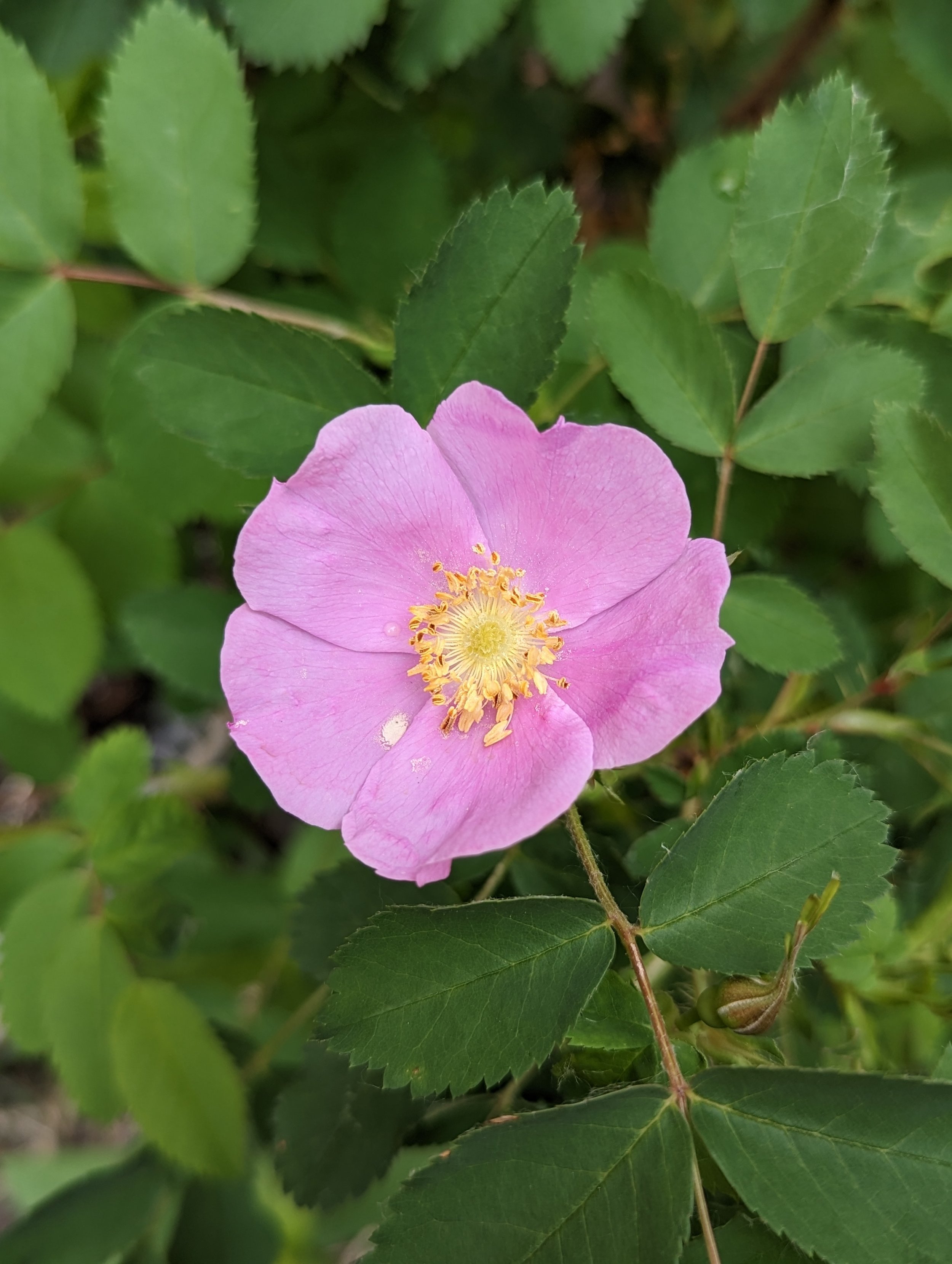
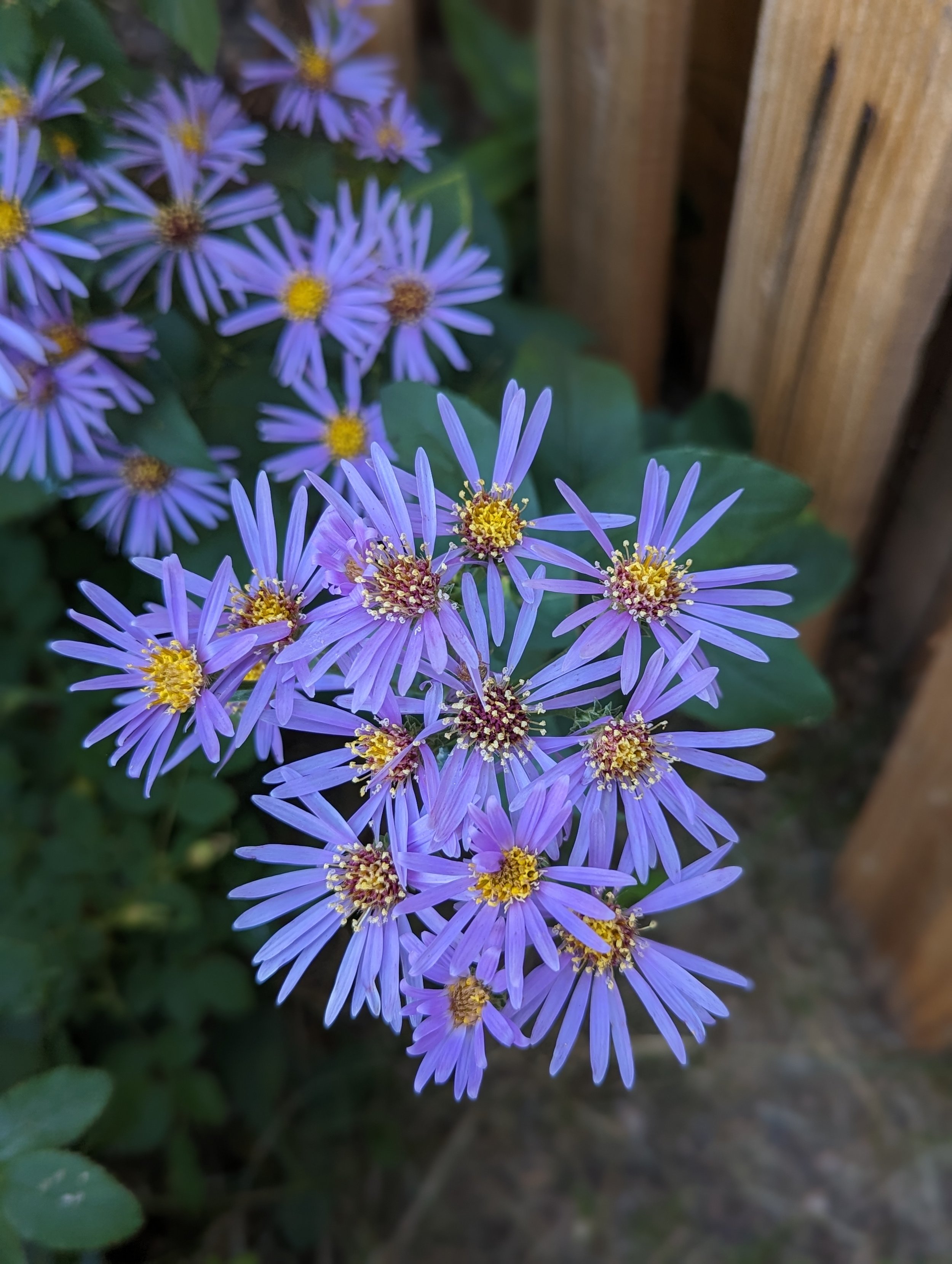

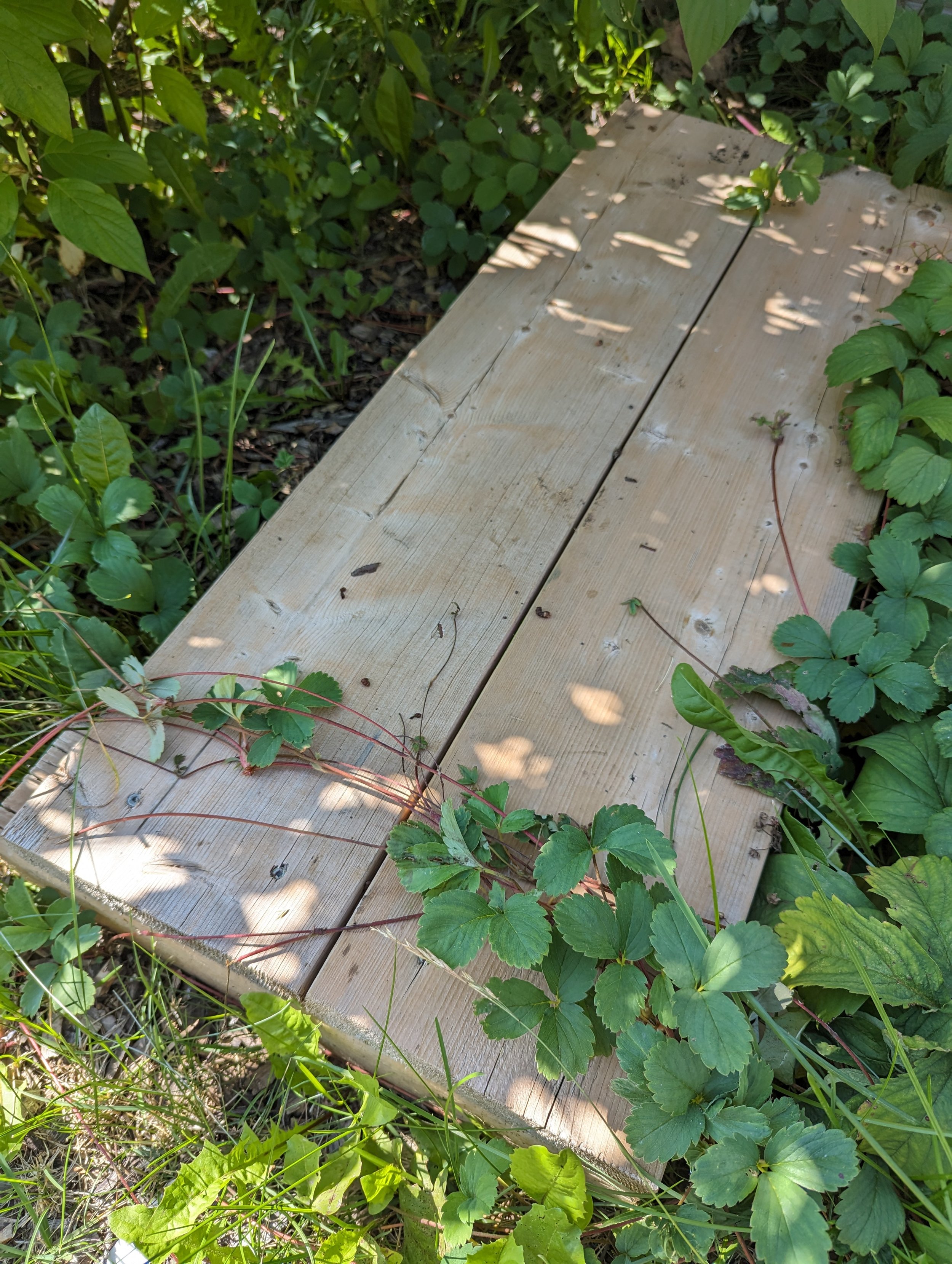
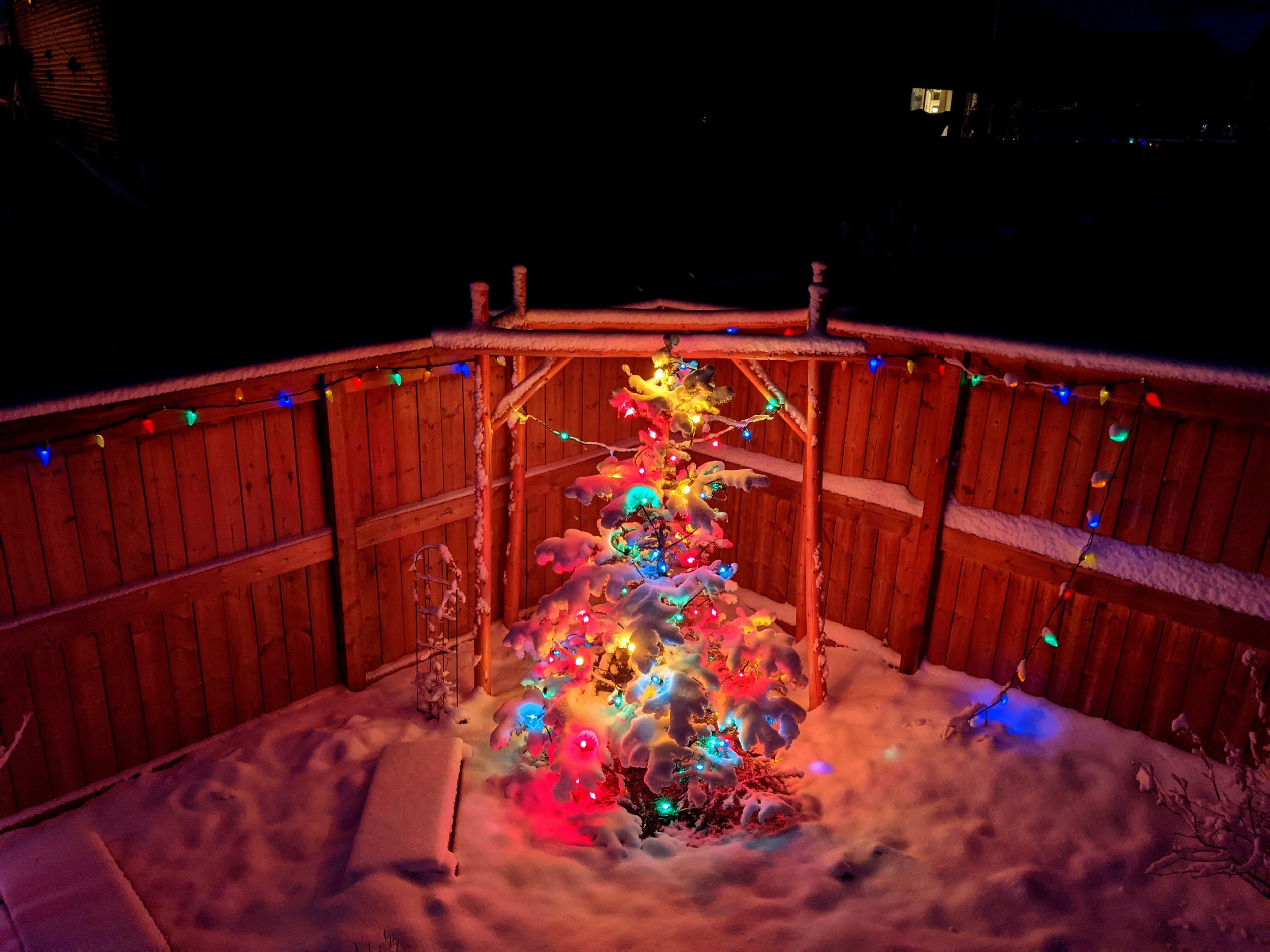
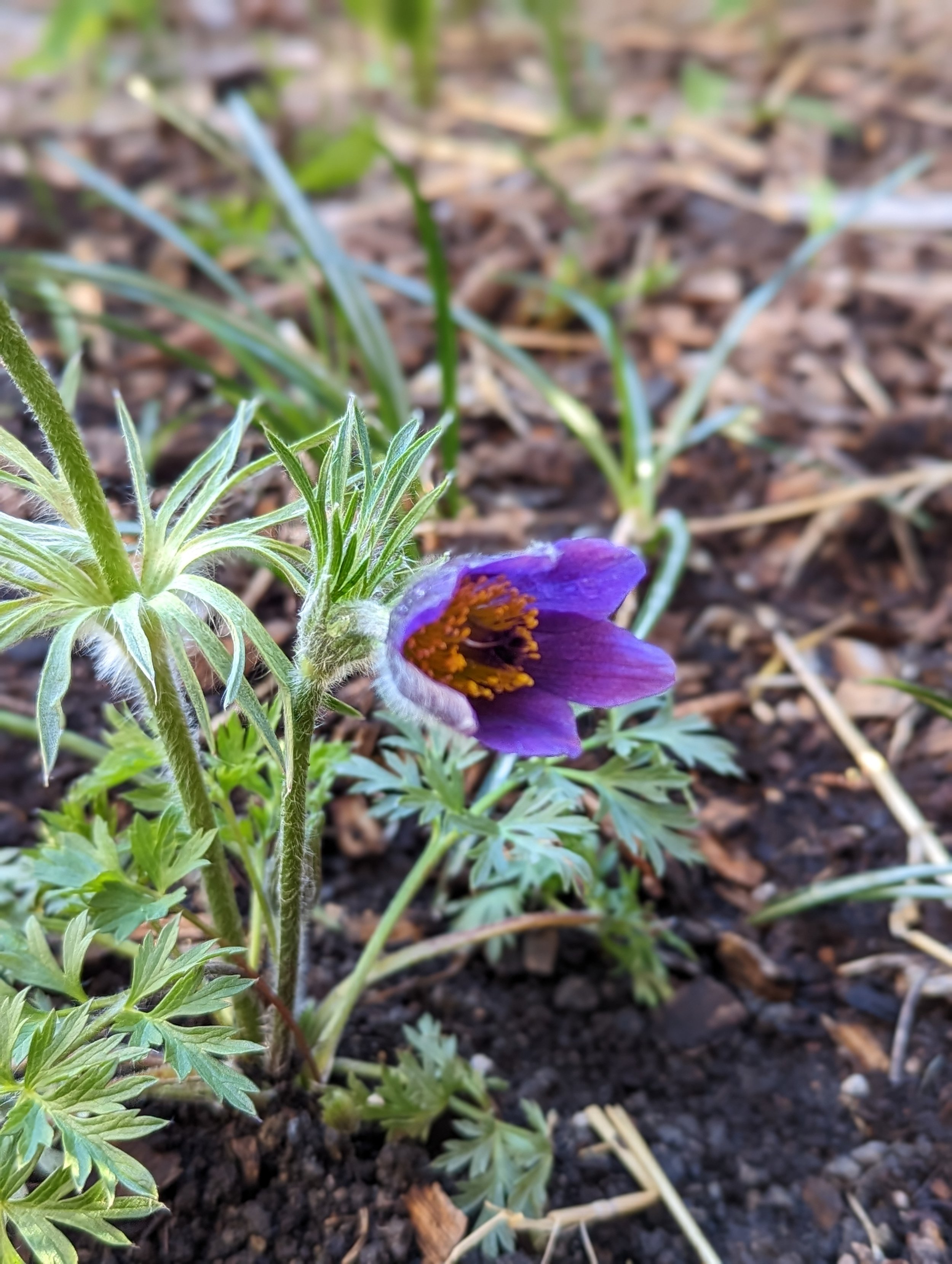
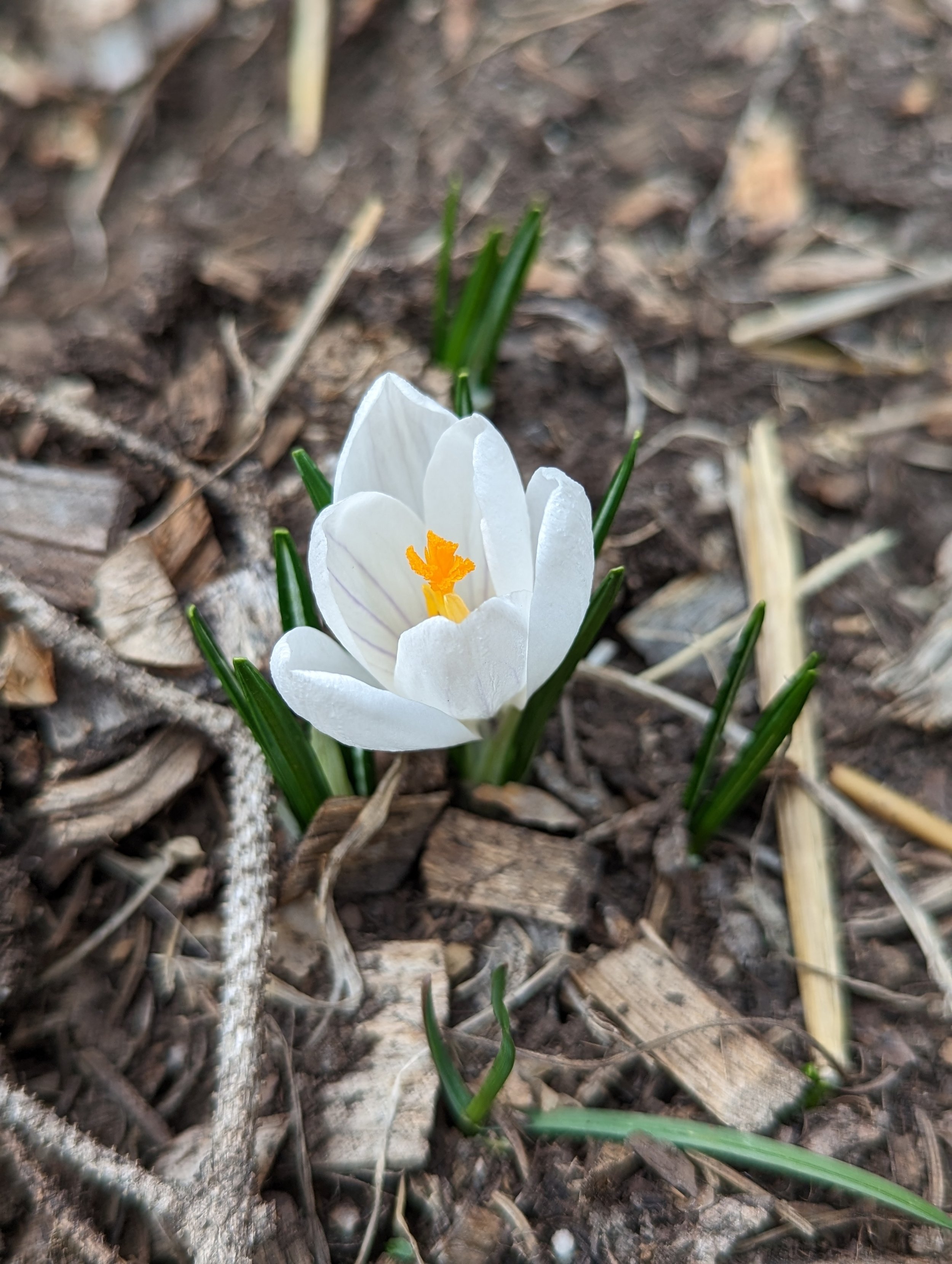
2021
The Bean Arch
The bean arch is a vertical growing space connecting annual beds two and three. Because our annual beds follow a curve, the arch's front and back are different widths. We made the arch with hog panel that we picked up at UFA in Airdrie. We hadn’t considered how firm the panel would be, and installing it was an adventure. I love that the arch creates an entrance to an area in the southeast corner with the fairy garden and a spot under the cherry tree where we sit and relax on hot afternoons. What I don’t love is how the arch looks. Our growing season is short, so there is only greenery on the arch for 2-3 months. I am dreaming of a beautifully custom-designed wrought iron arch in the future.
What We Grow: Mostly sunset and scarlet runner beans. I’m considering a perennial vine like morning glory in the future.
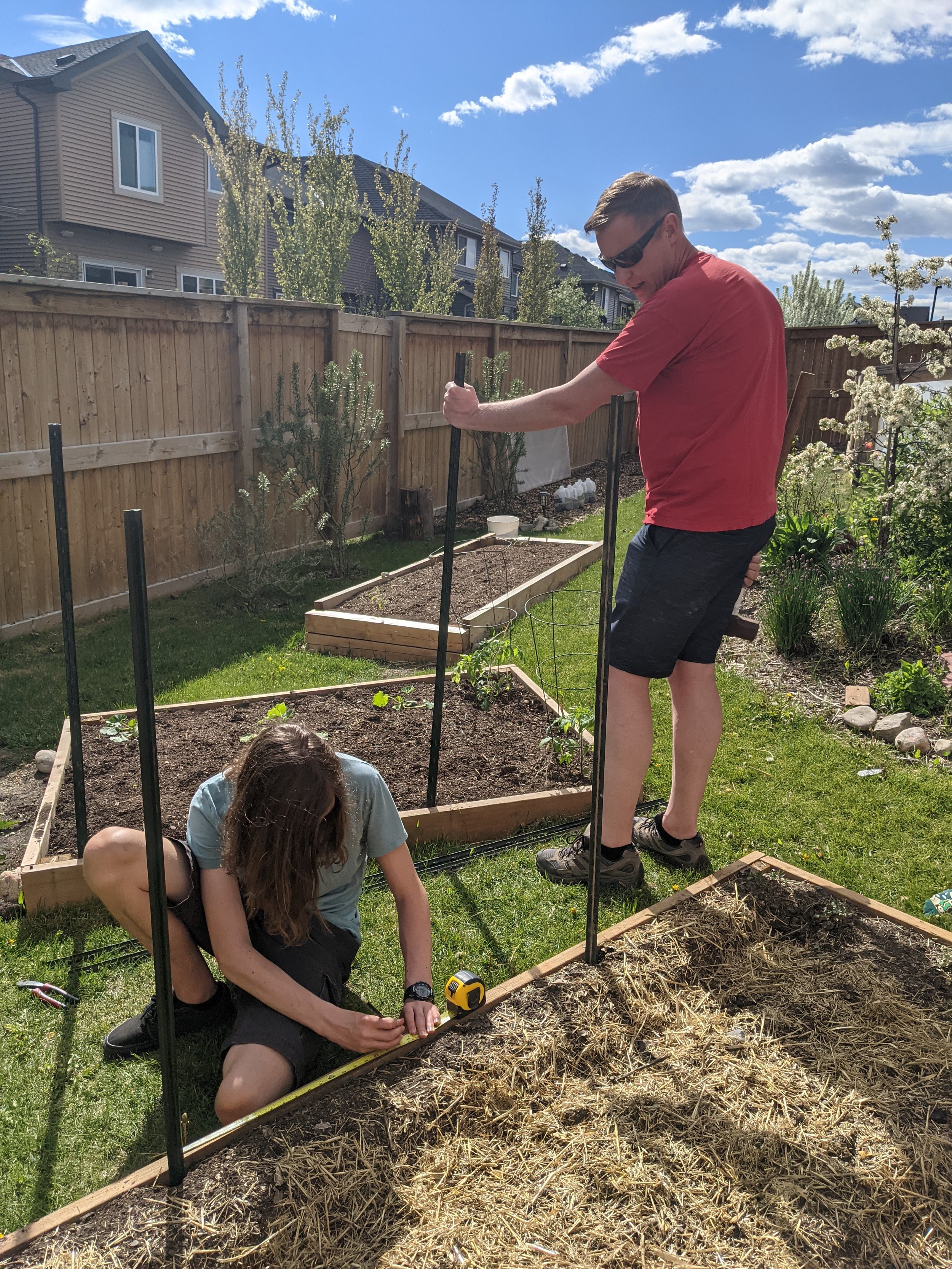
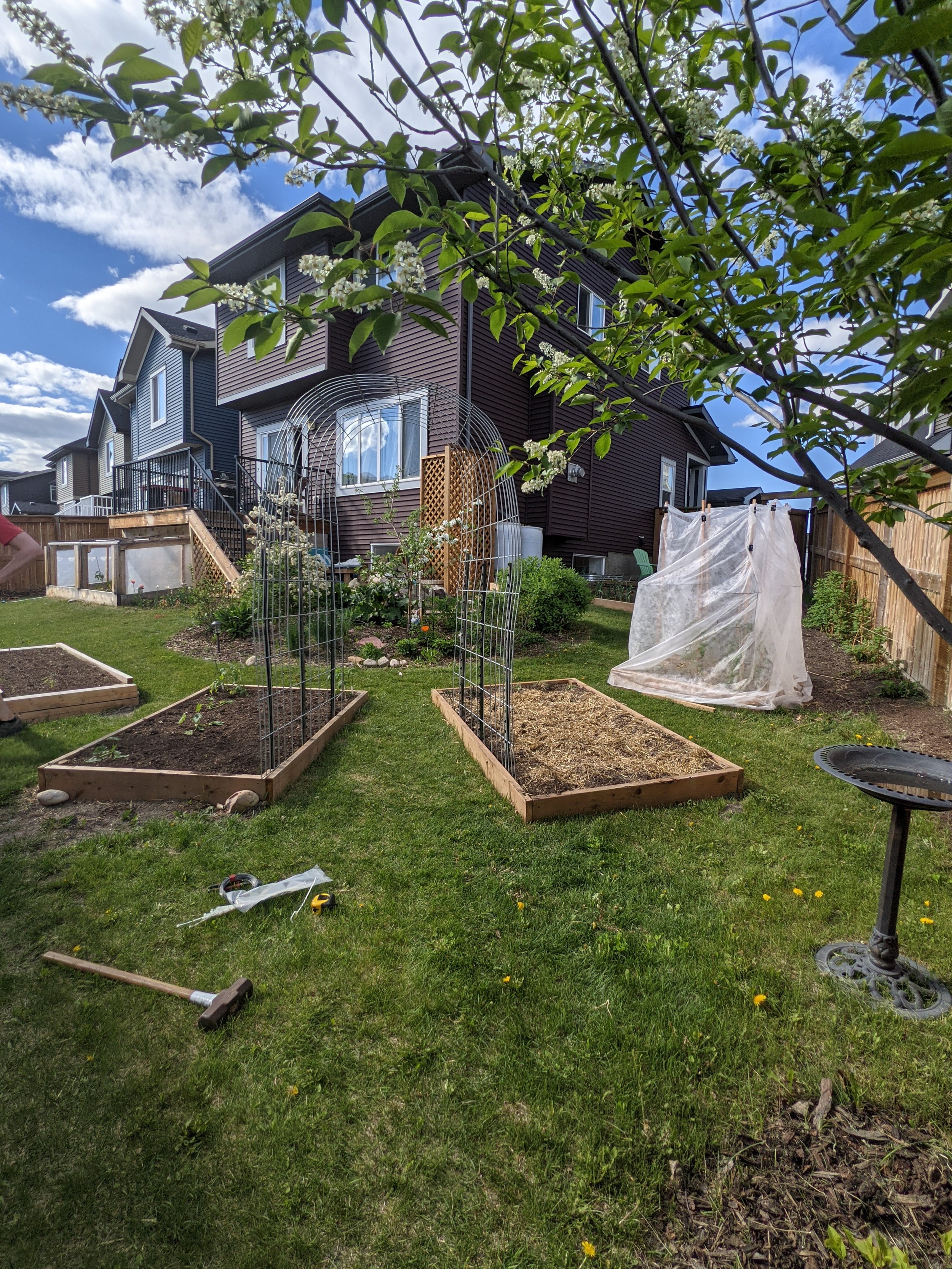
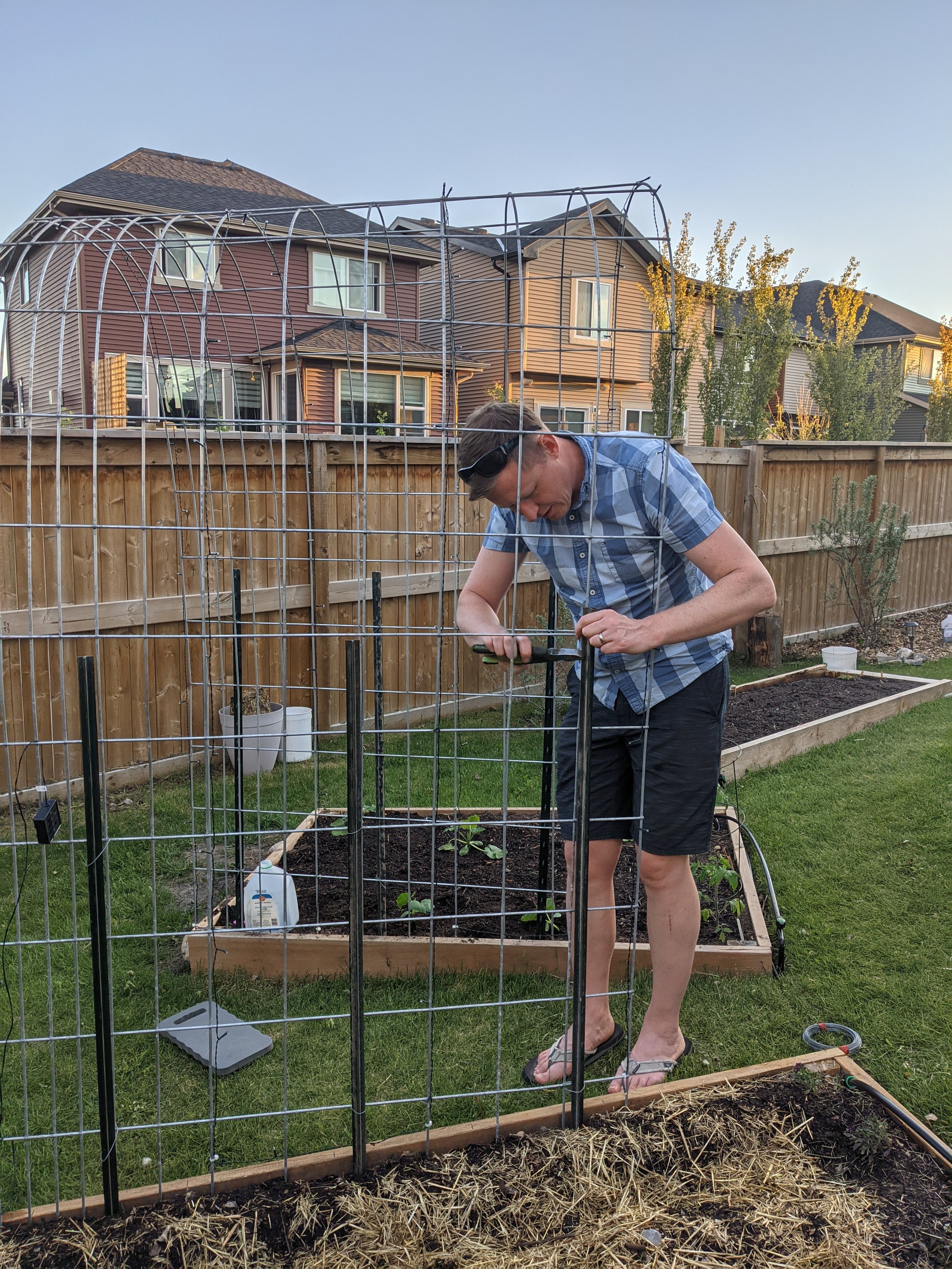
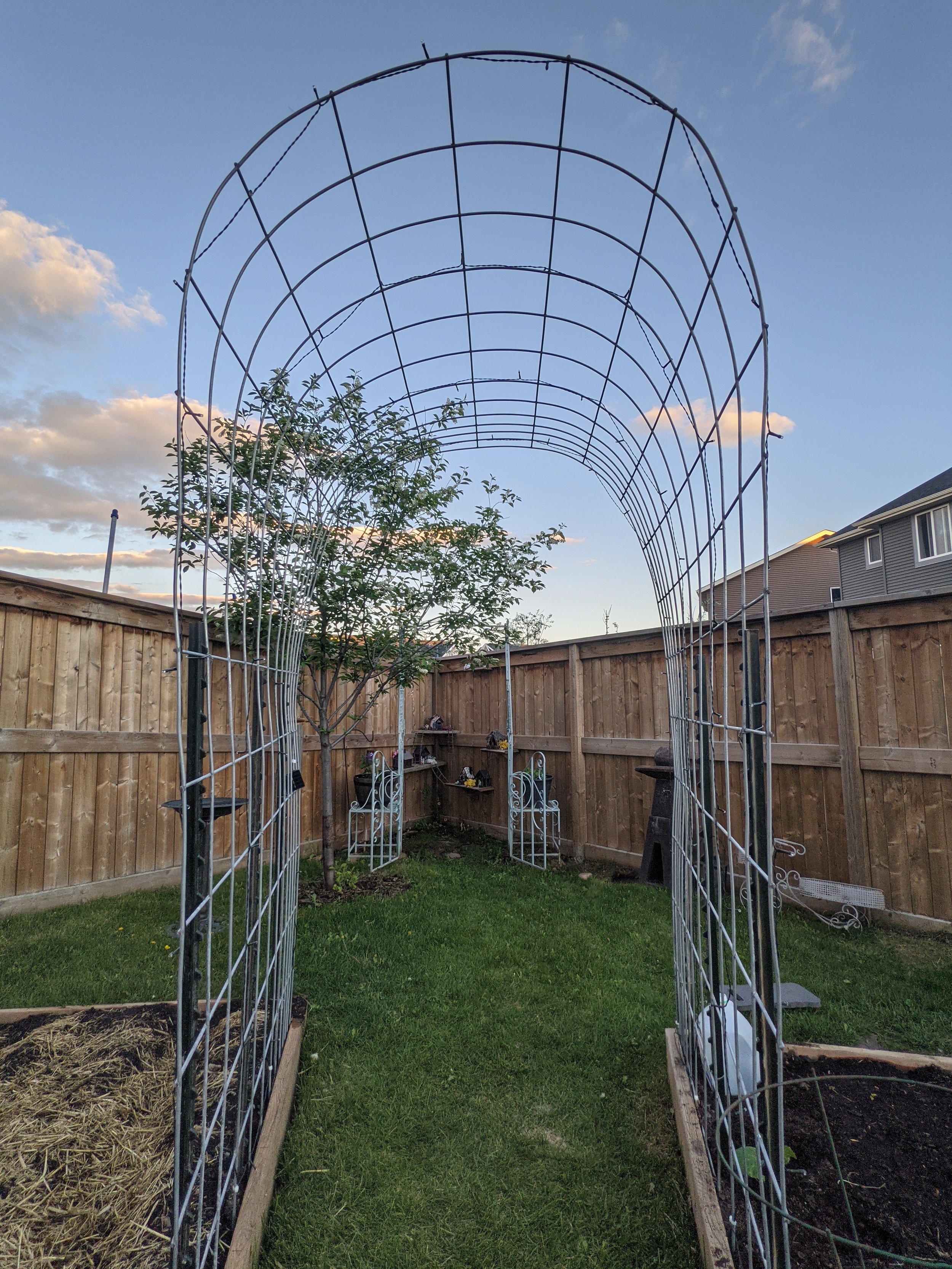
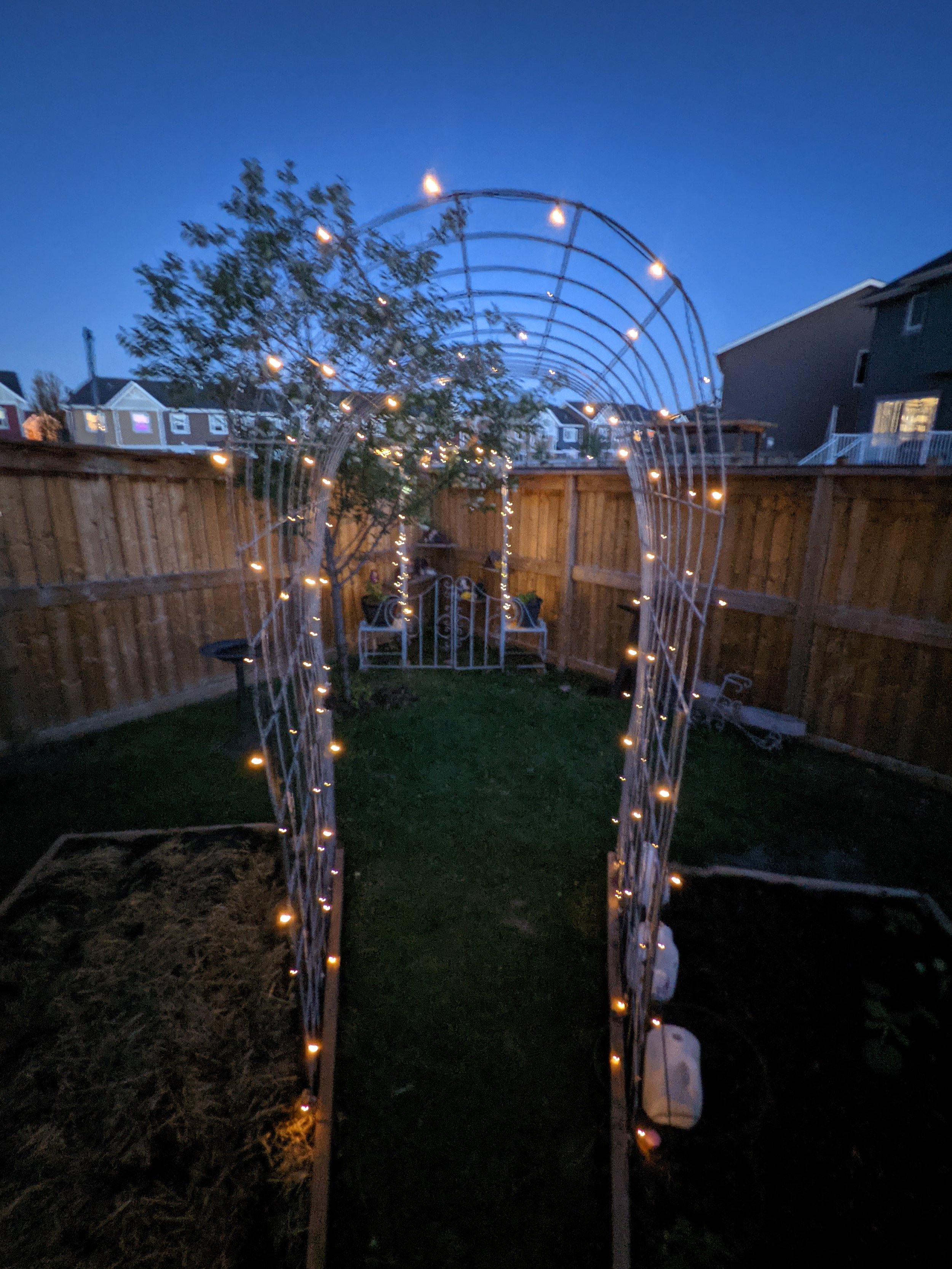

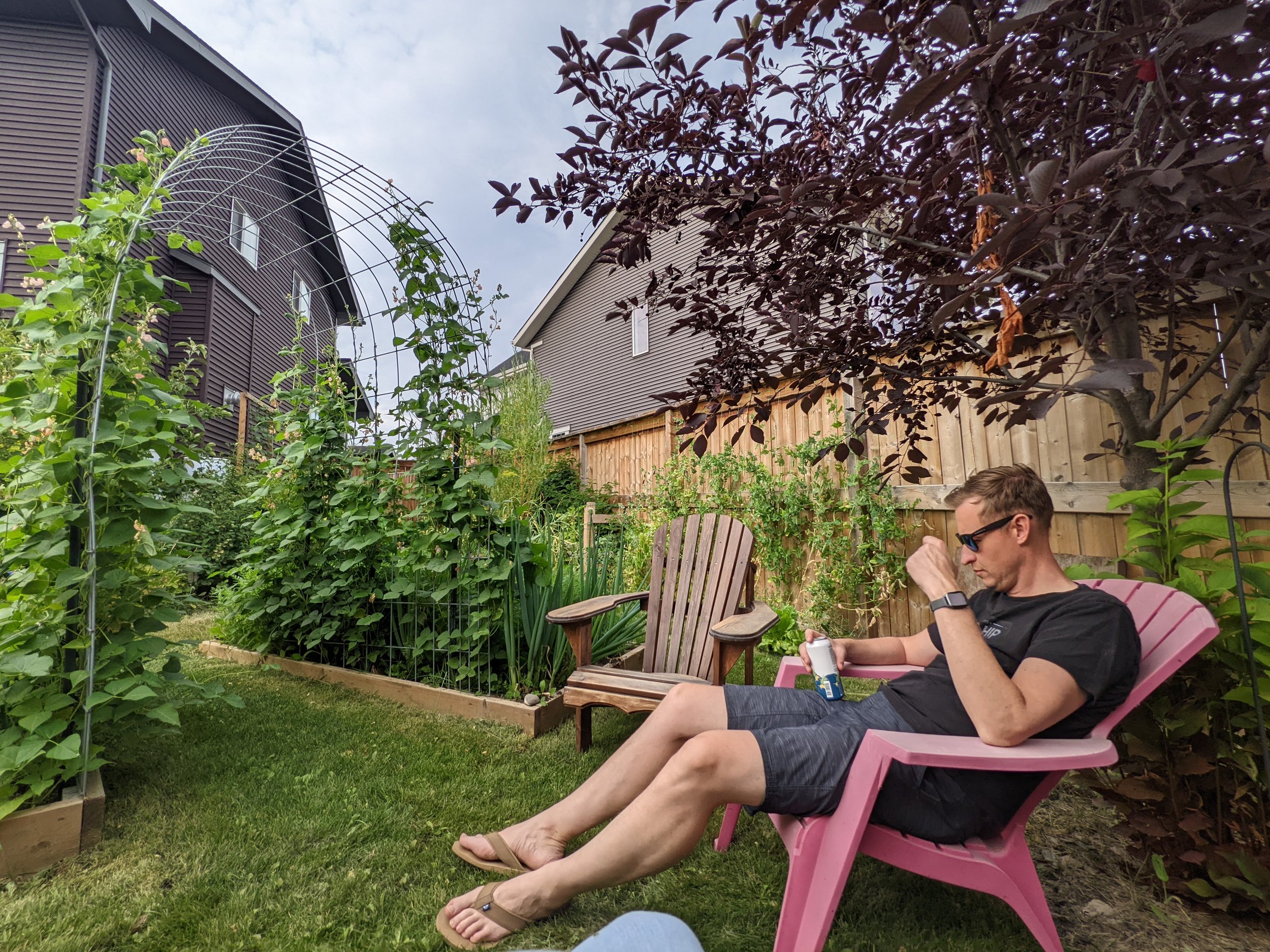
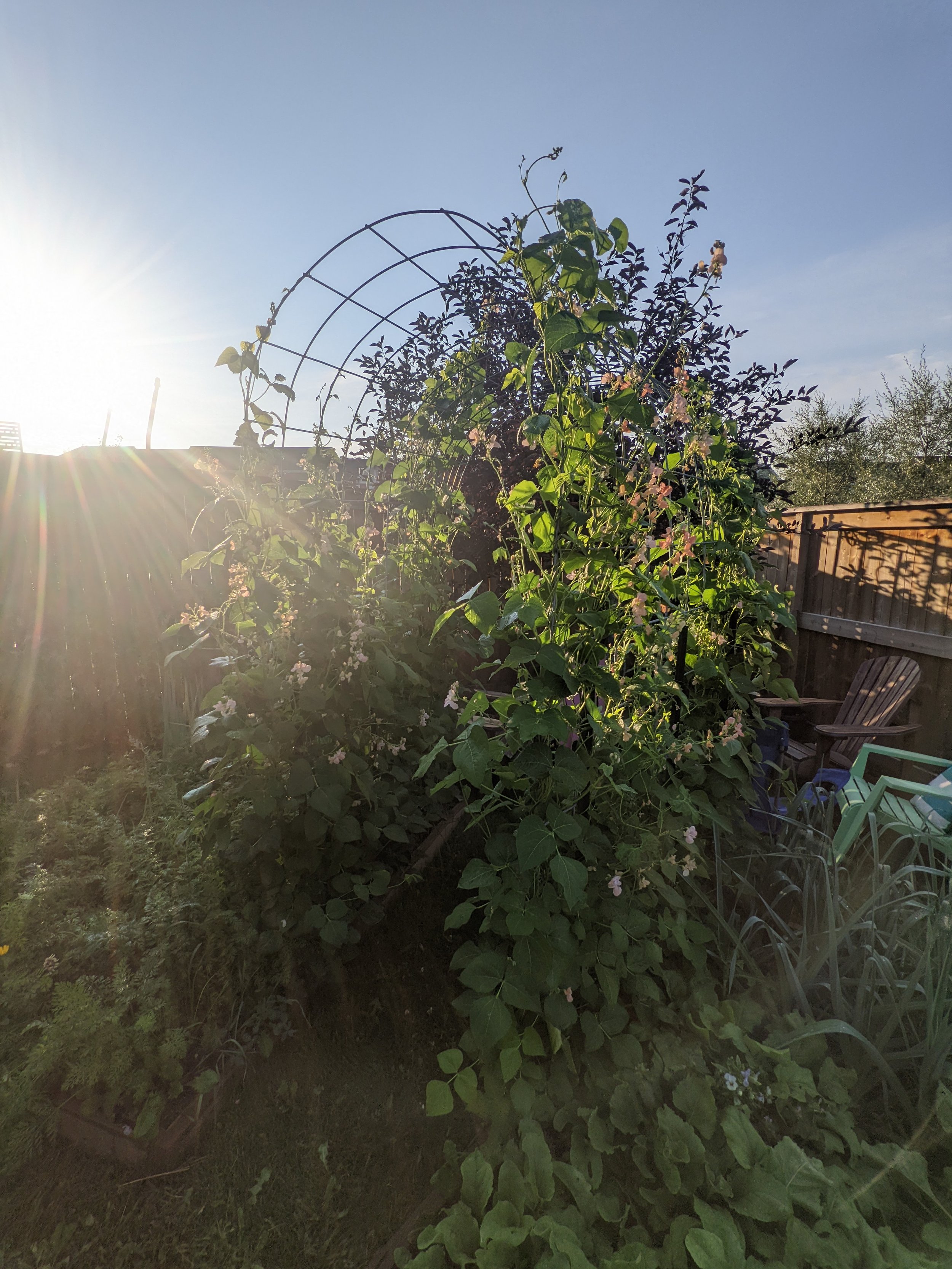
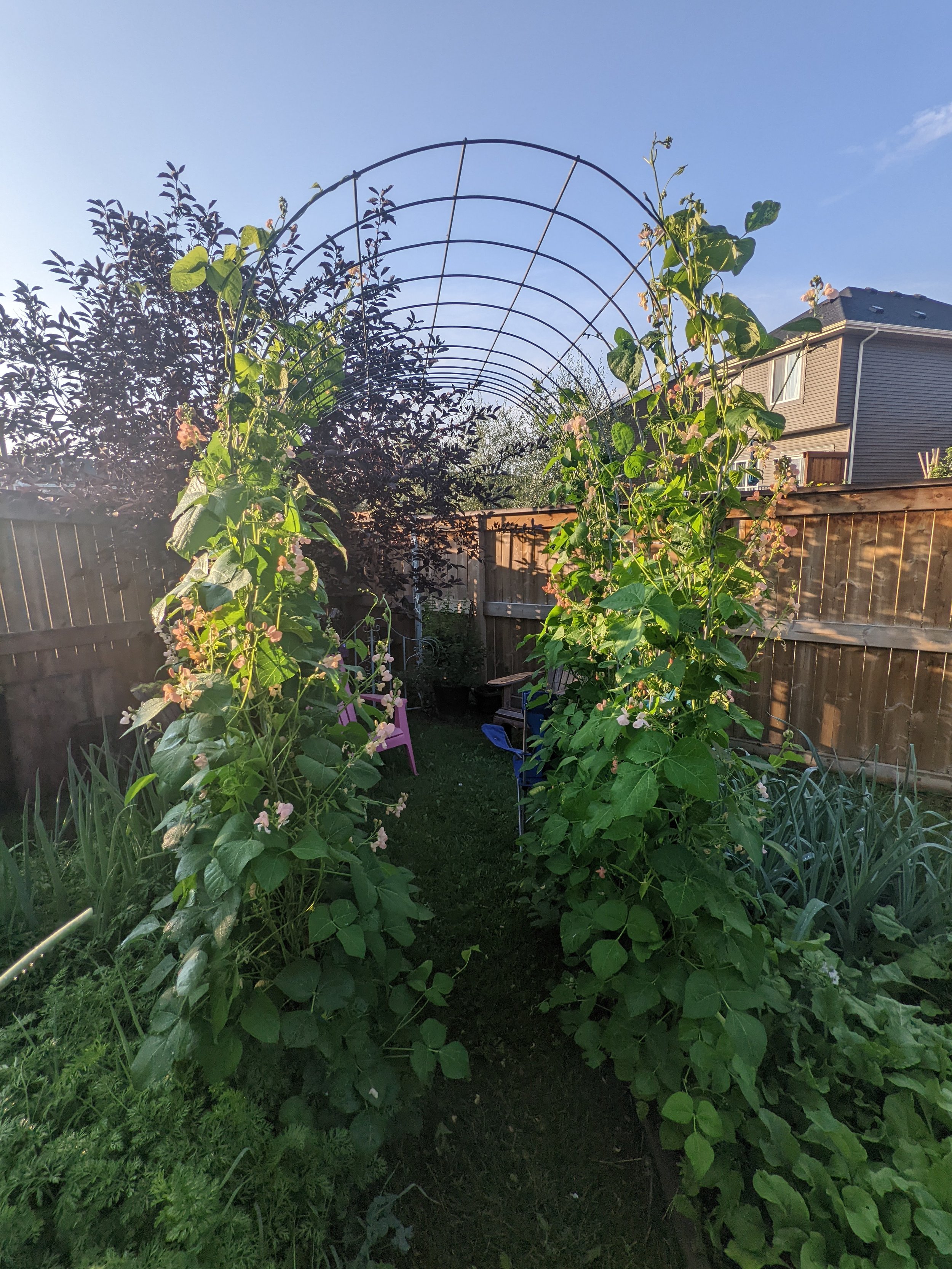
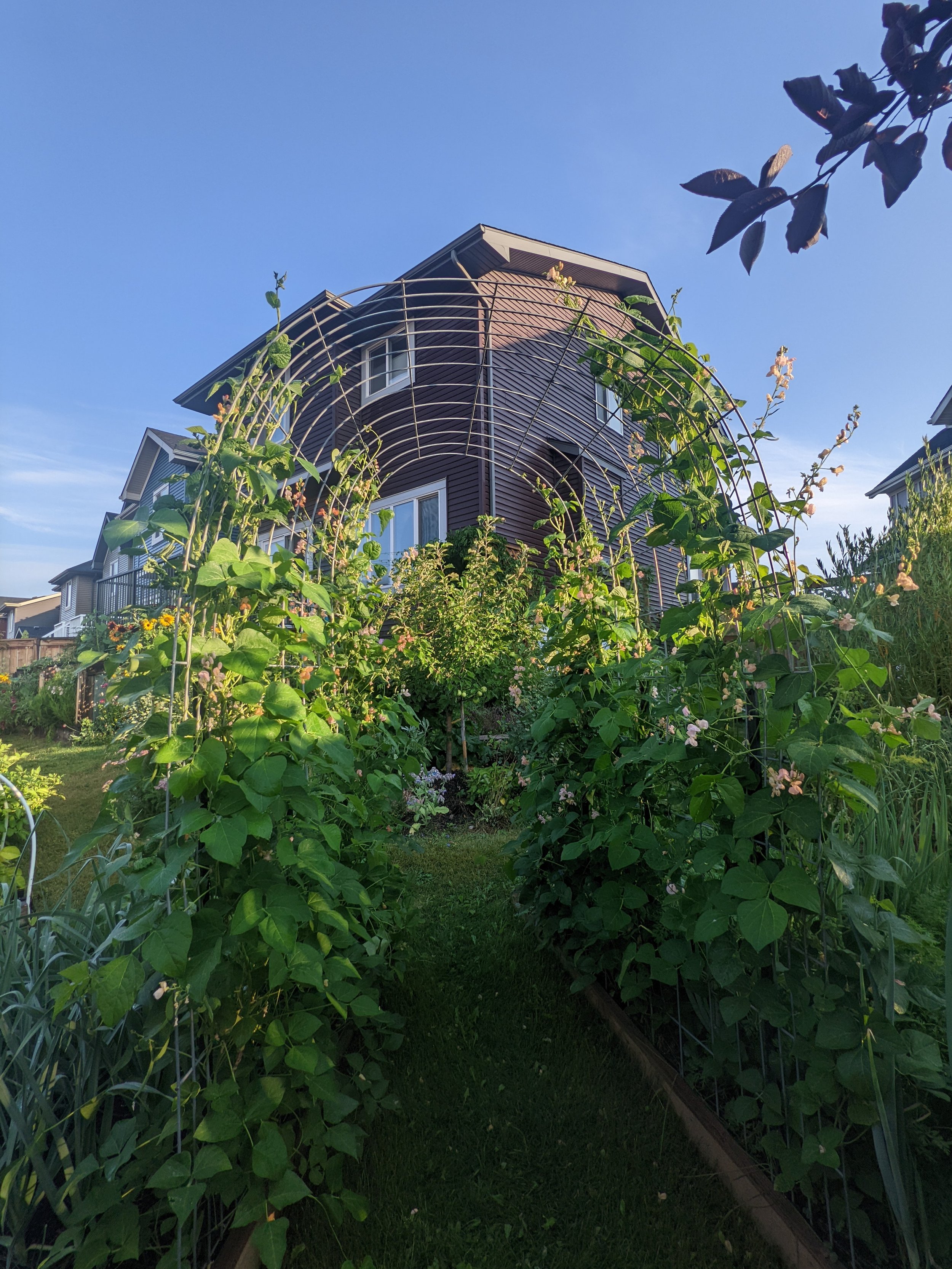
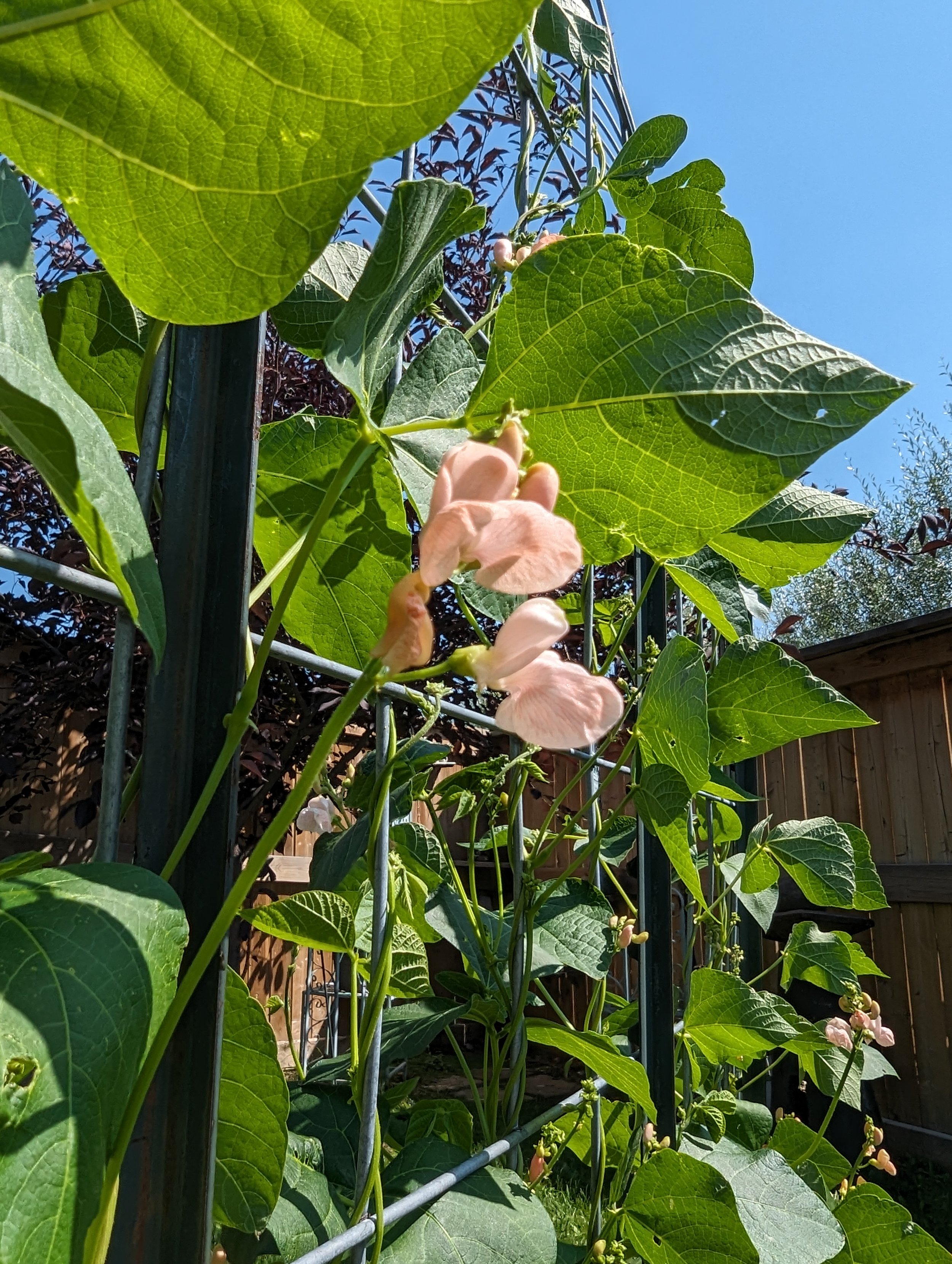
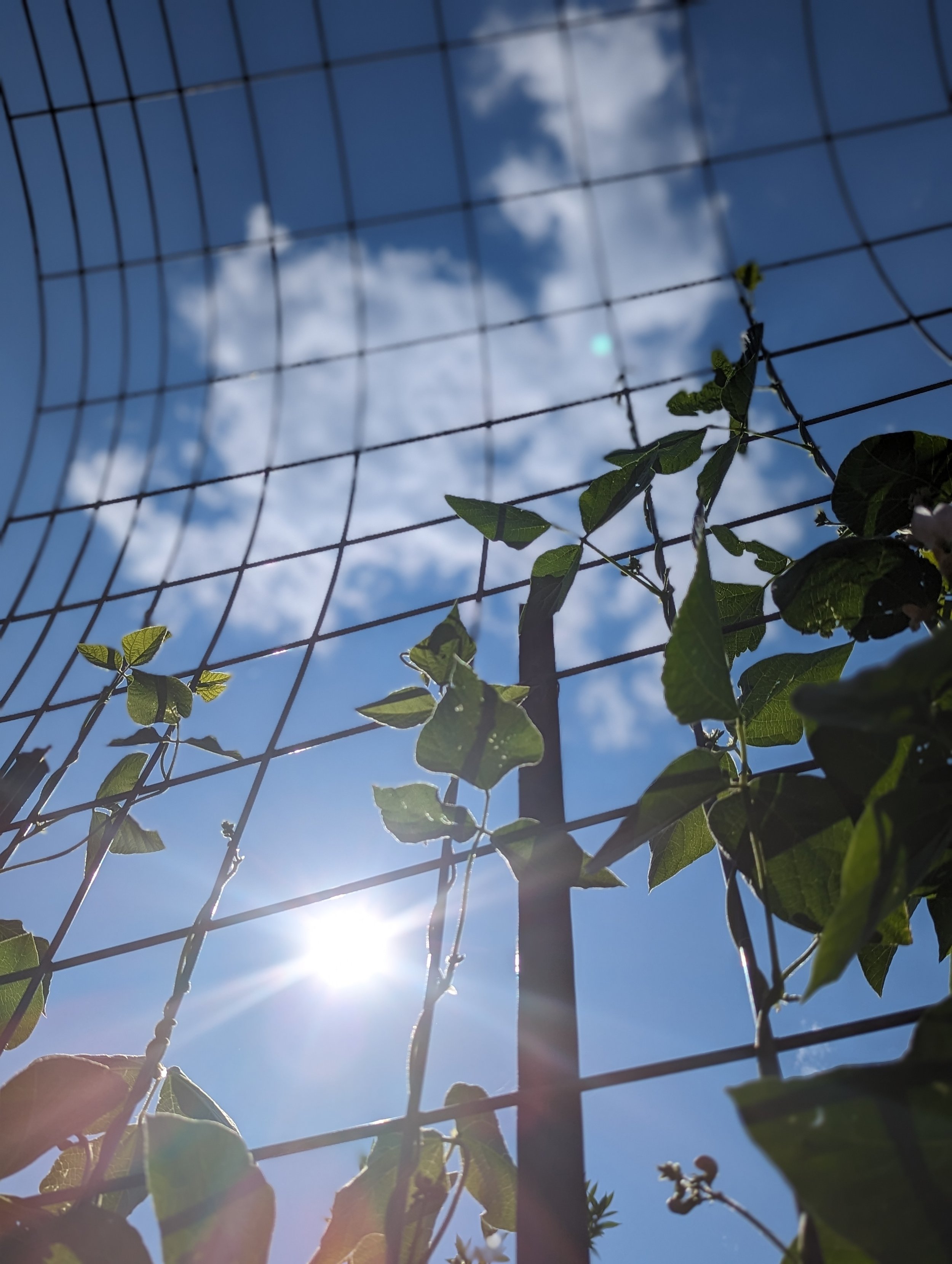
2022
Compost Area & the Biomass Bed
Details & Photos coming soon!
2018-2023
Sunflower Creek & the Raspberry Patch
Details & Photos coming soon!
??
The Front Yard
Details & Photos may never be coming, we still haven’t designed our front yard!
